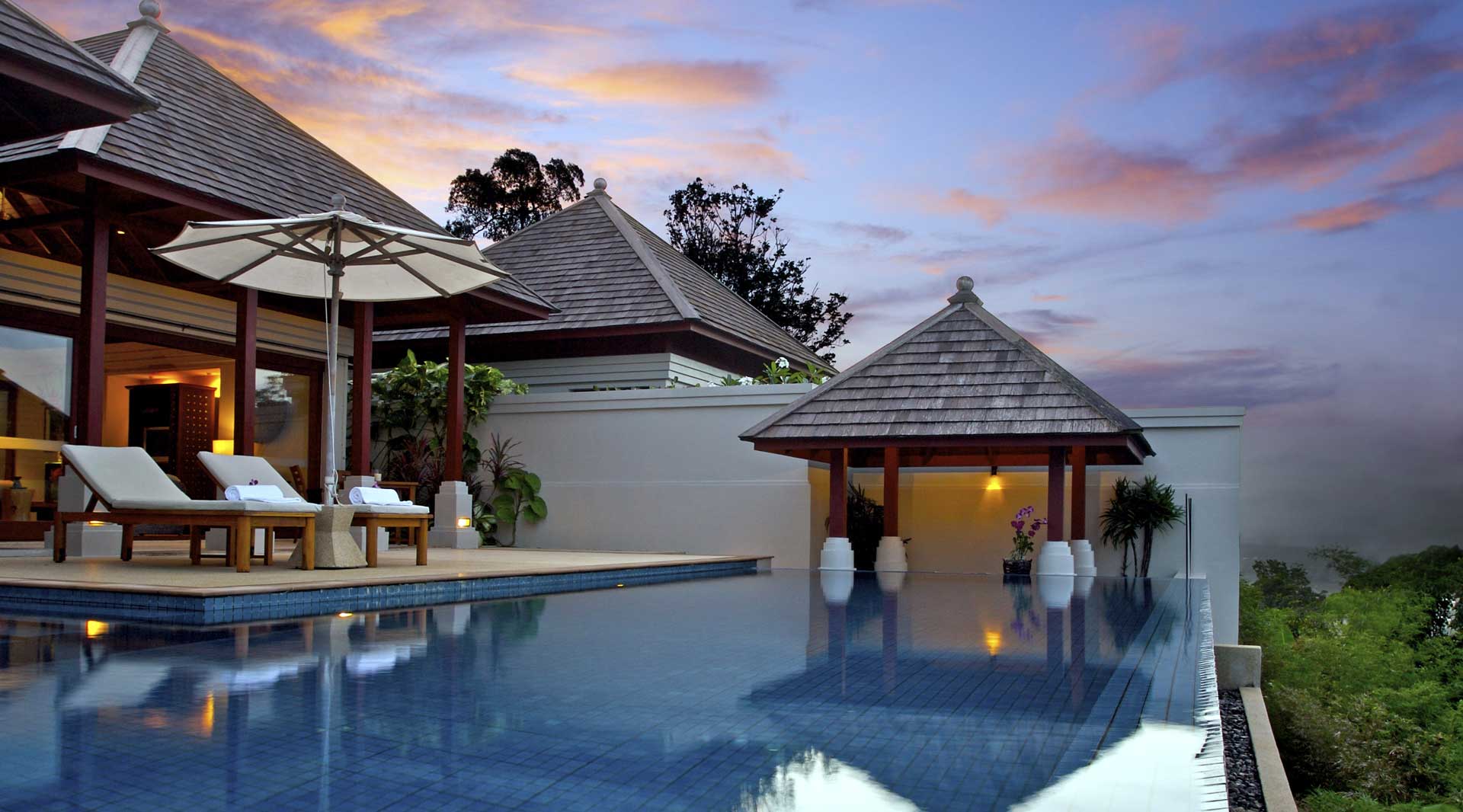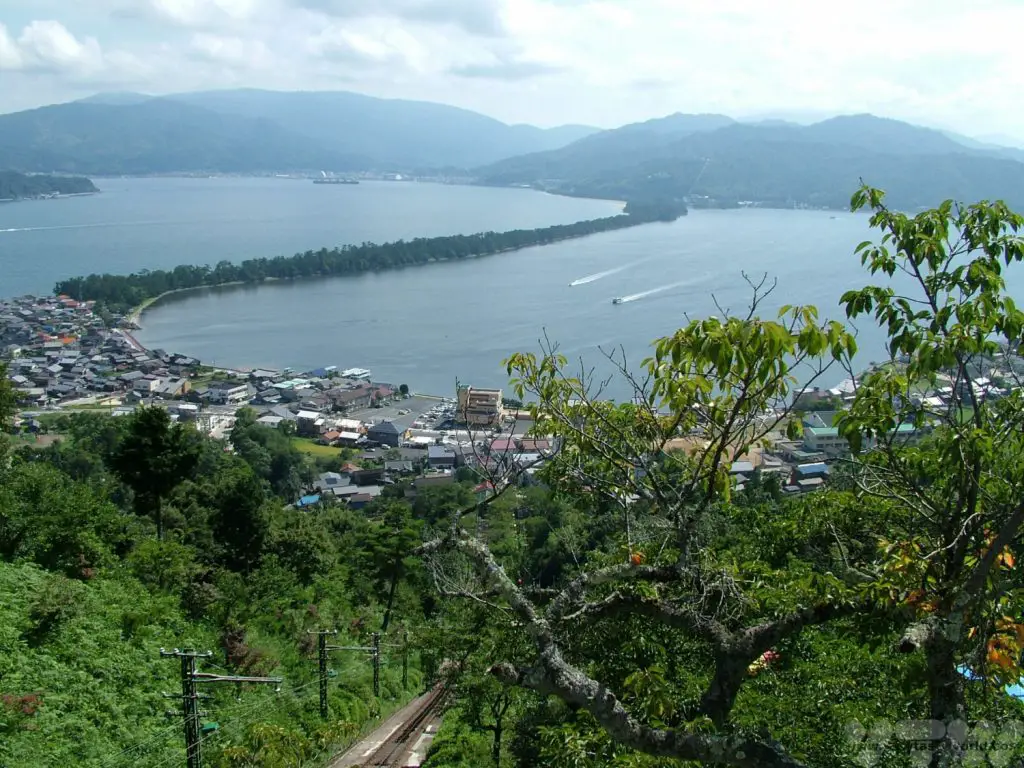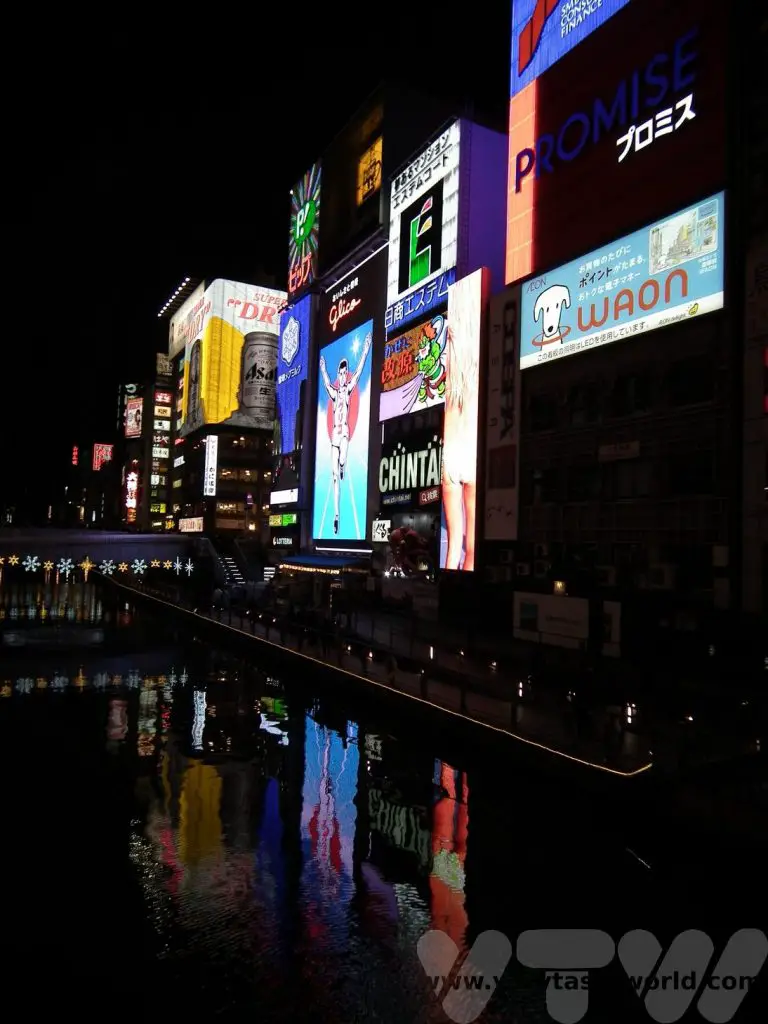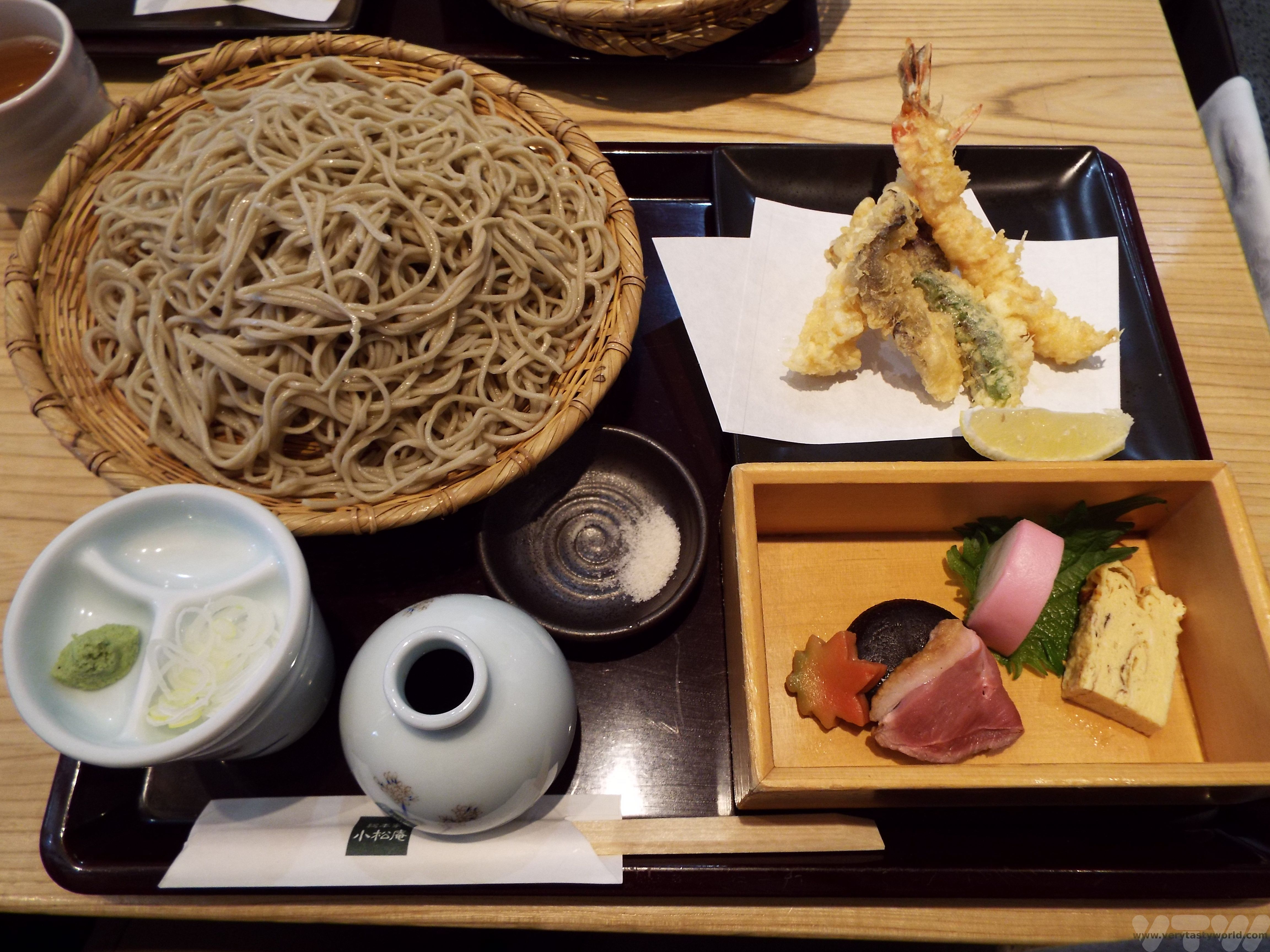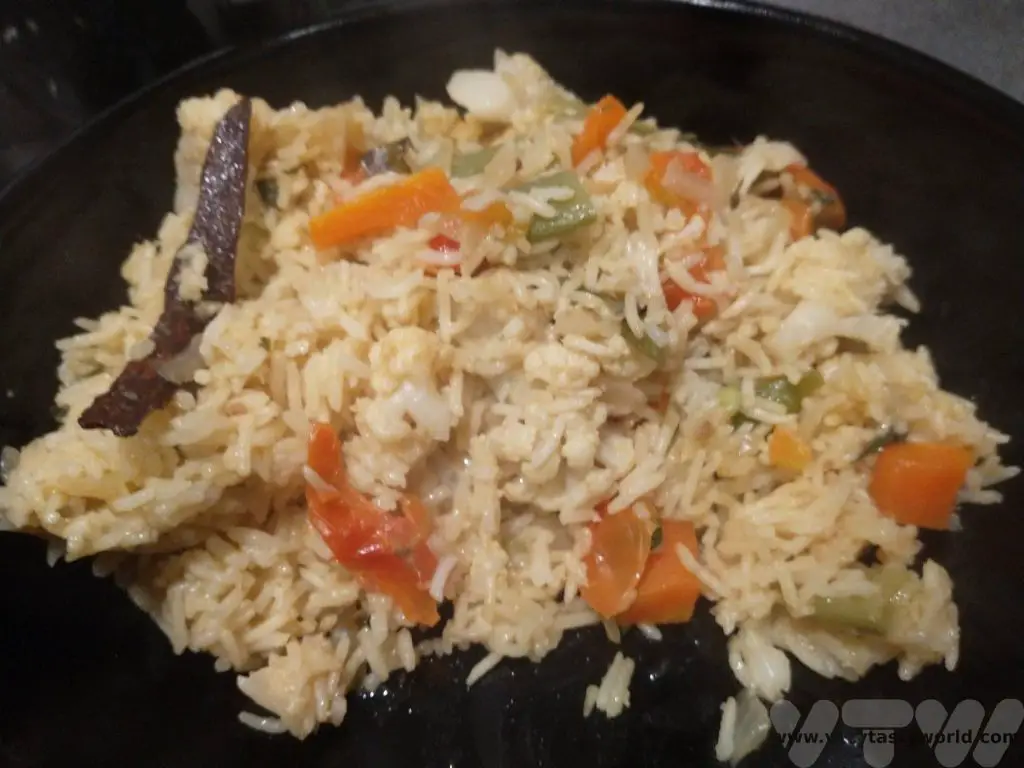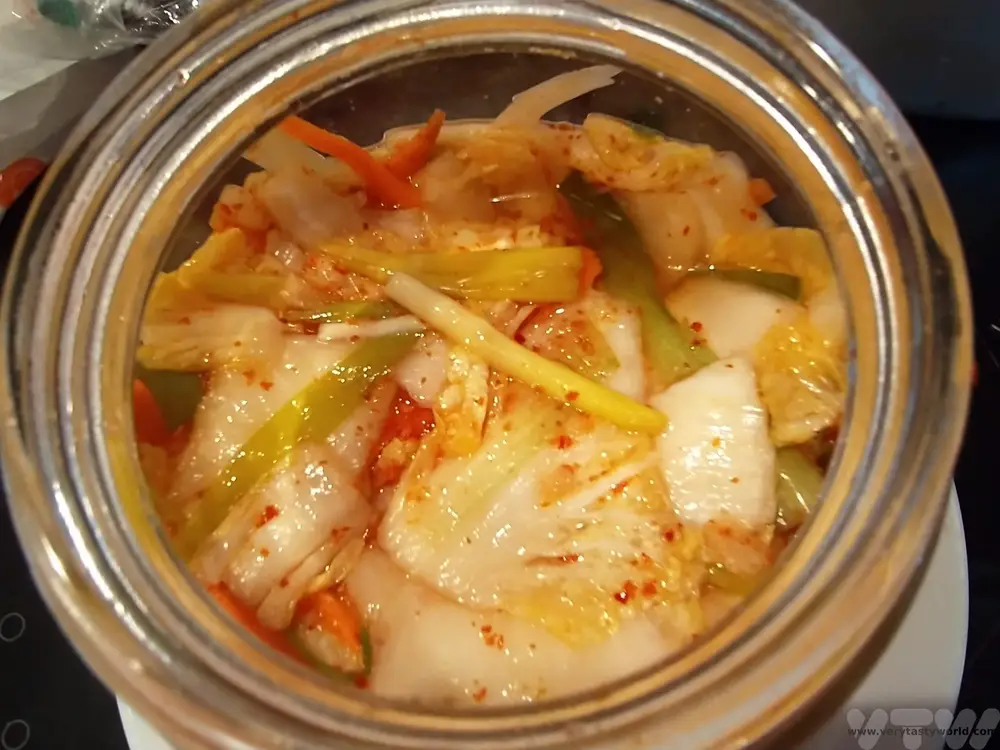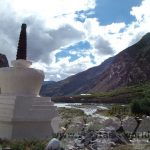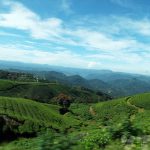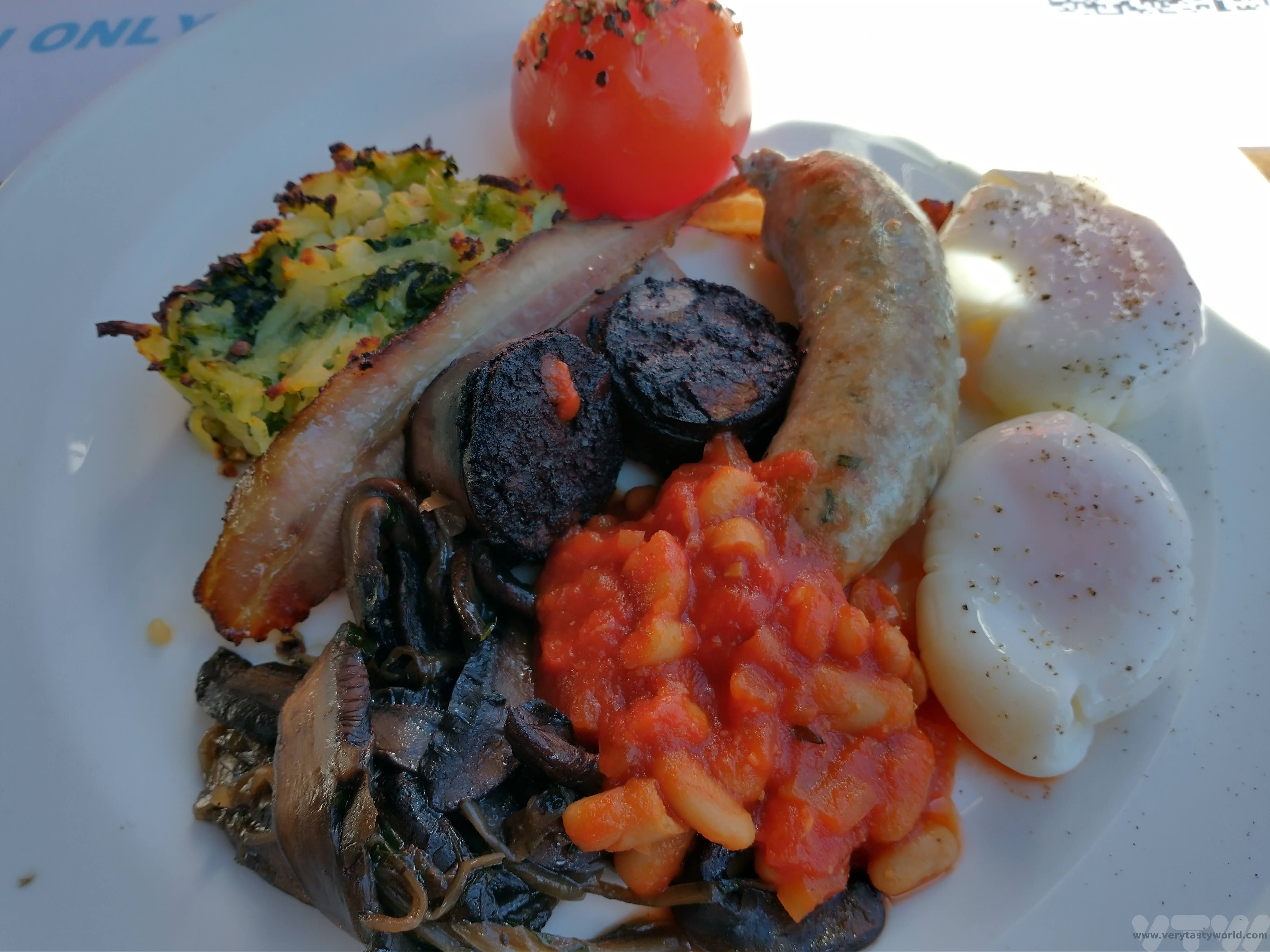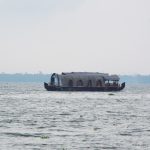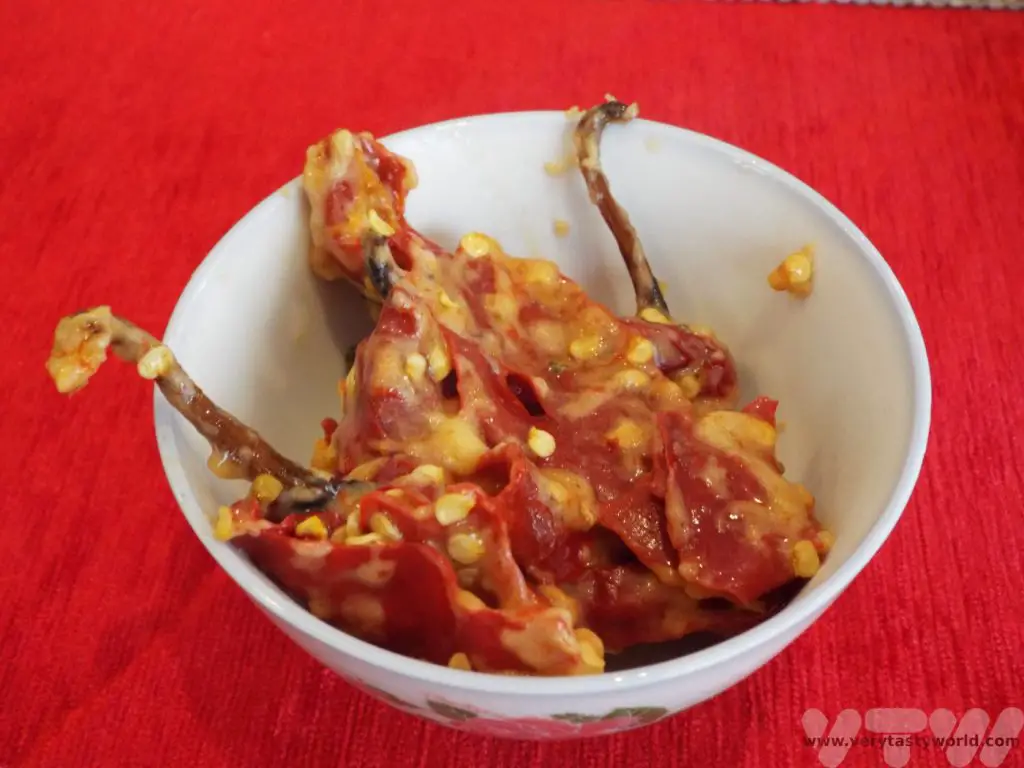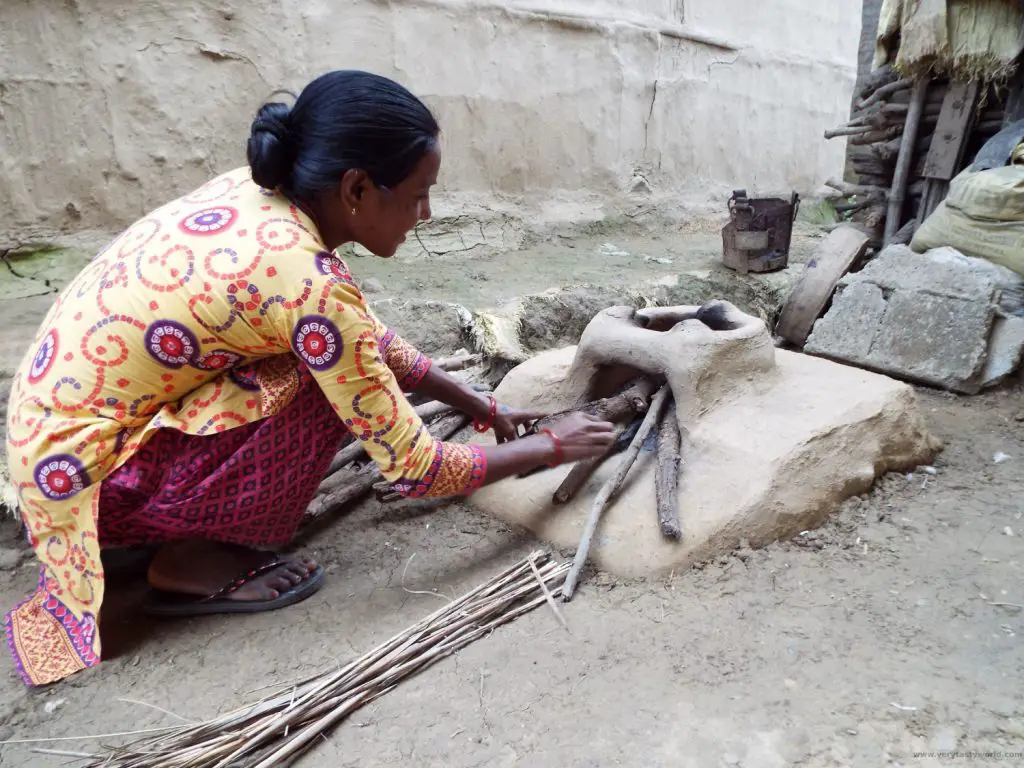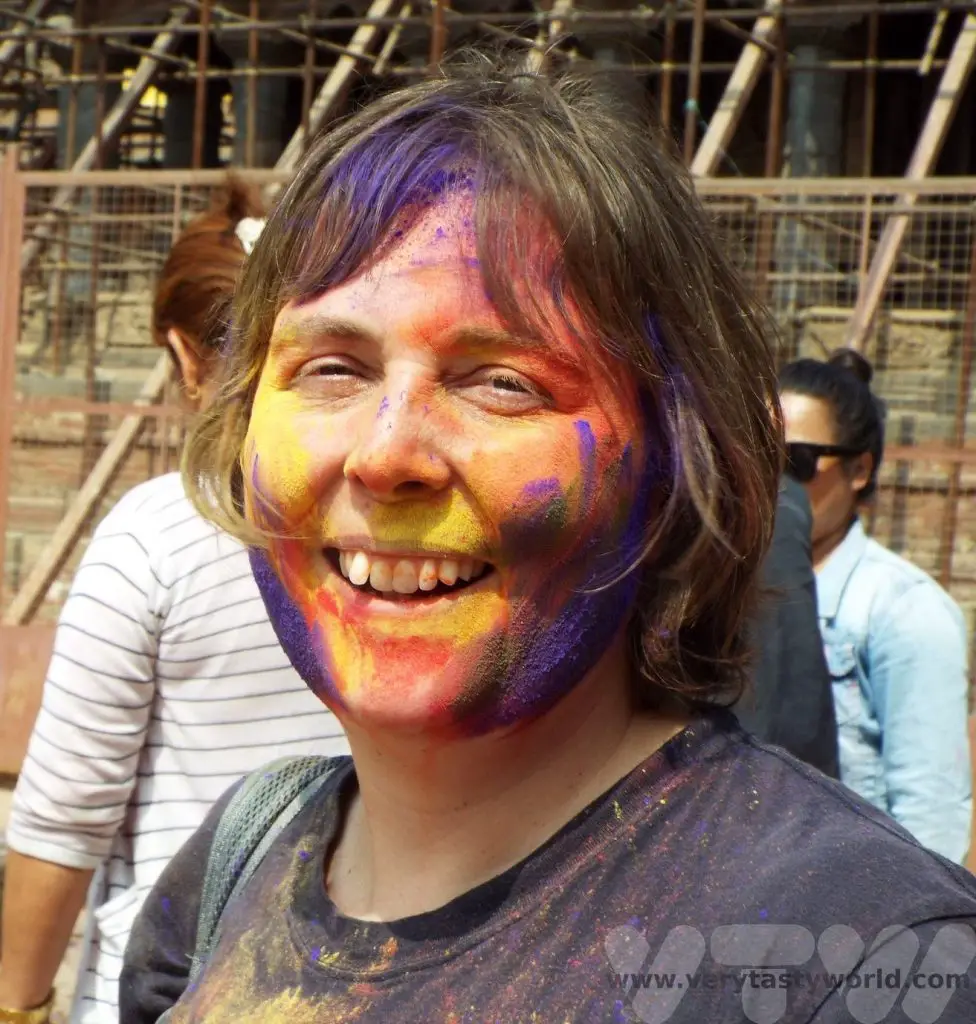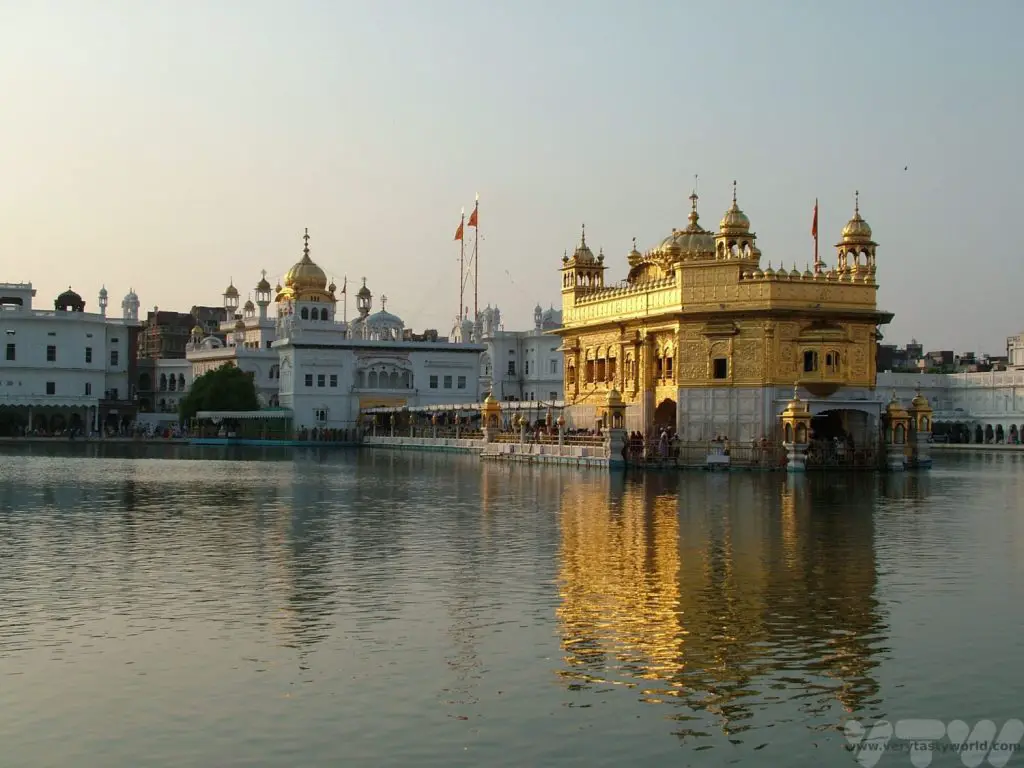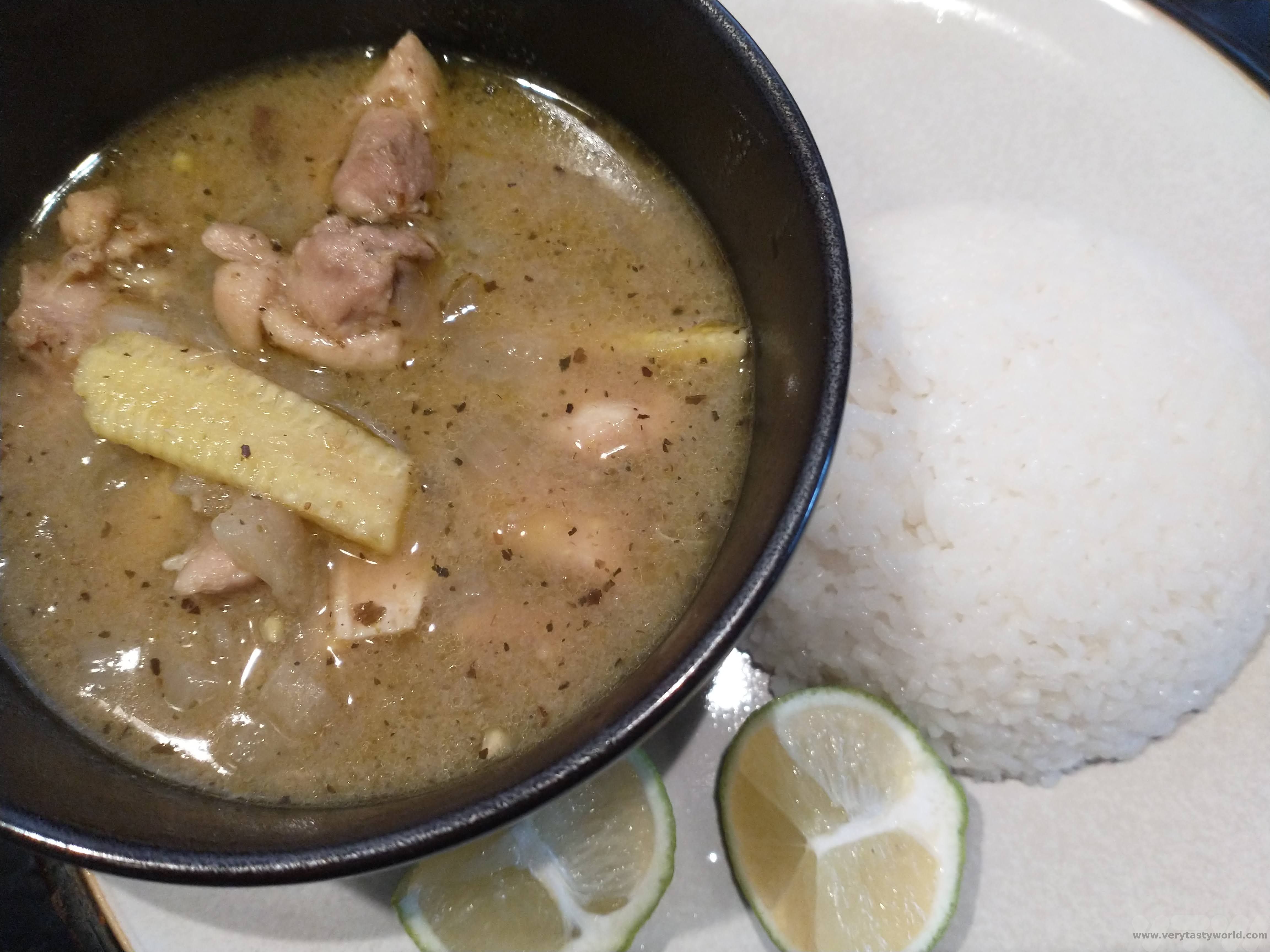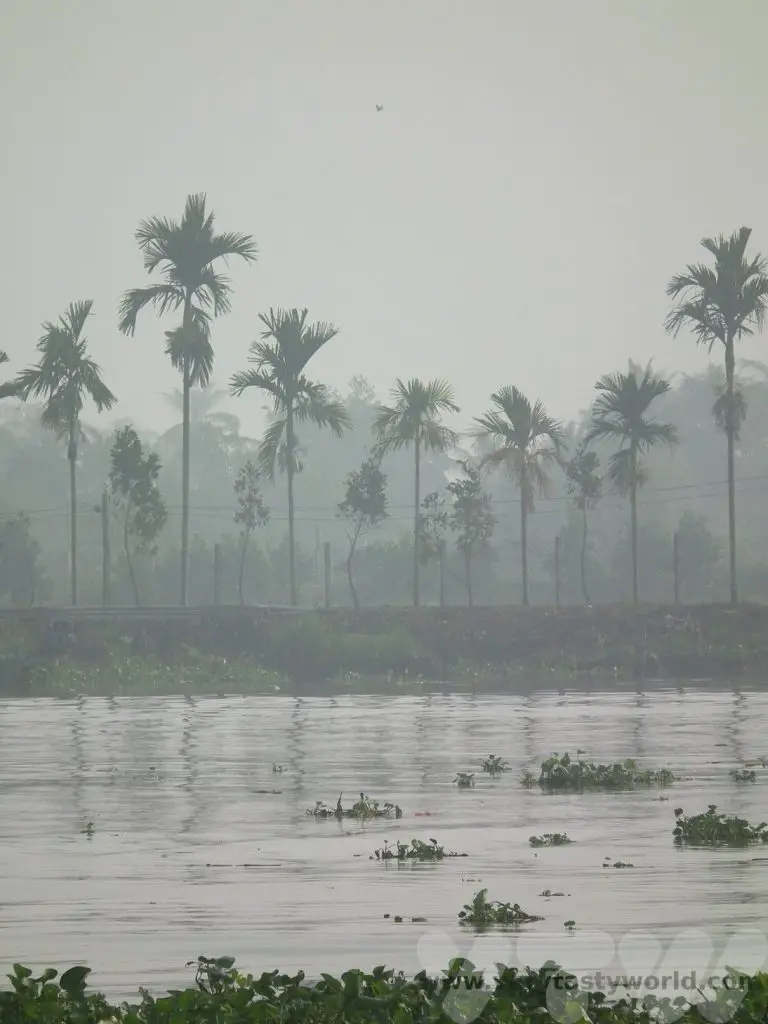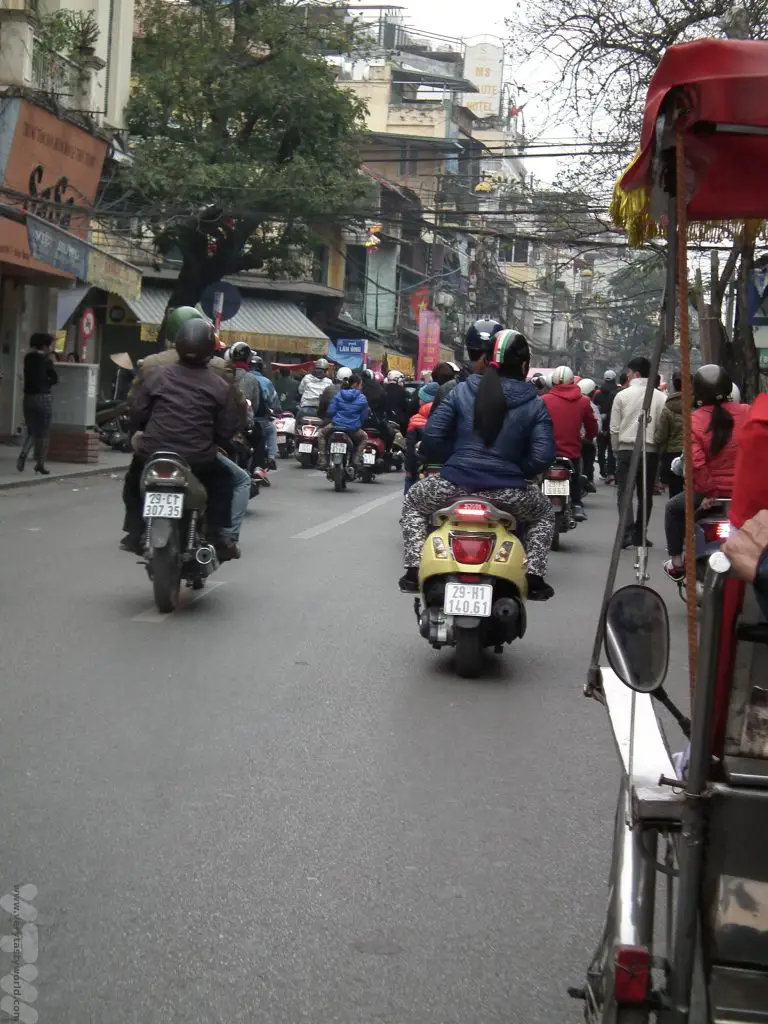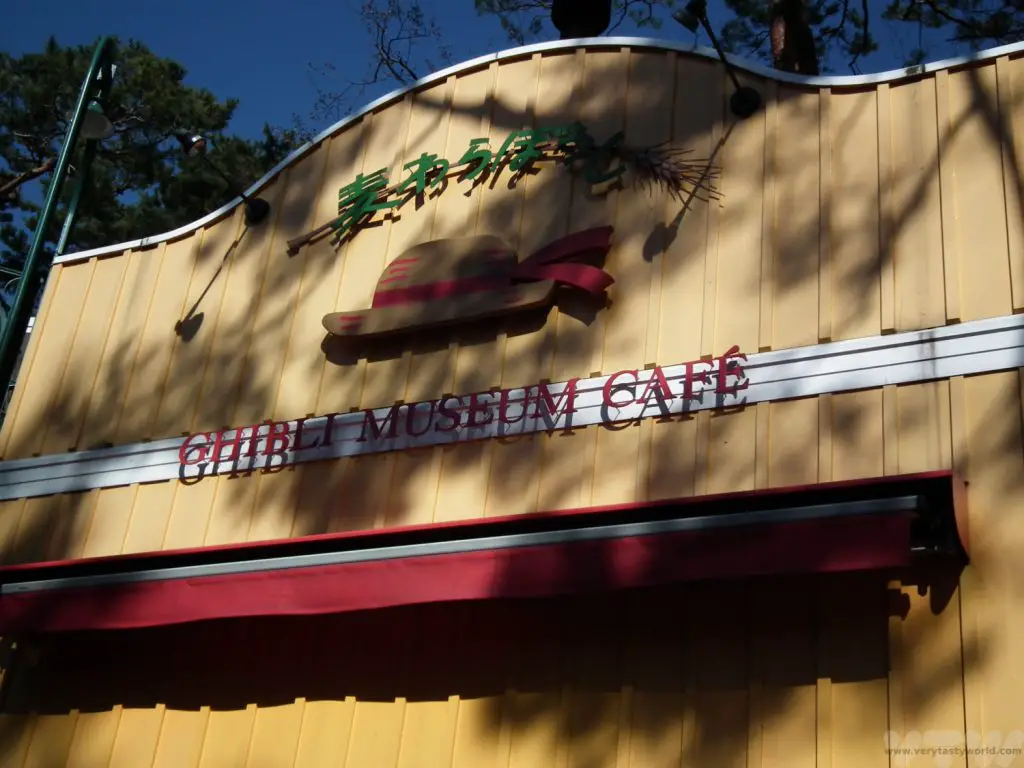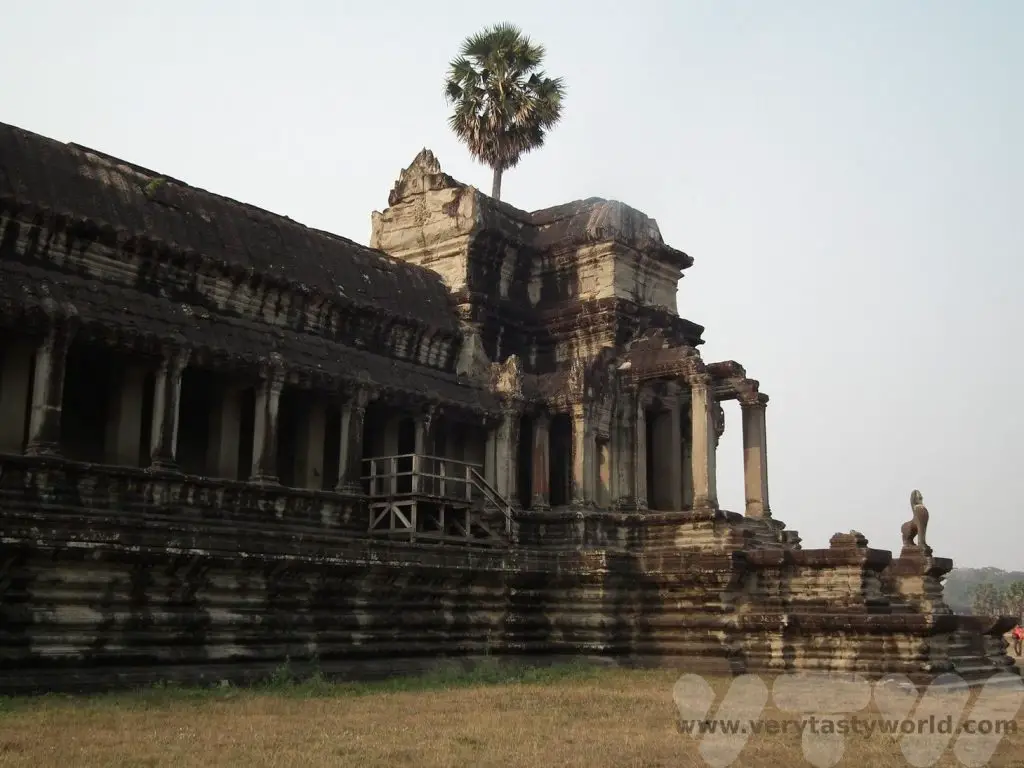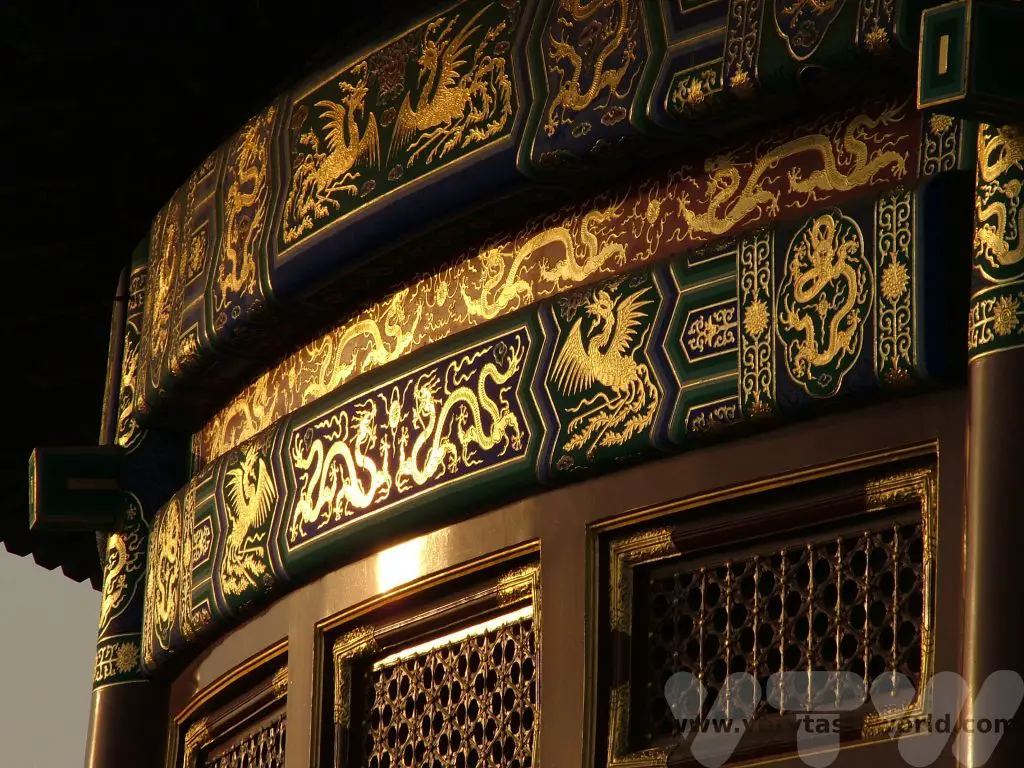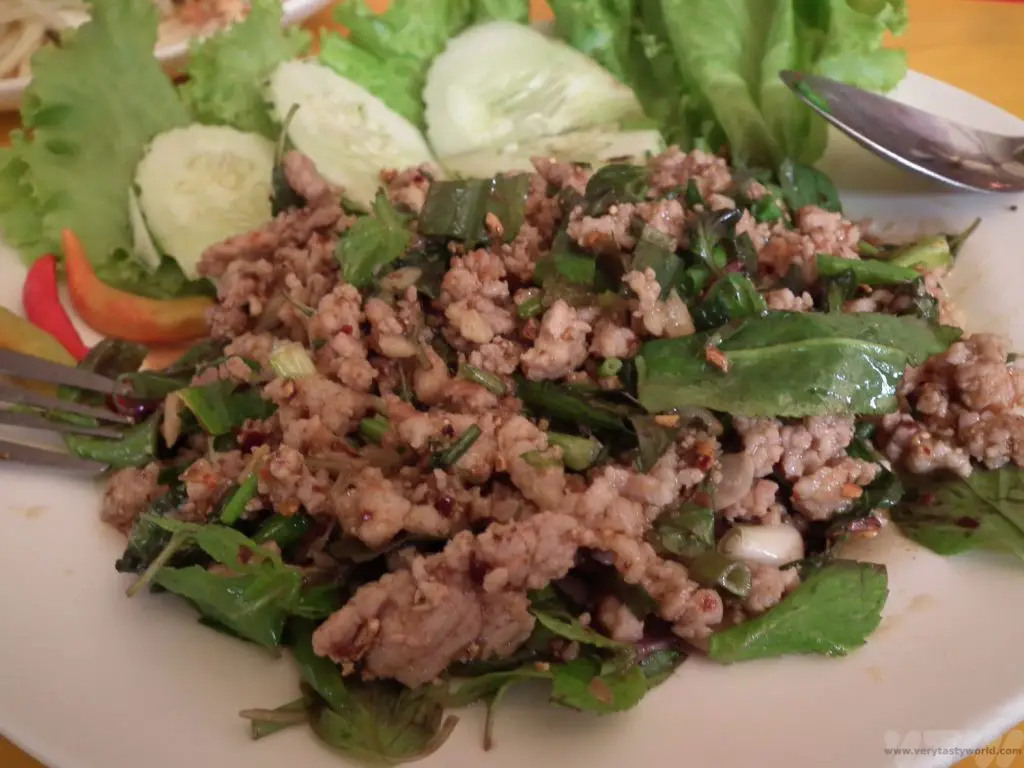Planning a Trip to Japan
Regular readers of this blog will know that we are absolutely in love with Japan. The land of the rising sun is beguiling, fascinating and loads of fun. It is a country where bright, vibrant, blaring neon cities contrast with the elegance of traditional castles, temples, pagodas and exquisite gardens. We first visited Japan over twenty years ago and have returned many, many times. Here’s our guide to planning a trip to Japan.
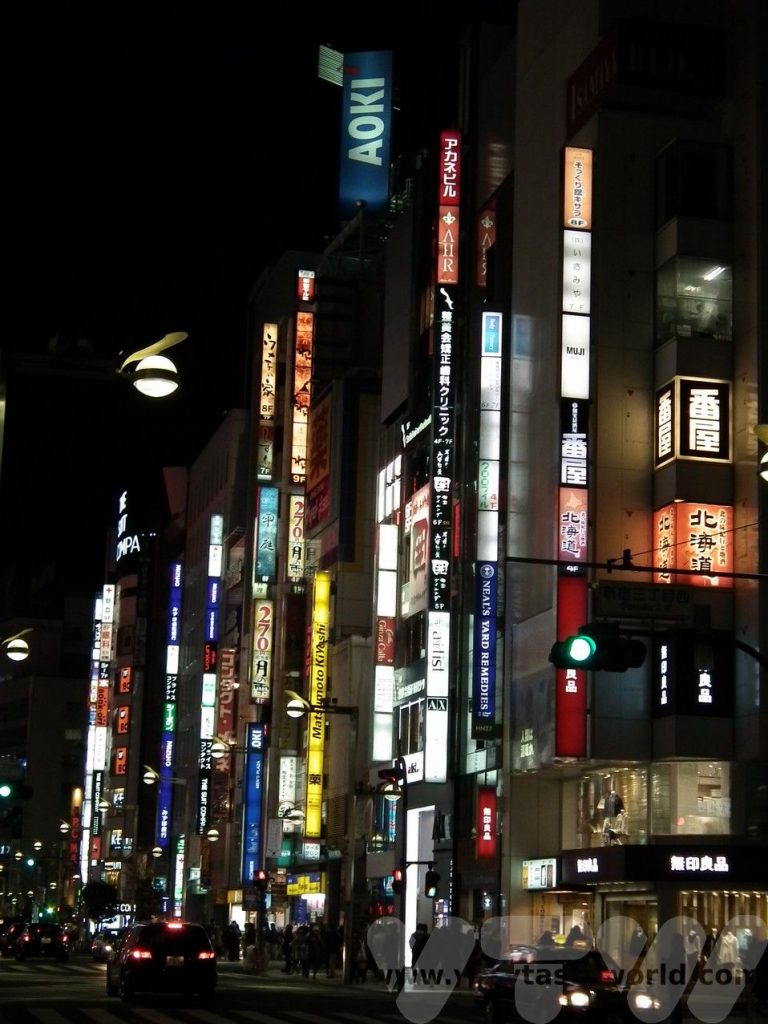
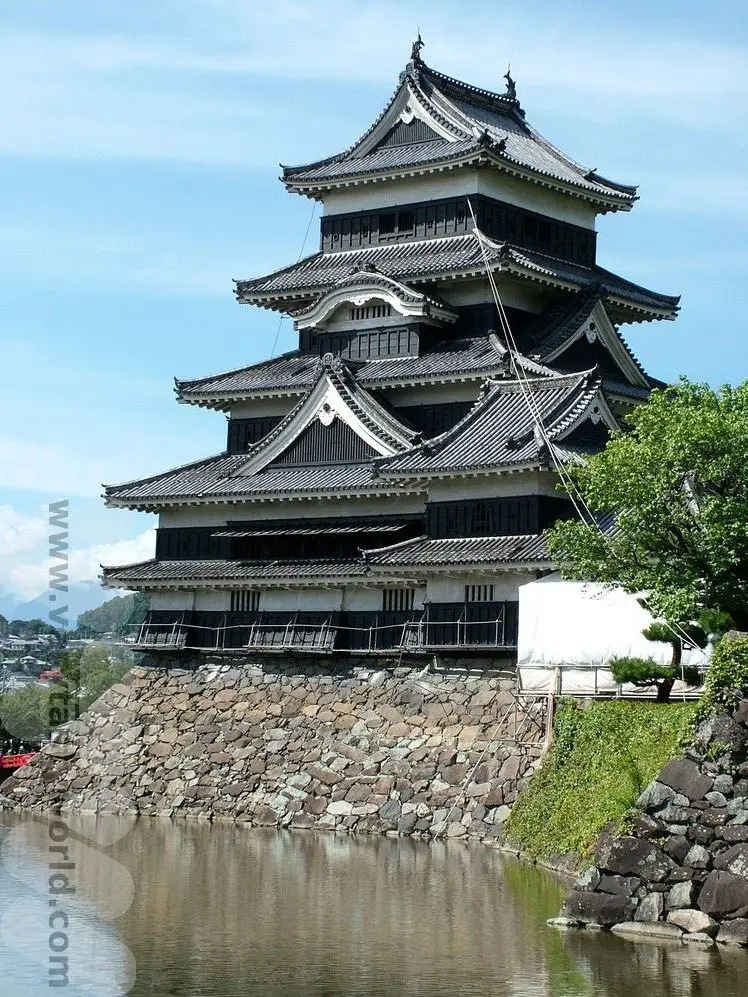
Getting There
Most people will fly into Japan either to Tokyo or Kansai (Osaka). Both airports are located a fair distance from the cities they serve but it’s easy to pick up public transport options to reach the metropolis. There are train services that run regularly and also limousine buses, which can get you to the city centres very easily.
Getting Around
Japan’s public transportation system is fully integrated and highly efficient. If you are travelling for any length of time and especially travelling between cities, we recommend the Japan Rail Pass.(It’s not recommended if you are only staying in one city as it wouldn’t be cost-effective.) The JR Pass is valid on all Japan Rail services, including the shinkansen bullet train, with the exception of the super-fast Nozomi service. Don’t worry, the other bullet trains are still pretty damned fast! And they are the most amazing way to travel.
You can buy a pass that is valid for 7, 14, or 21 days. Also, the JR Pass allows you to book seats on the shinkansen for free. Just book your seats at any JR office at any station.
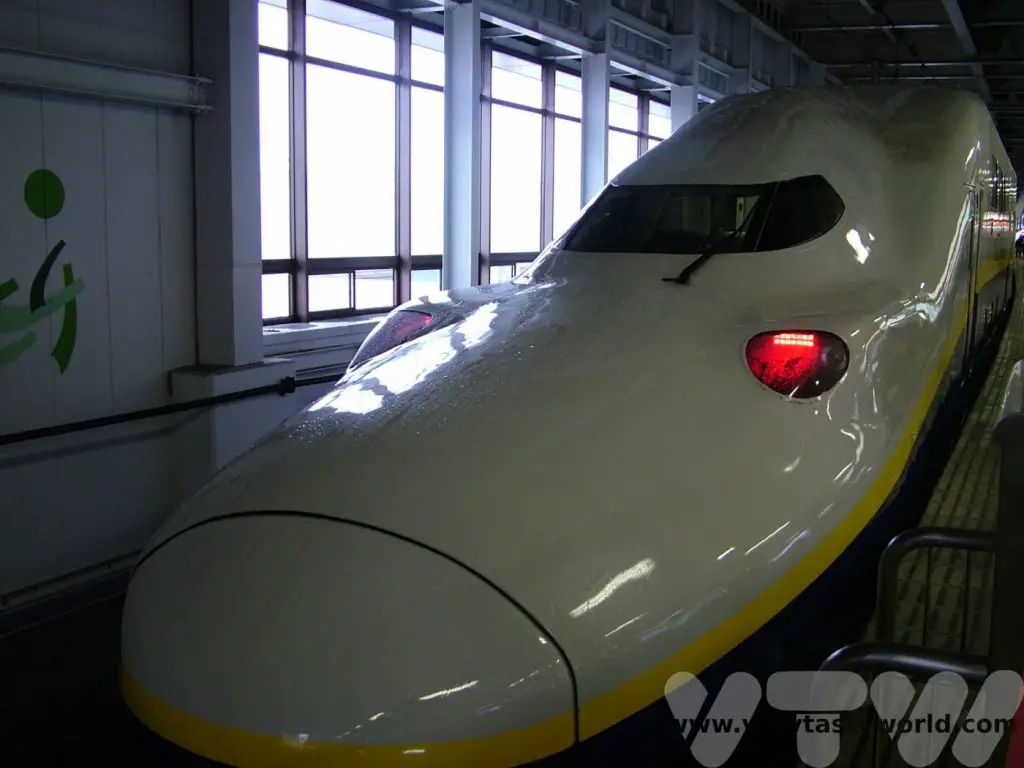
You need to order the pass before you travel. You will receive a voucher. This is then exchanged at a JR station for your pass. It is time-stamped and valid from the first day of use on the stamp. There is a ticket office at Narita airport where you can get your pass – just follow the signs for the trains. Be aware that there may be a queue as lots of other tourists will be wanting to do the same as soon as they get off the plane. If you don’t want to activate it straight away, that’s fine.
When using the pass you don’t need to go through the usual entry/exit barriers. Just show your pass to the station staff in the office located at one side of the barriers and they will wave you through.
If travelling by train you can plan your journey using the excellent hyperdia website. Note that there are some private railways in Japan, notably in more rural areas, and the JR Pass is not valid on these.
Bus services in Japan are reliable and reasonably comfortable. They are especially useful when travelling through the countryside.
Taxis are available in most cities but they are expensive. They all have automatic doors.
Car hire is also easy to arrange if you want to visit rural areas. There is really no need to hire a car if you are visiting cities.
Accommodation
There are a variety of options depending on your budget. You can book standard hotels via the usual booking sites.
We tend to stay in business hotels, especially in the cities, as they offer cheap accommodation, albeit in tiny rooms. You can see our post about business hotels. They are very small but they contain all the facilities you might need. And you’re in Japan – you don’t want to spend all your time in a hotel room!
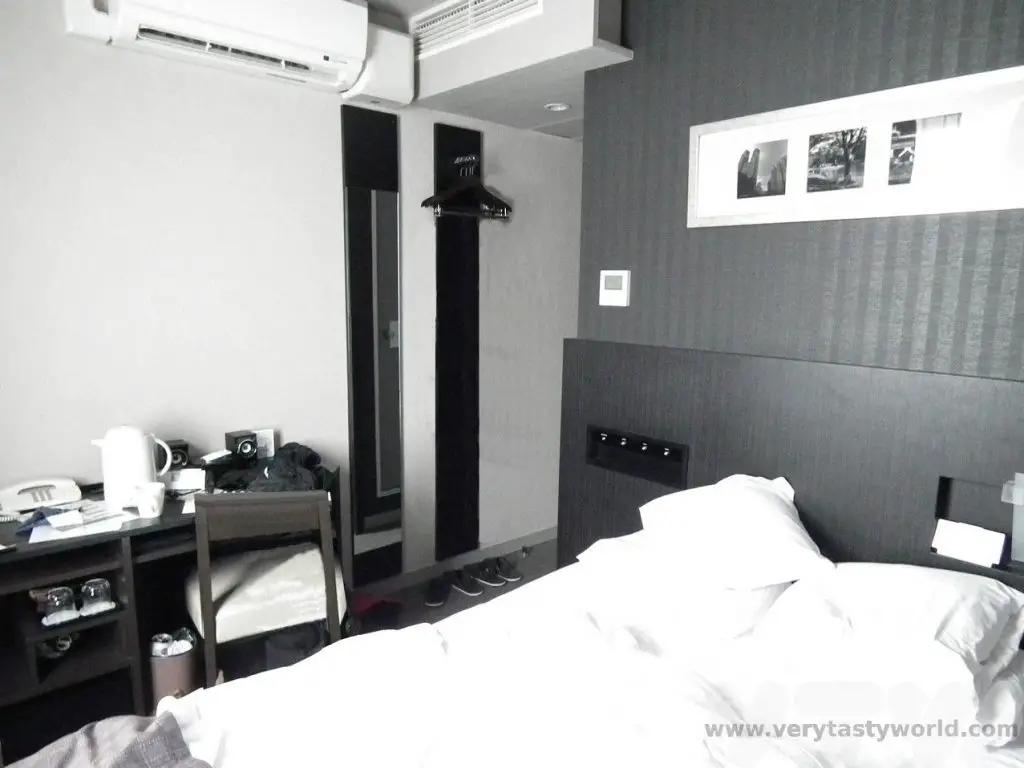
However, it is also worth splurging for a night or two to stay in a ryokan – a traditional Japanese inn. These often comprise several rooms, all laid out with tatami (reed) mat flooring. Your bedding will be a futon laid out on the floor.
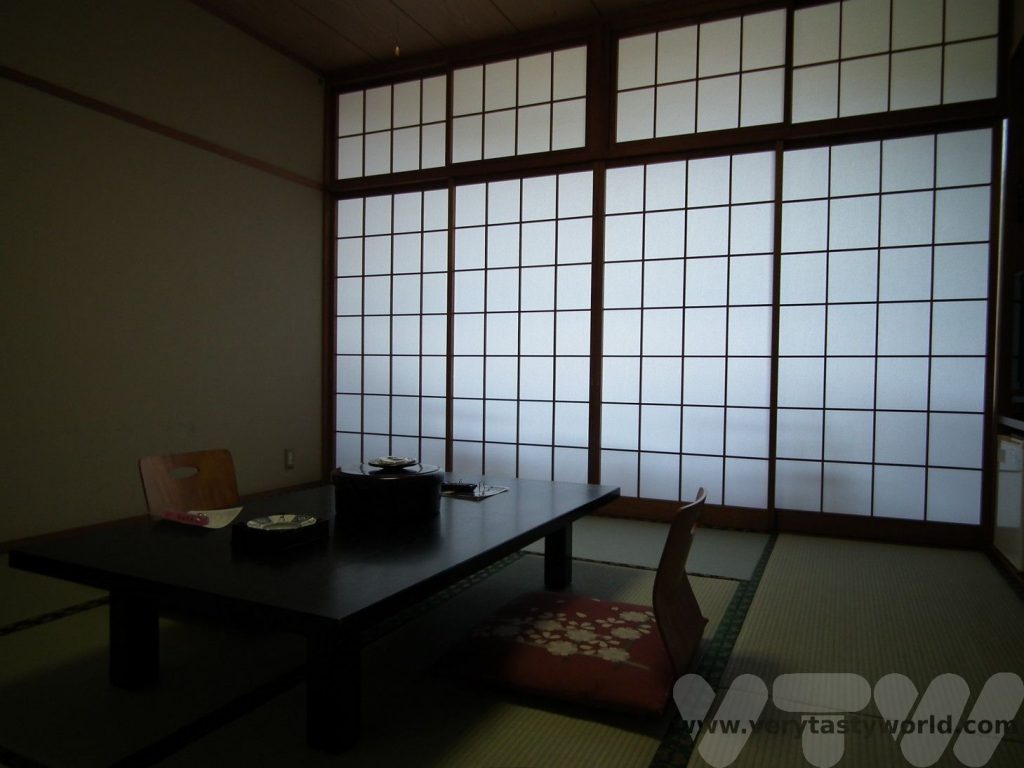
You may well be served your dinner in your room. At other establishments you will eat dinner in the restaurant and your futon will be laid out by the maid while you are dining.
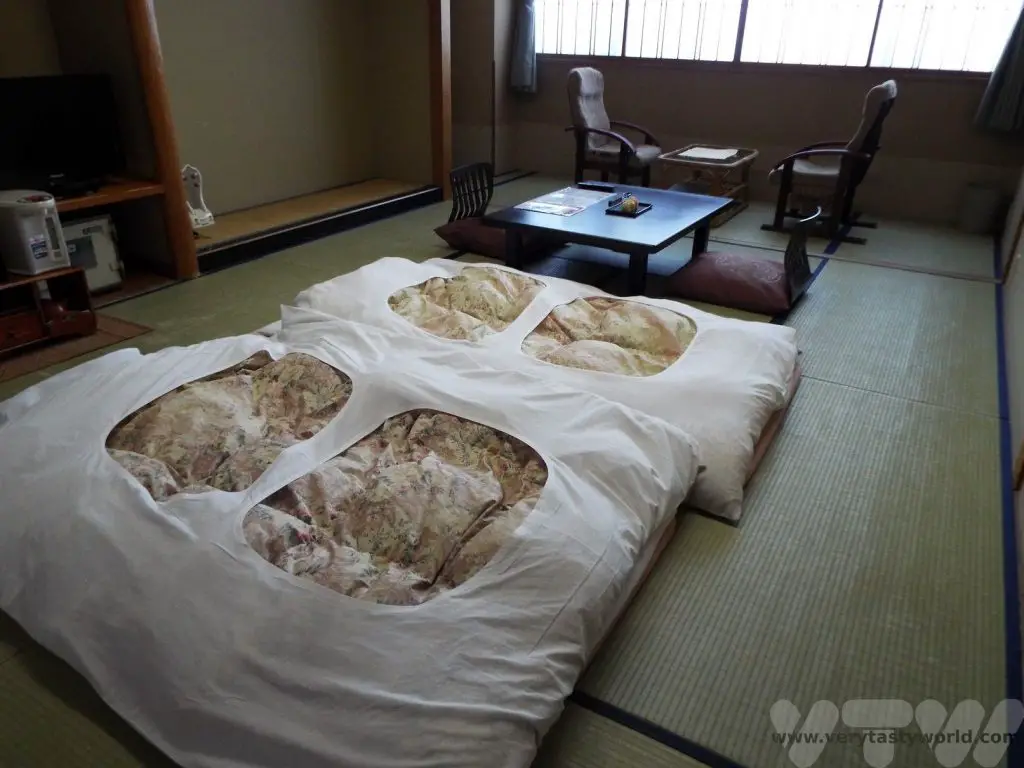
Ryokan may be ensuite although sometimes these establishments will have shared facilities. Some have lovely baths and you may be offered a time slot for bathing.
Money
Japan is still a largely cash-based society and, although ATMs have become more common over the years, are still not as widespread as you might think. We tend to take Japanese yen with us. And, while no destination is 100% safe, we have always felt comfortable carrying cash and have never had any problems while doing so.
Most hotels and increasing numbers of shops and restaurants accept credit cards these days.
You can also get IC cards – Passmo and Suica are popular ones in Tokyo – that you can all over the metropolitan area you are visiting. You can tap them to use public transport, such as the metro, and use them to buy some products as well. It is possible to charge them up by adding more cash at convenience stores (known as konbini), such as Family Mart, Lawson and 7-11, which can be found all over Japan.
Just be careful that they are valid within the area you are travelling. For example a card used in Tokyo and the surrounding area may not be accepted in the Kansai region.
Eating and Drinking
Dining when you can’t understand the writing on the menu can be a bit daunting. When we first visited Japan English menus didn’t exist but these days increasing numbers of restaurants offer menus in English, Chinese and Korean.
And many restaurants have picture menus or plastic models of the food in the window. They will also show the prices, sometimes in ordinary numerals but sometimes in Kanji (the Japanese writing system). If you get really stuck, take your server outside and point at what you want!
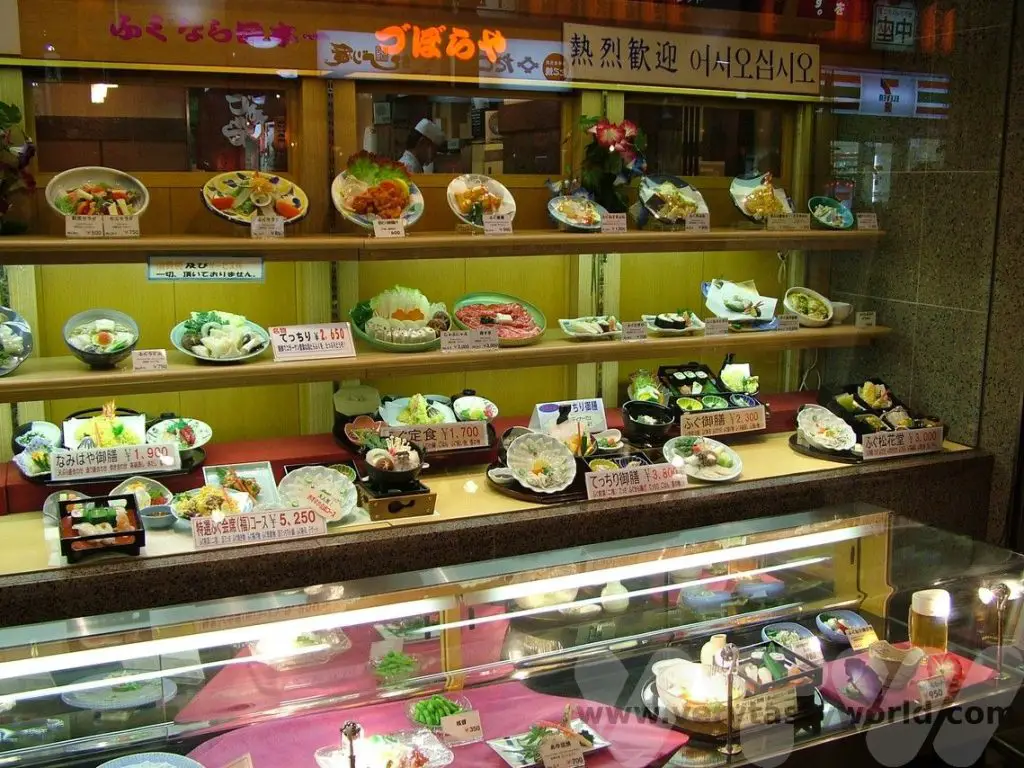
Food is eaten with chopsticks and occasionally a spoon. It is rare to find knives and forks, and restaurants are usually unable to supply them. Bring your own if needed, but, better, learn to use chopsticks – it isn’t that difficult!
Most people will know the Japanese foods sushi, sashimi and ramen noodles but the cuisine has so much for offer.
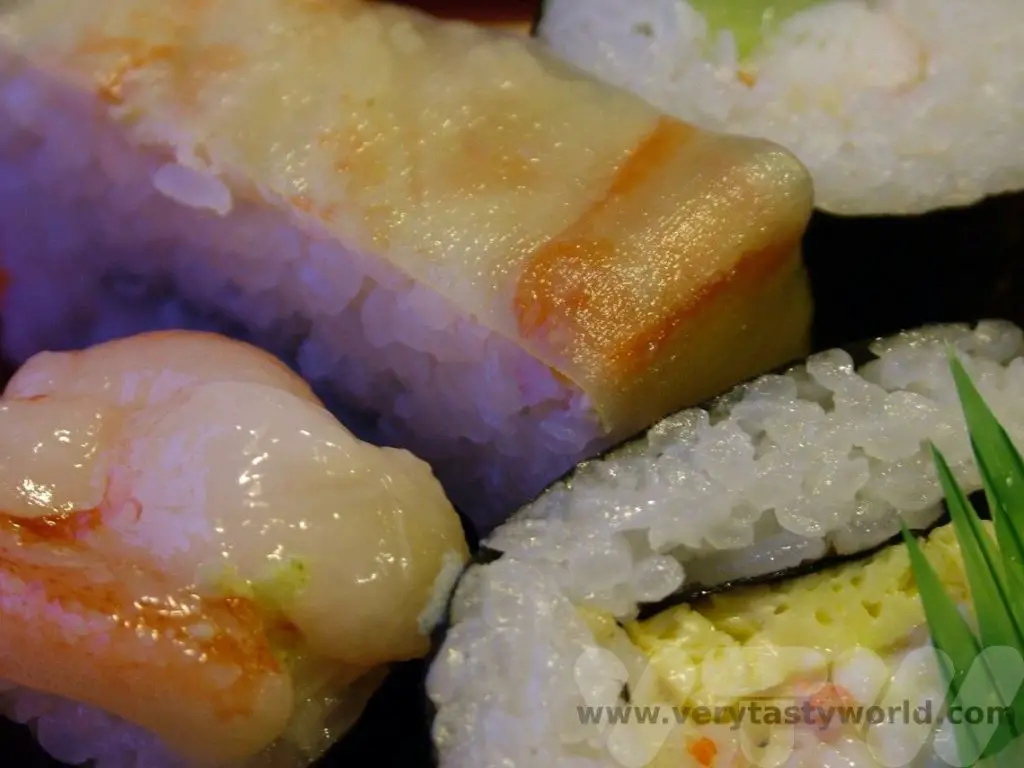
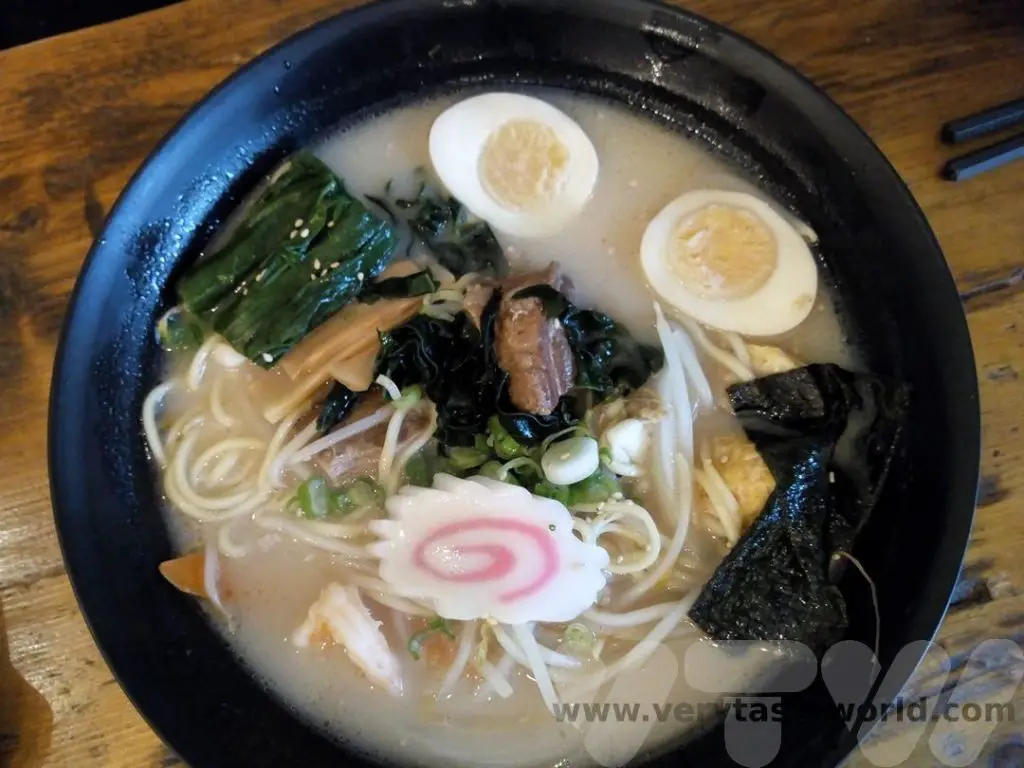
There are prices to suit all budgets, from noodles at a railway station stand, where you eat standing up, to the full-on kaiseki ryori, Japanese haute cuisine.
And, if you are travelling on the train, it’s essential to enjoy a bento box meal – a lunch box full of goodies. There are even regional variations of bento sold at railway stations, known as eki-ben.
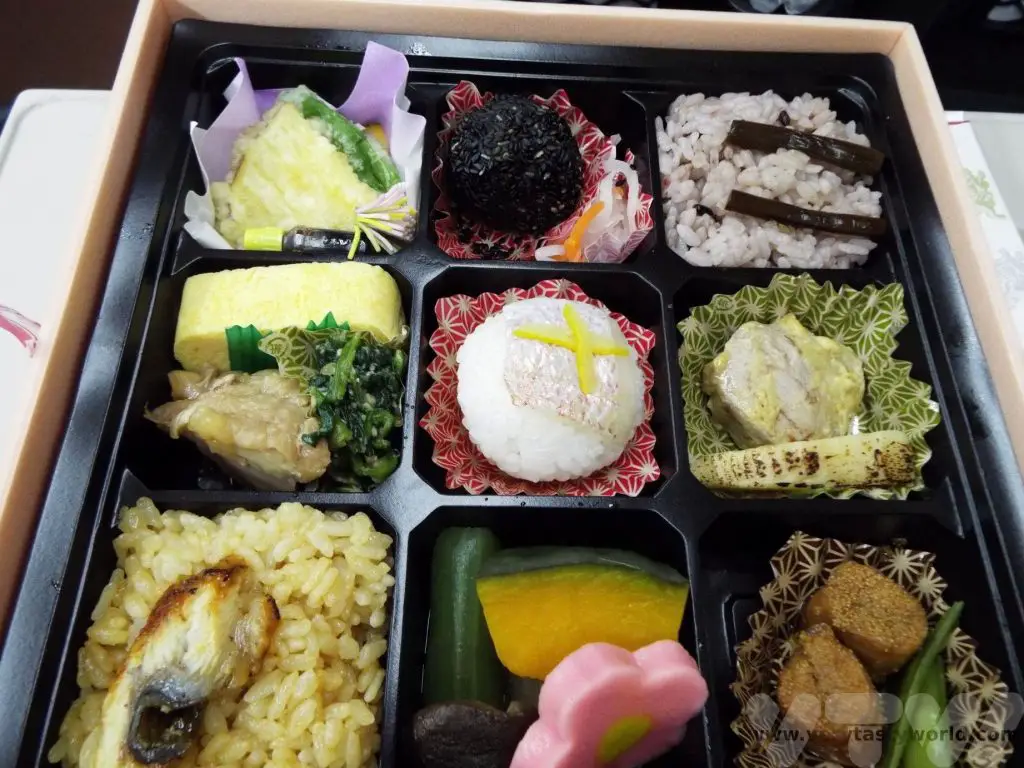
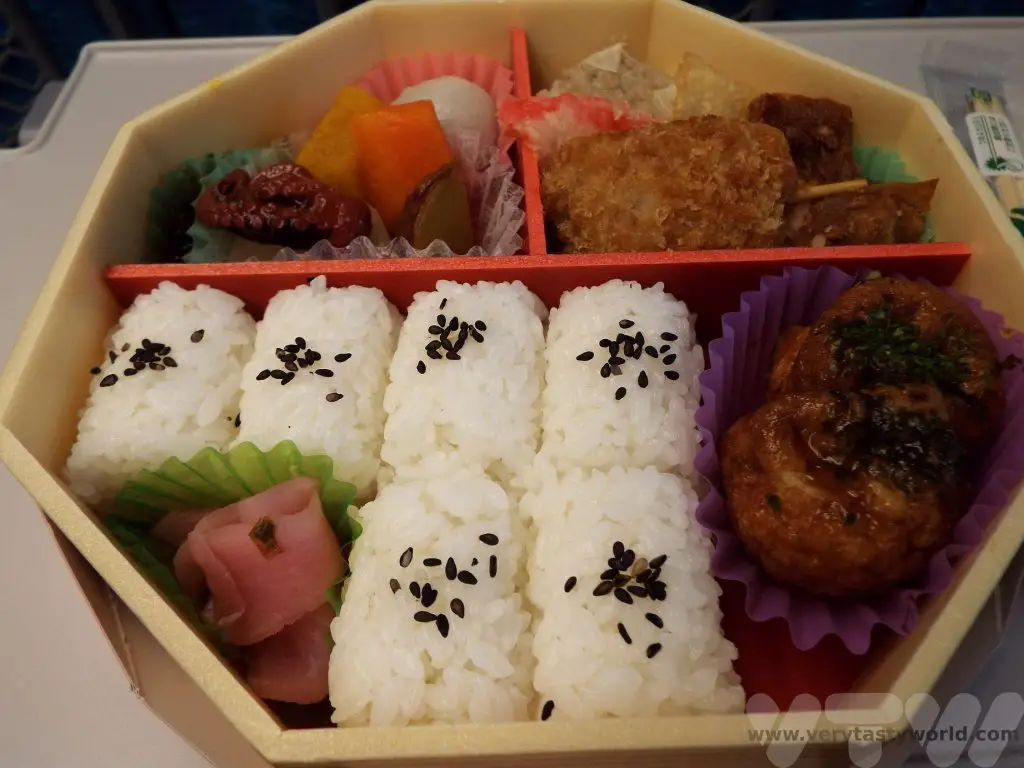
Izakaya are Japanese style pubs where you can enjoy drinks as well as order a variety of dishes.They are a great way to spend an evening.
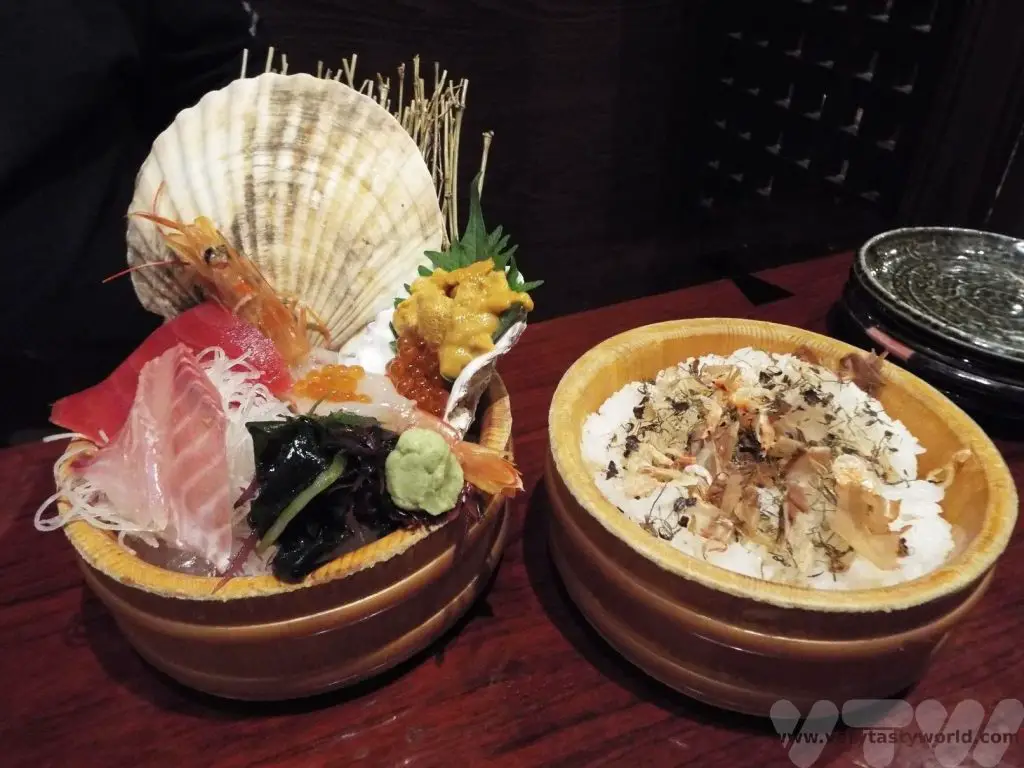
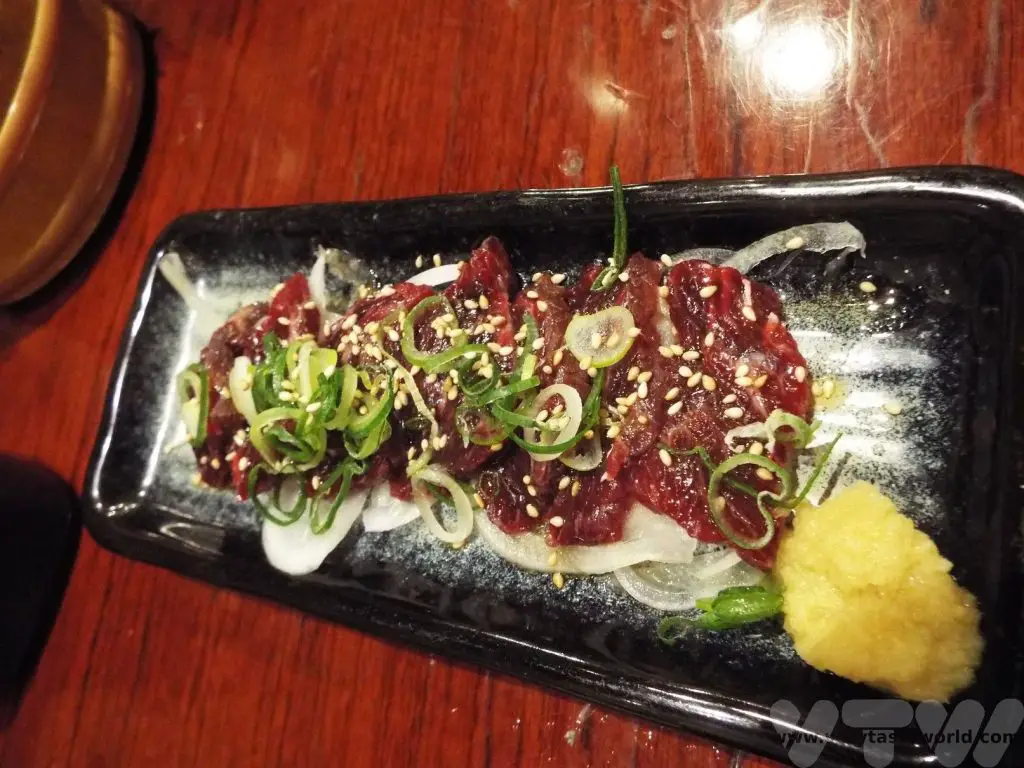
Beware the cover charge, known as otoshi or tsukidashi, which is basically a table charge. Some establishments will have a fixed charge for drinking and eating there. It’s usually a few hundred yen per person and its aim is to encourage you to stay at that establishment. If you get a small starter or plate of snacks just after you sit at your table, it’s not a freebie, you are likely to be charged for it. Some bars in Tokyo will indicate whether a cover charge applies but it’s not always clear.
Tipping is not expected nor required in Japanese restaurants or bars – which makes life very easy. Just pay the bill. We have had some instances where restaurant proprietors have run after us with 5 yen change!
Customs and Etiquette
When we first visited Japan we were worried that we would fail to follow etiquette and make terrible faux pas all the way around the country. In fact Japanese people are incredibly friendly and welcoming and would not ostracise a visitor. But if you get the etiquette correct, your efforts are really appreciated.
As with travelling anywhere, it goes without saying that you should be polite and respectful. ‘Arigato’ means ‘thank you’ and ‘sumimasen’ means ‘excuse me’.
Absolute no-nos are wearing outdoor shoes inside. Always remove them before entering a home. Some restaurants may also request shoe removal and provide a locker for your shoes and some slippers that you can wear inside.
If you are using a shared bathroom at your accommodation bear in mind that your room slippers need to be changed for bathroom slippers. (Don’t forget to change them back when leaving the bathroom!)
If using a shared bath, for example at an onsen (hot spring resort), you should wash before getting into the bath so that you are clean before you start bathing. The bath is all about having a lovely, relaxing soak at the end of a day’s sightseeing.
If you are wearing a yukata (a cotton kimono) make sure that the left side of the material overlaps the right side- right over left is for dressing the dead.
Tattoos are still taboo in Japan because they are associated with yakuza (gangsters). If you plan to spend time in an onsen it is worth covering small tattoos with a sticking plaster. Be aware of tattoo polices, some accept people with tattoos, others may turn you away.
As mentioned above, you don’t tip in Japan. Unless you are staying at a high-end ryokan, where it is polite to leave a few hundred yen for the maid who will have laid out your bedding, although this isn’t compulsory. It is considered rude to hand people cash, so leave any tip in an envelope.
Handy Travelling Tips
If you are travelling on public transport and have a lot of luggage, it’s not the most comfortable way to travel, especially if you are lugging unwieldy cases. Instead you could use the Takkyubin service – a courier delivery service that will transfer your luggage to your next location (or beyond, hotels are usually happy to store your bags for a few days). Just ask for ‘Takkyubin’ at a hotel. The staff will be able to arrange it for you and take payment on your behalf. It’s a pretty cheap service and is extremely efficient. Our bags have travelled from one end of the country to the other overnight and we’ve just swanned up at the hotel with a daysack the following day and our luggage arrived ahear of us.
Useful hint: it’s helpful to have the address of your destination hotel written in Japanese – hotel staff will be happy to fill in the form for you. If you are using a booking service such as Booking.com, you can obtain a printout or use the app to find the address in the original language.
Another thing that you will notice about Japan is the sheer number of vending machines. It feels as though there is one on every corner. You can buy pretty much anything. Most are snacks and drinks machines, some will be able to sell hot beverages as well, and you can even buy beer. (We couldn’t imagine a full and working vending machine selling beer in the UK – it would get trashed in seconds!)
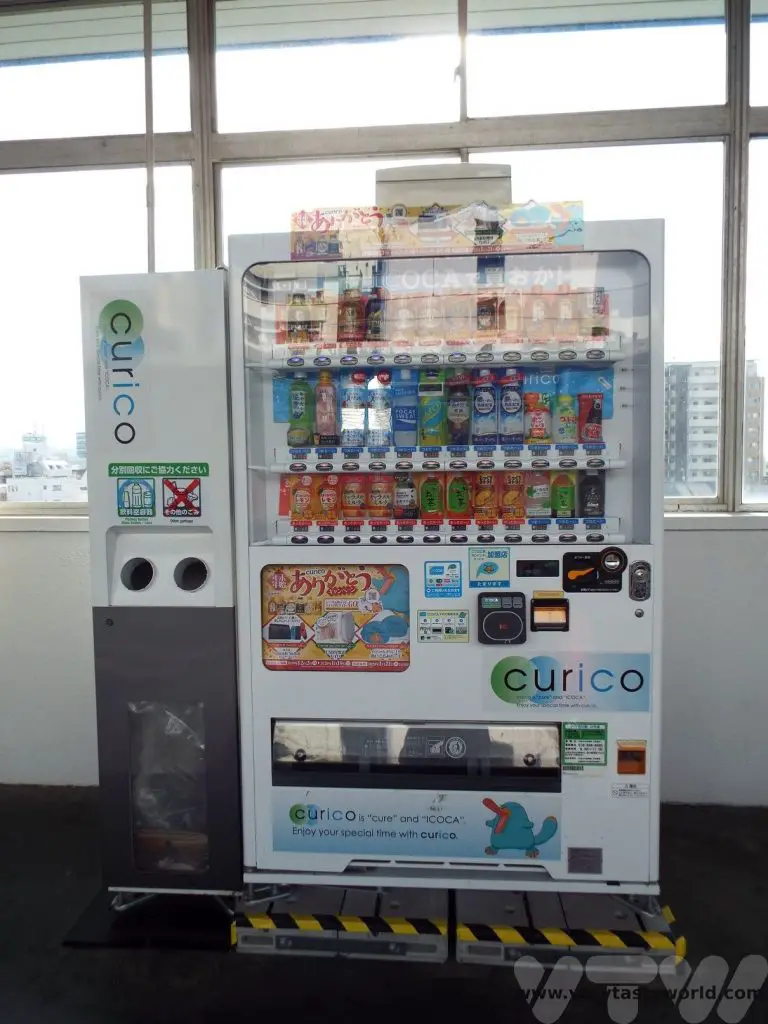
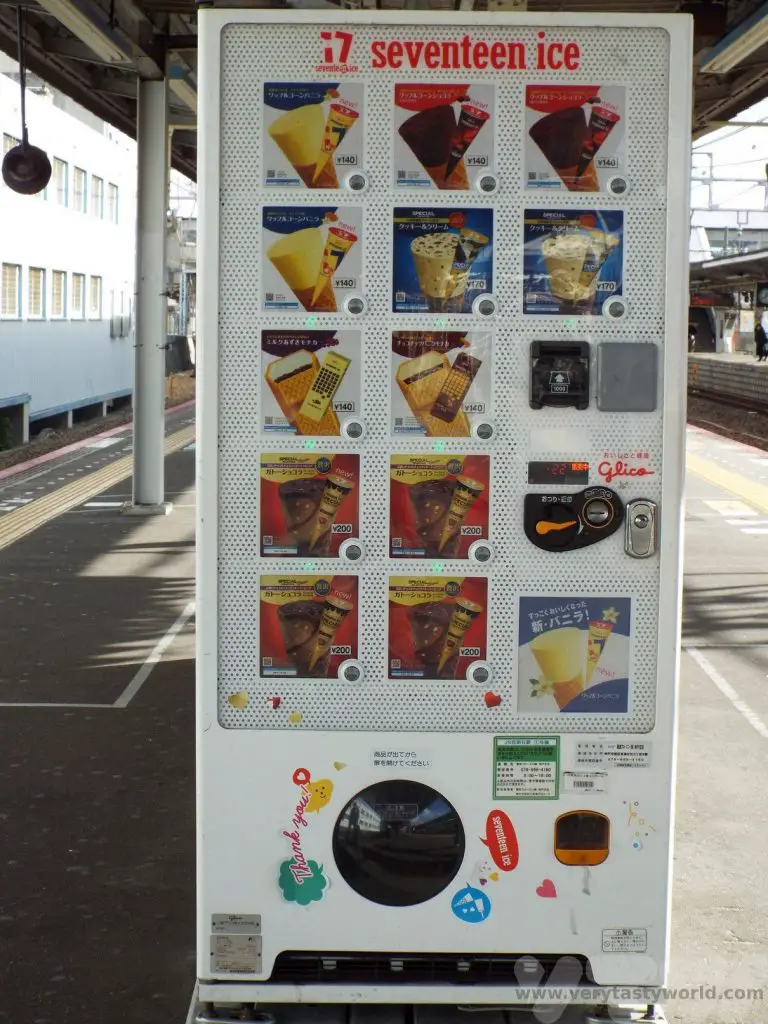
And you can drink the tap water in Japan, so make sure to bring a reusable water bottle with you.
Planning A Trip To Japan -Things to Do
Of course Japan offers all the usual attractions for tourists, such as museums, galleries, entertainment and shopping opportunities galore. But here are some quintessentially Japanese activities.
Kabuki
Kabuki is a form of Japanese highly stylised drama and it’s possible to visit the theatre in Ginza, Tokyo to see a play. When we visited we were given a leaflet which explained the plot for the play we were watching. The word kabuki is a combination of three characters which mean song (ka), dance (bu) and acting (ki) so you can expect all of these elements. All performers are male, even those playing female roles.
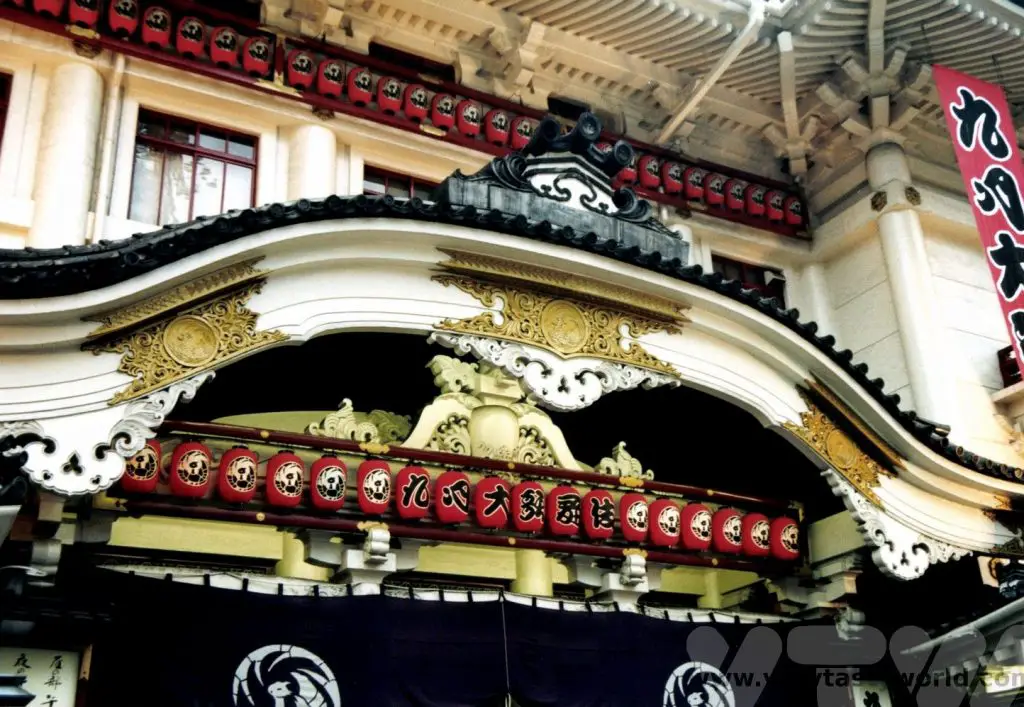
Another thing that surprised us is that there is an element of audience participation where viewers shout words of encouragement to their favourite actors. You can get tickets for a single act or a whole play.
Arcades
If you’re a big kid and enjoy playing video games you’ll love the arcades in Japan. They can be found in any city. We can’t resist them – you can play all sorts of games from musical (drumming or dancing) to driving to betting on horse races. There are some where you can stand alongside a mannequin comedian and attempt to perform as a manzai (straight man, funny man comedy).
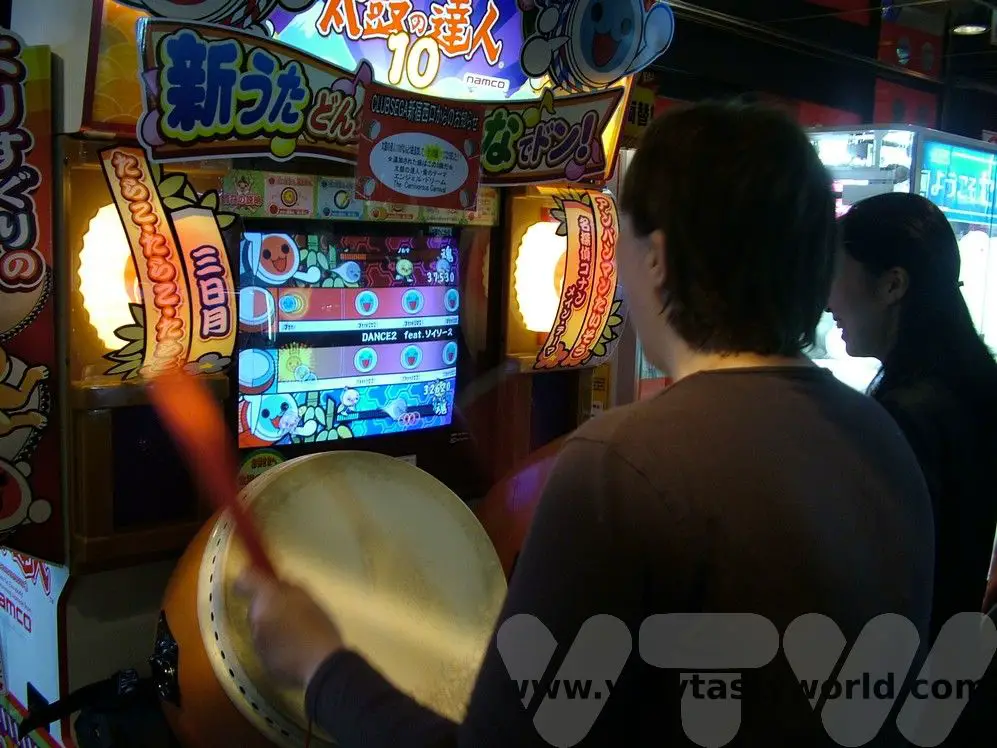
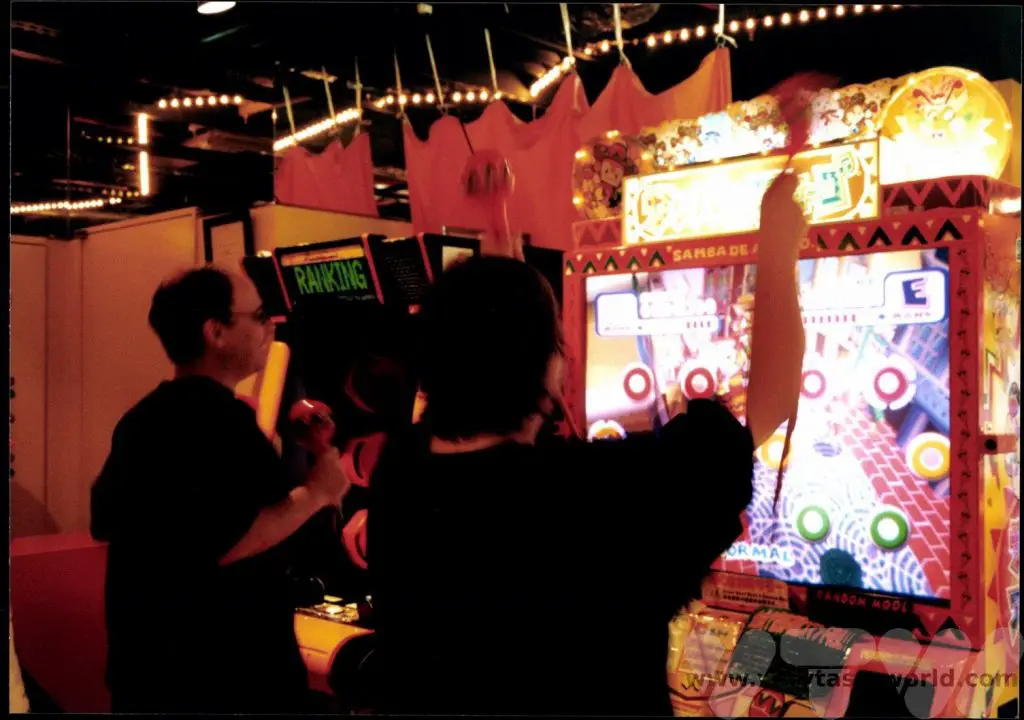
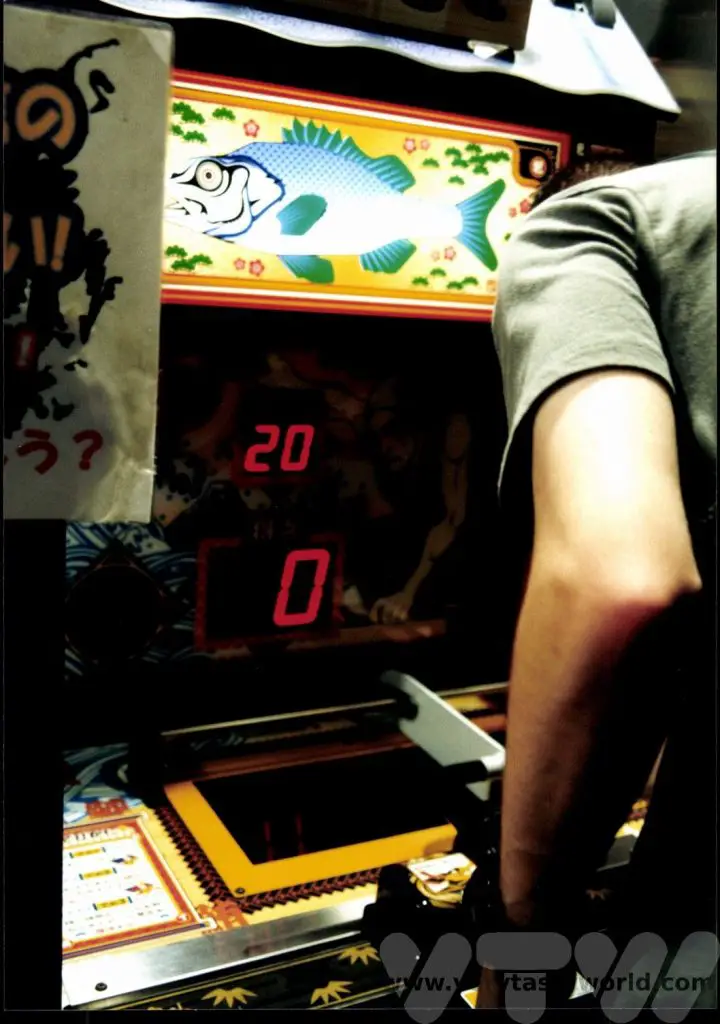
Just make sure you have a stash of 100 Yen coins.
Karaoke
Karaoke was invented in Japan and is now popular all over the world. The word derives from ‘kara’, meaning empty and ‘oke’ which is an abbreviation of ōkesutora (orchestra). In Japan you can visit karaoke establishments and hire a room for a set time period – just for you and your mates or travelling companions – thumb through the extensive book of songs (there will be loads in English) and sing your socks off. It’s great fun and there’s no need to worry about singing in front of strangers.

Big Echo is one of the most famous karaoke venues. You can also get a nomihodai – all you can drink – deal. There’s a phone where you can order drinks – although it would be helpful to be able to speak a bit of Japanese. The phone will also ring to let you know when you have 10 minutes before the room hire expires – the perfect time make Bohemian Rhapsody your final number!
Manga, Anime and Electronics
Japanese culture, particularly manga and anime, has become hugely popular all over the world and there are lots of opportunities to visit museums, such as the wonderful Studio Ghibli museum, and even museums located by some of the animation studios. There are some areas within certain cities which have hubs where you can go shopping for all the latest hi-tech gear or discover pop culture galore. Akihabara in Tokyo and DenDen town in Osaka offer loads of exciting places to explore for tech and culture fans alike.
Sumo
Sumo is Japan’s national sport and is fascinating to watch. There are tournaments six times a year (three in Tokyo, alternating with ones in Osaka, Nagoya and Fukuoka) You can spend a day at the sumo if your trip coincides with a basho.
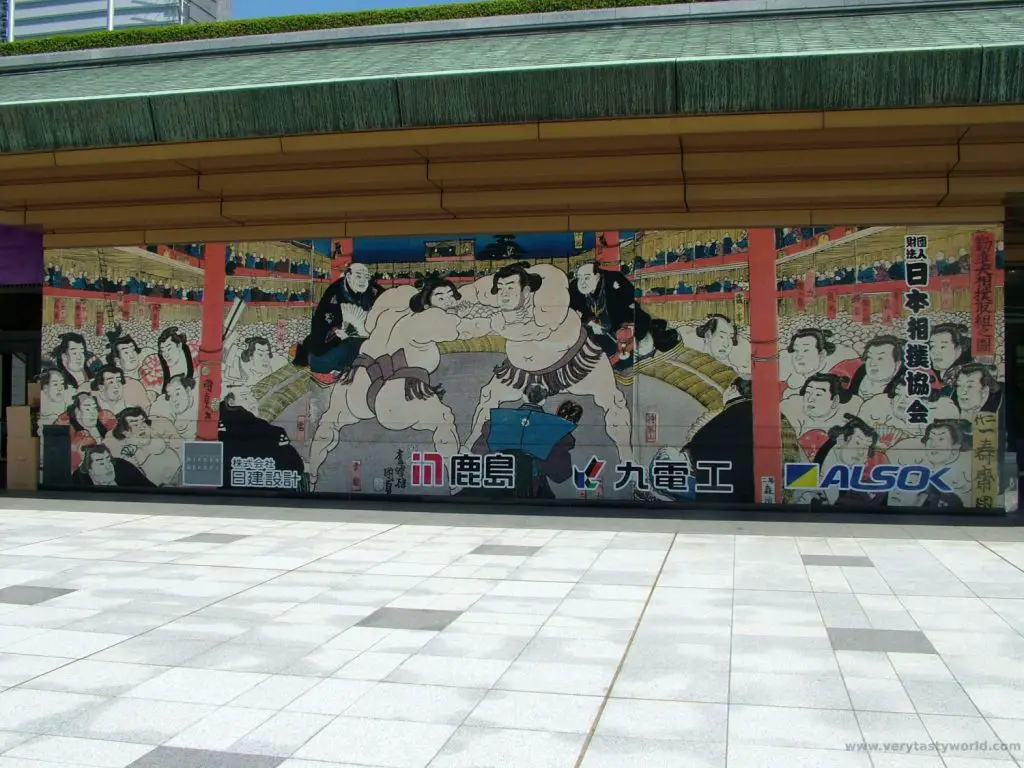
The rules of sumo are very simple: Two wrestlers face each other in a ring and, at the signal of mutual consent to begin, the bout commences. A wrestler loses when he is either forced out of the ring or touches the floor with any part of his body other than his feet.
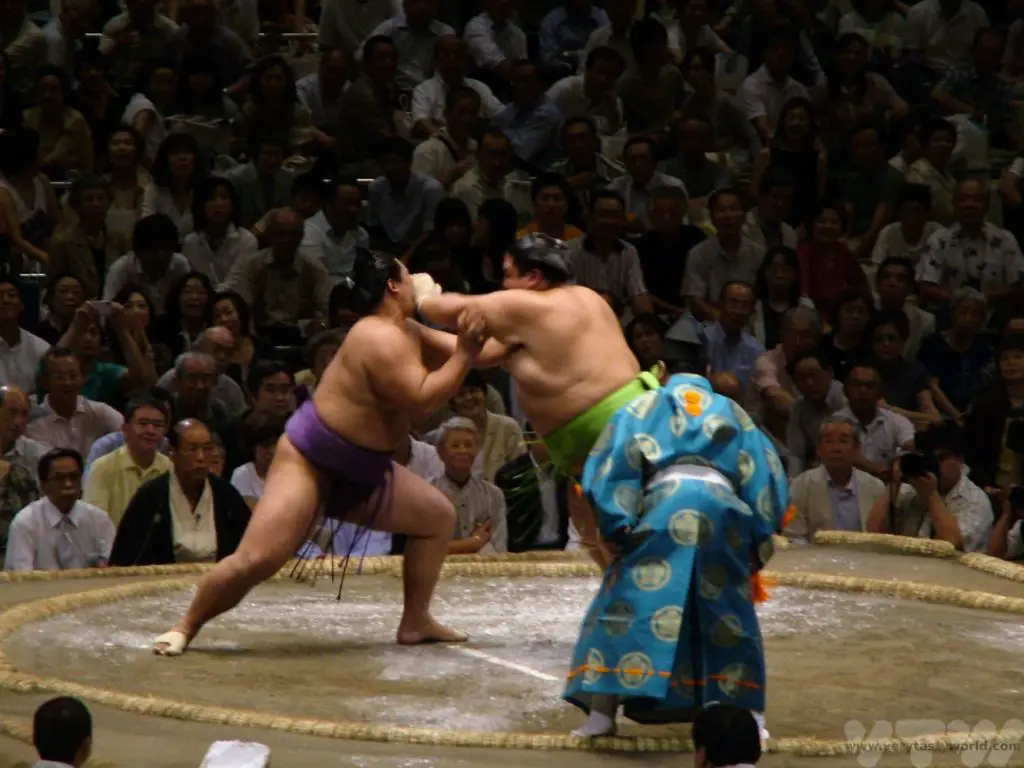
You can read about our day at the sumo in this post. And if you can’t attend, you can often watch sumo wrestlers training at their stables.
Pachinko
Pachinko is definitely the loudest and possibly the most impenetrable activity we have ever done in Japan. It’s kind of like a vertical pinball machine where you pay for a bucket of silver balls, put them in the machine and turn the nob. Sometimes you might win a whole bunch of silver balls. You exchange these for a prize (which can be a bit bizarre, such as a box of razor blades!) which can then be swapped for cash in the booth outside the pachinko parlour.
This is gambling, which isn’t strictly legal in Japan, which is why you win a ‘prize’ rather than directly winning cash. The most we have ever spent is 1000 Yen (a few pounds) and, of course, we lost. We didn’t have a clue what we were doing but it was lots of fun anyway. Although our ears were ringing after leaving the room.
Onsen
Because Japan is located in the Pacific Ring of Fire it is geothermally very active and has a lot of hot springs. And a country that has a lot of hot springs has a lot of hot spring resorts. Onsen are delightful places to relax and unwind, soaking in natural spring water. Some ryokan have their own onsen. A rotemburo is an outdoor onsen where you can relax and enjoy the natural surroundings. It’s worth knowing that some onsen are sex-segregated. We like bathing together, so tend to seek out private baths where we can relax together. Some of the ryokan we have stayed have a rotemburo which can be booked for a set time each evening.
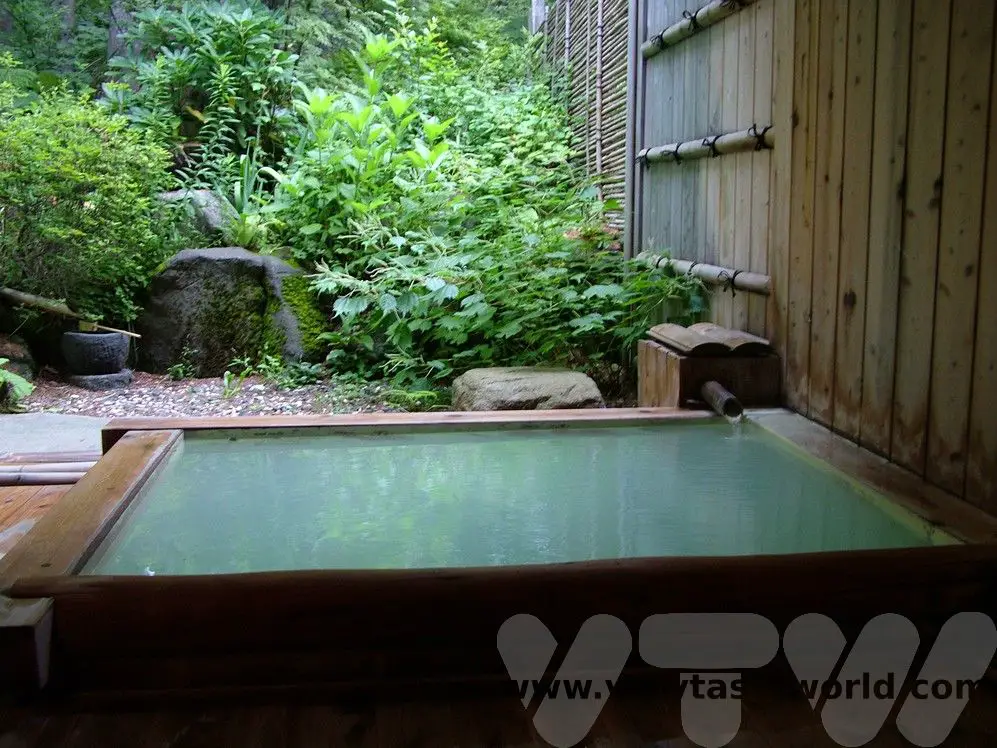
The bath etiquette is that you undress in the changing area then have a shower/wash before you get into the bath. Make sure you have thoroughly rinsed off all soapy water. This means that you are clean before bathing and can just enjoy a lovely relaxing time in the warm water.
Castles
There are thousands of castles all over Japan. These impressive fortresses, constructed from stone and wood, were often strategically located along trade routes and were designed to provide strong defences. Many become the residences of feudal lords, known as daimyo,
Many Japanese castles are reconstructions, having been destroyed by fire and rebuilt over the centuries.
Some of the best castles are to be found at Matsumoto – the black crow castle…

…and Himeji.
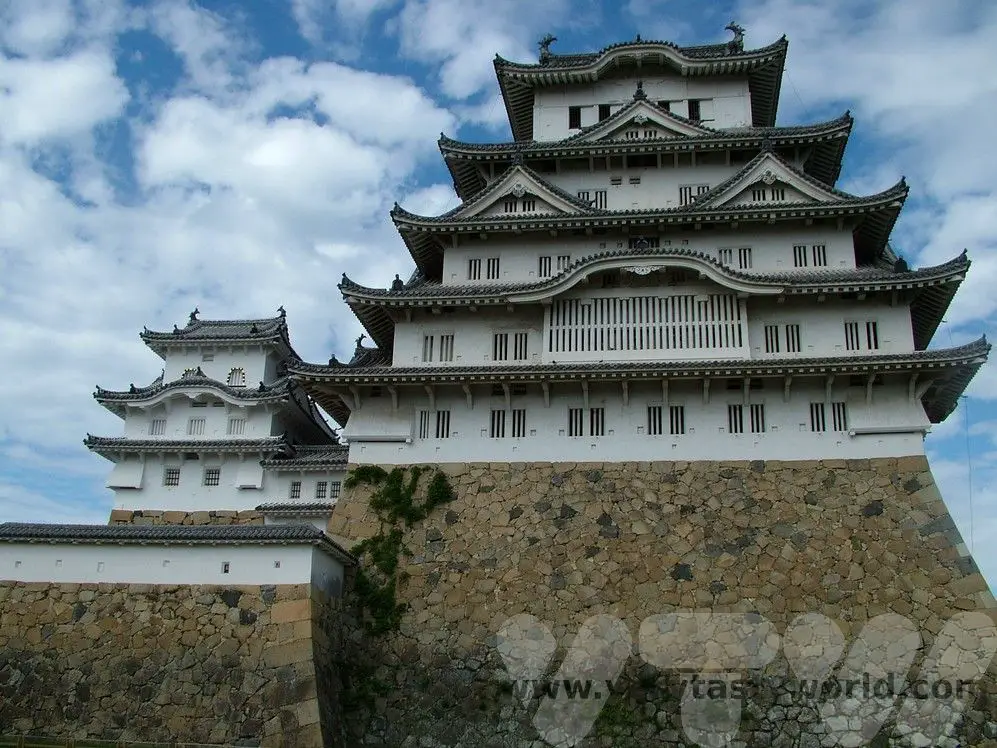
Gardens
Japanese gardens feature traditional designs that have their roots, if you will, in the country’s indigenous Shinto religion which recognises gods and spirits that are found in all things. Gardens often reflect the nature of the landscape and Japan’s distinctive seasons and use natural materials such as rocks, stones and water. Some gardens are very specialist, such as the zen gardens which comprise a minimalist landscape of rocks and stones.
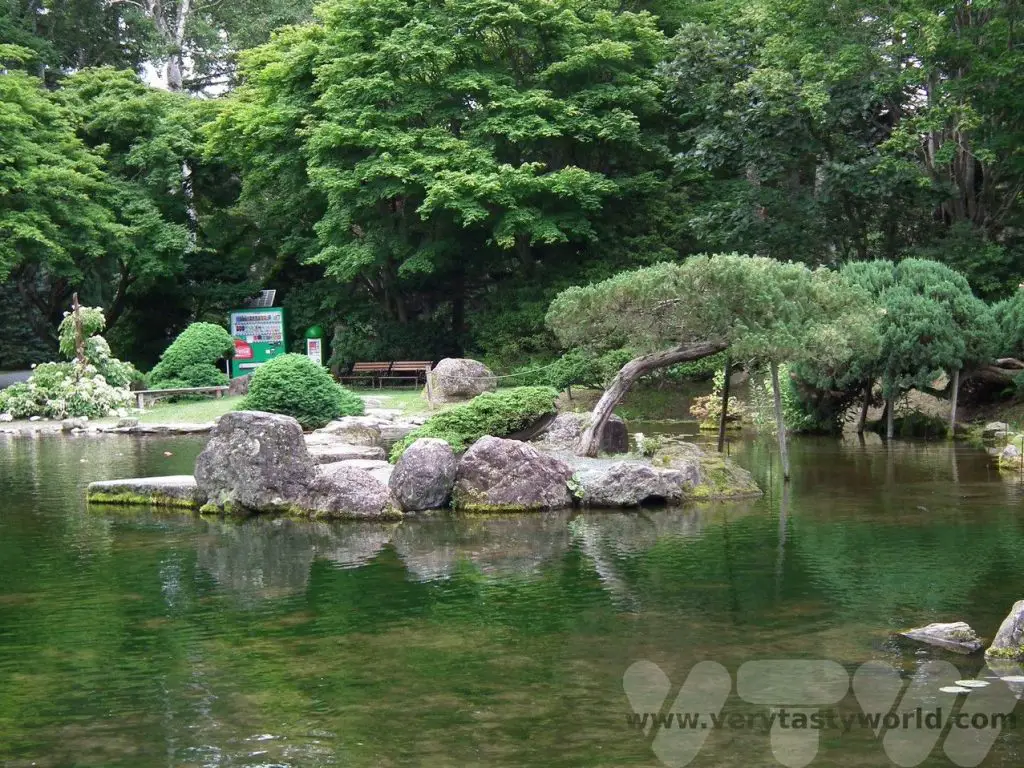
Planning a Trip To Japan – Top Places to Visit
Here are a few suggestions for places to visit which will hopefully give you a flavour of what Japan has to offer as well whet your appetite for some local regional dishes.
Honshu – the main island
Tokyo
Japan’s capital city is a sprawling metropolis. There are so many places to explore and things to do you could spend your entire holiday here. Popular districts are Shinjuku, Shibuya (the place where young people hang out), Asakusa (a laid-back area with old-world feel which is home to the Senso-ji temple), Akihabara (the cool hi-tech area which has a lot of manga and anime stores as well as the Tokyo Anime Center) and Roppongi (the area where a lot of overseas residents and visitors reside or hang out).
We tend to stay in Shinjuku as it’s very central. There are all sorts of things to do, including foodie tours.
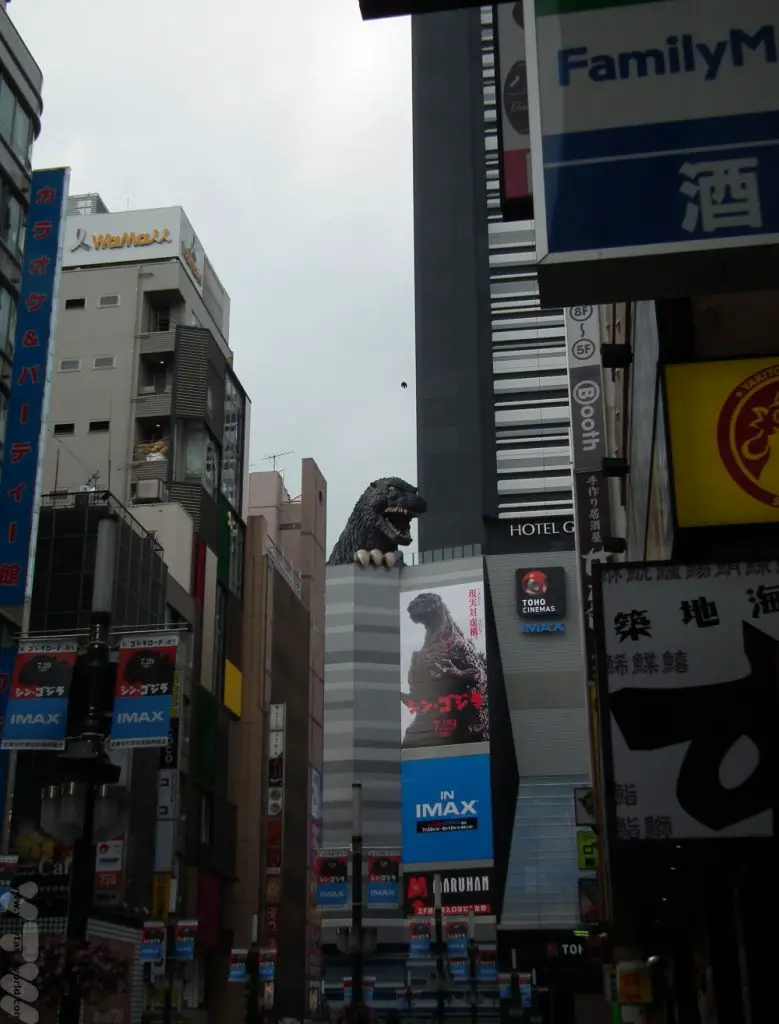
The Meiji shrine, dedicated to the deity of the Emperor Meiji is set in a lovely extensive park. It has a dramatic torii gate at its entrance.
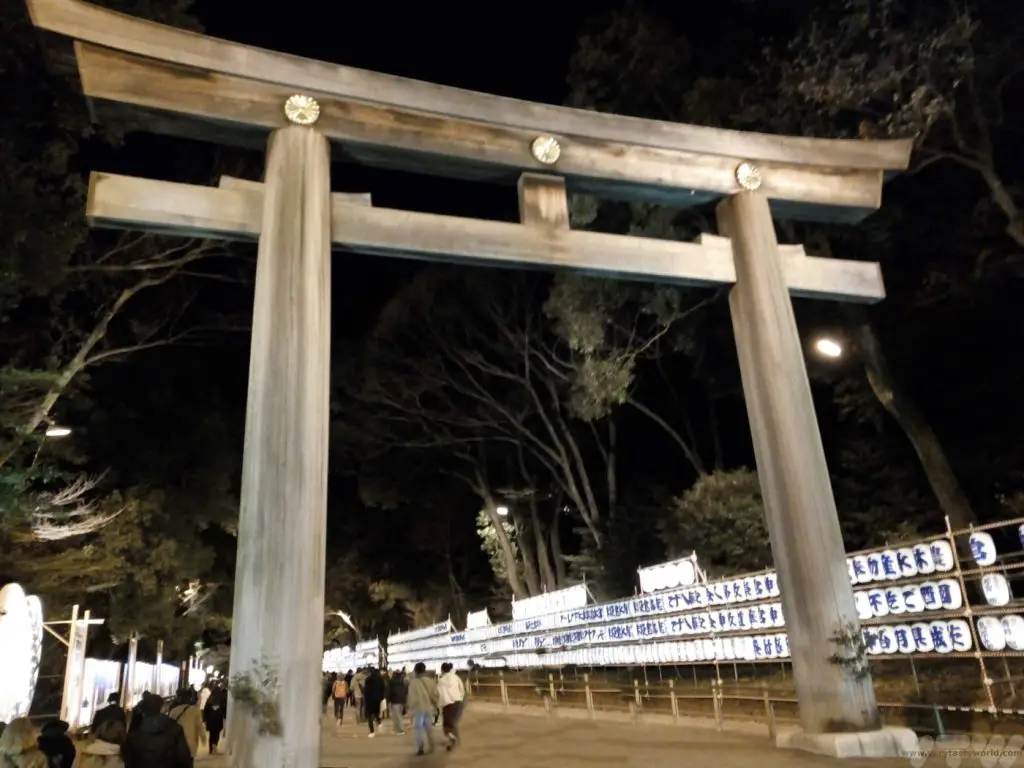
Shibuya is the location of the famous road crossing – known as ‘The Scramble’ – and seen in many films and TV series where over 2000 people can cross in a single cycle of the pedestrian lights.
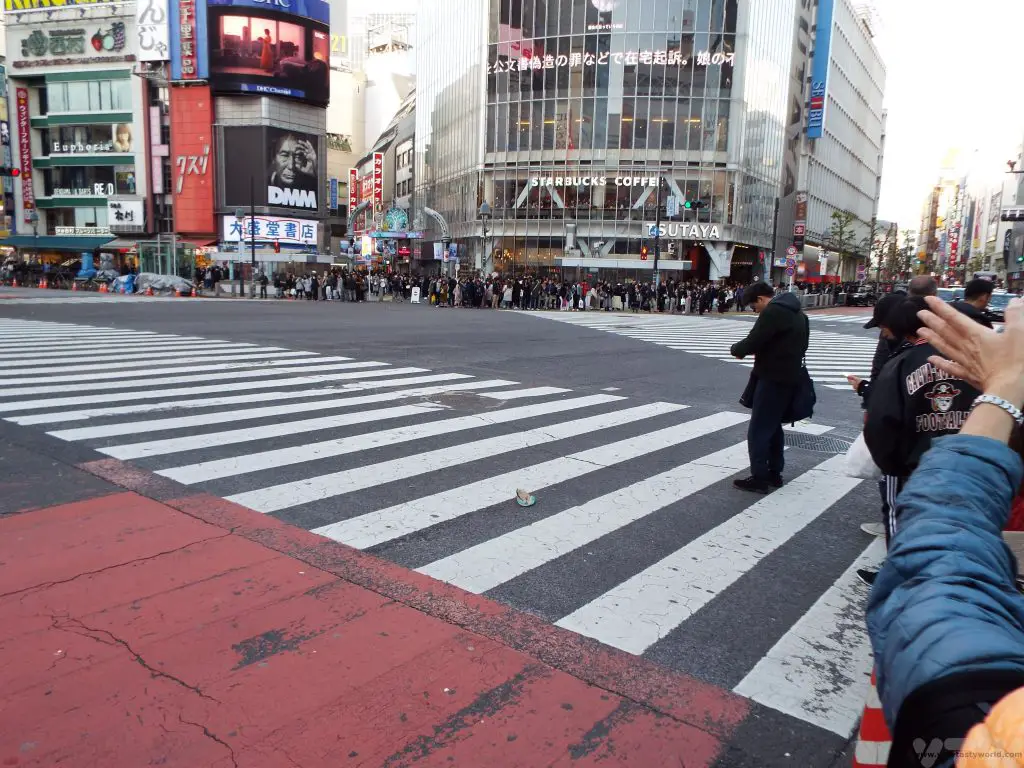
If you like the animations of Studio Ghibli, The Ghibli Museum in Mitaka is a must-see but you do have to book in advance.
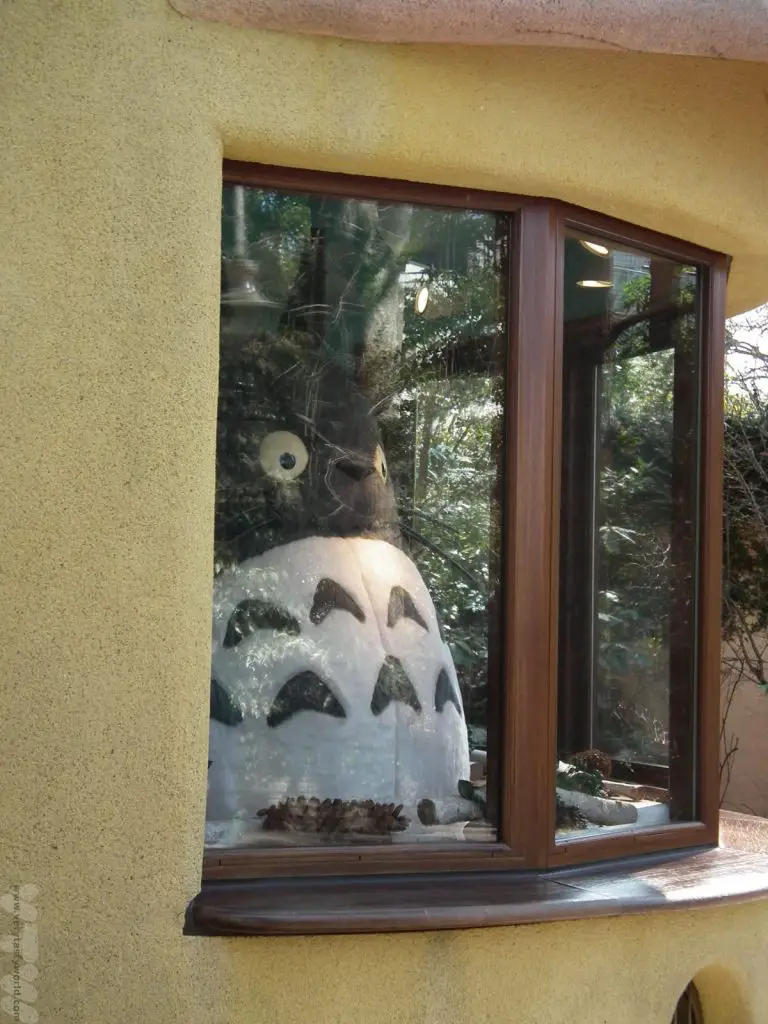
Odaiba is an entertainment hub on an artificial island set in Tokyo Bay. Cross the rainbow bridge to find all sorts of activities and shopping. And a monument that somehow seems familiar…
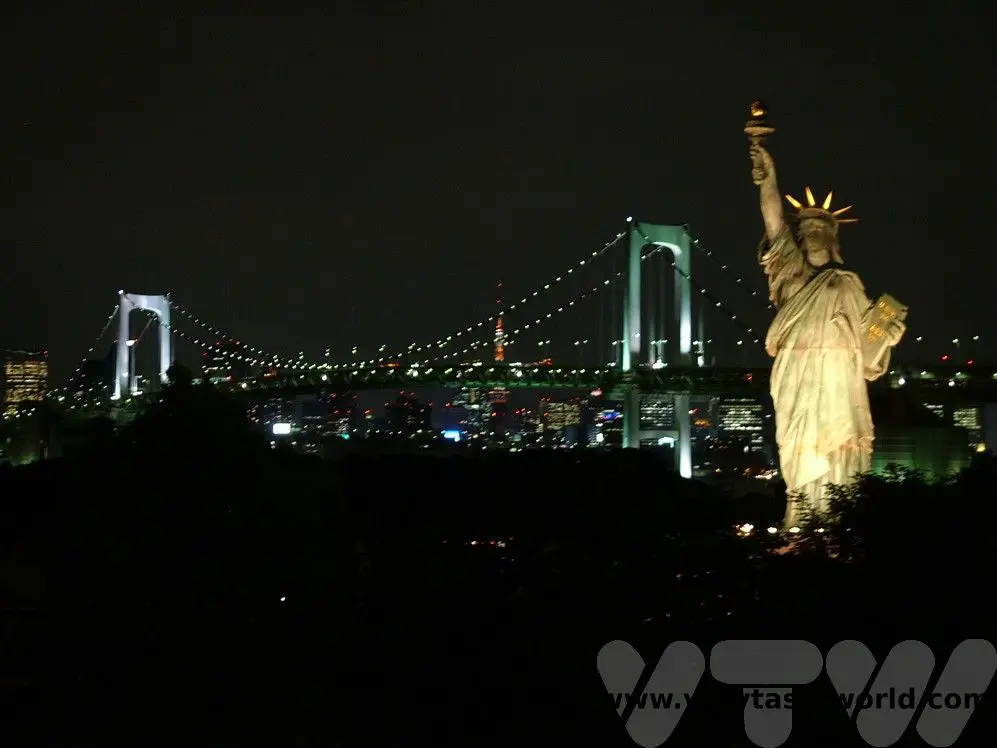
There are also plenty of day trips from Tokyo. Nikko is a historic city and the home of the Toshogu Shinto shrine.
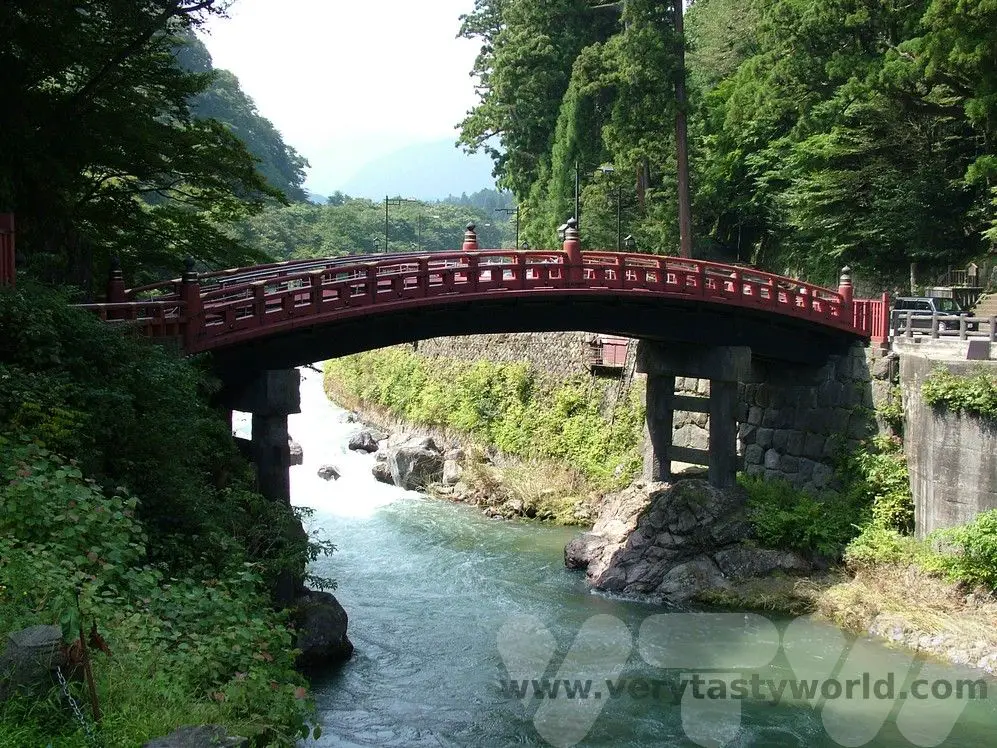
A tour of the Fuji Five Lakes area is a possibility from Tokyo. You might get a glimpse of Japan’s iconic mountain (if the weather is clear!) and sail on a pirate ship across Lake Ashinoko.
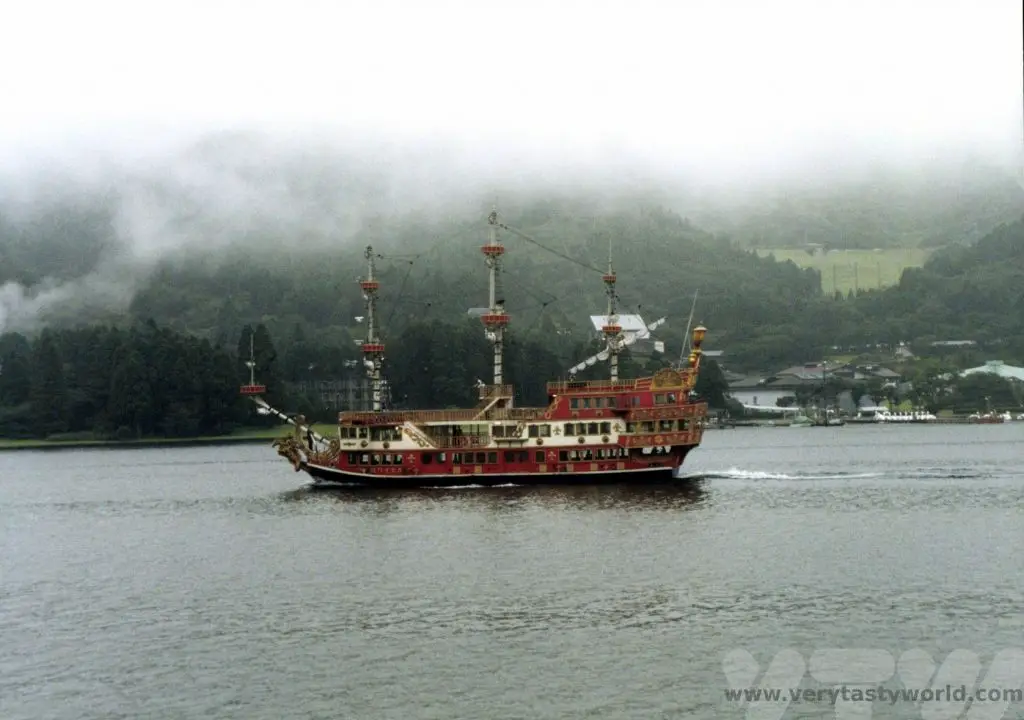
Osaka
A few hours from Tokyo on the bullet train Kansai’s commercial capital is a neon paradise and a fantastic place for foodies. Head out to the dotonbori area for a range of amazing restaurants and a vibrant nightlife.
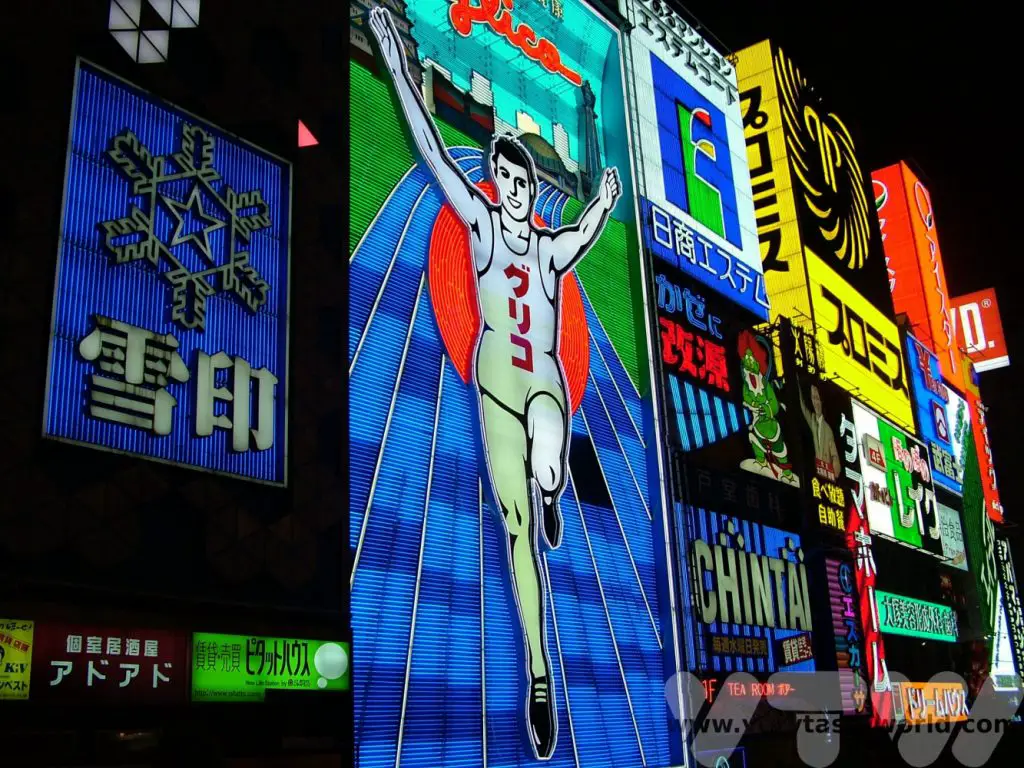
Typical Osaka dishes include okonomiyaki (kind of a cross between an pancake and a pizza) and takoyaki – octopus balls in batter.
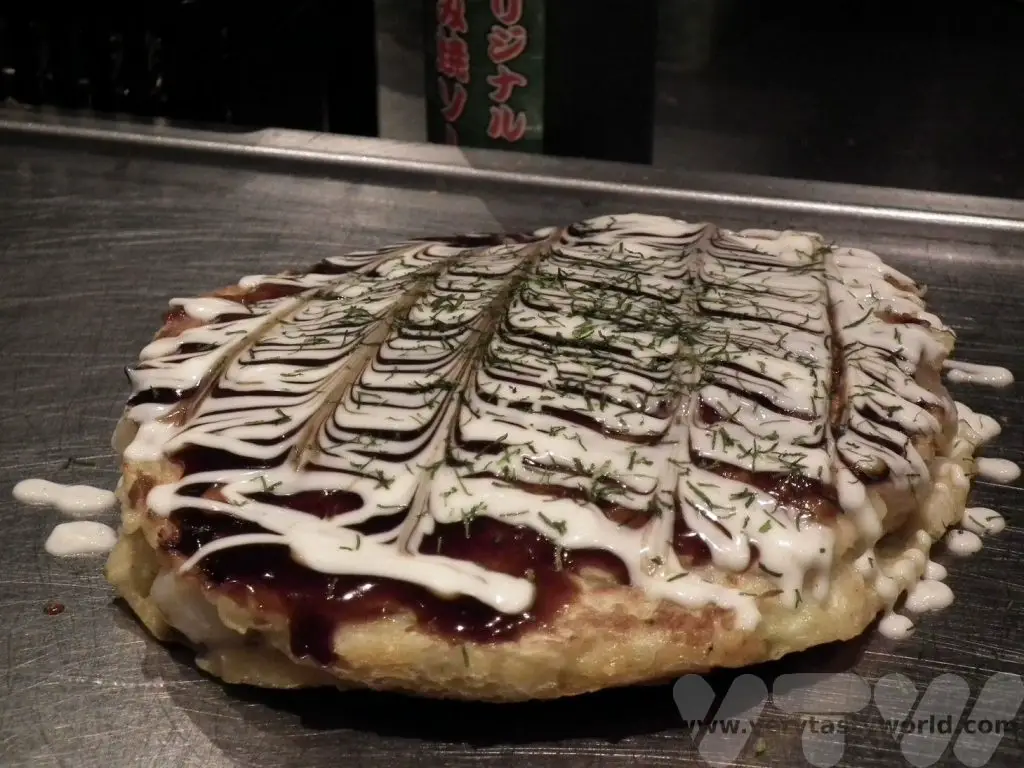
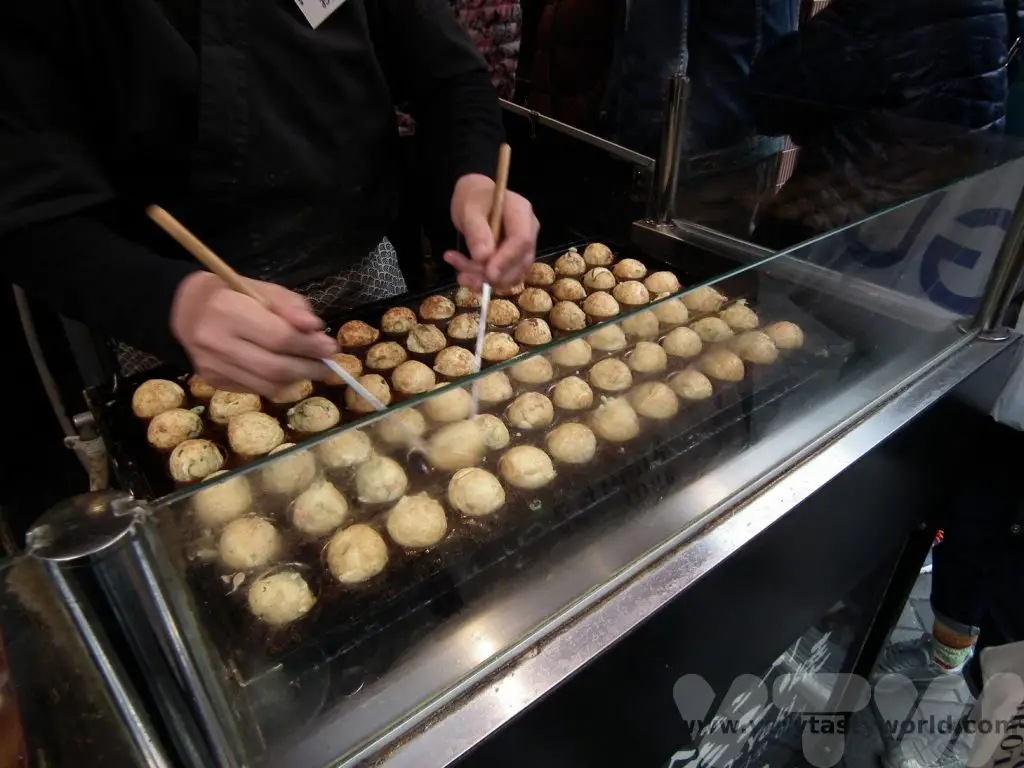
Nara
A tour of this ancient city offers lots of historic buildings, temples and pagodas to explore all set within a park. The highlight is Tōdai-ji which houses Daibutsu, a 15m-high bronze Buddha.
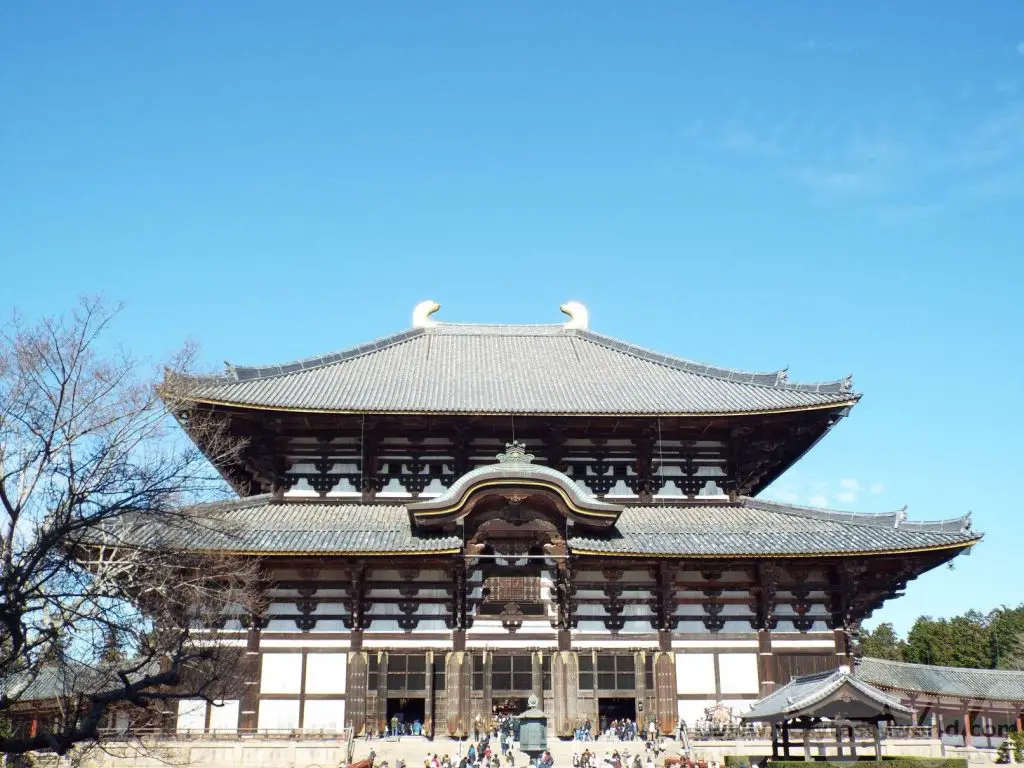
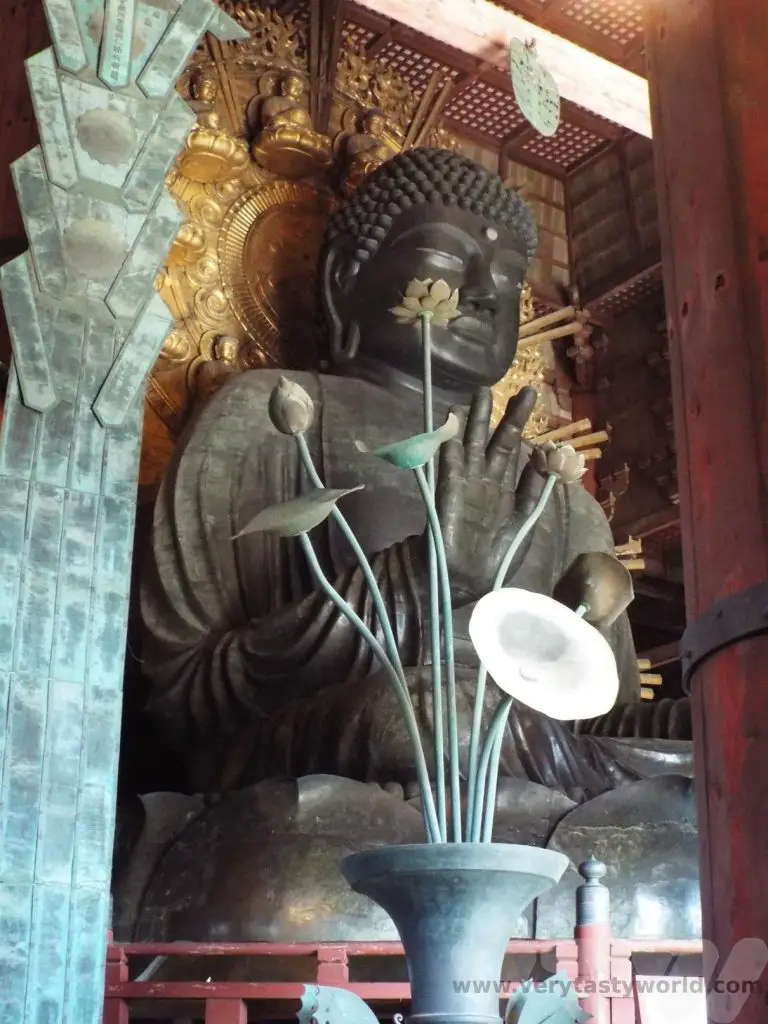
A fascinating and beautiful place, just watch out for the local deer who roam across the park – they are usually hungry!
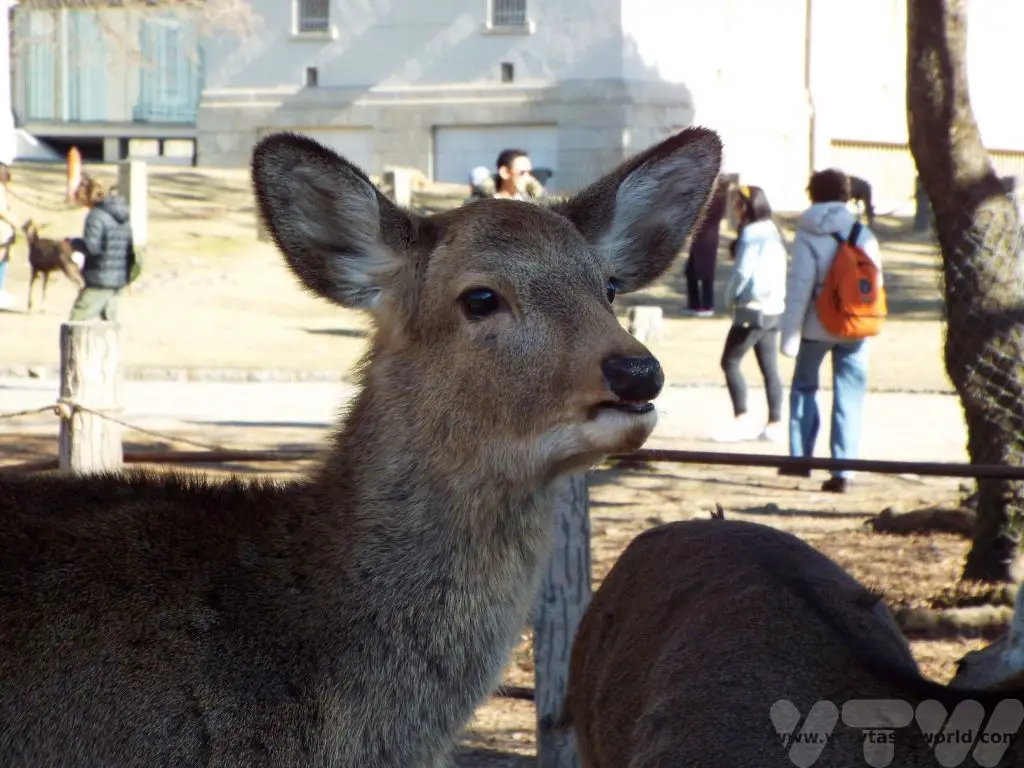
Kyoto
Japan’s former capital doesn’t look the part initially but has some beautiful and important historic places to visit. Just look closely and you will find a temple almost everywhere. A hop-on, hop-off bus tour is a great way to explore the city. Amongst the many treasures, there are some must-see highlights:
The Temple of the Golden Pavilion
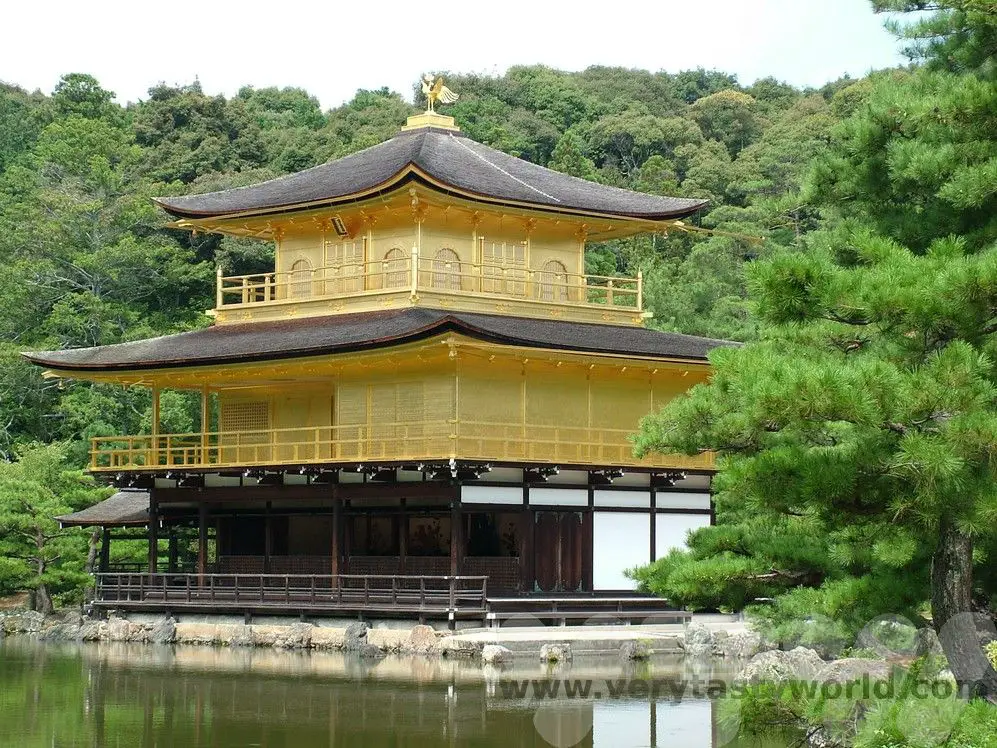
The Ryoanji zen garden is a place for contemplation
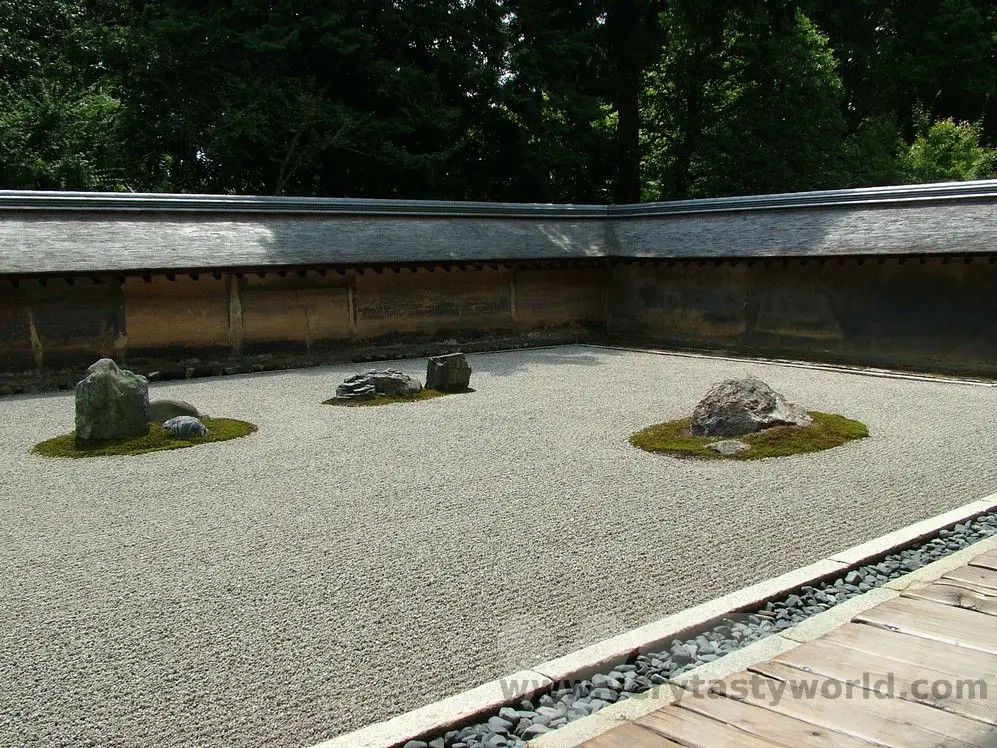
And the Fushimi Inari shrine, a short train ride outside the main city, with its plethora of vermillion torii (temple gates) to wander through.
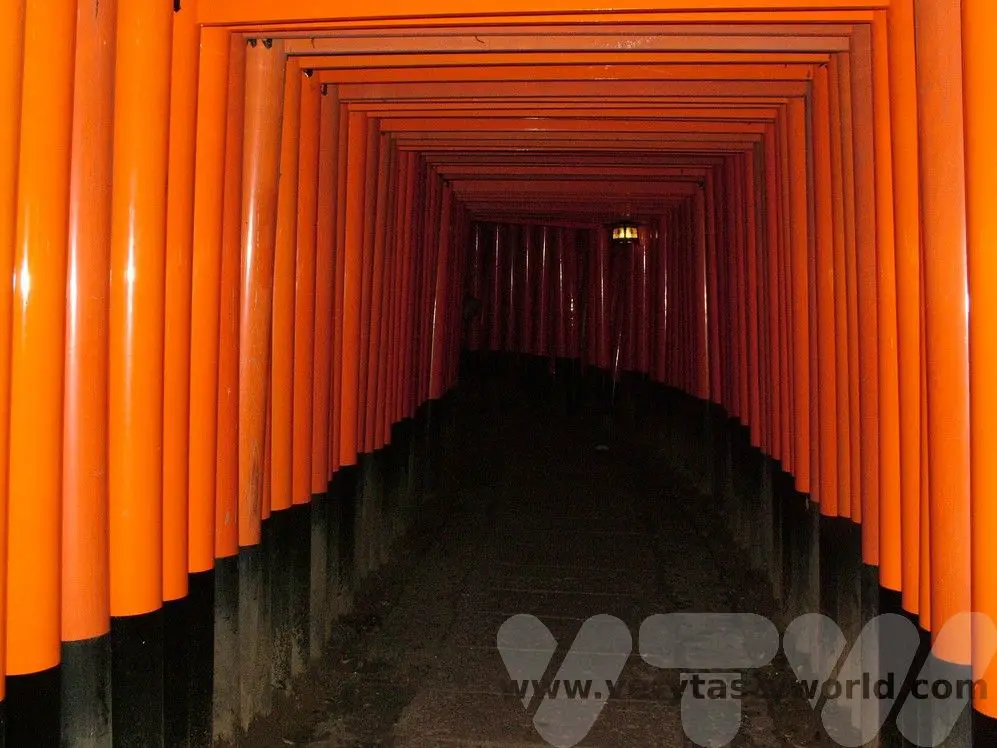
Hiroshima
A city with an horrific history, Hiroshima has recovered to become a modern, cosmopolitan city. The Peace Park and museum give a balanced history of the atomic bombing and, while it is a difficult place to visit, is also a peaceful and contemplative place.
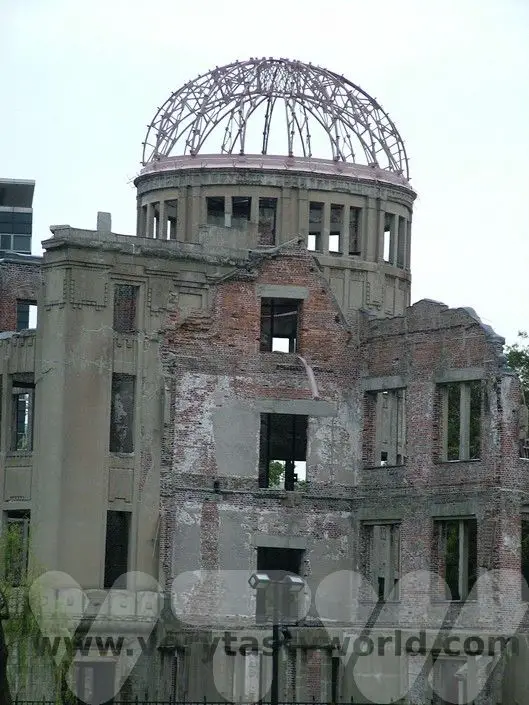
The Peace Park has a non-eternal flame which will be extinguished when the last nuclear weapon on earth has been decommissioned.
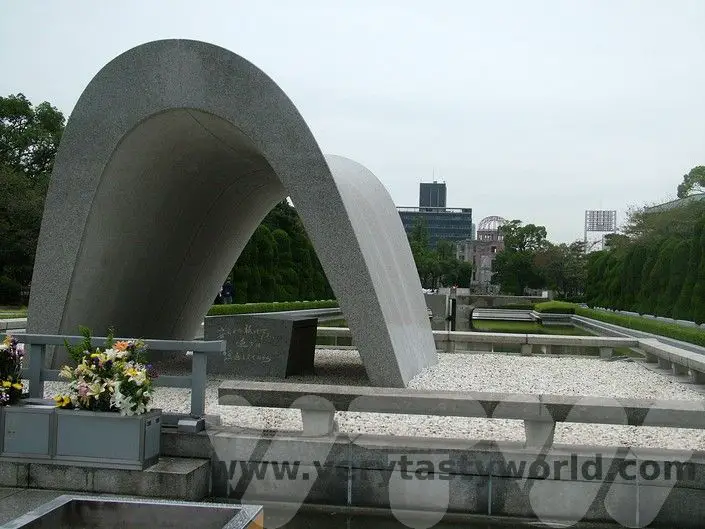
Don’t forget to visit the island of Miyajima which is a short journey away. Tours are available from Hiroshima. You can see the iconic Torii gate in the sea, one of the top three iconic views of Japan.
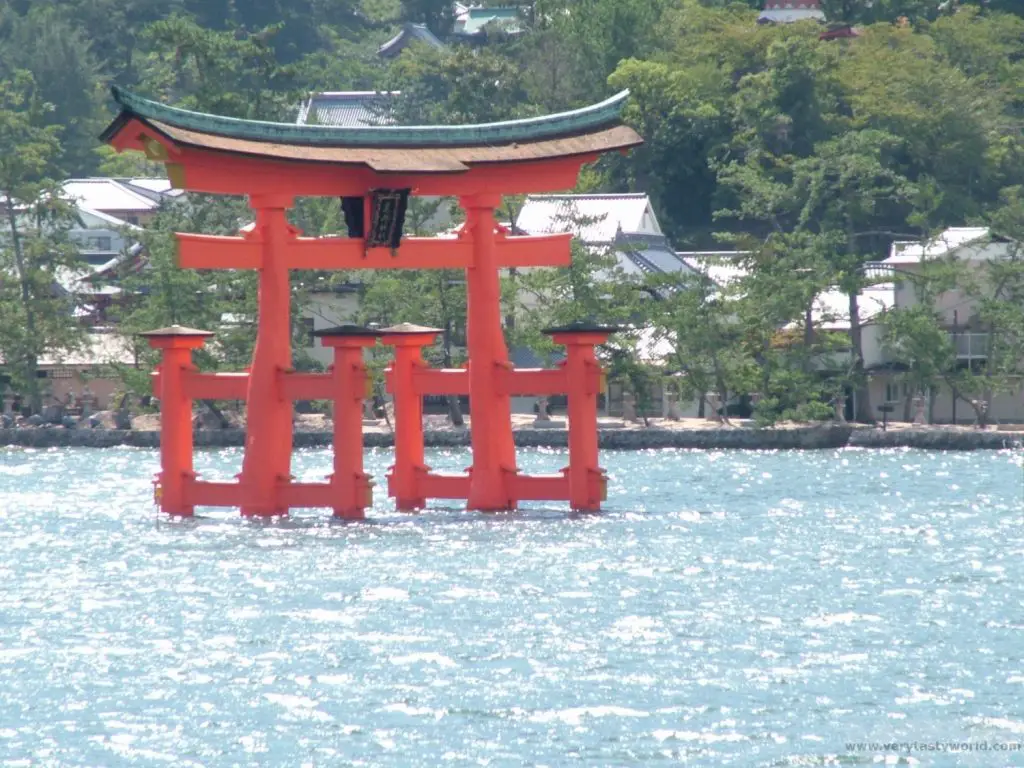
Japan Alps
If you enjoy hiking in splendid countryside, the Japan Alps are ideal. Kamikochi and Norikura Kogen are delightful places to visit.
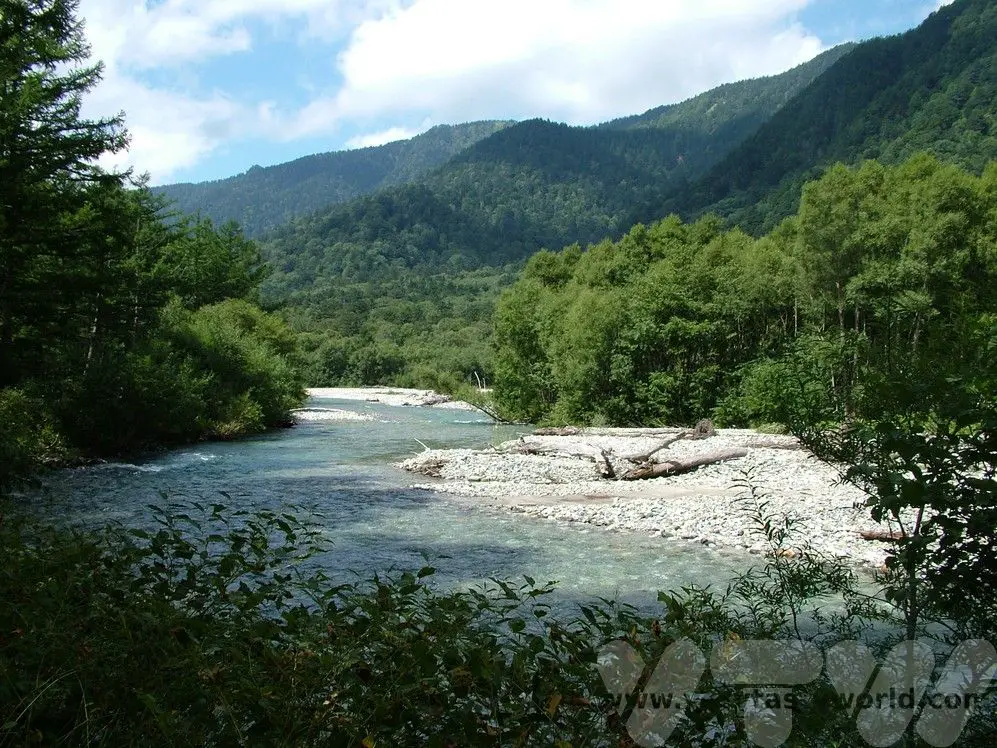
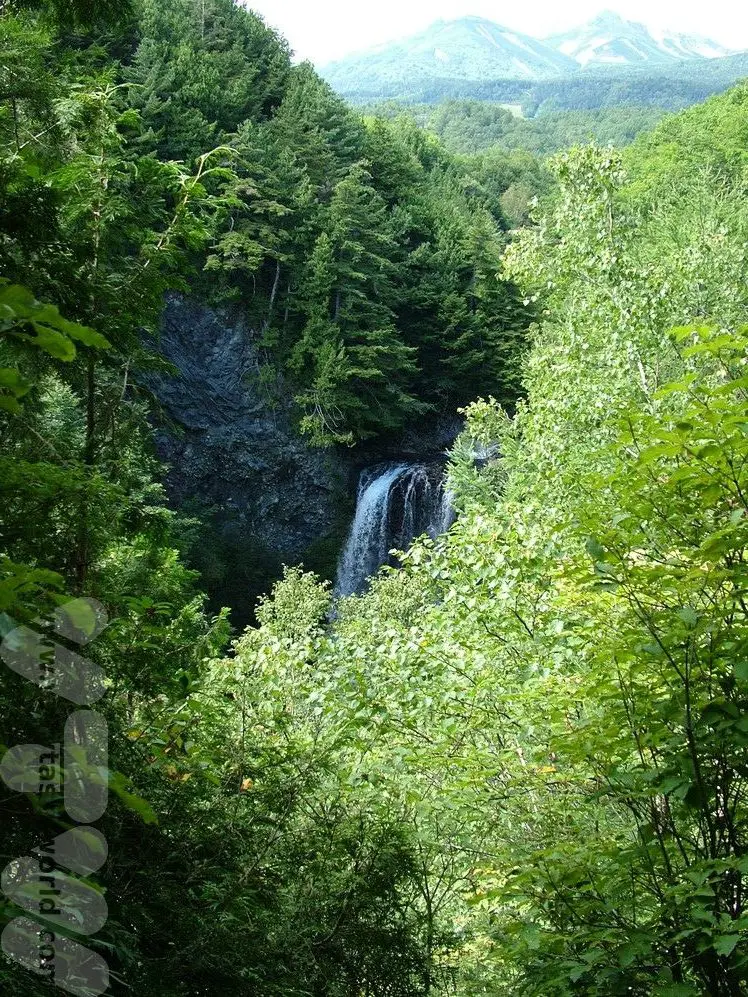
And the gassho houses of rural Honshu offer a fascinating glimpse into traditional rural life. You can stay in a farmhouse in Ainokura.
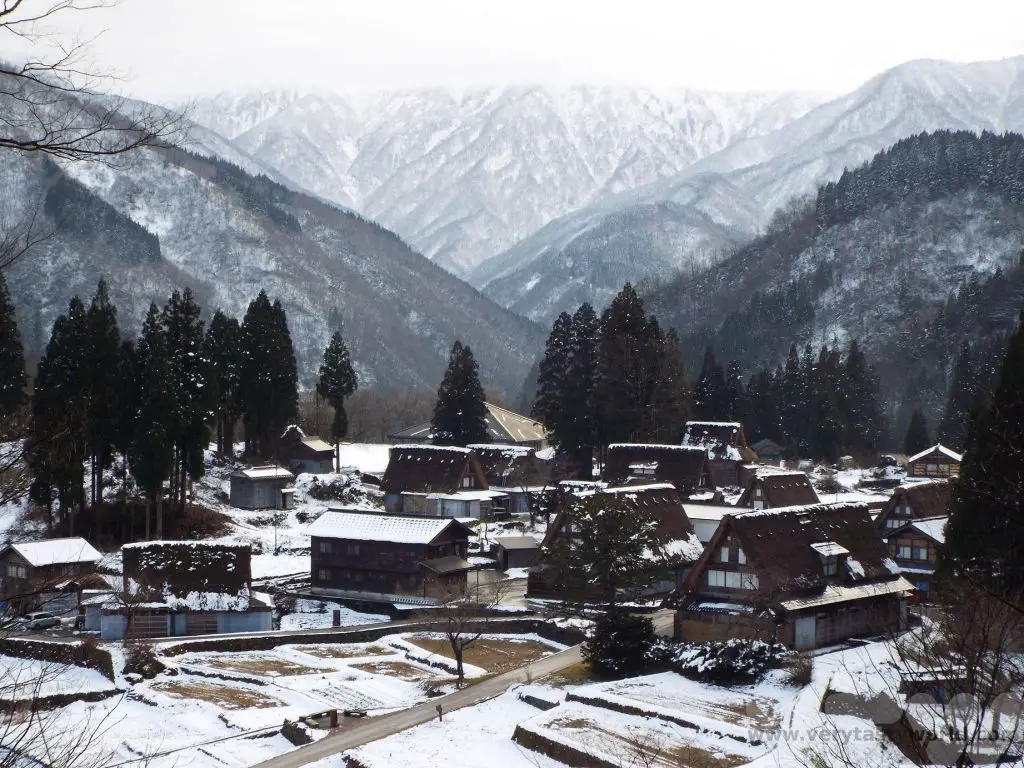
Staying in a gassho you are likely to try the local produce – fresh river fish and mountain vegetables.
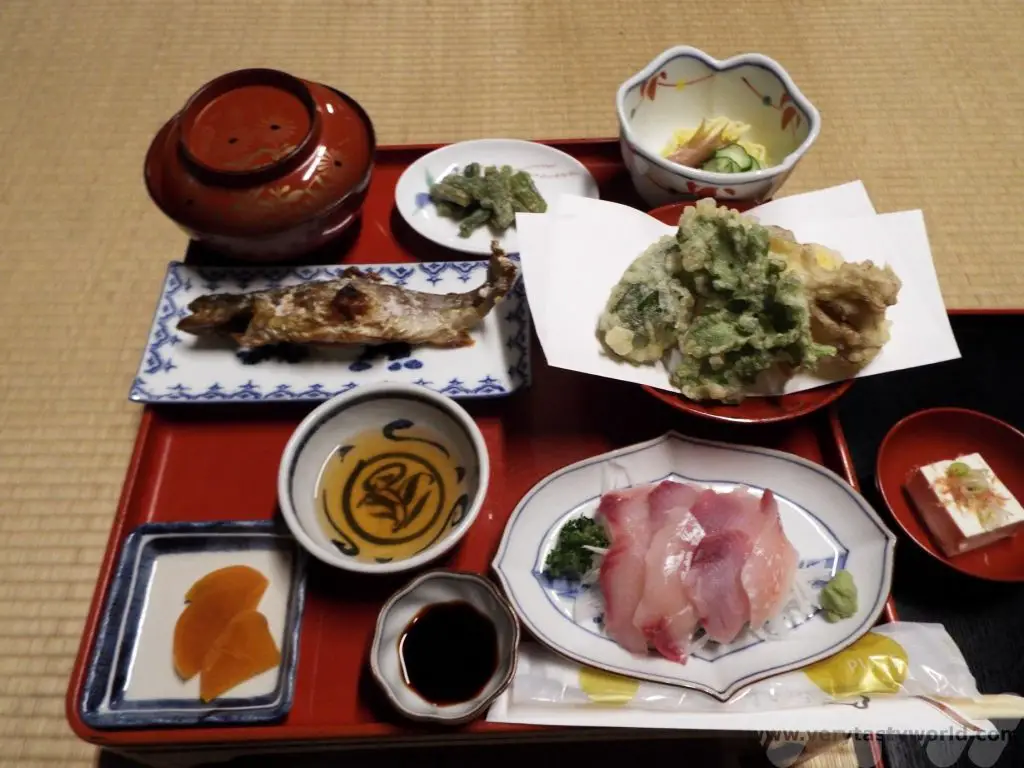
There are a number of tours available to visit these delightful villages.
Hokkaido – The Northern Island
Sapporo
The capital of Hokkaido is a laid back city. It has a snow festival every winter and you can view amazing snow sculptures in the extensive city park.
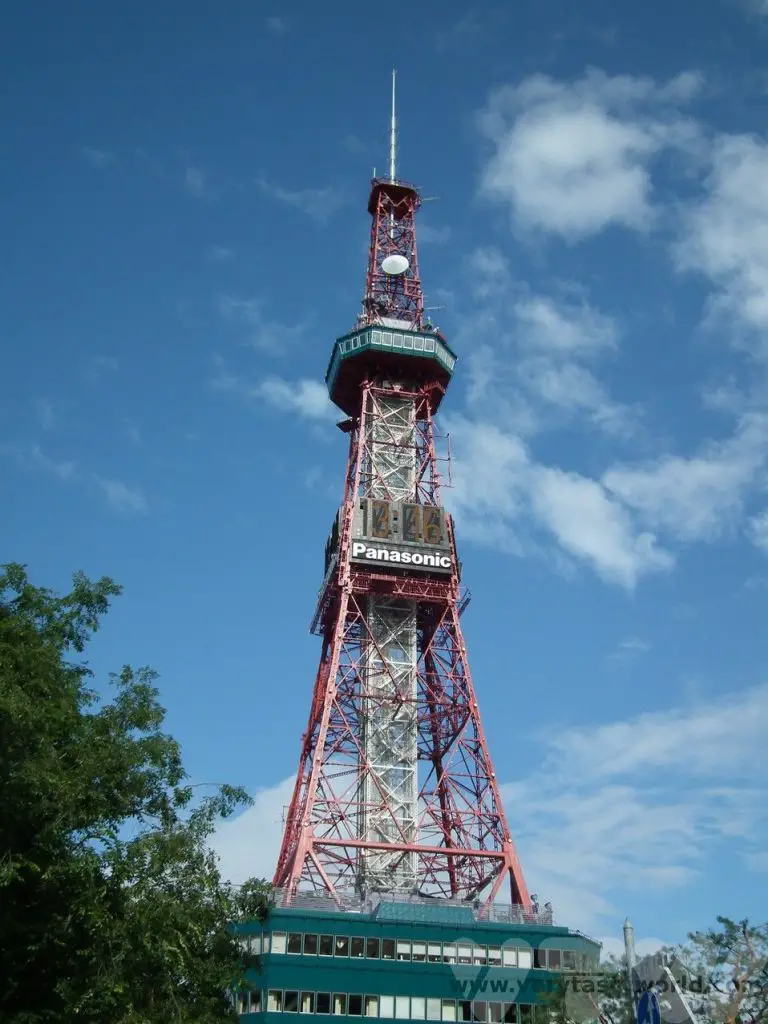
You can visit the Sapporo beer museum to learn about – and taste – some of Japan’s most famous beers.
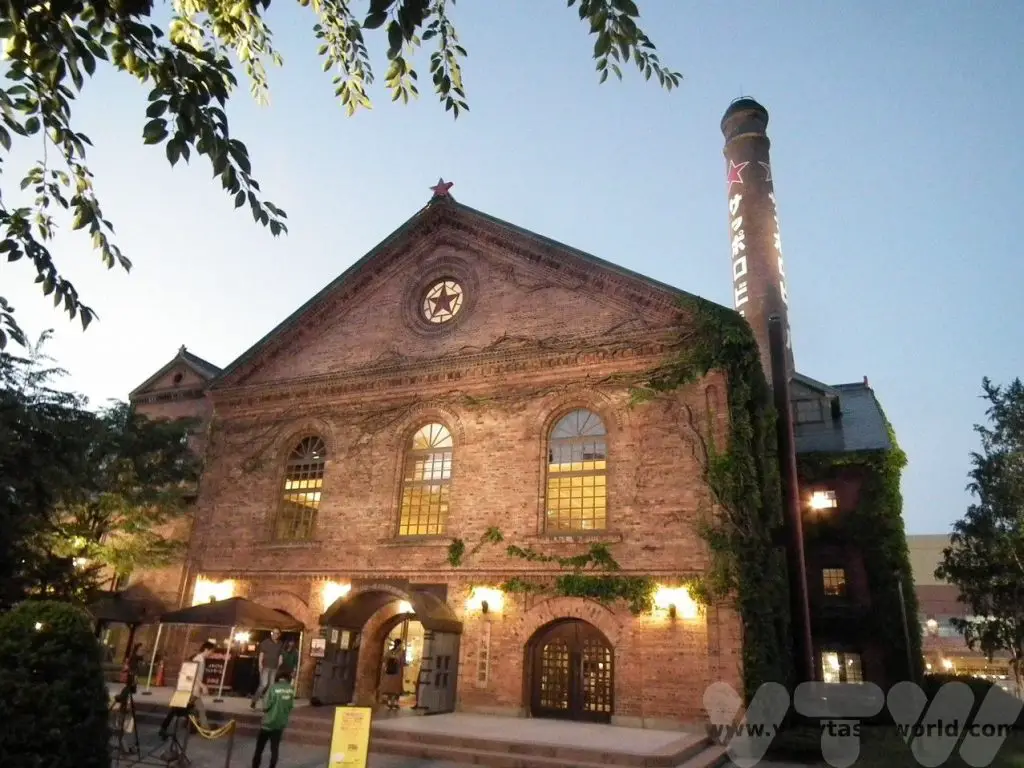
A day trip from Sapporo to Yoichi is a great opportunity to try Japanese whiskey at the Nikka distillery – the area has a similar soil type and climate conditions to Scotland. There are freebie samples in the tasting hall too!
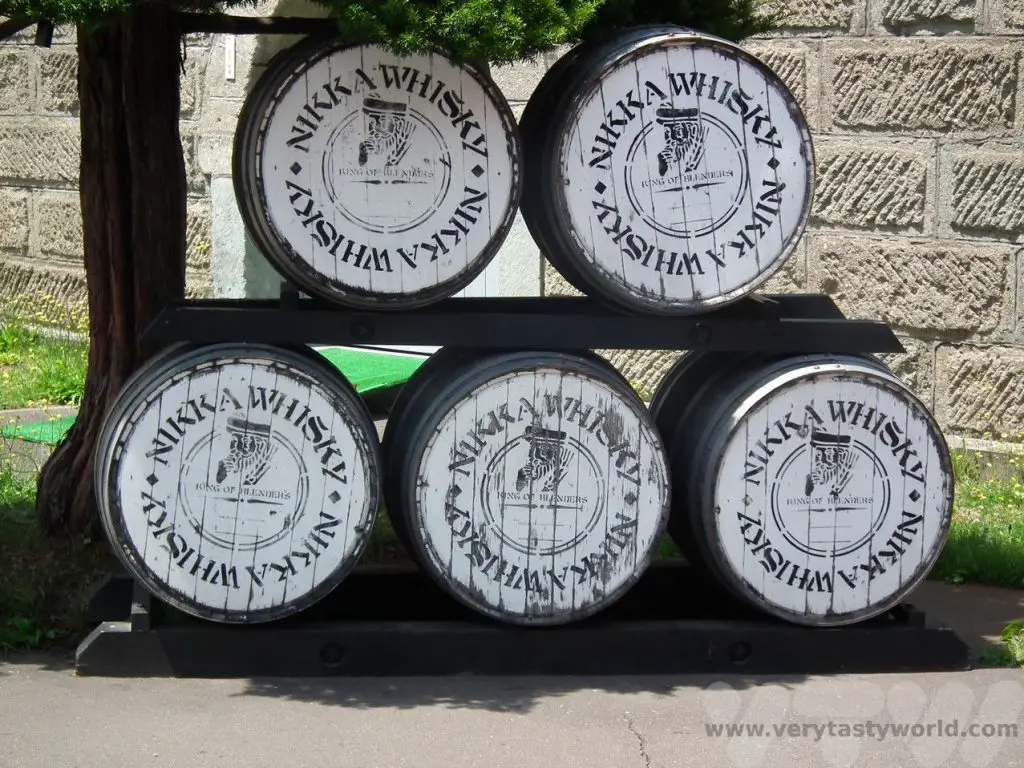
Hakodate
If you like seafood, particularly crab, head to Hakodate where you can enjoy crab for breakfast, lunch and dinner. Rice bowls are available for good prices at the market.
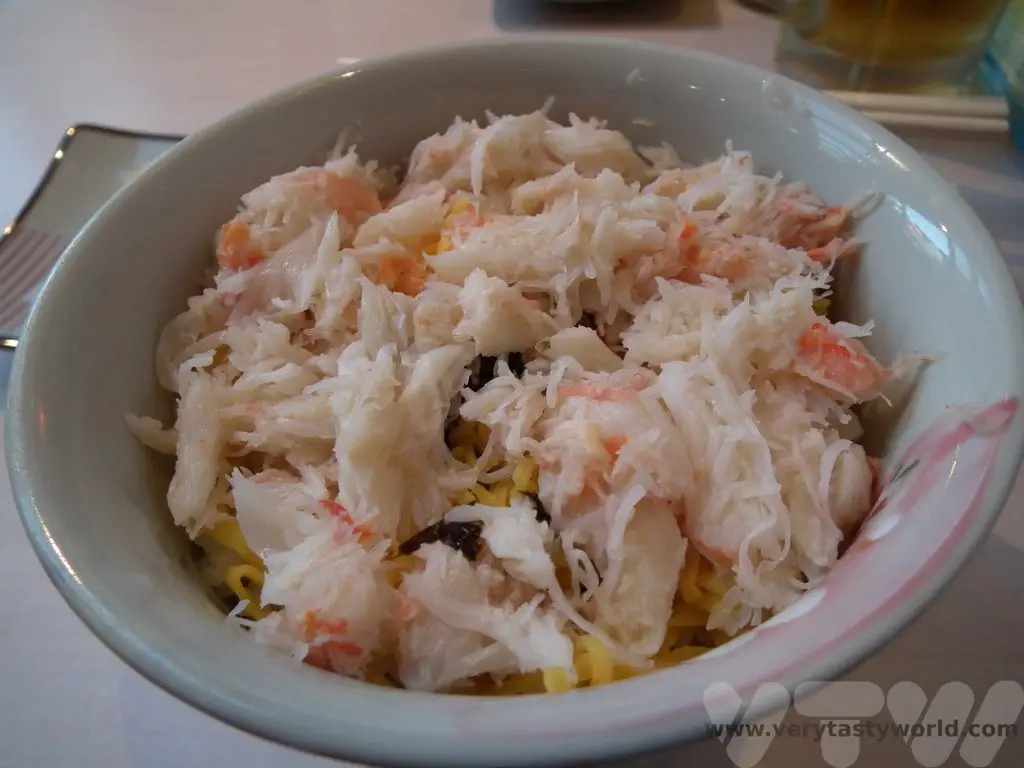
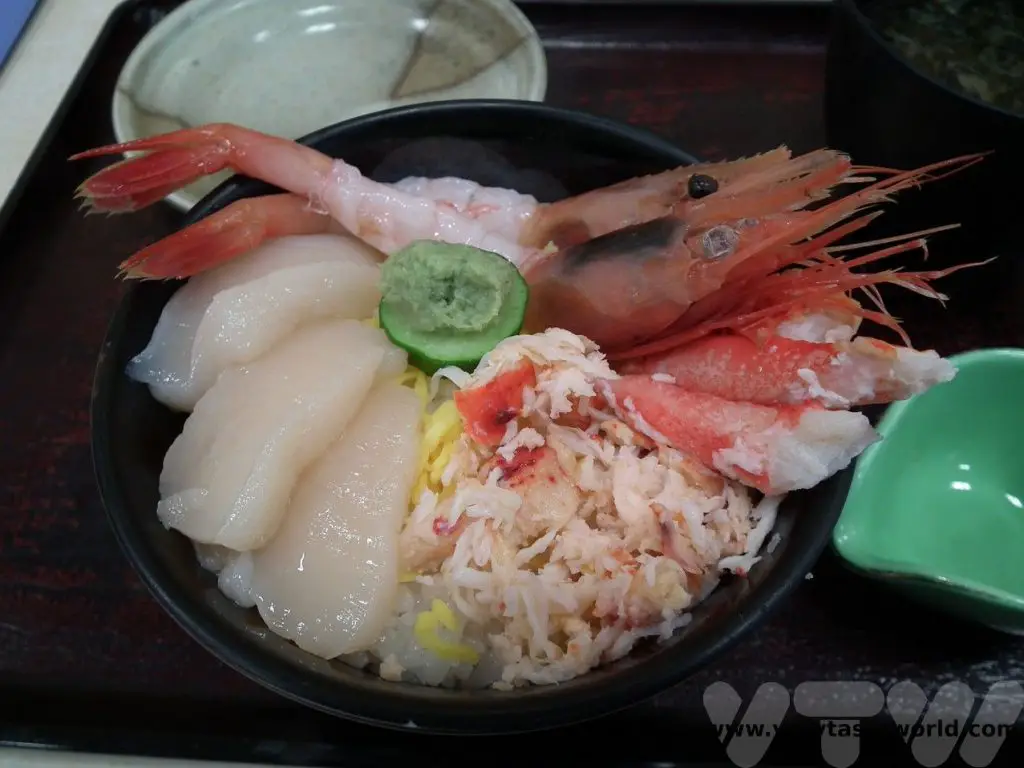
Hokkaido also has some wonderful countryside to explore – the Akan lake district is beautiful and the island is home to many red-crowned cranes.
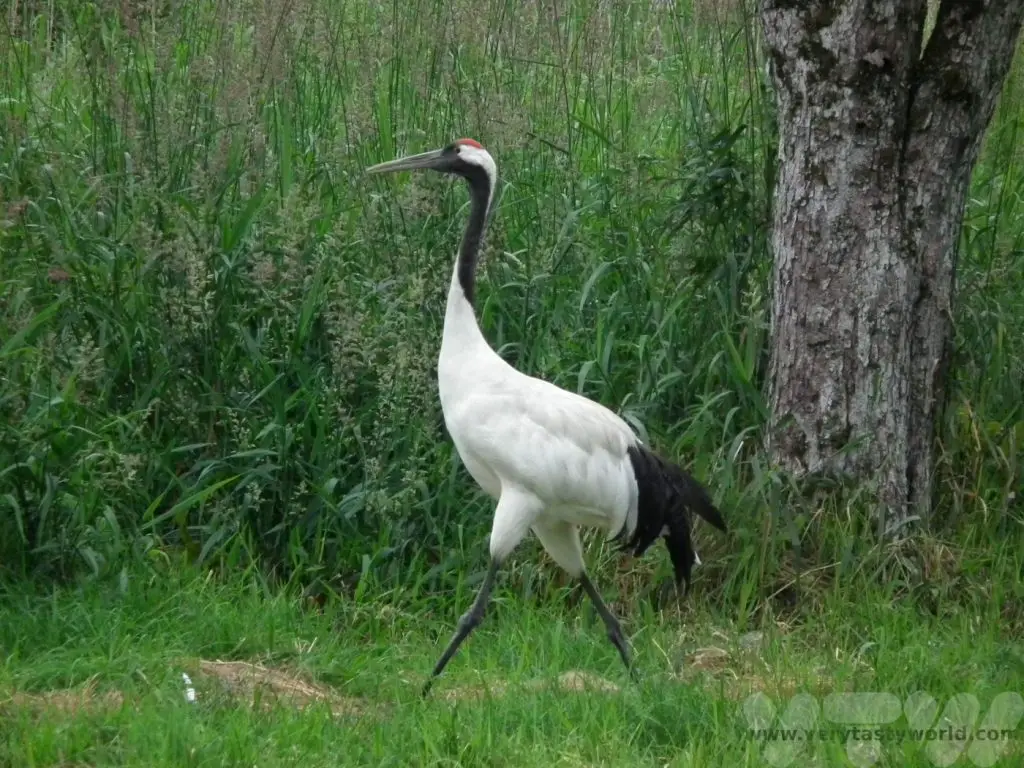
Kyushu – The Southern Island
Nagasaki
Another city famous for its history Nagasaki was the port city through which Japan traded with the outside world during the Tokugawa shogunate between 1639 and 1859 period, when the rest of the country was effectively isolated.
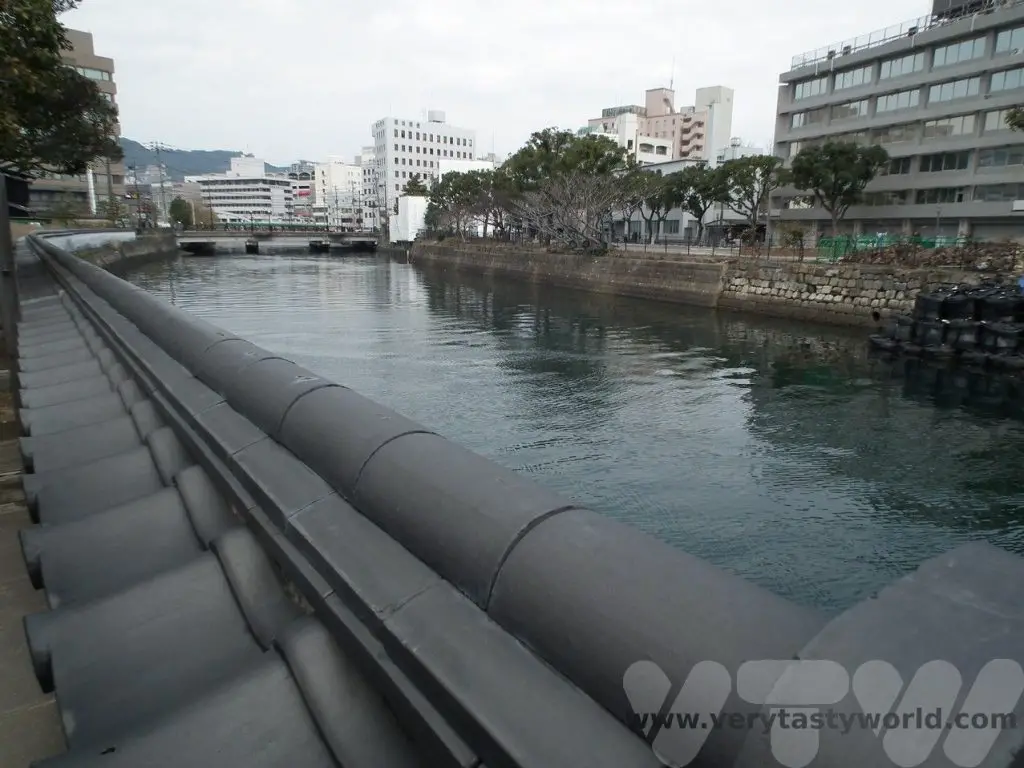
A major shipbuilding centre, it was the target for the second atomic bomb that was dropped on Japan. Like Hiroshima, the city has recovered and also has a museum about the bombing, with a significant emphasis on the call to ban nuclear weapons.
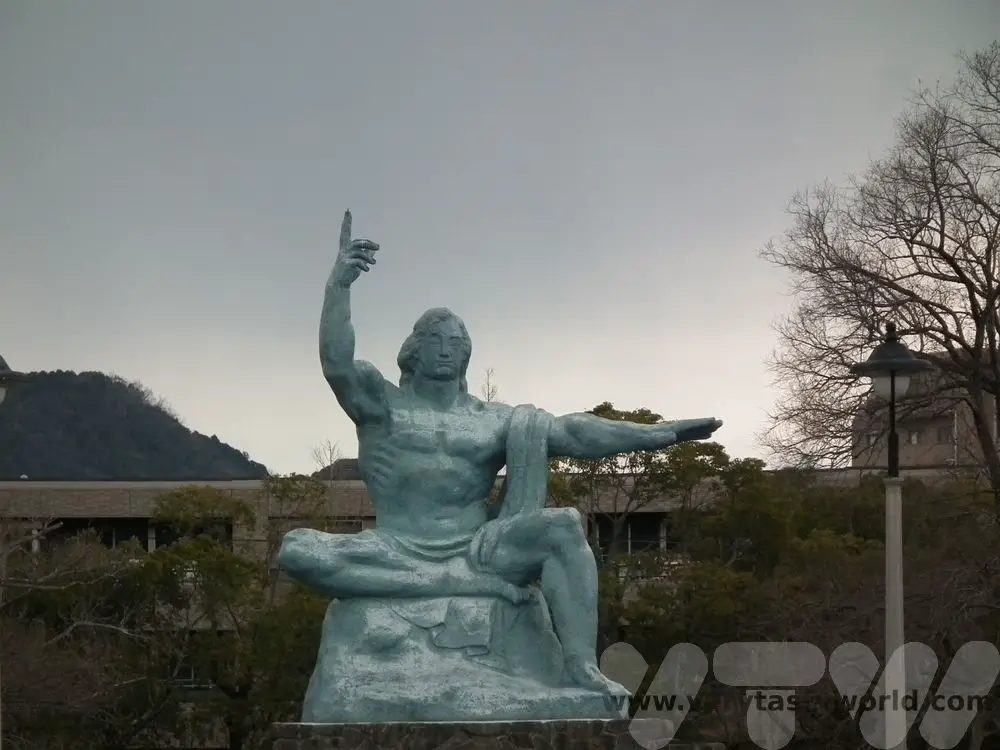
Nagasaki is famous for its champon noodle dish, inspired by Chinese cuisine. The noodles are boiled in the soup and hence acquire some its rich flavour.
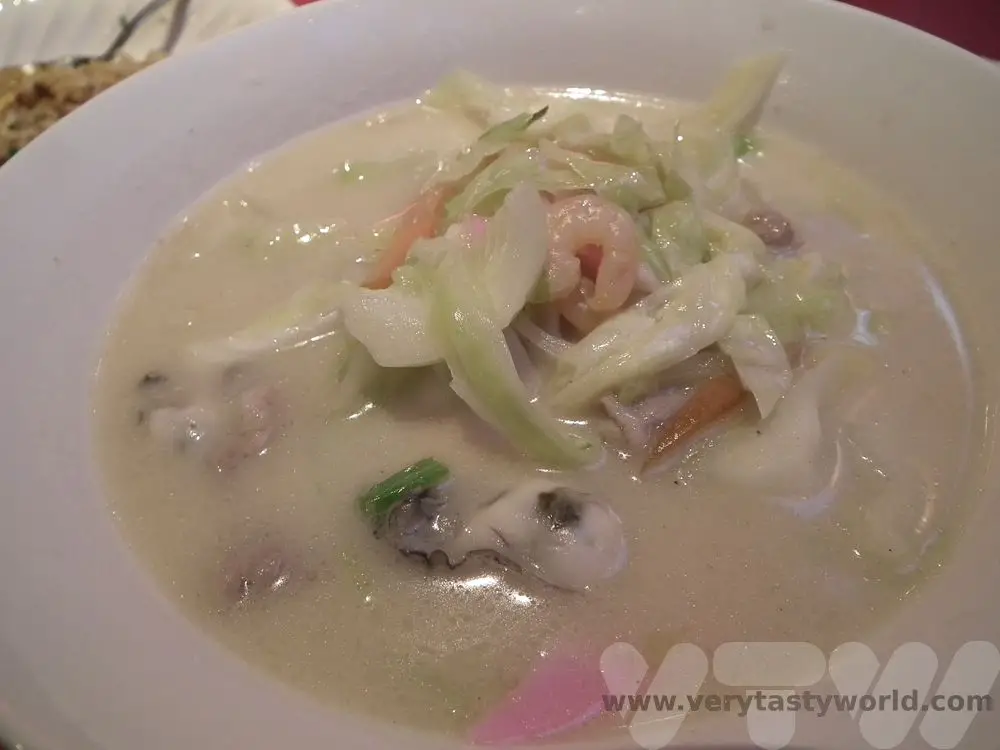
Kagoshima
This is a lively city in the shadow of the very active Sakurajima volcano.
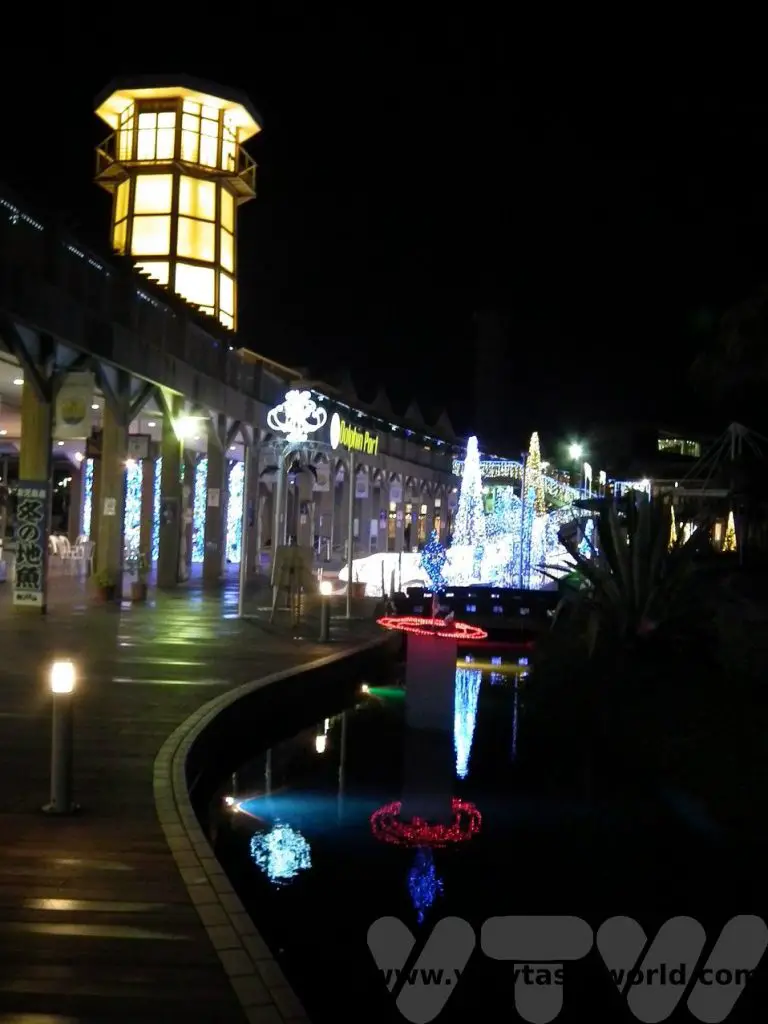
Sakurajima is still very active.
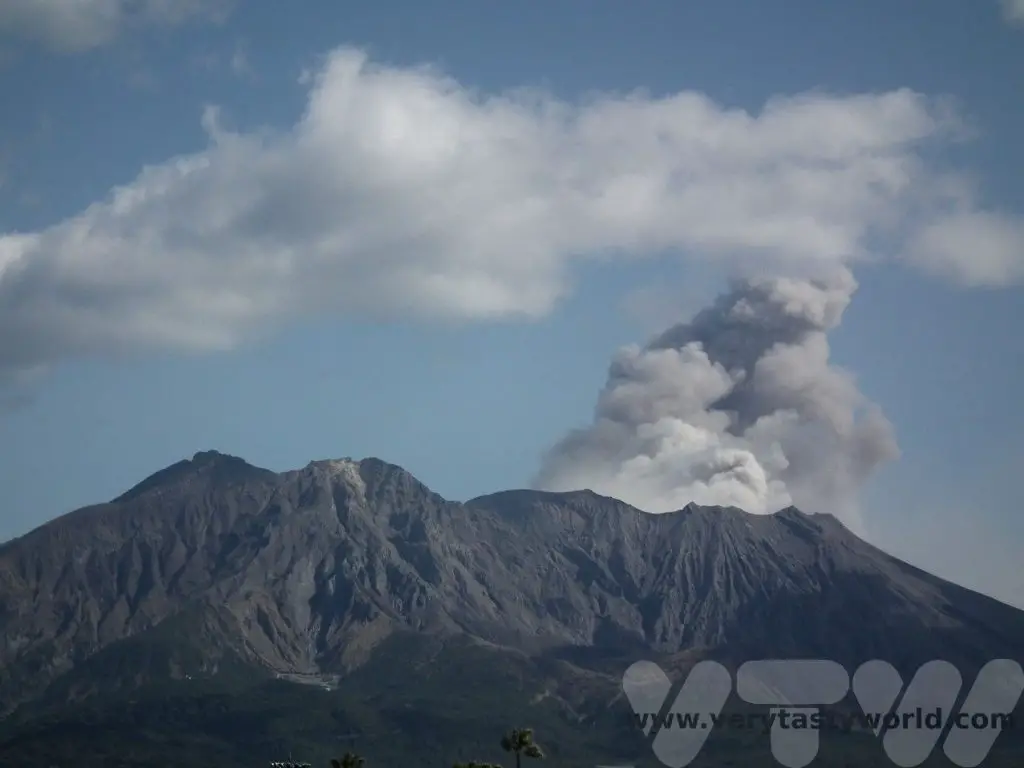
Kagoshima is famous for its kuro buta – black pork, from a specific breed of pig. The tonkotsu ramen, with its creamy umami broth and topped with pork slices, is sublime.
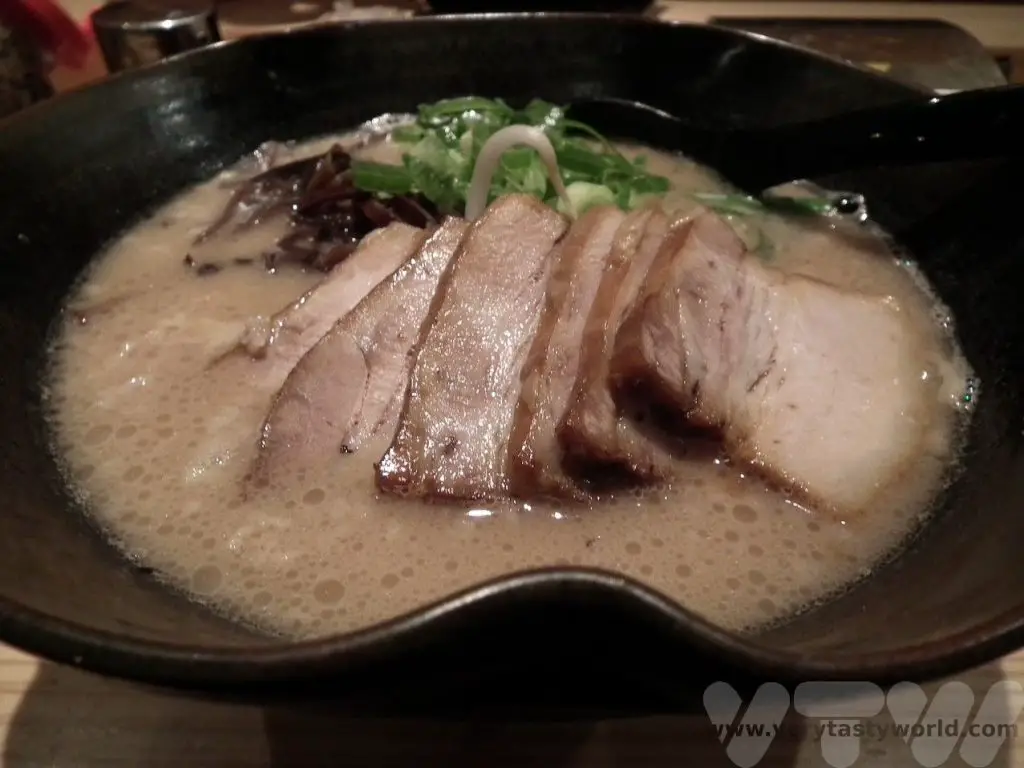
Beppu
Sometimes described as the Las Vegas of Japan (it isn’t really), Beppu is a resort town well known for its onsen hot springs.
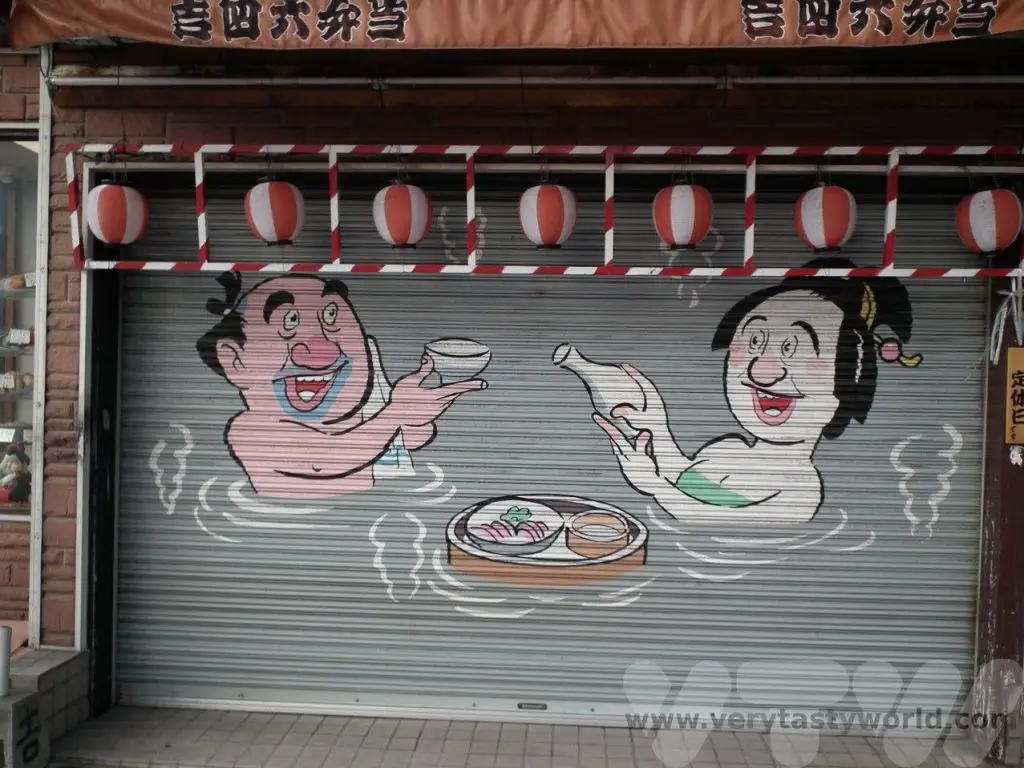
A place to relax and unwind, as well as to visit the “Hells” – thermal hot springs each of which has a specific theme.
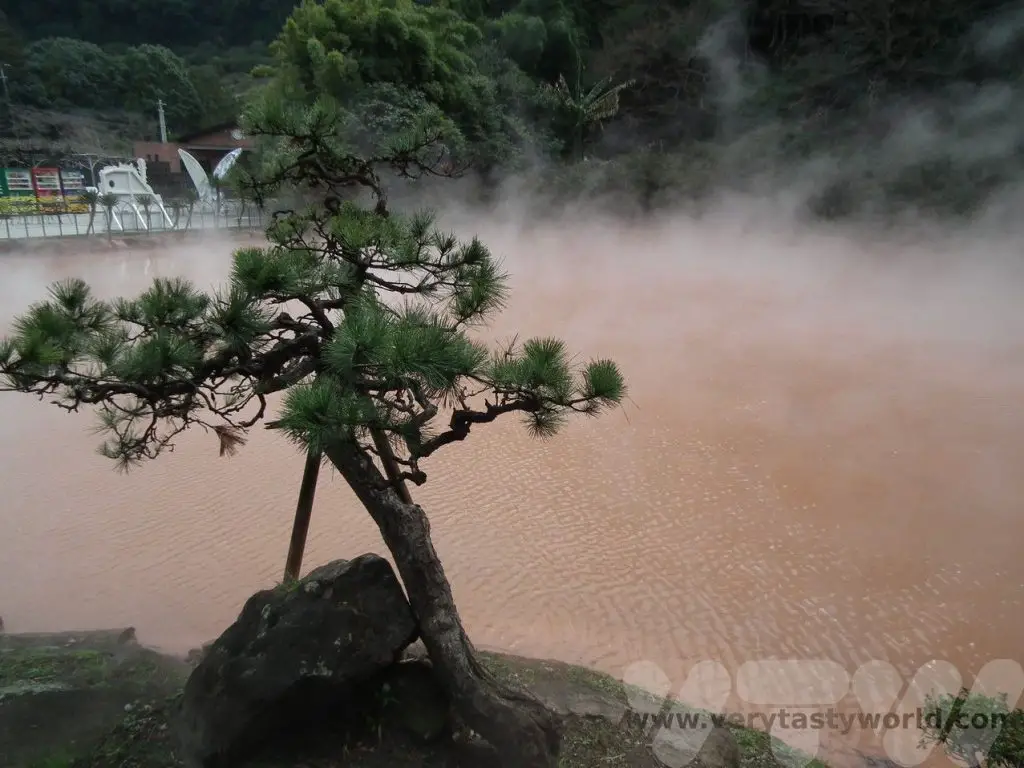
Yakushima
A ferry ride away from Kagoshima this small island is a wonderful place to explore. It was the inspiration for the setting of Hayao Miyazaki’s Princess Mononoke anime.
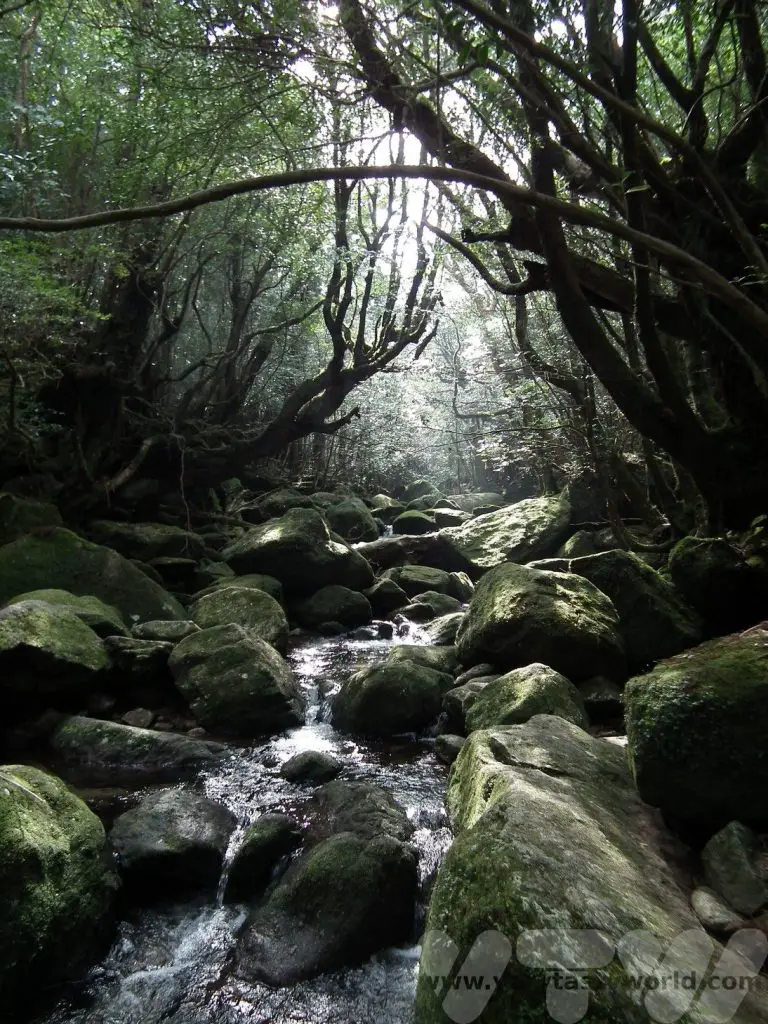
The cuisine on Yakushima is fresh, local seafood and vegetables and is delicious.
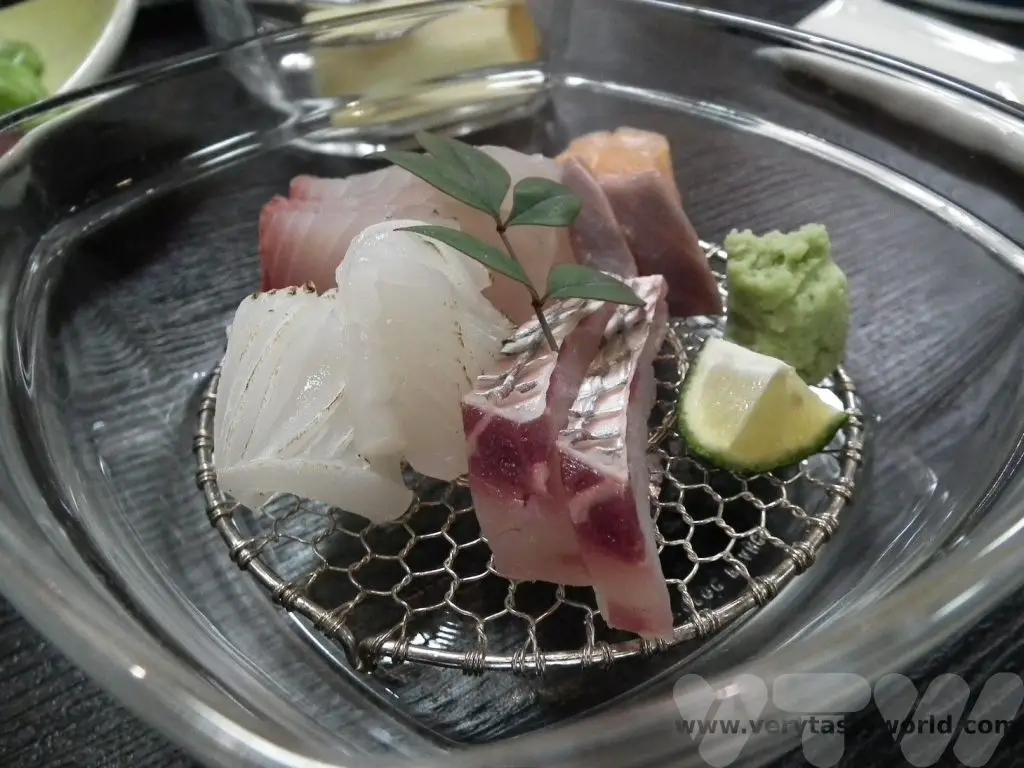
Shikoku
The fourth largest of Japan’s major islands Shikoku offers an opportunity to experience a more rural Japan. It has a pilgrimage route, dedicated to the 9th-century monk Kukai, which comprises 88 Buddhist temples over a 1200km route.
Okinawa
Okinawa is an archipelago south of the main islands and offers a very different view of Japan. It’s sometimes known as the ‘Hawaii of Japan’ and is off the beaten track. It has broad, sandy beaches and crystal clear water as well as a great natural beauty. It also has its own cuisine which offers a variety of dishes that are a contrast to mainland Japanese food.
Japan has so many other amazing places to visit, this post could have gone on for several more pages. Hopefully this has offered a taste of the many wonderful things Japan can offer. We can’t recommend a visit highly enough. We’re already planning our next trip…
Related Posts You May Enjoy

- Recipe: Simmered Shiitake Mushrooms
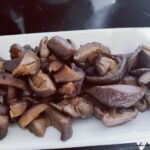
- How to Use Public Transport in Japan

- RECIPE Oyakodon Donburi

- Planning a Trip to Japan
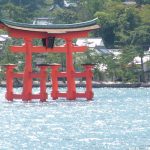
- The Makanai: Cooking for the Maiko House
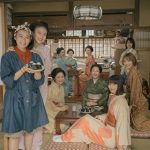
- Setsubun Food – Bean Throwing Day

- The Gassho Farmhouses of Rural Japan
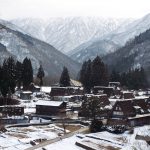
- Recipe: Japanese Simmered Pork Belly – Buta no Kakuni

- RECIPE: How to Make Umeboshi

RECIPE: Biryani Raita Recipe
There are many cuisines around the world that use yoghurt-based dips or sauces to accompany particular dishes. Tzatziki is a Greek dish which incorporates cucumber and herbs into a Greek yoghurt. Salatat Khyar is an Arabic salad which is similar to tzakziki in that it uses cucumber and mint with the yoghurt but can be eaten as a standalone salad. And then there’s raita, often used in Indian cuisine as an accompaniment to ‘cool’ the spiciness of a main dish. This biryani raita recipe is simplicity itself to make and really delicious.
Yogurt is ideal to counteract the heat of chillies in any dish it accompanies. There’s a protein called casein which is found in dairy products. It binds to the active component of chillies which is called capsaicin and is the main cause of the burning sensation in the mouth. The casein helps soothe the burn. If you eat a spicy chilli, a drink of milk will help quash the heat far better than water.
(The combination of chilli and cheese in Bhutan’s national dish is cleverly designed to be spicy but the intense heat is tempered by the cheese.)
Raita uses cucumber but it can also have other vegetables such as onion and carrot, often diced. This dish can easily be adapted to incorporate different vegetables or even spices. If you wanted to add a warm earthiness, chuck in a teaspoon of cumin. Or add a touch of fire with a teaspoon of chilli or paprika. Harissa is a nice addition for a Middle Eastern dish. Similarly, you can vary the herbs – mint is a lovely alternative to the coriander or you can just add both in.
Our biryani raita is fantastically flexible in accompanying so many different types of dish.
Biryani Raita Recipe
Ingredients
3 heaped tbs plain natural yoghurt
2 garlic cloves (use 1 if you’re not so keen on garlic or are planning on kissing someone later on in the day)
Juice of half a lemon
Half a cucumber
2 spring onions (green onions)
Bunch of coriander/cilantro (mint also works really wall, or combine the two)
Pinch of salt. We particularly like crystal salt rather than table salt
Method
Grate the cucumber.
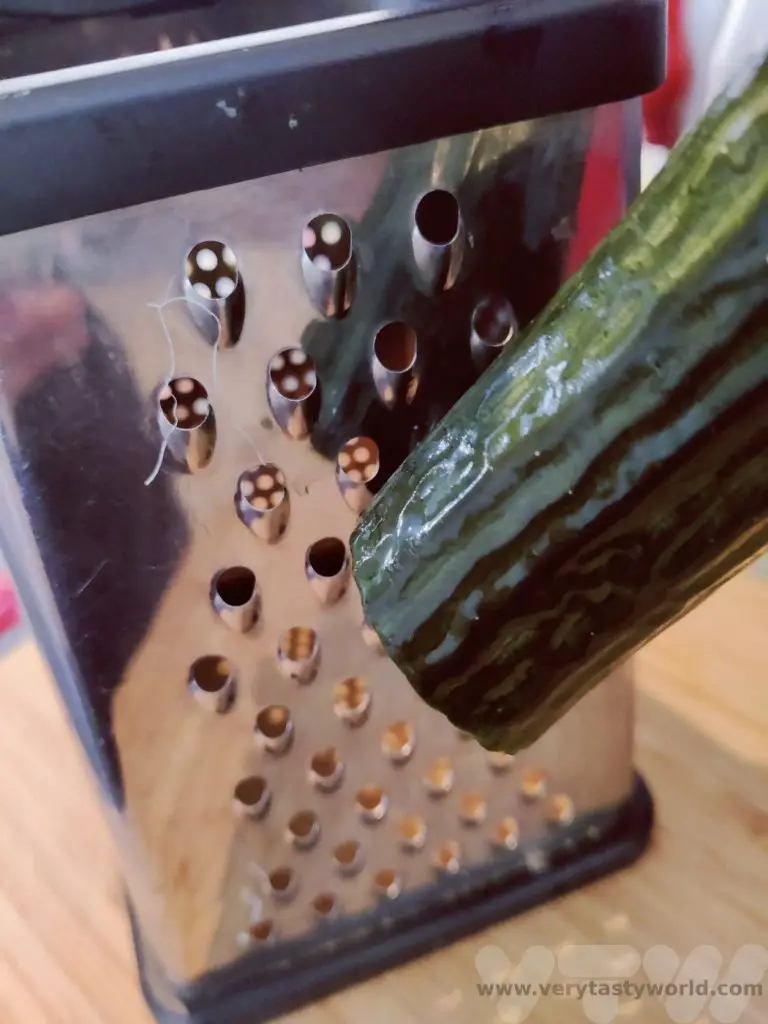
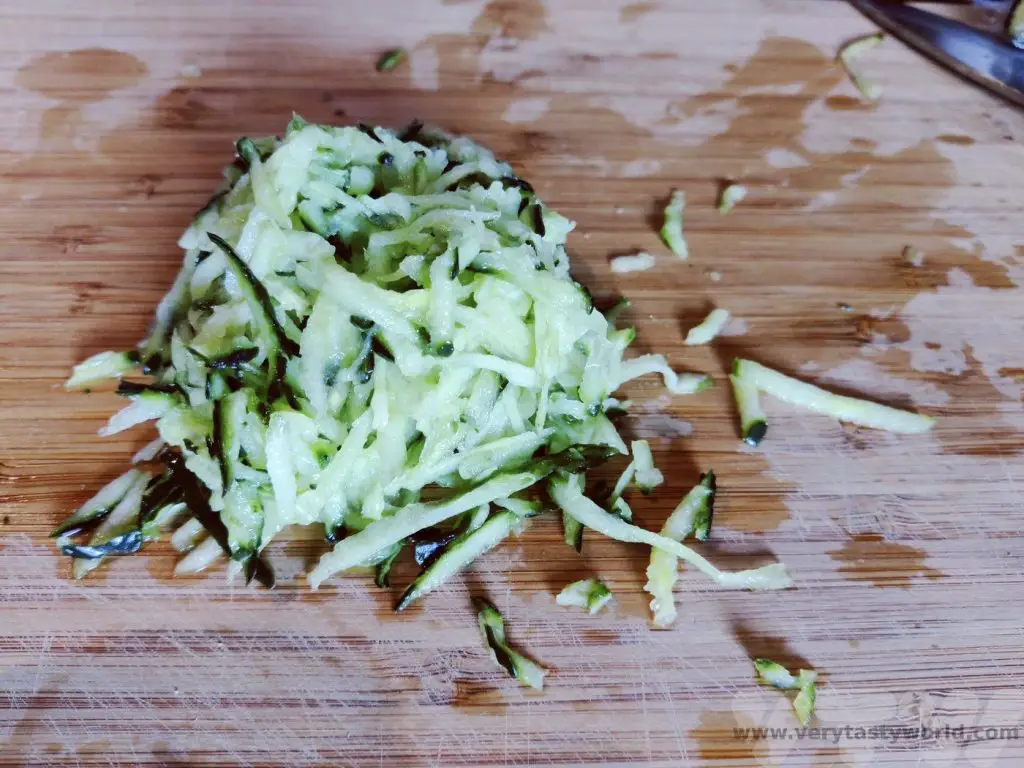
Gather up grated cucumber and squeeze the water out.
If you wish you can wrap the grated cucumber in a tea towel to absorb the rest of the water. It’s important to get as much water out of the cucumber as possible to avoid the raita becoming watery.
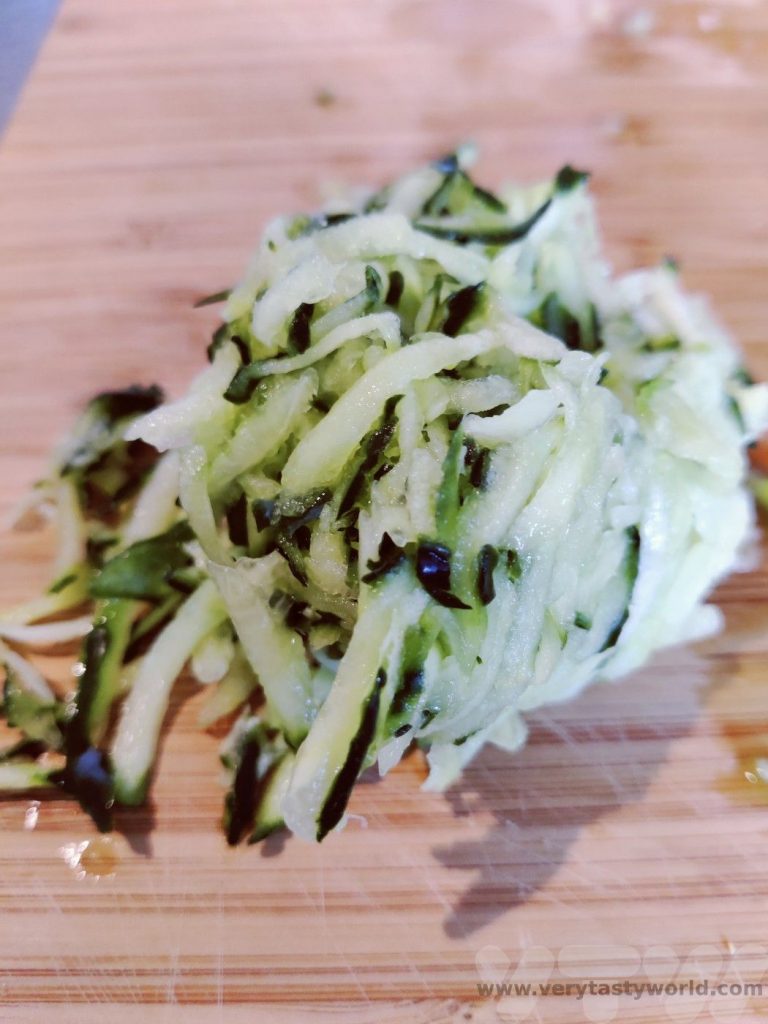
Finely chop the spring onions and coriander.
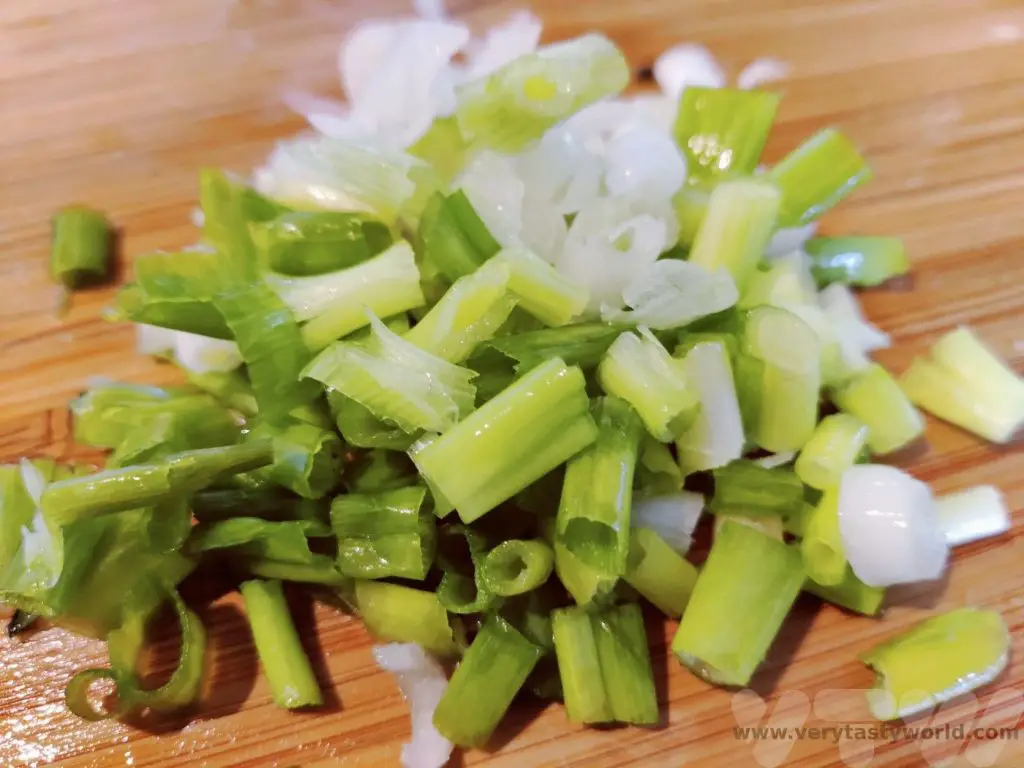
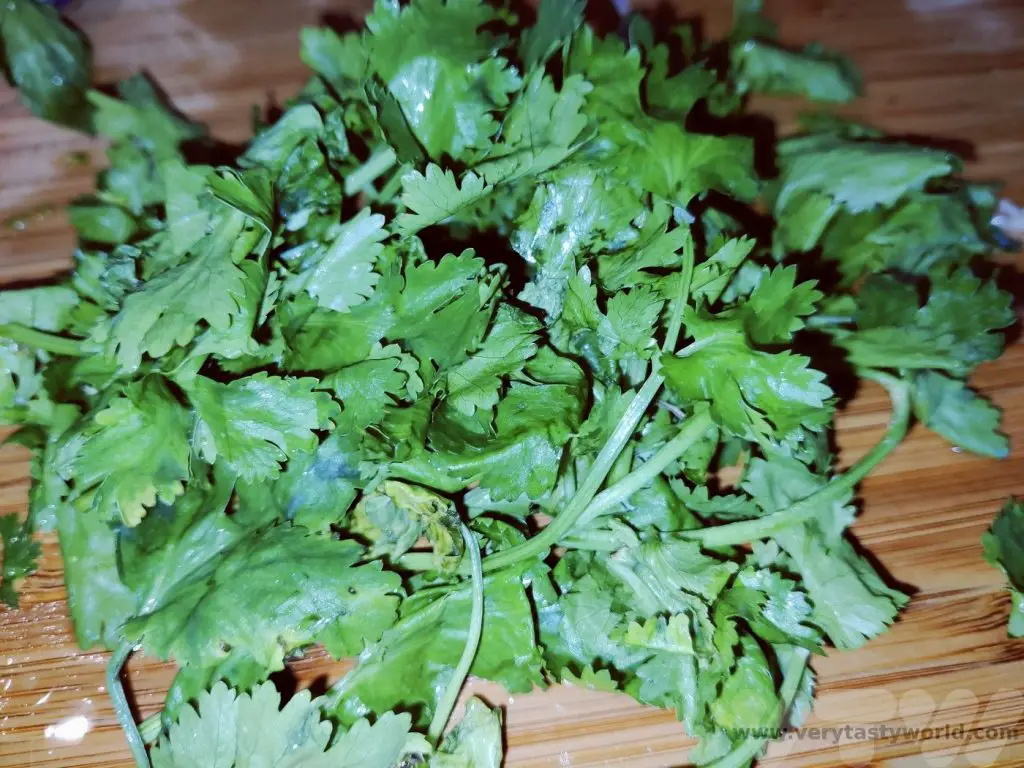
Place yoghurt in a bowl. Add the cucumber, spring onions and coriander.
Grate the garlic into the bowl – we find that a microplane grater is perfect for this. Our you could use a standard garlic press.
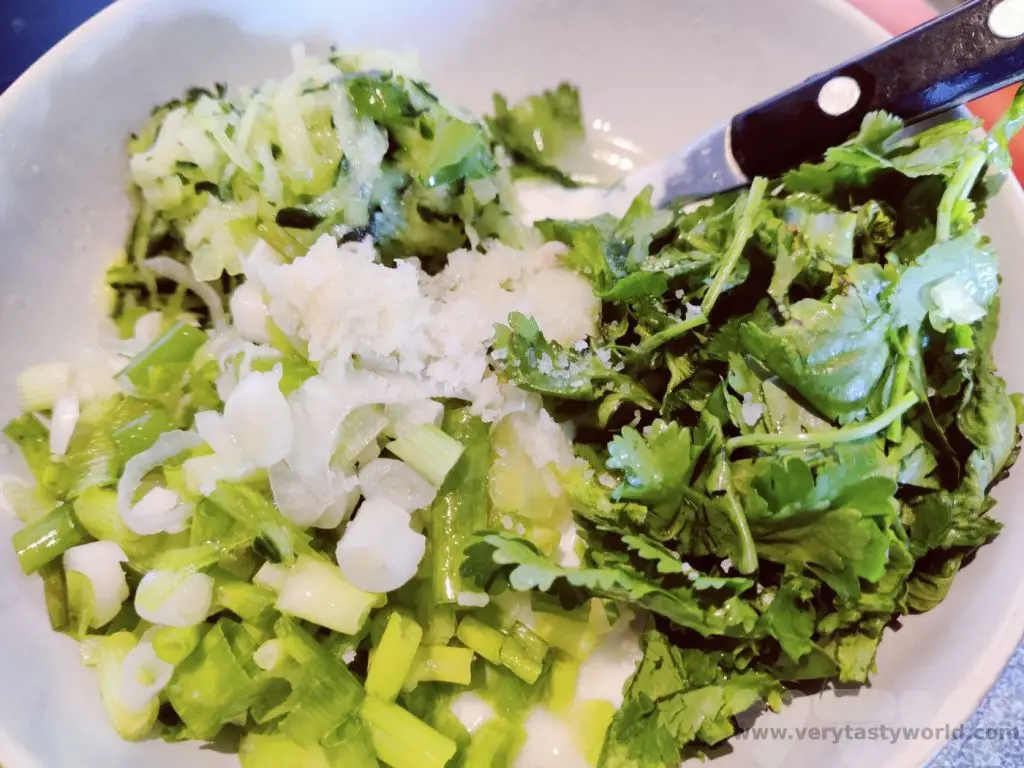
Squeeze the lemon to extract its juice, making sure that none of the pips end up in the mixture, and add the salt.
Mix together.
Ready to serve.
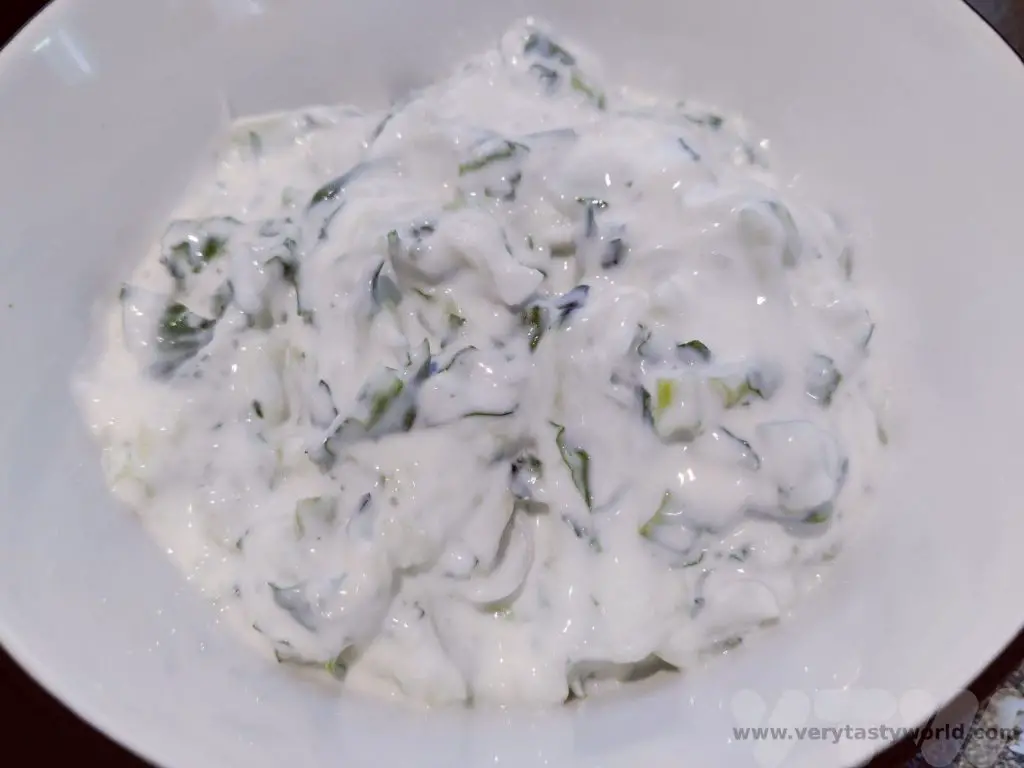
This works brilliantly to accompany a biryani, and cool it down if it’s particularly chilli hot.

Or a delicious dollop as a great accompaniment to felafel in a wrap.
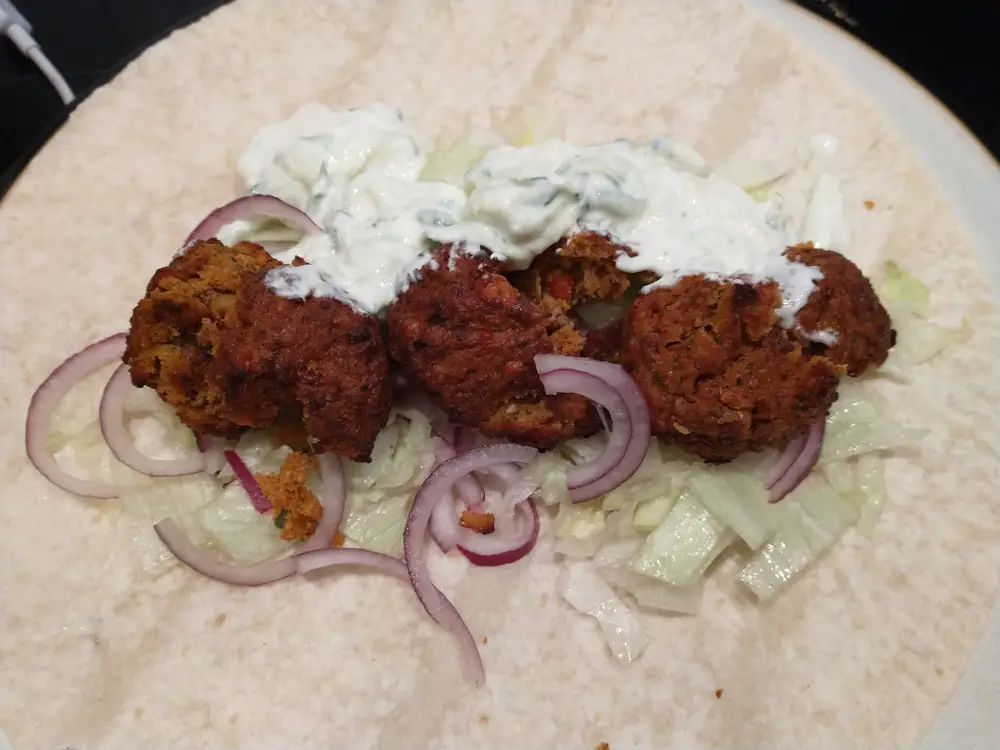
Or to accompany a Middle Eastern mezze. Here with home-made dolma (stuffed vine leaves), baba ganoush (aubergine dip) and tabbouleh (cous cous herb salad).
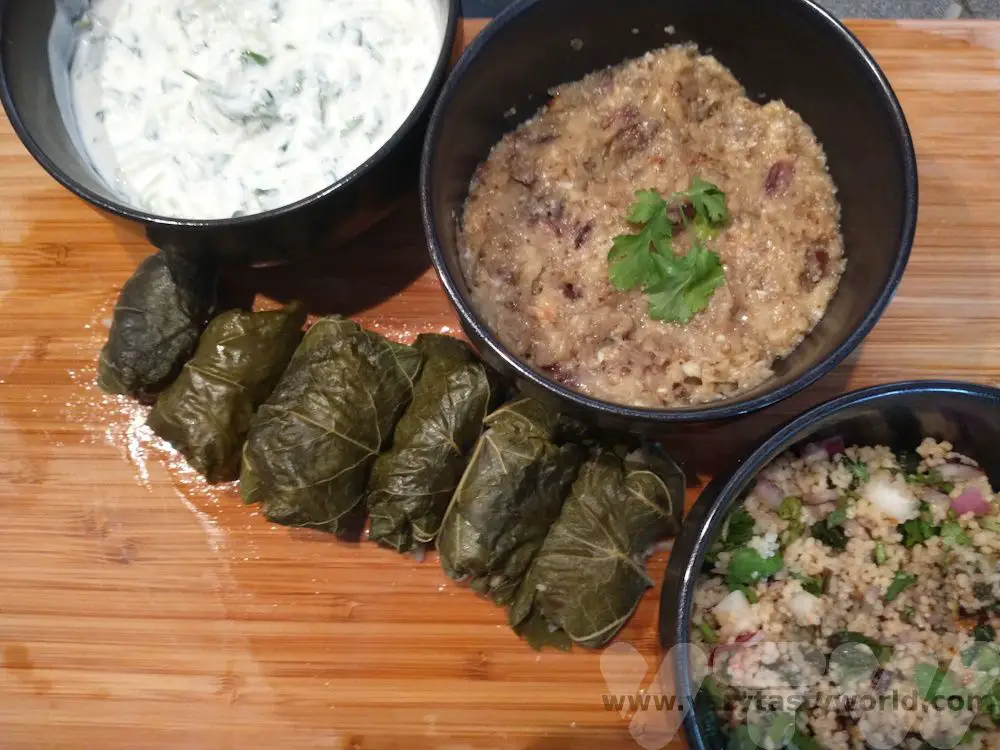
Related Posts You May Enjoy

- RECIPE Oyakodon Donburi
- Zero Waste Recipes Before Your Holiday
- RECIPE: Vegetable Biryani Tamil Nadu Style
- RECIPE: Vegan Wild Garlic Pesto
- Recipe: Venetian Pasta Sauce
- RECIPE: Biryani Raita Recipe
- RECIPE: How to Make Costa Rica’s Gallo Pinto
- Recipe: Japanese Simmered Pork Belly – Buta no Kakuni
- RECIPE: How to Make Umeboshi

The Makanai: Cooking for the Maiko House
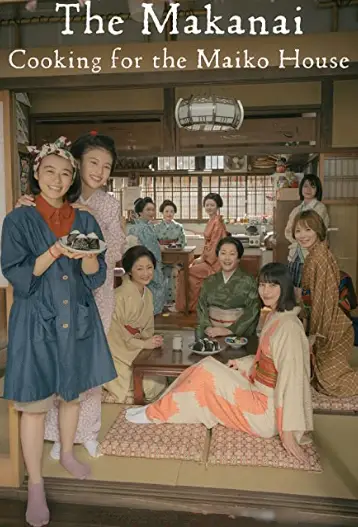
Director: Koreeda Hirokazu(是枝 裕和)
From the manga by Aiko Koyama
Starring: Nana Mori,Natsuki Deguchi,Aju Makita
Cuisine: Japanese
Country (of film origin): Japan
TV Rating: 9/10
Foodie Rating: 9/10
Review: Cuisine and culture combine in an emotional and educational entertainment about Kyoto life, friends, futures and food.
There’s a line in anarchic 80s British TV show The Young Ones when punk student Vivyan, talking about a TV show, yells, “It’s so bloody nice!” Whereas his character despised feelgood TV, you just can’t help falling for the voie de vivre while watching The Makanai, a charming and quite delightful Netflix series. Based on the manga Kiyo in Kyoto: From the Maiko House by Aiko Koyama, the teleplay is written and partly directed by Koreeda Hirokazu, whose Palm d’Or winning film Shoplifters ( 2018) takes a very different perspective on food and society.
Kiyo Nozuki (Nana Mori) and Sumire Herai (Natsuki Deguchi) are two best friends from Aomori prefecture who leave the cold northern region of Japan to become maiko in Kyoto. Maiko are apprentice geiko (the Kyoto term for geisha) and the sixteen year olds will join the Saka establishment and train in the arts of traditional singing and dancing. This is a whole new world for the pair as they need to learn the etiquette and the correct way to address their superiors and other maiko in their house – the geiko are ‘mother’ and their maiko companions are referred to as ‘sister’. It’s hard work and the daily routines preparing for the coveted roles are tough as they train and practice new skills.
In fact, it’s so tough that Kiyo just can not meet the requirements of the training and the mothers sadly inform her that she will not become a maiko. However, they recognise that she is a hard worker and a great cook, so Kiyo stays in the maiko house to become a worthwhile addition to the business as a makanai. It is her job to purchase all the food and prepare delicious meals for the household. So she dedicates herself to getting up early in the morning to embark on shopping trips to familiarise herself with market vendors so that she can obtain the necessary ingredients.
It is fortunate that her grandmother taught her to cook because the plethora of delicious dishes that Kiyo can produce is awesome in its variety and each meal looks utterly delicious. Fortunate for foodie viewers the creation of these dishes is shown in vignettes which will not only have your mouth watering, they will provide lots of inspiration for future recipes.
And so we follow Sumire’s journey as she becomes a talented apprentice with huge potential to progress to becoming a respected maiko and Kiyo, who could have been immensely jealous of her friend’s success, is unwaveringly supportive and genuinely happy in her new role.
Traditional events, integral to Kyoto culture and cuisine, are depicted through the whole series. Perhaps the most significant event occurs in episode seven by which time Kiyo is fully established as the makanai. The geiko and maiko ladies start the new year by attending a formal ceremony. But Sumire falls ill and loses her appetite, and it is down to Kiyo to cook up some comfort food. She is advised to produce a traditional Kyoto based remedy – udon noodles in broth – which requires distinct ingredients and implementation that the exceptional cook must learn to create.
Her regular market proprietors advise on the best venues in obscure parts of town to get the required ingredients to make an exemplary dashi (broth). A prodigious bonito flake creator marks the beginning of her quest and an exemplary kombu (kelp) nori (seaweed) producer introduces her to perfectly dried sheets of seaweed. This is as much a learning experience for the viewer as it is for our protagonist, although we can but dream of such delicacies.
The Makanai: Cooking for the Maiko House is a series unlike anything you have ever seen before. It is so full of companionship and understanding you genuinely take delight in the niceness portrayed; it’s as sweet as some of the immaculate desserts that Kiyo creates. When a series makes you want to have a delicately shaped egg sandwich and deep fry the crusts for an additional snacky surprise you know you have seen something different and delightful.
This is also a show about food and cookery in that the creation of the meals are an important element the story. And therein lies the show’s only real problem – you want there to be an ingredients list before each episode so you can make the dish afterwards. We’re definitely going to try some of the goodies that the maiko enjoyed. Be warned though – make sure you eat before watching or face inevitable pangs of hunger…
Related Posts You May Enjoy
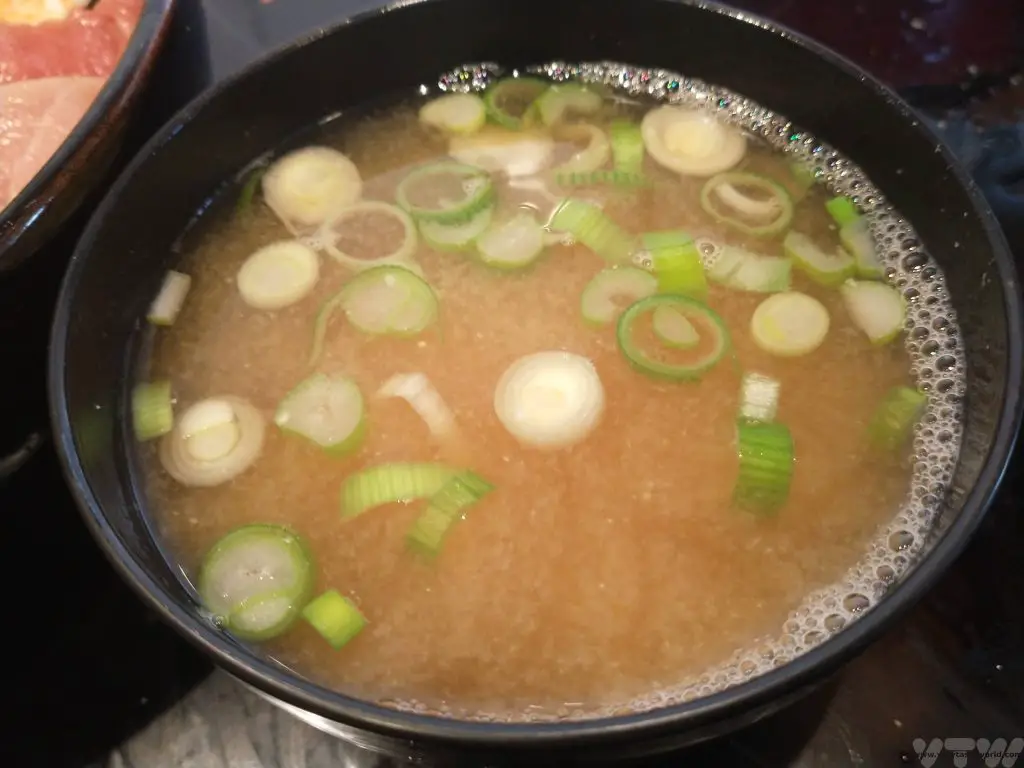
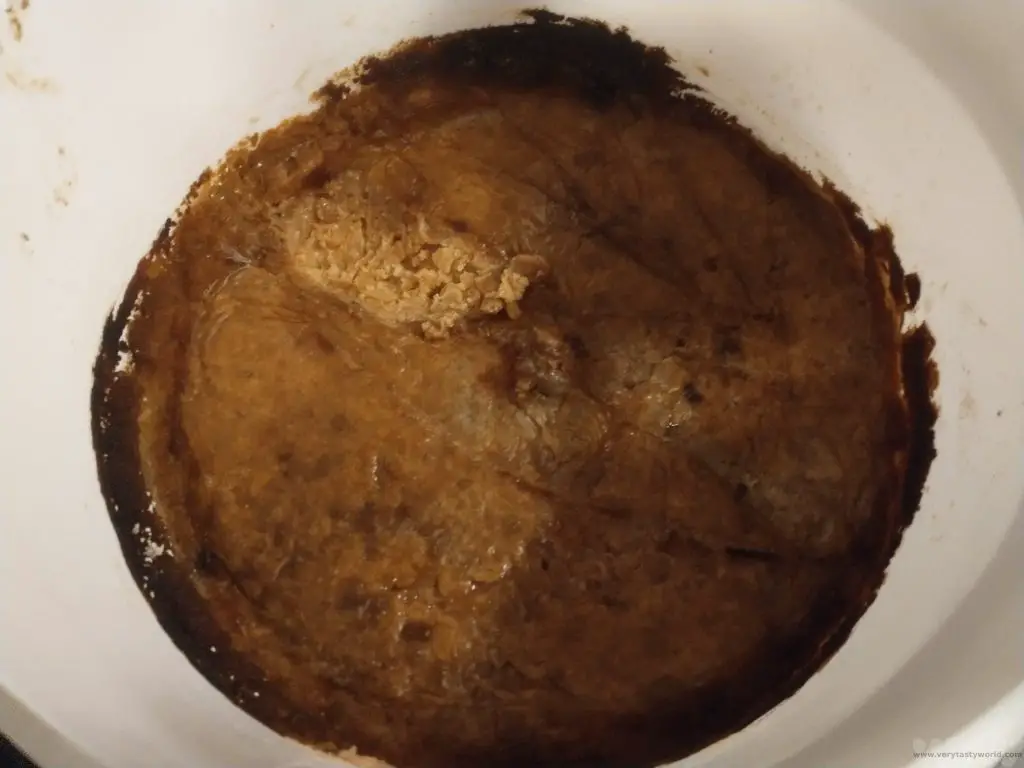

- The Makanai: Cooking for the Maiko House
- Film Review: Bao (2018)
- Film Review: Jadoo (Kings of Curry 2013)
- Film Review: Ramen Girl (2008)
- Film Review: Nina’s Heavenly Delights (2006)
- Film Review: Chocolat (2000)

- RECIPE Oyakodon Donburi
- Zero Waste Recipes Before Your Holiday
- RECIPE: Vegetable Biryani Tamil Nadu Style
- RECIPE: Vegan Wild Garlic Pesto
- Recipe: Venetian Pasta Sauce
- RECIPE: Biryani Raita Recipe
- RECIPE: How to Make Costa Rica’s Gallo Pinto
- Recipe: Japanese Simmered Pork Belly – Buta no Kakuni
- RECIPE: How to Make Umeboshi
A Visit to Bhutan’s Punakha Dzong
Punakha Dzong is both the second oldest and second largest dzong in Bhutan and is of huge historic and cultural importance to the Bhutanese people. It was the site of the former capital of Bhutan before the administrative centre moved to Thimphu in 1955. It is the location for one of the many festivals in Bhutan that are held throughout the year.
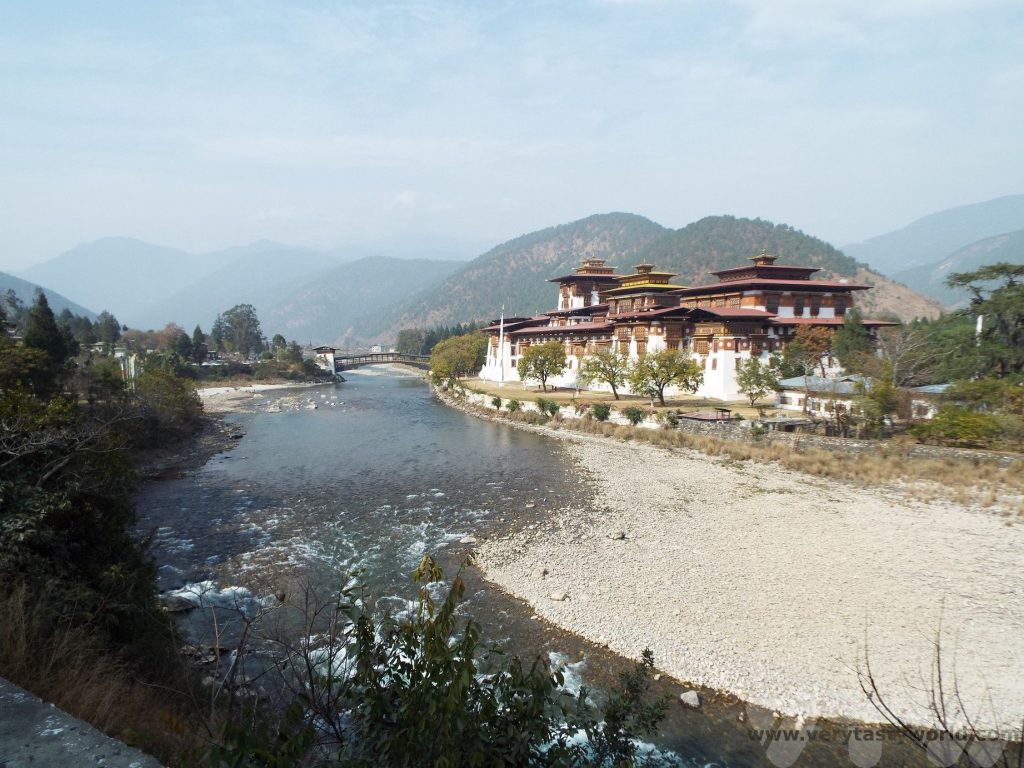
Getting to Punakha
When travelling in Bhutan independent travel is not encouraged and the government set a minimum daily price for visitors. When we visited there was a high season and low season and prices varied accordingly. The costs included transportation, accommodation, a driver and guide, and meals. Some of the money raised is used by the government as part of a sustainable development fund for education and healthcare for the Bhutanese people.
However, since Bhutan opened up following the pandemic, the minimum price has increased significantly, and the tourism fee is charged on top of the travelling expenses.
We were shown this amazing country by our delightful guide Dawa and driver-extraordinaire Tring. Punakha is located east of Bhutan’s capital and it takes around three hours to drive from Thimphu.
One thing that you get used to about driving through Bhutan is that the roads are rarely straight – they will wind their way up the mountain passes through multiple hairpin bends and then wind their way down. It’s a lovely way to travel although we were told that some visitors can occasionally suffer a degree of travel sickness.
On the way we crossed the Dochula Pass, at an altitude of 3100m, which offered wonderful views of the surrounding mountains.
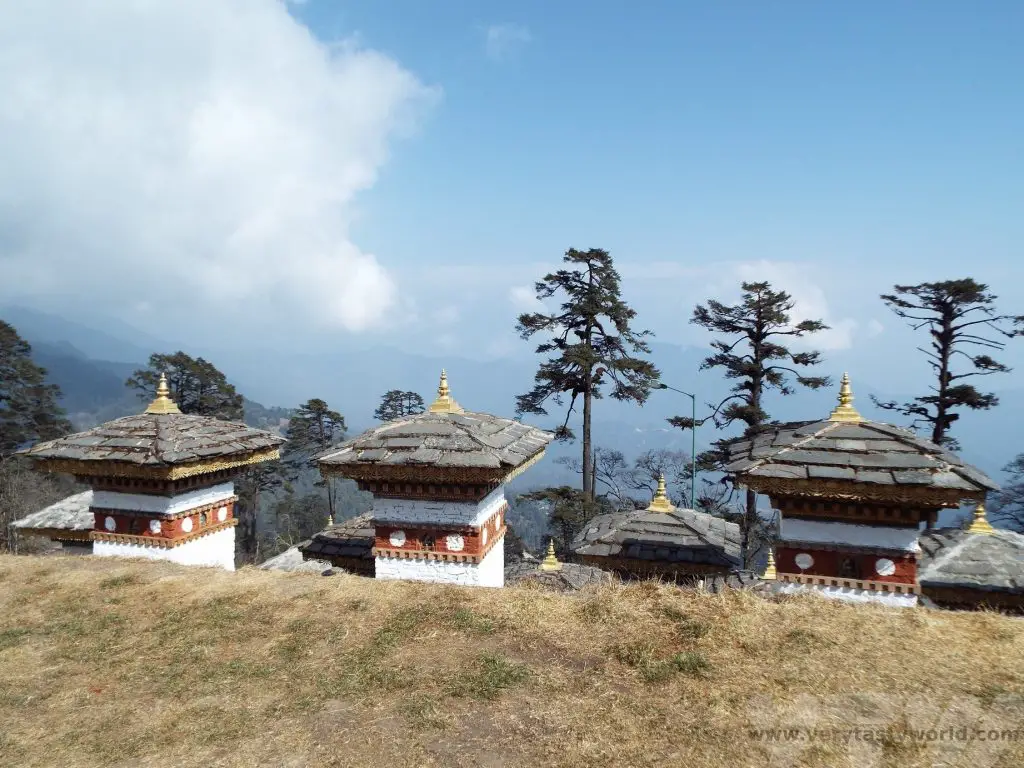
The pass is noted for the 108 Druk Wangyal Khang Zhang Chortens (also known as stupas) which are located on a hill beside the road. They are a memorial to Bhutanese soldiers killed in a battle between Bhutan and Assam insurgents in 2003.
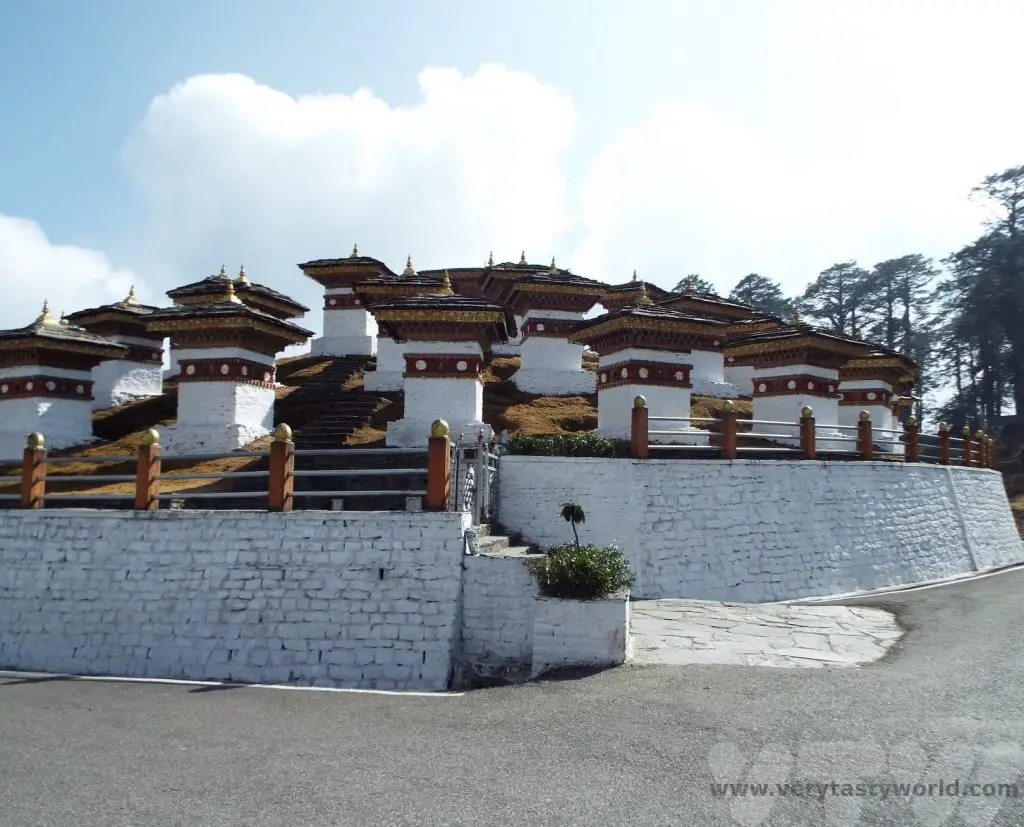
Visiting Punakha Dzong
Punakha Dzong is located at the confluence of the crystal-clear Pho Chu and Mo Chu rivers, respectively the male and female rivers, which join to form the Puna Tsang chu or Sankosh river. A dzong is a fortified monastery and its architecture is typical of this region.
One of the lovely things about Bhutan is that the country has a happiness index, created by the 4th King of Bhutan, who declared that ‘Gross National Happiness is more important than Gross Domestic Product.’ He was absolutely right. Punakha Dzong has another name: Pungthang Dewa chhenbi Phodrang which means ‘palace of great happiness’.
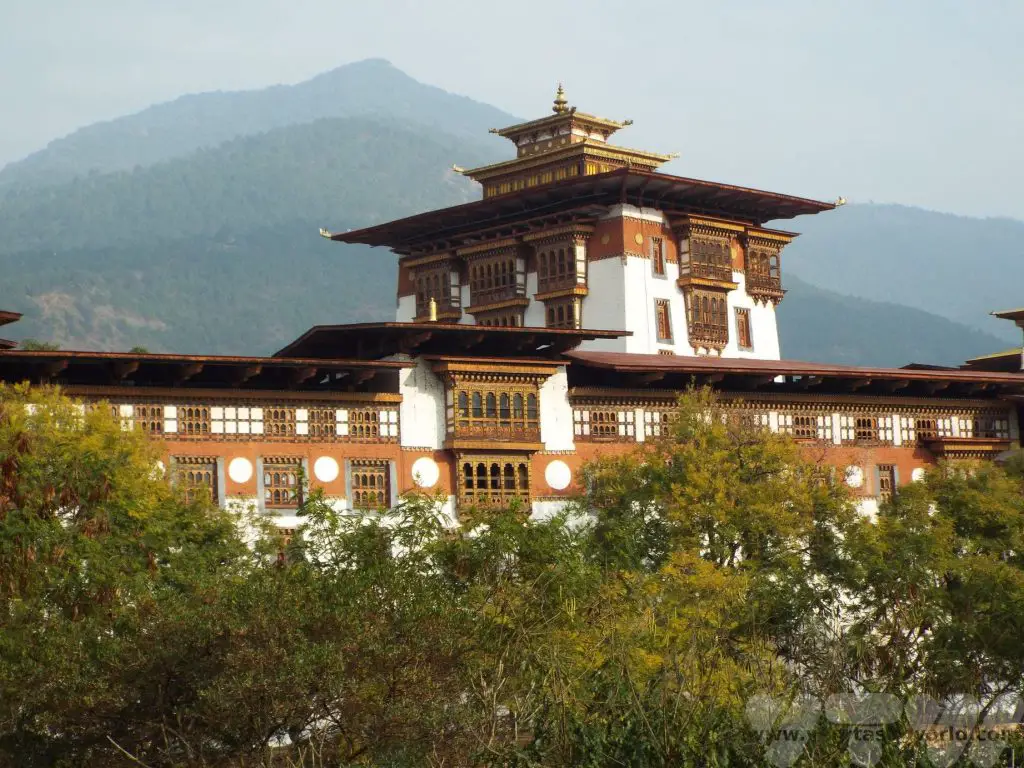
The dzhong was built in 1637-38, conceived by Ngawang Namgyal, 1st Zhabdrung Rinpoche, the Buddhist lama who unified Bhutan as a nation state. There is a legend that the architect had a vision, inspired by Zhabdrung, which encouraged him to design and construct the building.
The main central tower, the utse, is a hugely impressive piece of architecture. It is a fortress as much as monastery and as such has defensive walls all around. The entrance is defined by a very steep staircase and a huge wooden door. The interior is filled with beautiful murals depicting the life of Buddha as well as three large gilded statues – of the Buddha, Ngawang Namgyal and Guru Rinpoche, the most important saint in Bhutan, credited with bringing Buddhism to the country. He is also known as Padmasambhava, which means ‘born from lotus flower.’
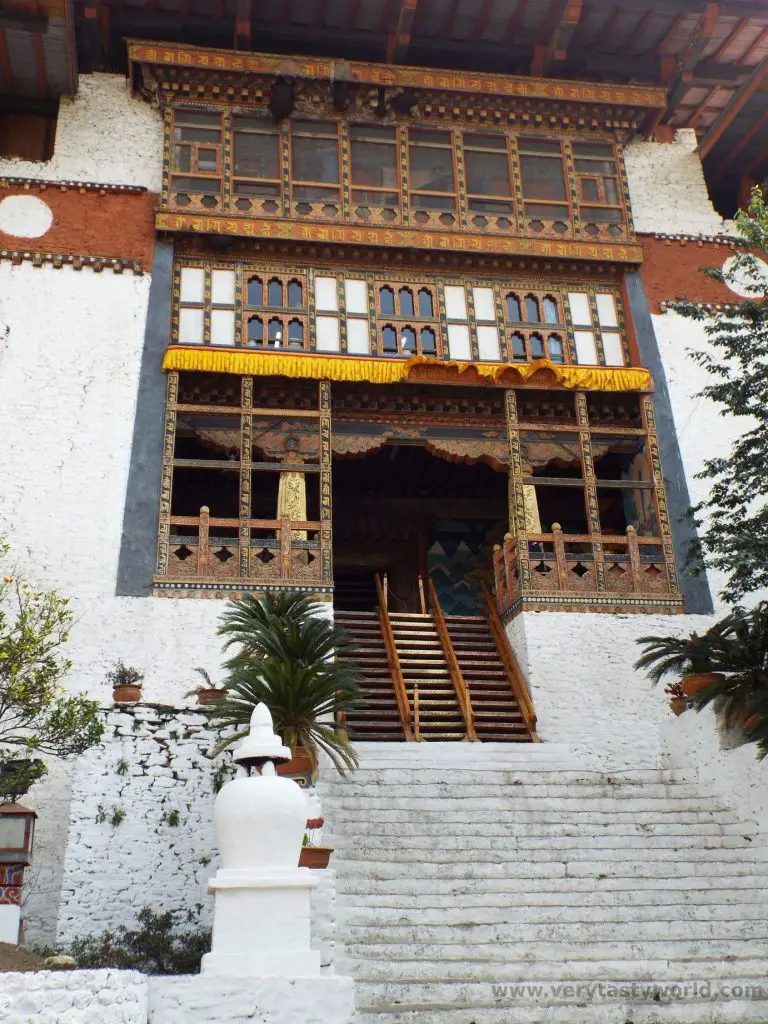
There are three courtyards within the dzhong, known as dochey. and these are surrounded by administrative offices and a bodhi tree, a sacred fig, which is hugely revered in Buddhism.
The last courtyard is home to the Nag Yul Bum Temple. National treasures such as the embalmed body of Zhabdrung and the original Kanjur, the holy book, are stored here. No one is allowed to enter besides the king and the chief abbot.
The dzhong also has a covered wooden bridge which crosses the clear blue waters of the Mo Chu. The original bridge was built in the 17th century but was destroyed during a flash flood in the 1950s. A replacement was completed in 2008.
When visiting monasteries in Bhutan conservative dress should be worn. We were advised that we should wear long sleeves when entering temples. If the weather is warm it’s fine to put on a light jacket (we used our light raincoats). Also, photography is usually forbidden inside temples and it’s important to respect this.
Punakha Festival and the King’s Birthday
Each year the Punakha festival is held in February or March, depending on Bhutan’s lunar calendar. It lasts five days. There are all sorts of displays throughout the festival. Punakha Drubchen celebrates the Bhutanese victory of the Tibetans, who invaded of Bhutan in 1639, with dramatisations and re-enactments of the battle. In 2005, Punakha Tshechu was introduced and this focuses on traditional Buddhist teachings. Folk dancing is an important part of the festivals. Everyone dresses up in their finest traditional clothes. Men wear a gho, a knee-length tunic and women wear a long ankle-length dress called a kira.
We just missed the festival dates but were lucky that the timing of our visit enabled us to join the festivities for the king’s birthday, a three day celebration for Jigme Khesar Namgyel Wangchuck, the fifth and current Druk Gyalpo. (We were doubly lucky because we later travelled into Nepal, where we joined in celebrations for the Hindu festival of Holi.) Even though we had arrived quite early, the festival was well under way. There was plenty of dancing…
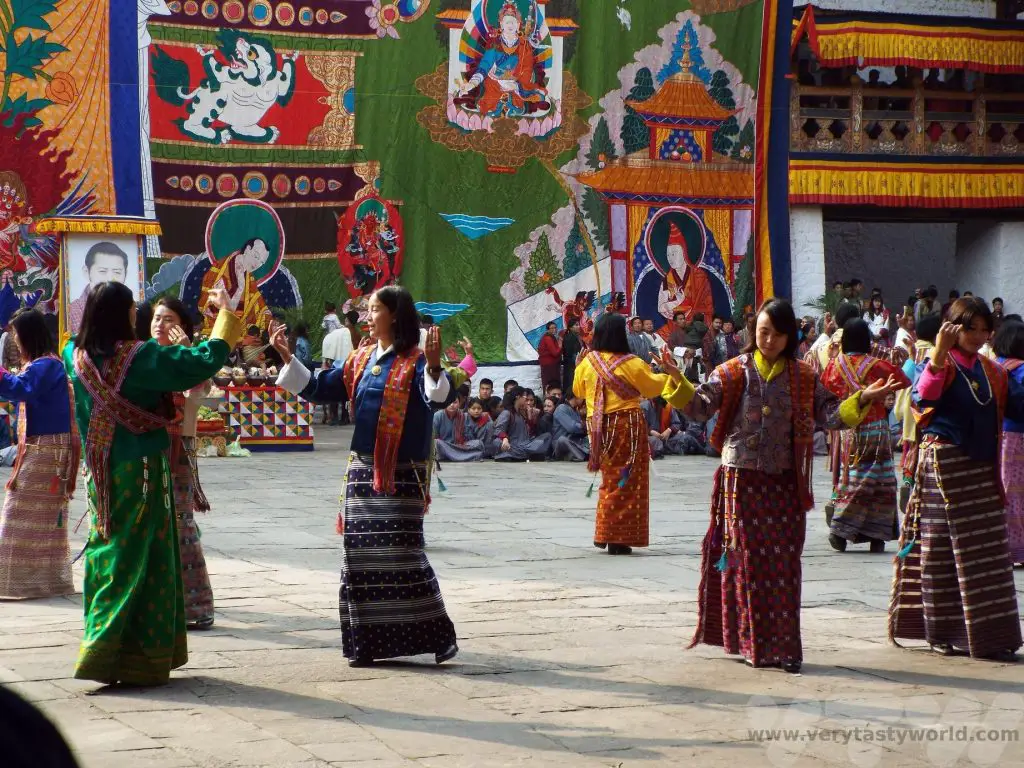
…formal…
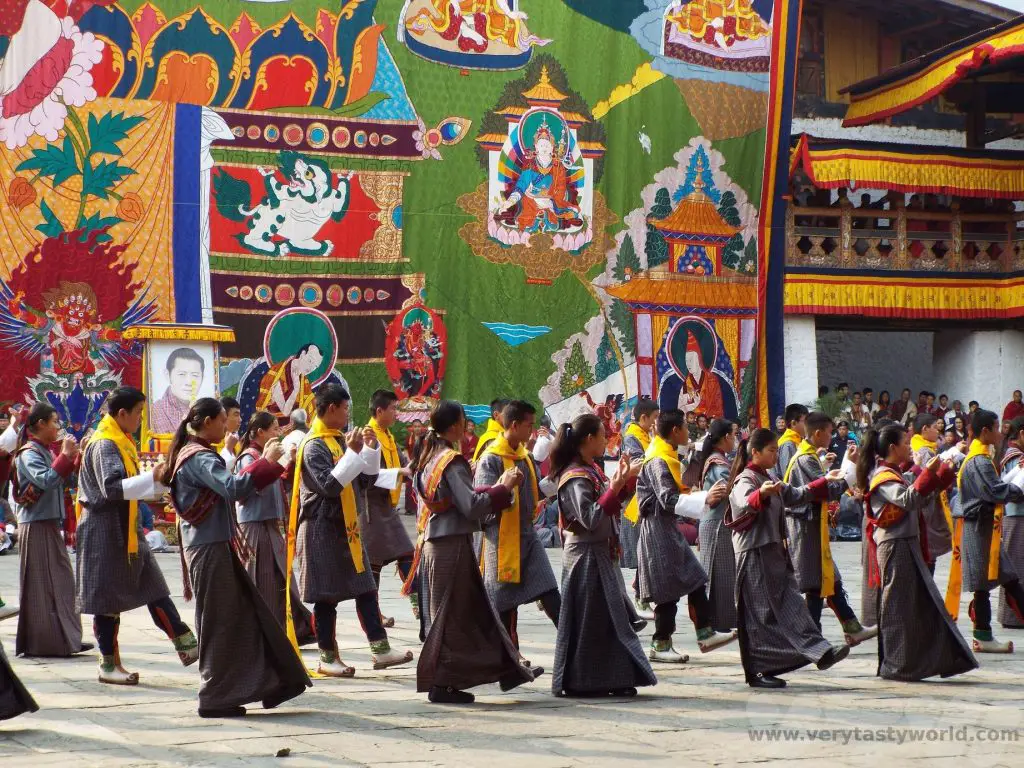
… and informal.
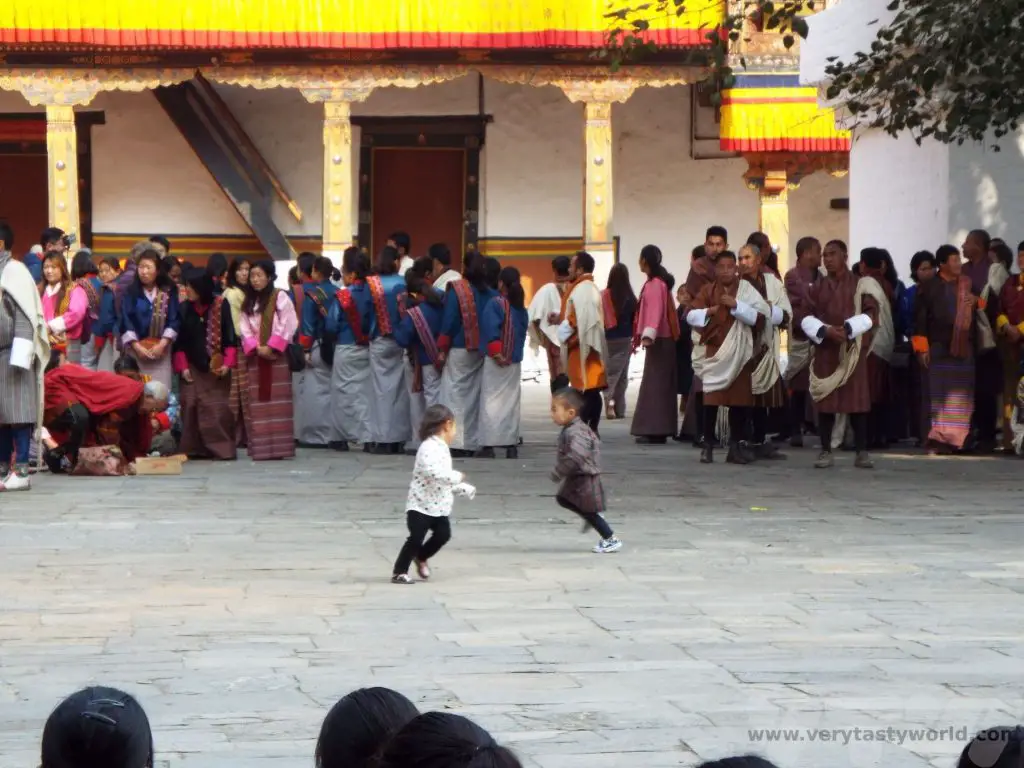
We watched the dancing from underneath the bodhi tree. As part of the celebration an enormous tapestry, known as a thongdrol, is unfurled. It is the most beautiful and colourful tapestry, taking up the side of a whole building within the complex. You can see a portrait of the king at the base of the tapestry. Respect for the king is enormous in Bhutan and his image can be found in most people’s homes.
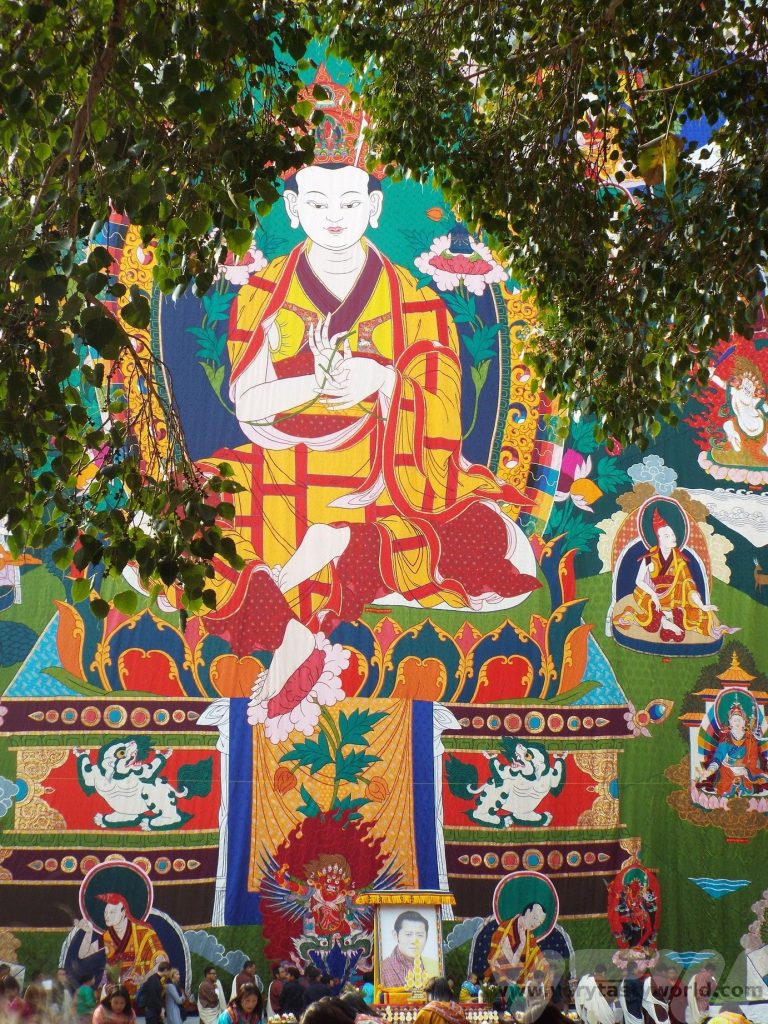
Inside the temple complex there were further celebrations with masked dances performed by the monks.
Above all else, it was a happy festival. Everybody welcomed us. We got chatting to some of the local ladies – they were very keen to practice their English (which was excellent) and we talked about the traditions in our countries.
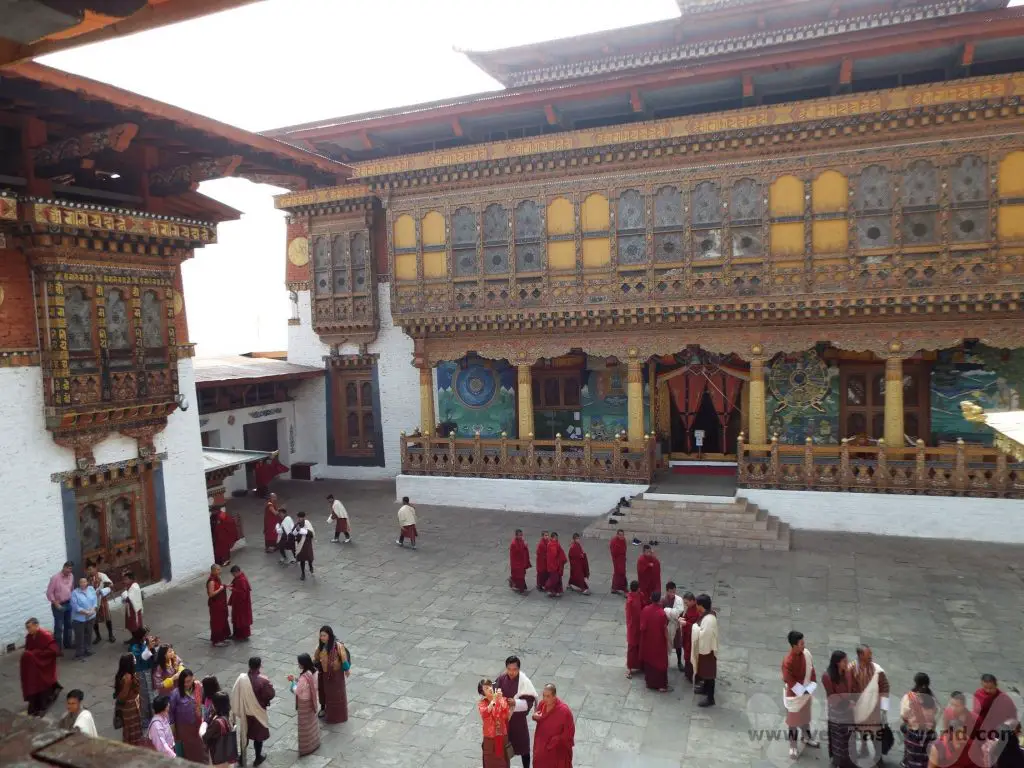
Other Things to See in the Area
Exploring the Rivers and Suspension Bridge
This is the longest suspension bridge in Bhutan and it crosses the Po Chu river, linking the Dzong to Shengana, Samdingkha, and Wangkha.
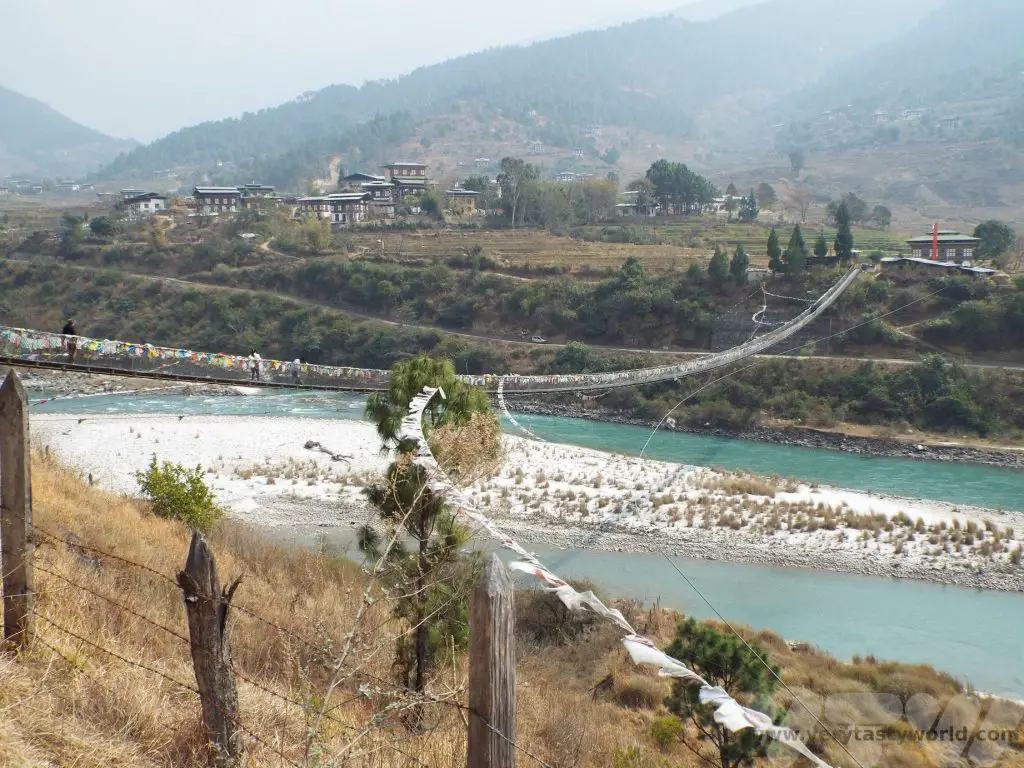
It’s 160m long and is emblazoned with prayer flags that wave vigorously in the breeze.
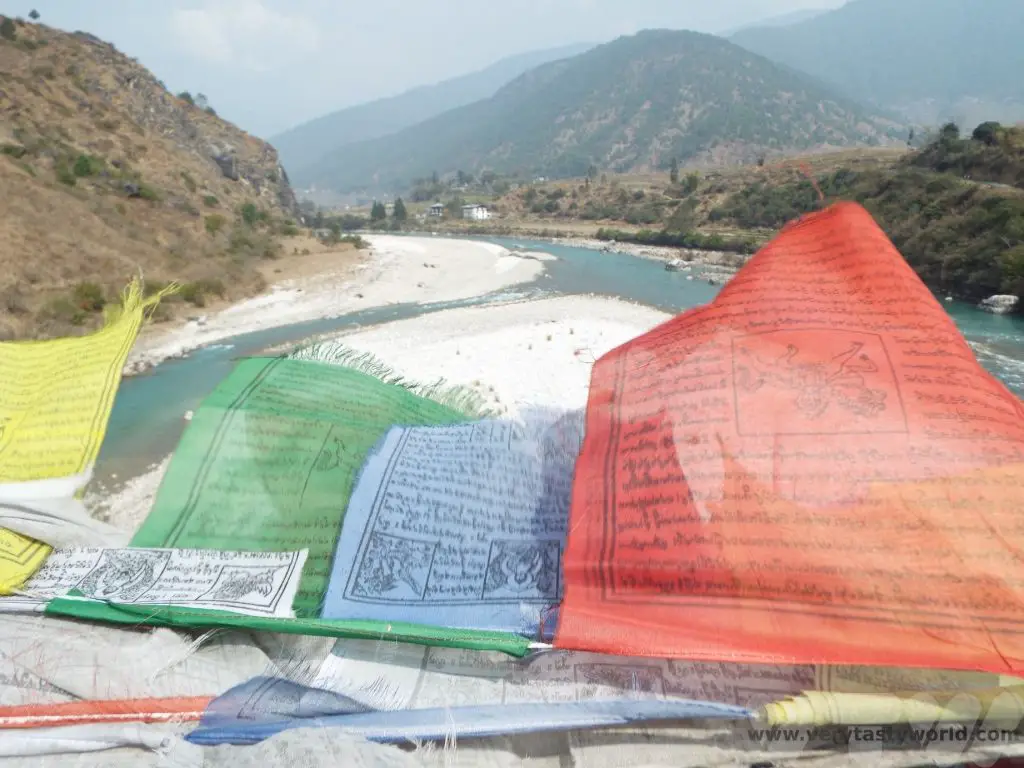
There are some good walks along the Mo Chu river upstream. It’s a really beautiful area. And, if you’re feeling adventurous, there may also be some opportunities to go rafting on the river.
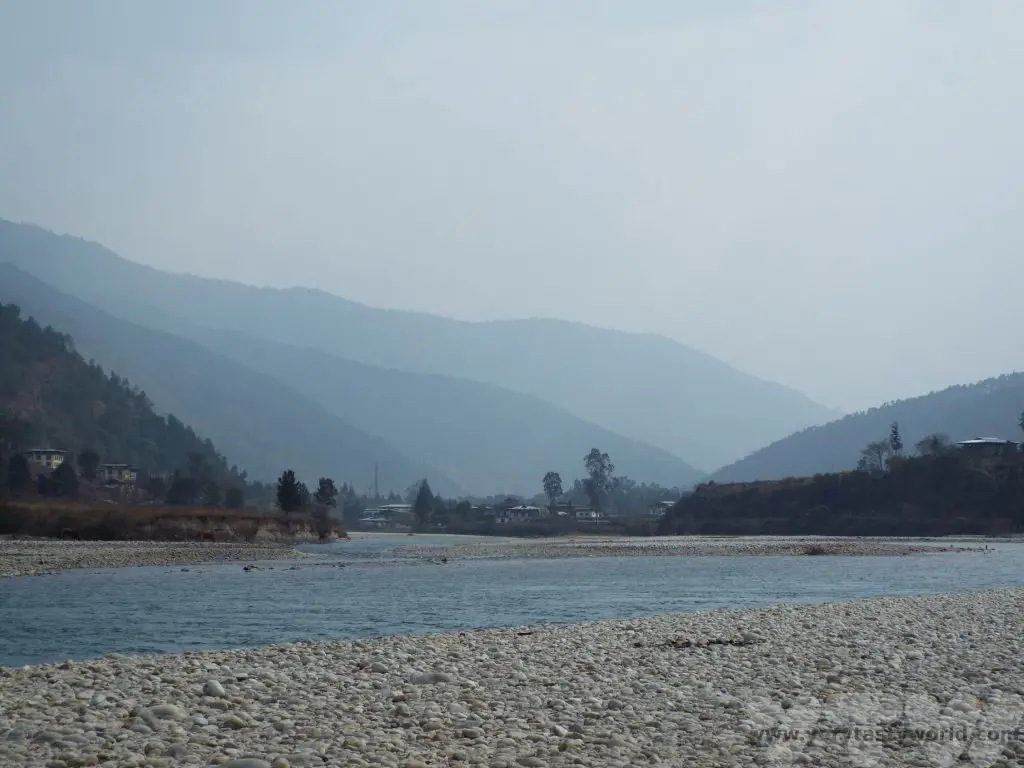
Sangchhen Dorji Lhuendrup
The Sangchhen Dorji Lhuendrup nunnery is located in Wolakha. It provides a permanent training and meditation centre for nuns. There are also opportunities for the nuns to learn various skills such as tailoring, statue making and thangka painting (a traditional style of Buddhist painting).
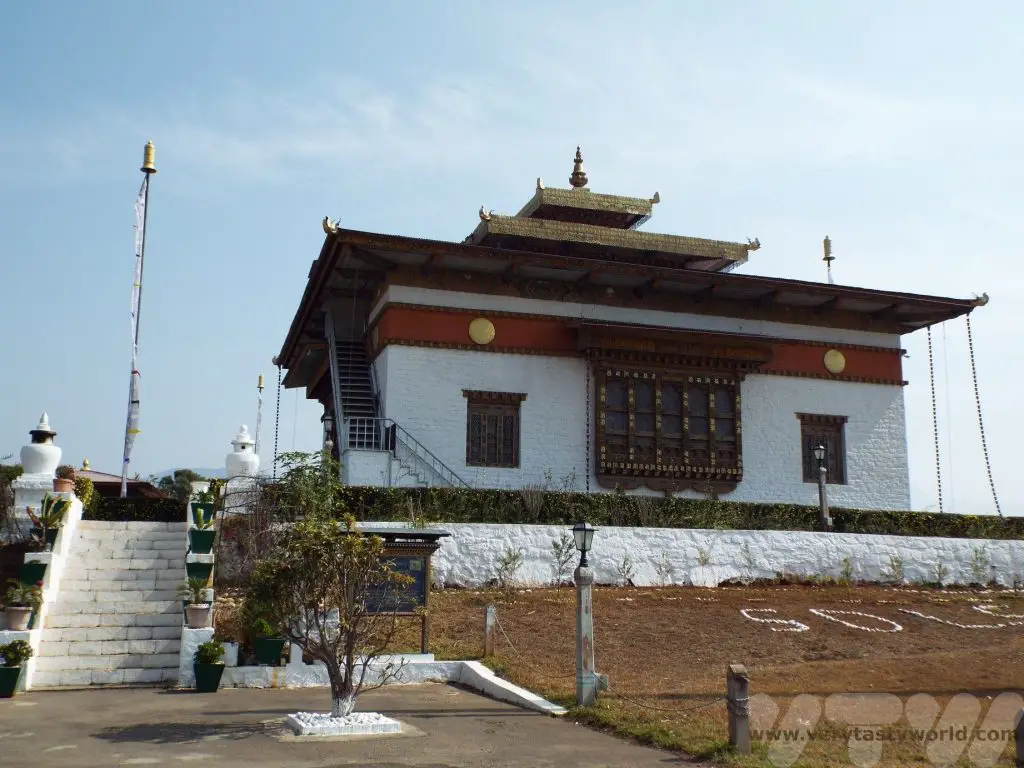
The temple has an impressive stupa.
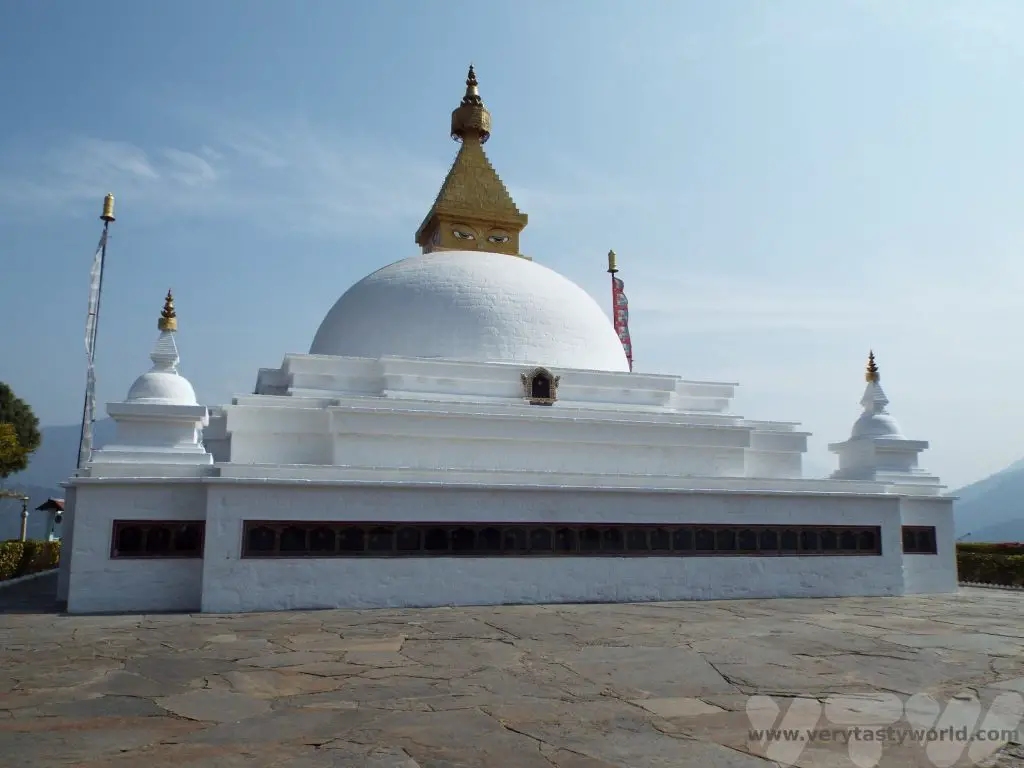
Chimi Lhakhang
Chimi Lhakhang is located around 10km from Punakha. It is a monastery built in the 15th century after being blessed by Lama Drukpa Kunley, also known as the ‘Divine Madman’, who had an, er, unusual approach to teaching Buddhism which often involved singing, dancing and generally being shocking. He brought from Tibet a wooden phallus adorned with a silver handle and this is housed in the monastery.
It is used to strike pilgrims, particularly women who wish to become pregnant, on the head as a blessing.
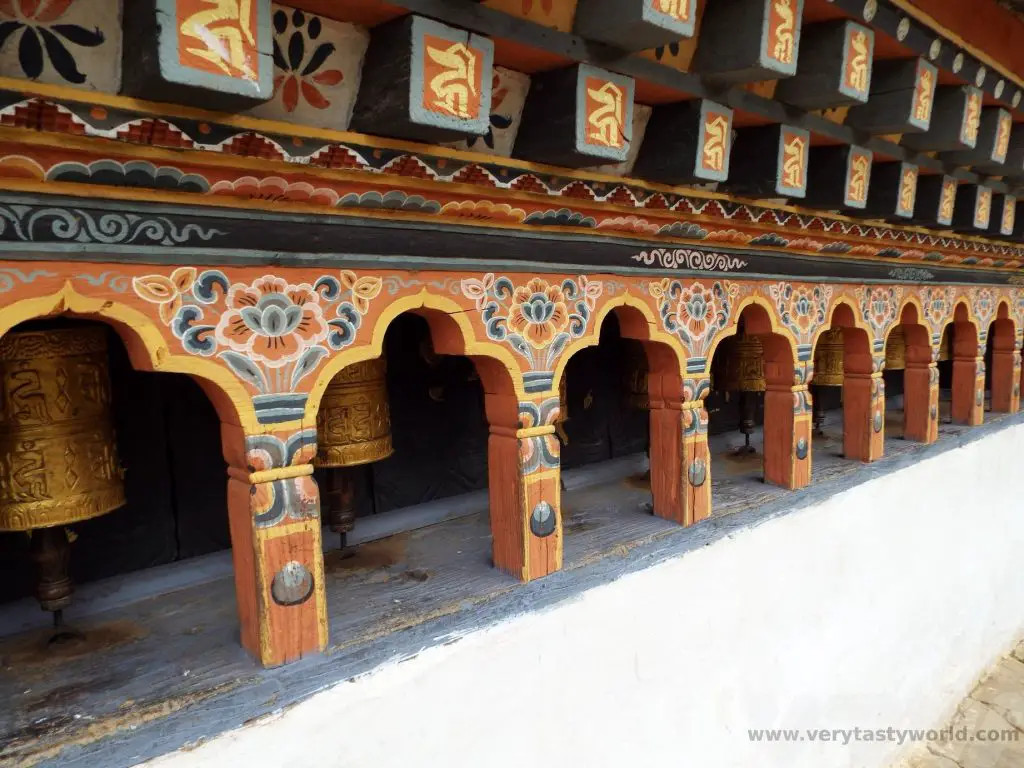
All through the area you will see paintings of phalluses on housing walls. It is a tradition in Bhutan that the phallus protects people from evil.
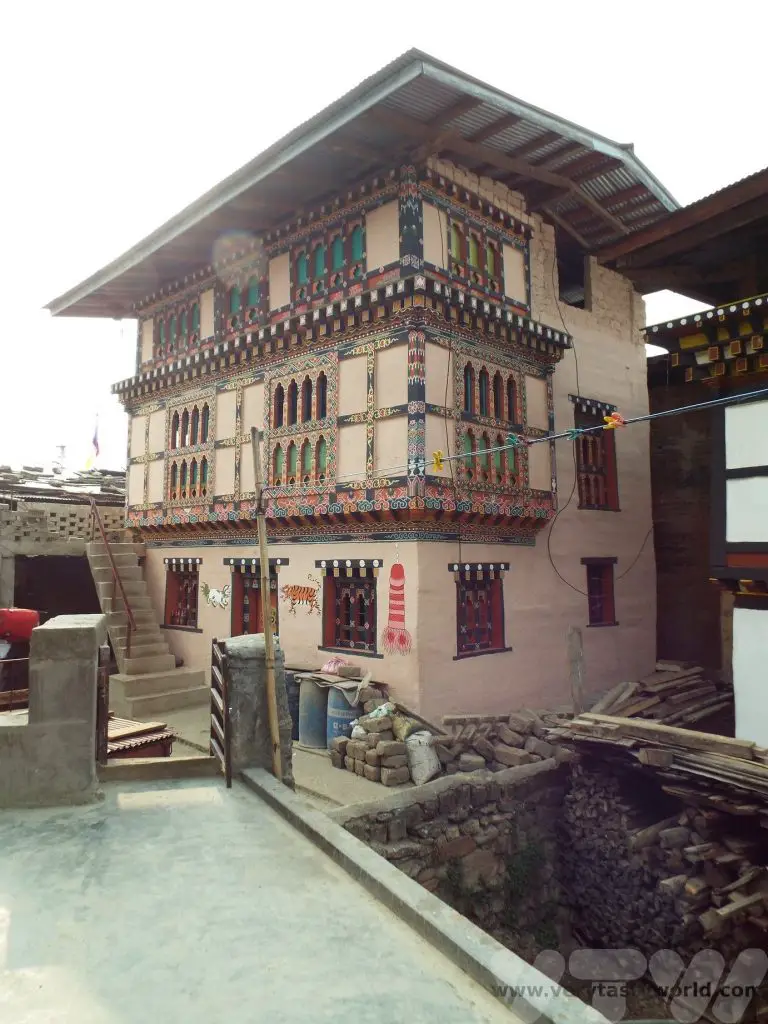
Staying At A Local Farmhouse
We spent the night in Chimi Lhakhang Farm – we had a cosy attic room and cooked dinner with our lovely hosts.
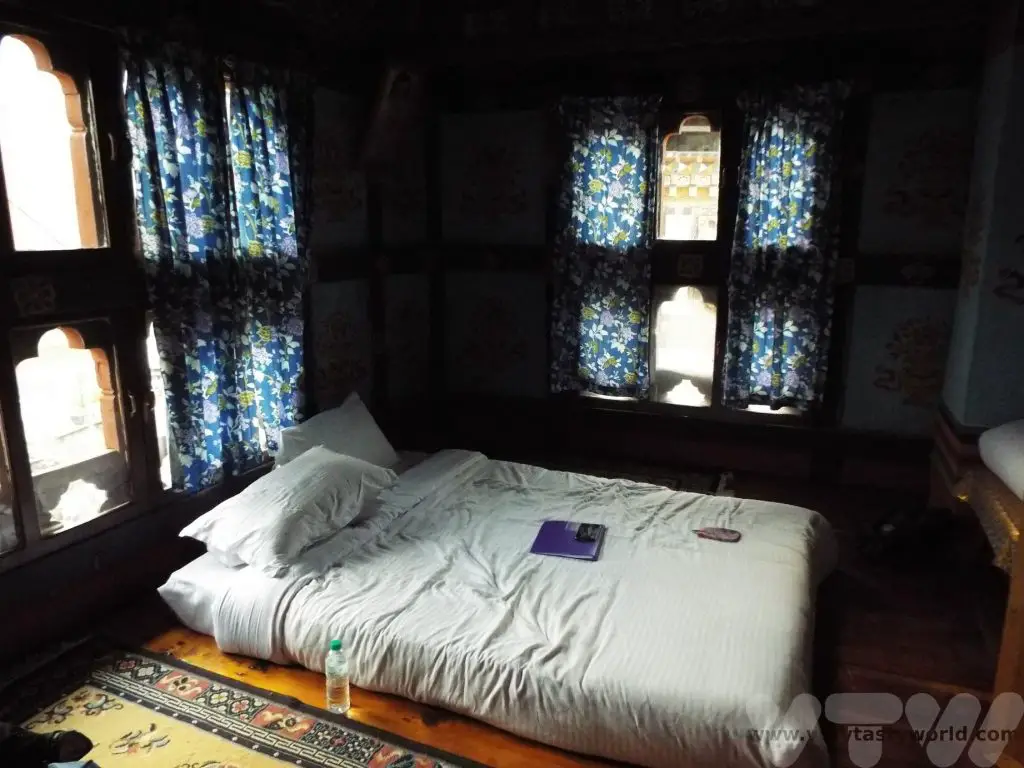
Our guide often asked what sort of food we would like to try – of course we asked if we could enjoy traditional Bhutanese food.
We had great fun in the evening and spent time in the kitchen preparing dinner with our hosts. Dawa and Tring joined in with the cooking as well.
The main dish was shakam paa, which comprised dried beef cooked with chillies and radish slices, spiced with dried chillies.
We also learned how to make khewa datshi, a dish of sliced potatoes with cheese.
And, of couse, the ubiquitous and utterly delicious ema datshi – chilli cheese.
All served up with red rice, it was a feast!
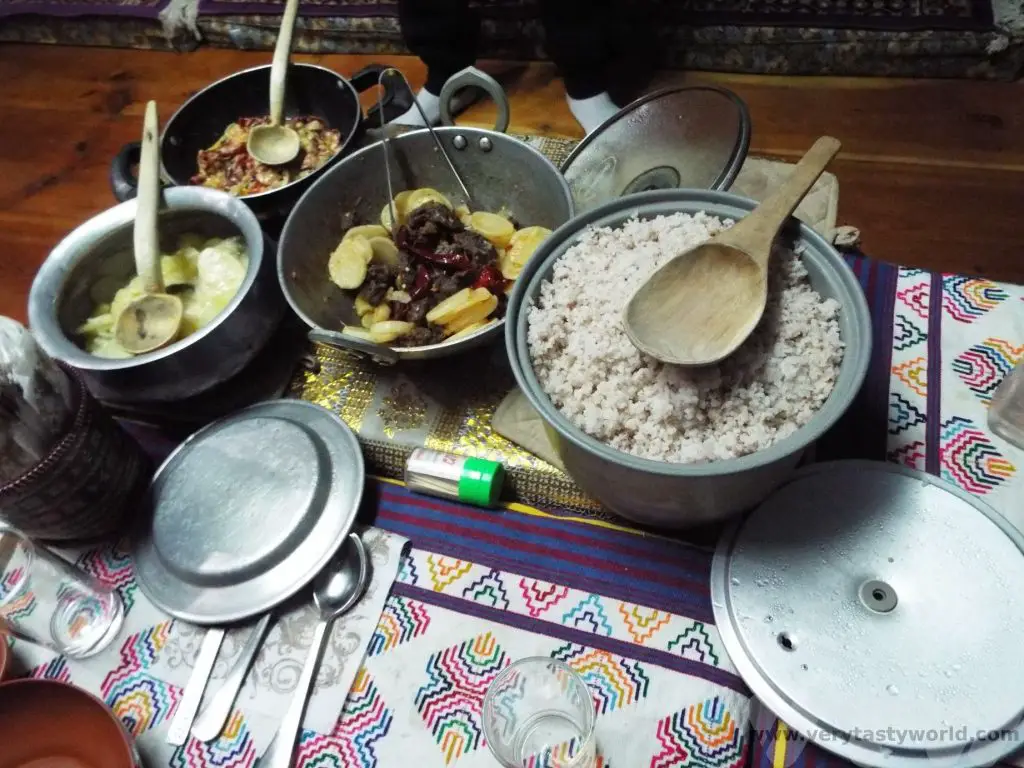
Related Posts You May Enjoy

- A One Day Hanoi Itinerary
- Mekong Meanderings
- A Chiang Rai Temple and A Country Retreat
- A Chiang Mai Tour in Northern Thailand
- Sunrise at Angkor Wat and Other Temples
- Mekong Delta River Cruise in Vietnam

A Chiang Rai Temple and A Country Retreat
Sometimes it’s possible to visit a place without actually going to the place itself. If that makes sense? This happened on our trip to northern Thailand. We had spent some time in Bangkok and Chiang Mai before heading towards the city of Chiang Rai. But somehow we didn’t quite manage to visit the city itself. Having driven up from Chiang Mai, our first stop was a famous Chiang Rai temple – The White Temple – followed by a lovely couple of days exploring the local countryside.
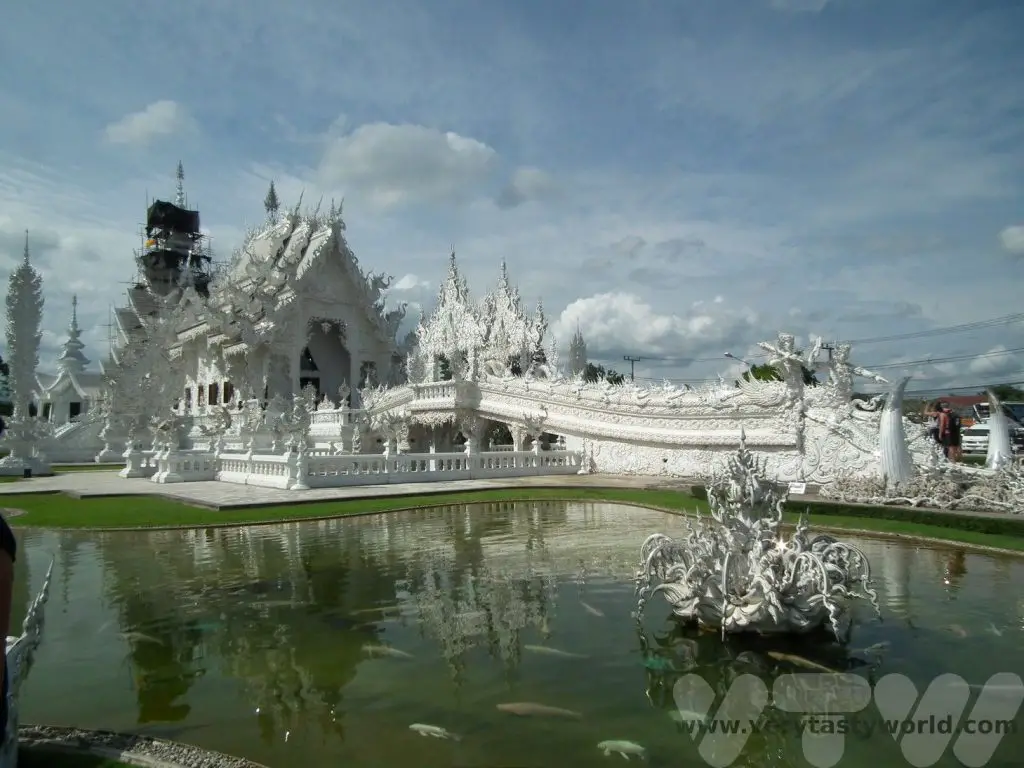
Chiang Rai Temple – The White Temple
It’s located about 13 kilometres south of Chiang Rai city and we can honestly say it’s one of the most bizarre buildings we have ever visited.
The temple itself was conceived and designed by Thai artist Chalermchai Kositpipat and built on an enormous scale, designed in the style of a Buddhist temple. Kositpipat also supervised the construction of this remarkable building. Although it bears a strong resemblance to ancient temples of the region, it is a modern structure which opened in 1997.
The building also has ornate naga serpents, supernatural creatures that are part human, part snake, which typically decorate Buddhist temples and are revered throughout the region.

You cross the Bridge of the Cycle of Rebirth…
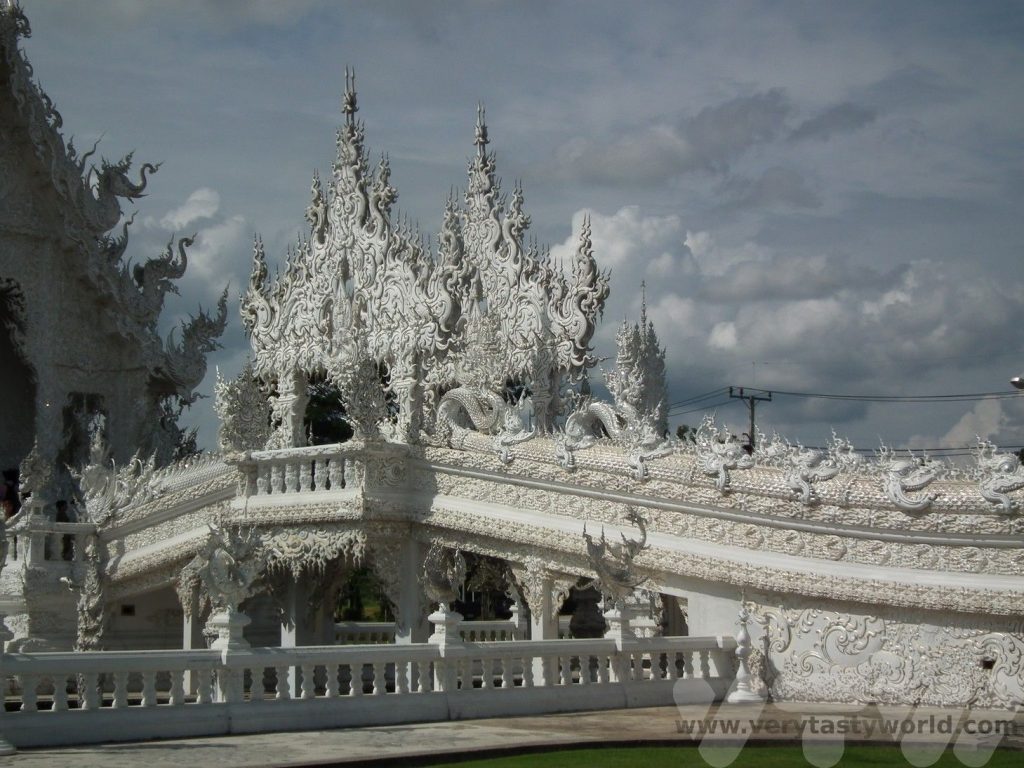
…passing by the fearsome guardians…
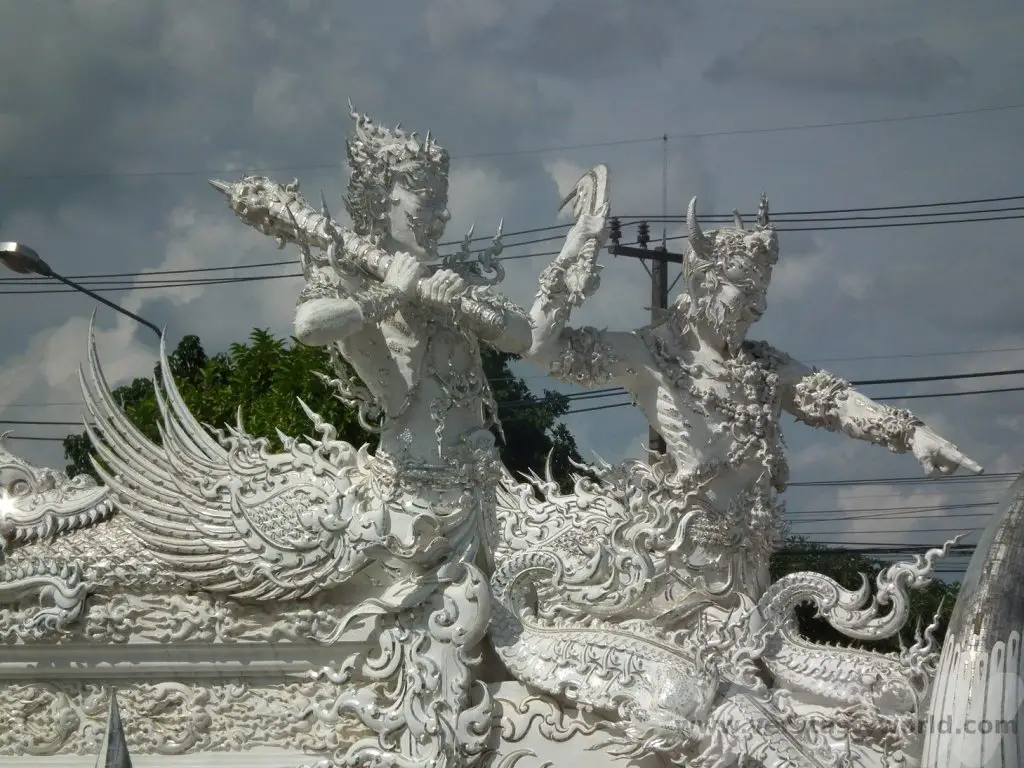
…over the lake of the damned souls…
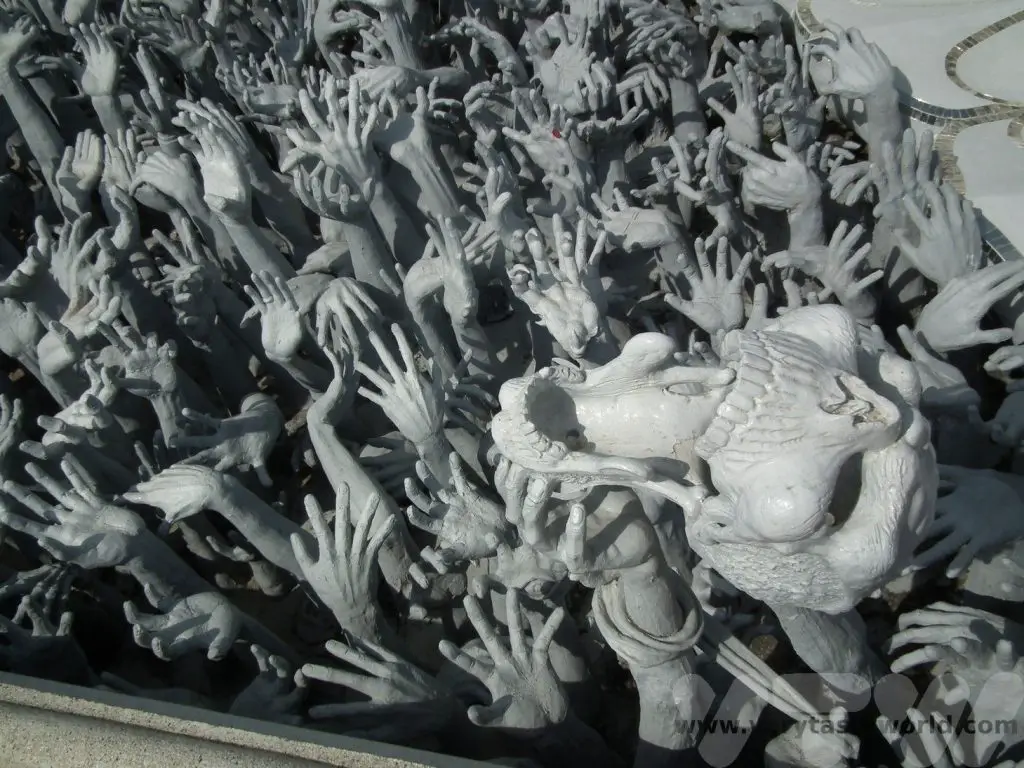
…in order to reach heaven.
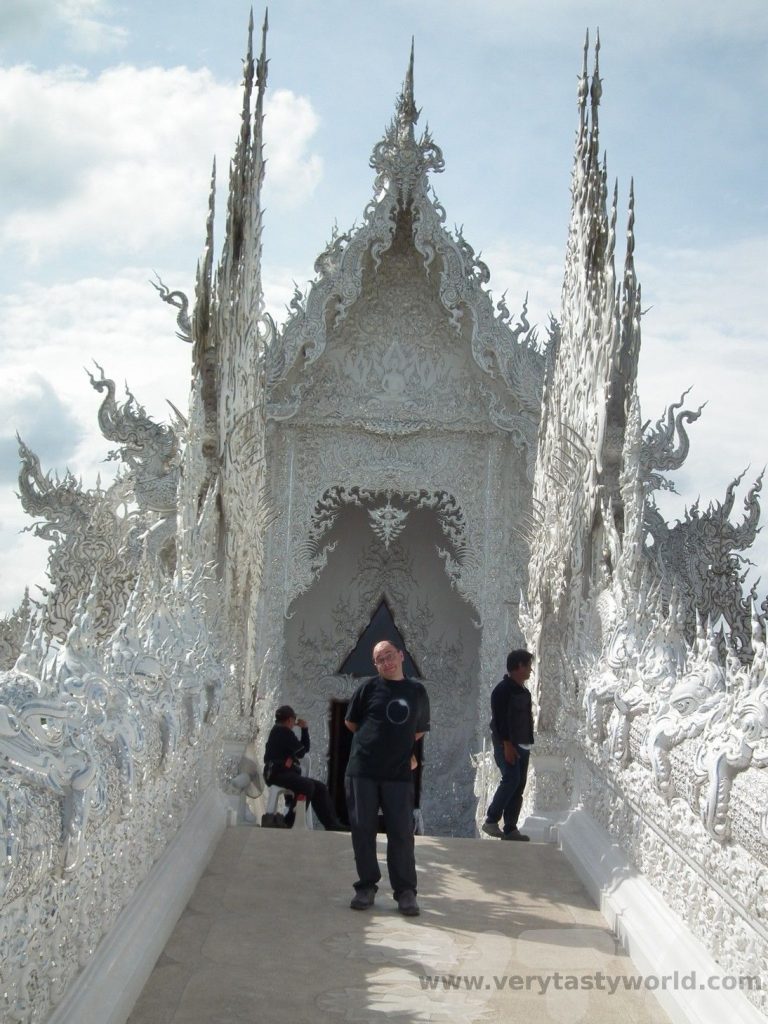
It is possible to go inside the temple, known as the ubosot, but, sadly, you are not allowed to take photos in there. We absolutely respected this, but it’s a shame because it contains the most astonishing bright and colourful murals. They combine Buddhist imagery with all sorts of modern historical and cultural icons – everything from Spider-man to Doraemon and Hello Kitty! The theme that pervades the White Temple is the conflict between good and evil in the world. You could spend hours enjoying the details, spotting all sorts of characters.
Chiang Rai’s White Temple Grounds
The temple itself was designed to be white to represent purity; a conscious choice to contrast with the temples throughout Thailand which are typically decorated in gold. Kositpipat apparently considered gold to be a colour for people who coveted evil thoughts and deeds. So it is the bathrooms that are decorated in a gorgeous gleaming gold. Possibly the most ostentatious toilets in the world!
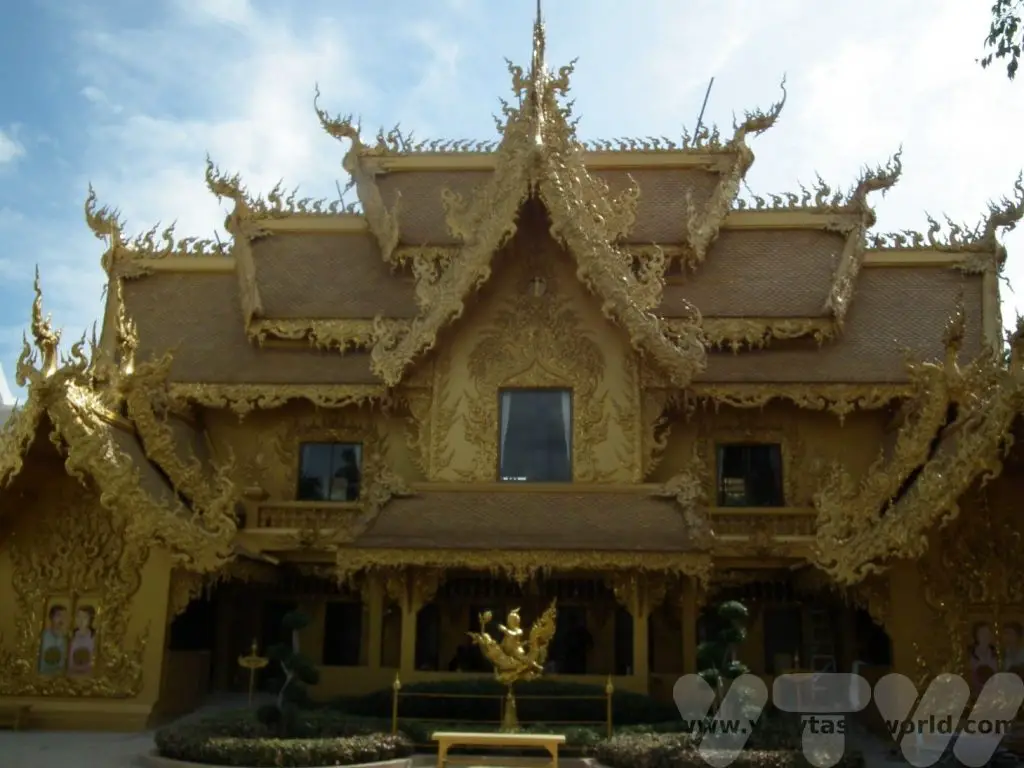
Even the traffic cones and trees are bizarrely decorated!
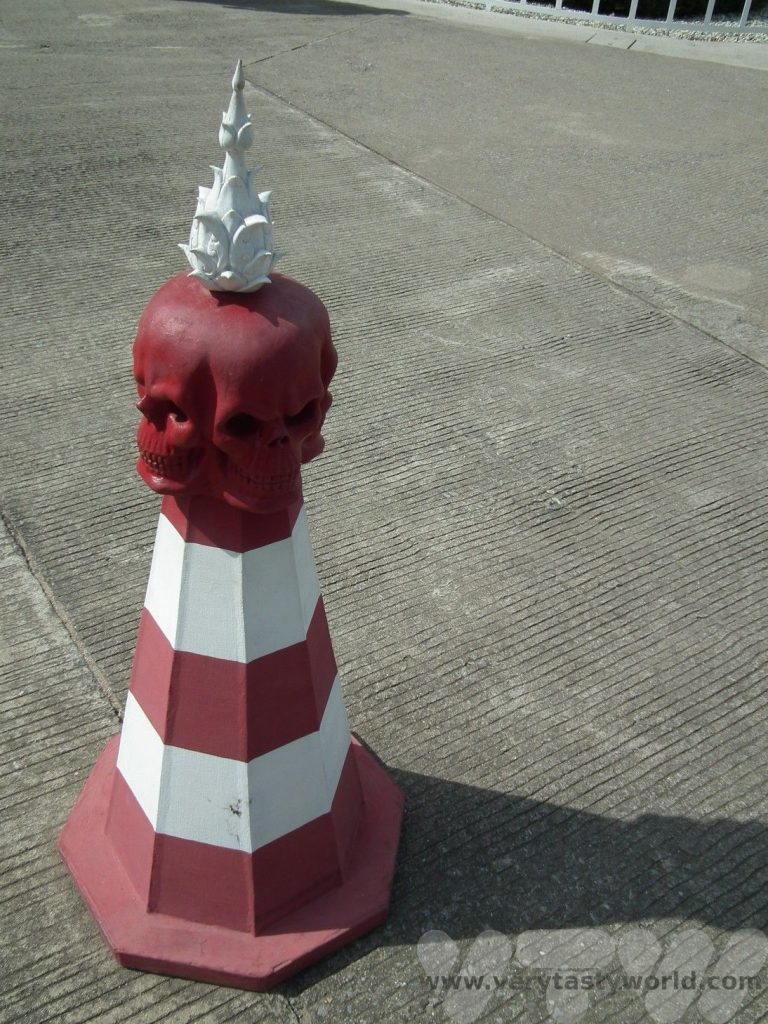
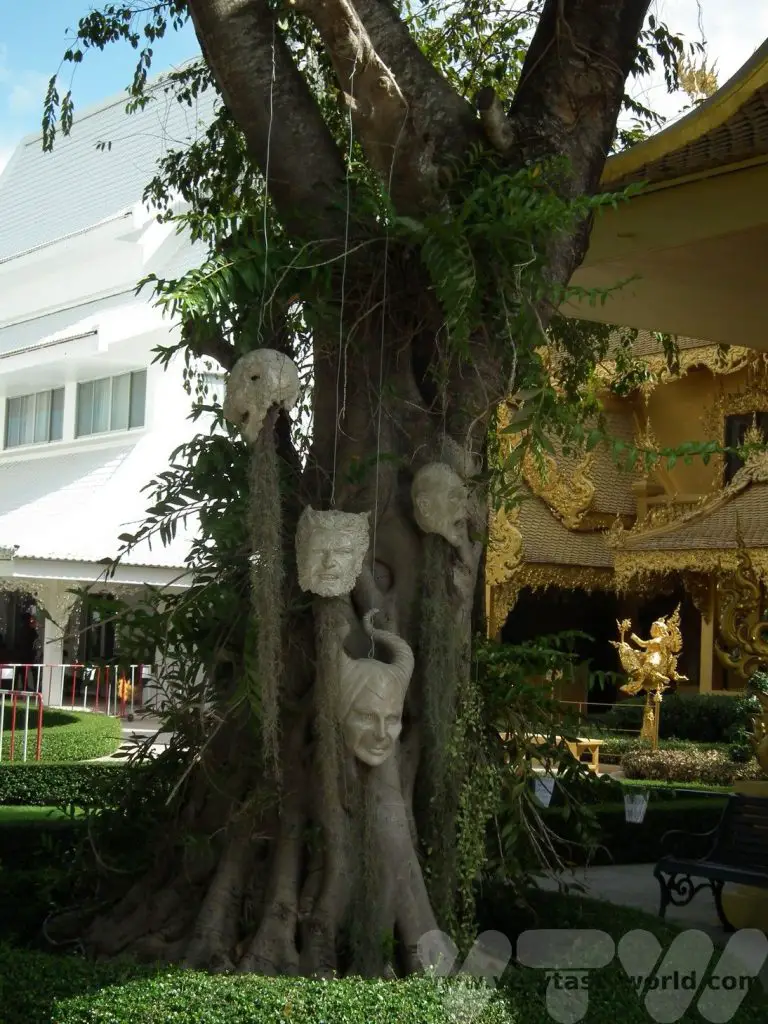
Kositpipat didn’t want money to be a consideration for visitors, so when we visited entrance was free. However, these days there is a nominal charge that is used towards maintaining the temple and gardens. Which is fair enough.
A Rural Retreat
Having visited the Chiang Rai temple we then headed out towards the hills.
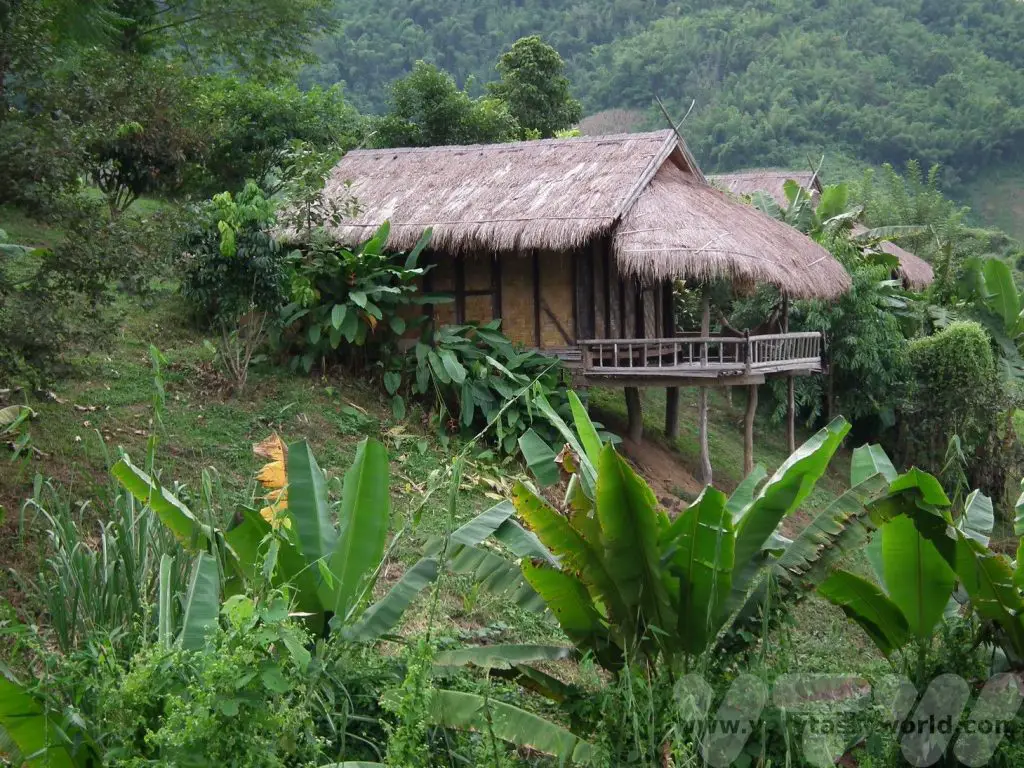
We were staying at the delightful Bamboo Nest, a rural retreat in the countryside. When you hear the phrase ‘rural retreat’ it often recalls images of luxury spas in pristine grounds but this was the opposite – a retreat much more suited to our tastes.
We stayed in a simple bamboo hut with thatched roof, which had no electricity and a wonderful view.
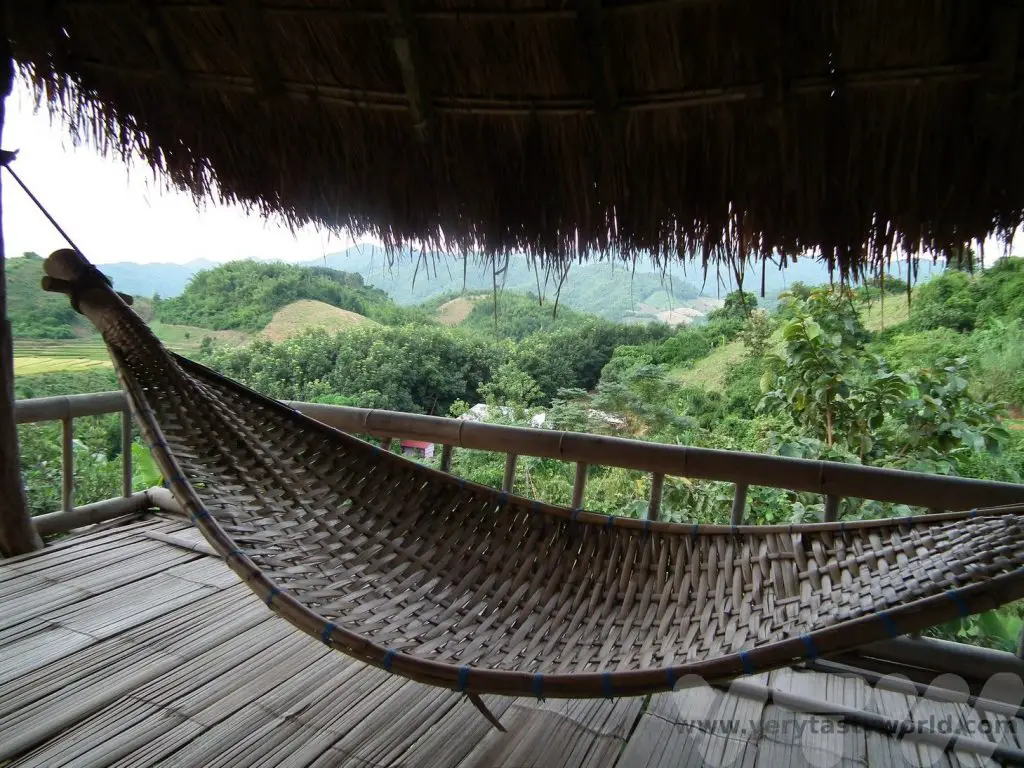
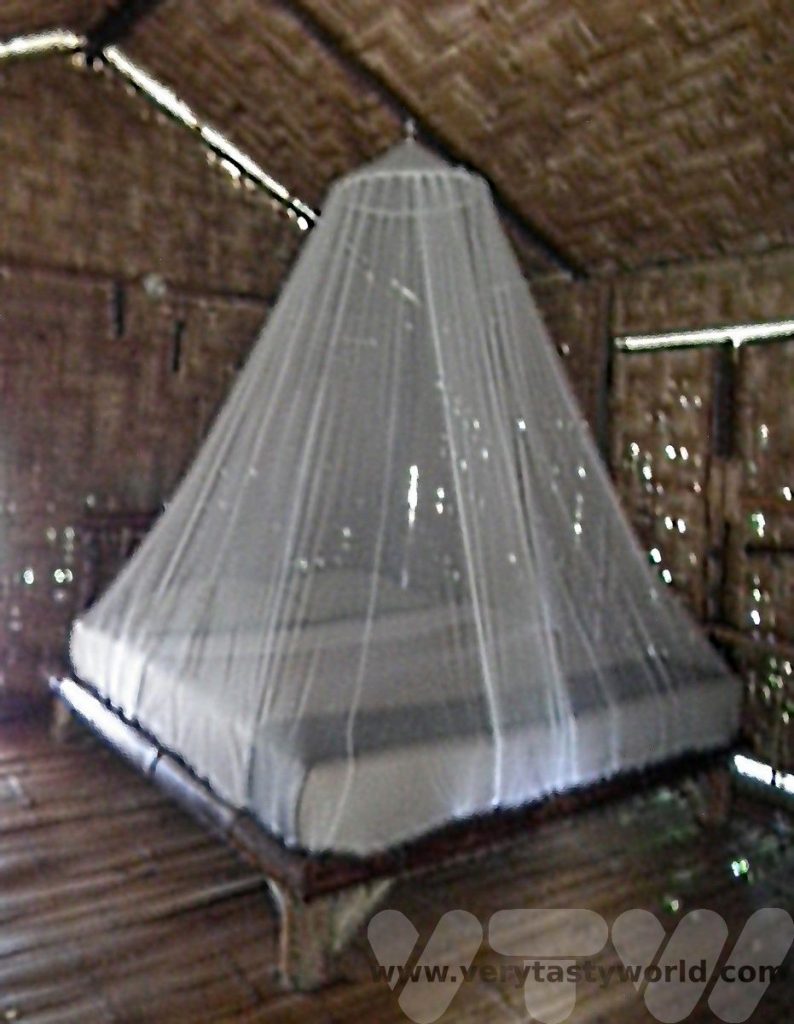
Dining was in a communal area where we enjoyed freshly cooked local meals with other guests. There was electricity available via a generator in this area which enabled the charging of phones and cameras and it also powered a fridge which conveniently contained cold soft drinks and beer, which you could purchase on an honesty basis. It was incredibly quiet and peaceful and a complete contrast to the hubbub of Thailand’s cities.
The Bamboo Nest team arranged our transportation to this remote site and will organise pickups if needed. Just get in touch directly to make a booking. We met Nok outside the White Temple and climbed into her 4WD, a vehicle that was most definitely essential for the area which we discovered as the car climbed higher and higher up the mountainside. The final leg of the journey was incredibly steep, muddy and occasionally slippery – a challenge even for a sturdy 4WD.
A Hike to the Hill Tribes
The main purpose of our visit was to enjoy some hiking in the area and to meet the local hill tribes. The hosts at Bamboo Nest can arrange a variety of excursions, either on a guided or self-guided basis, and we enjoyed a lovely long walk with Noi. It was initially a little disconcerting when he picked up a machete just before we headed out, but the walk was to take us through the mountainside forest and at times we would need to cut our own path. The treks offered are truly off the beaten track.
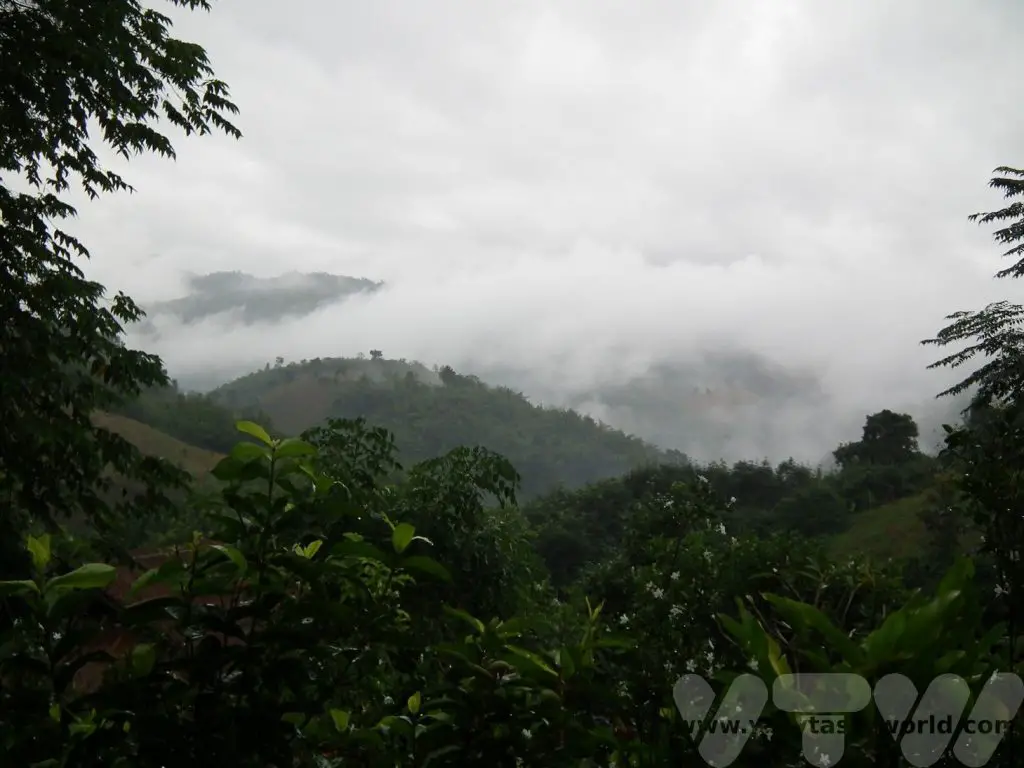
Thailand is hot and humid and occasionally rainy, so we had some slippery moments, particularly descending some of the steeper hills. It’s worth making sure you have good shoes and waterproofs as well as a change of clothing, just in case it rains and gets muddy.
The Chiang Rai area is home to a number of hill tribes, including the Akha and Lahu peoples. Hill tribes are ethnic minority groups who have settled in the region, living in a plethora of villages that are scattered across the mountains. The communities can be quite large or may comprise just a few families living together. Some of the villages are set up to receive tourists but Noi and Nok know the local people well, so we were able to visit a non-tourist village which gave us a much more personal and insightful experience.
After a couple of hours hiking we arrived at one of the villages of the Lahu tribe. The homes are constructed on stilts and have adjacent buildings where the farm animals reside.
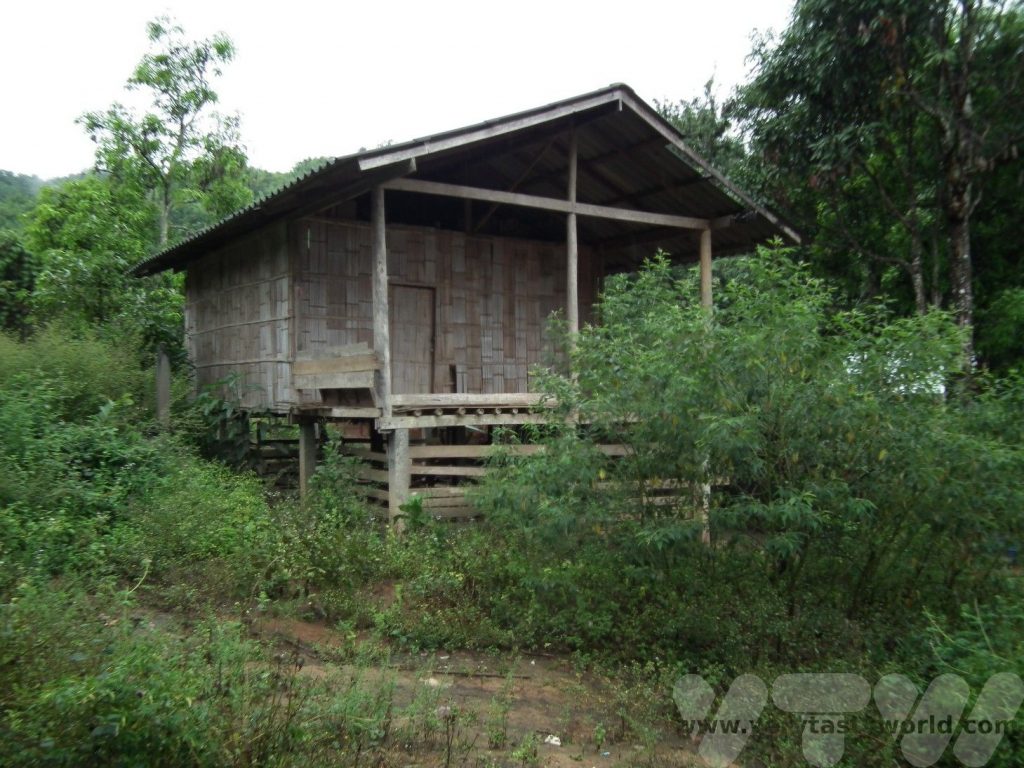
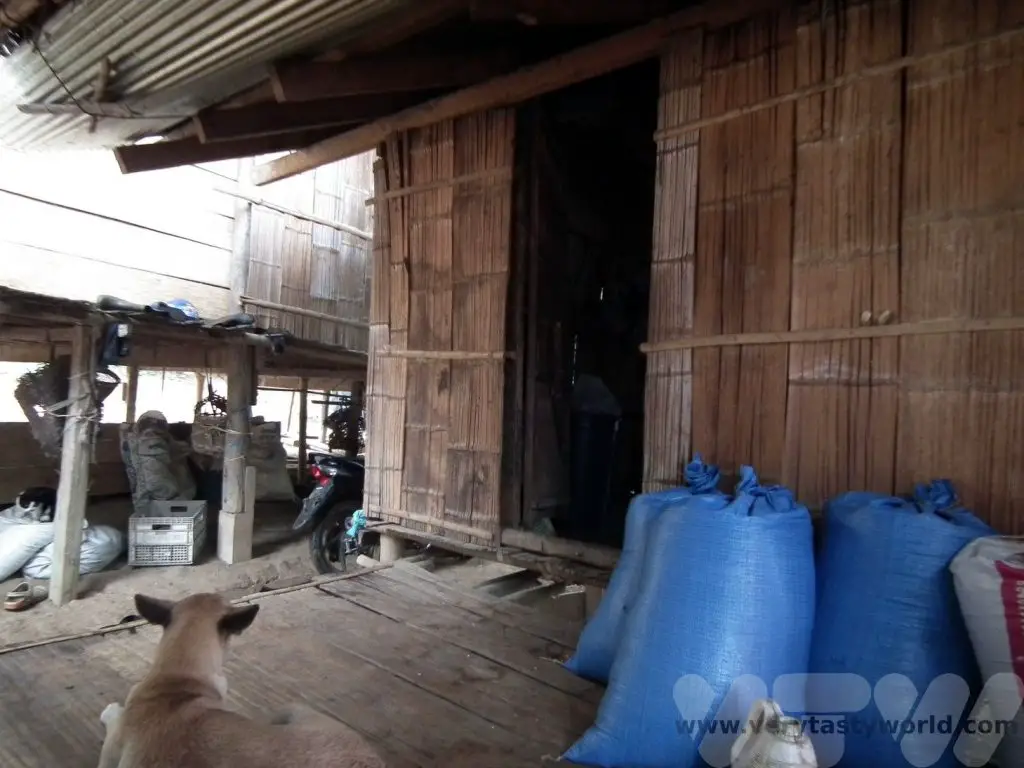
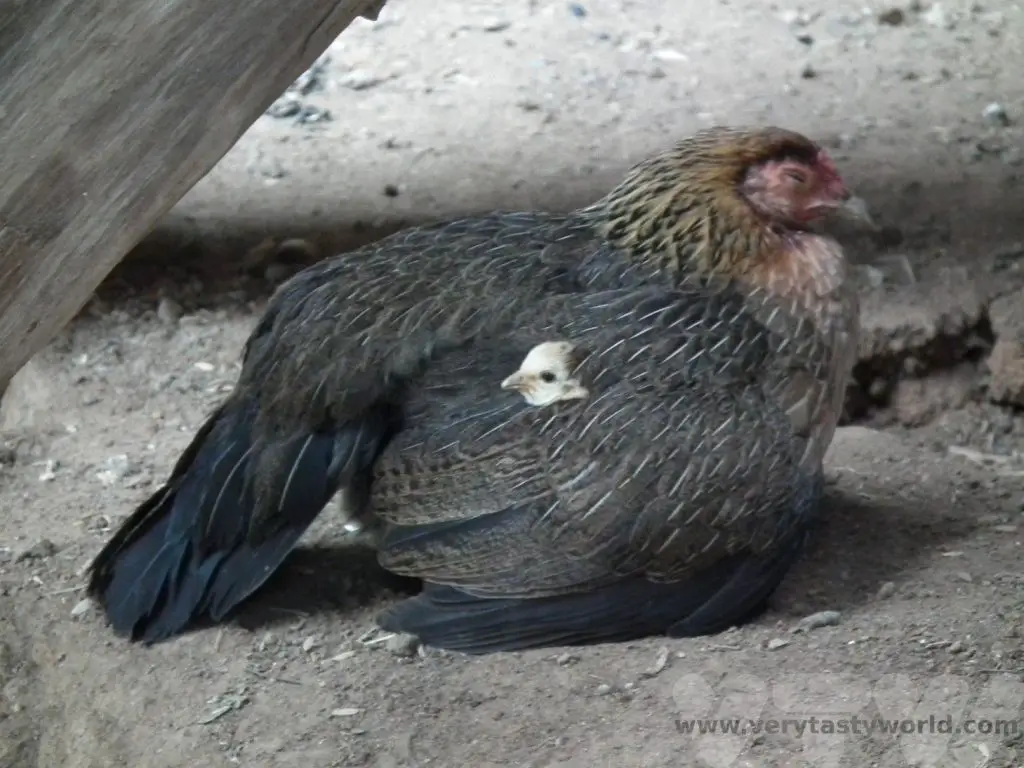
We were invited into a house to join a family where we helped prepare lunch.
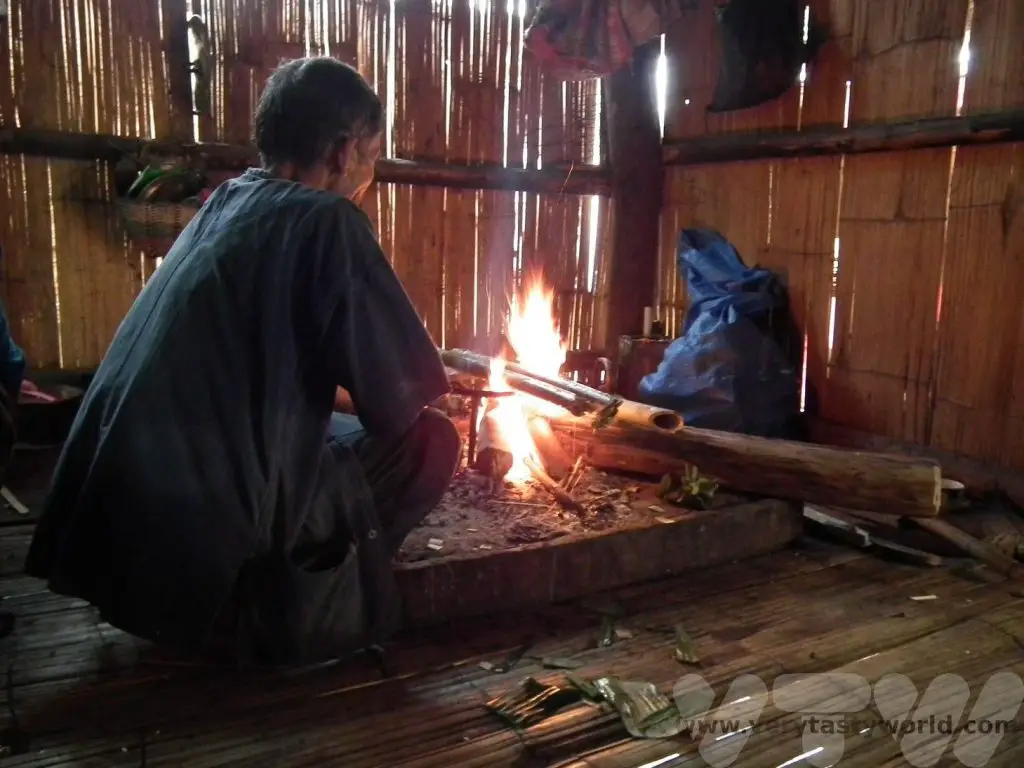
The houses have an open fire inside the main living area. River fish was ponassed onto sticks and cooked directly over the fire.
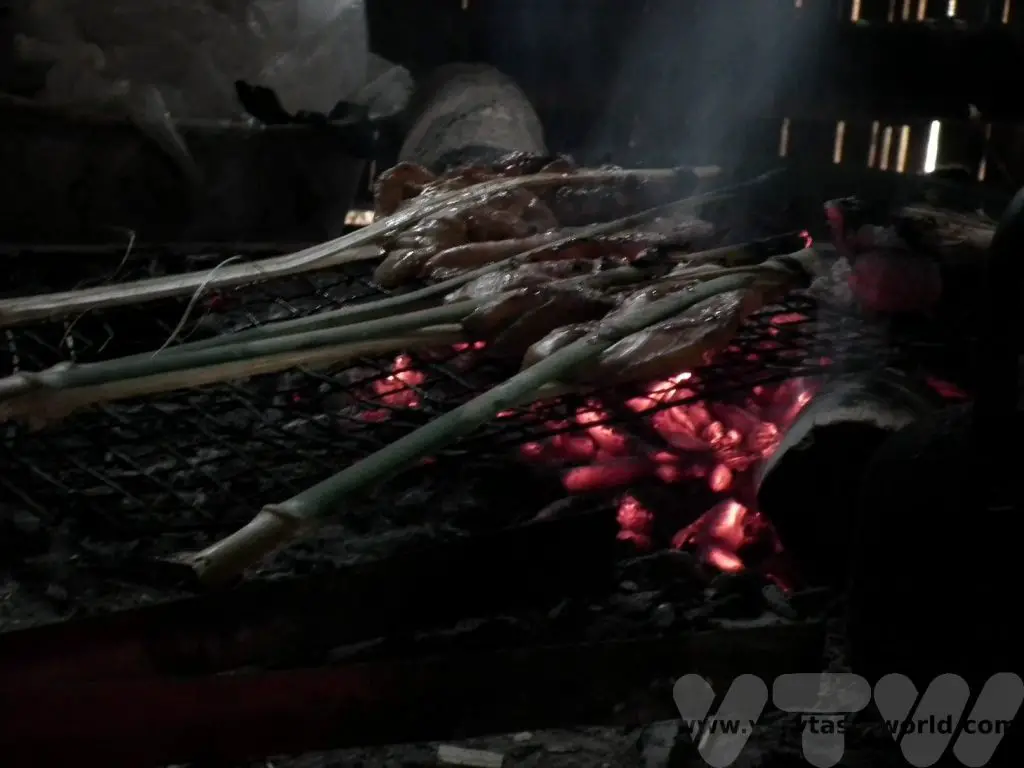
Bamboo stalks are segmented and hollow, so another part of meal was actually cooked inside these: Add sticky rice and water to a bamboo stalk, place it over a fire for a few minutes and… yummy sticky rice!
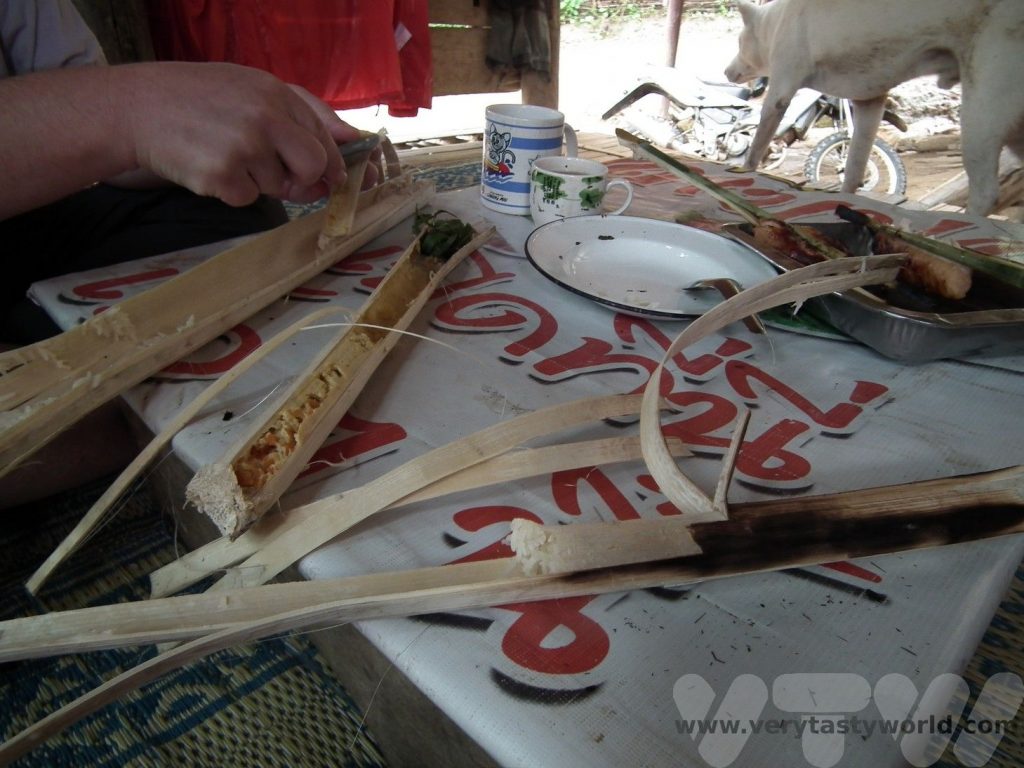
Pour some water into a stem, add a teabag, place over the fire and a few minutes later… a ‘pot’ of tea! Best of all was the egg – crack a couple of eggs, add some herbs, pour the mixture into the bamboo stalk, shake a bit, place over a fire (you guessed it) and a few minutes later… delicious cylindrical omelette.
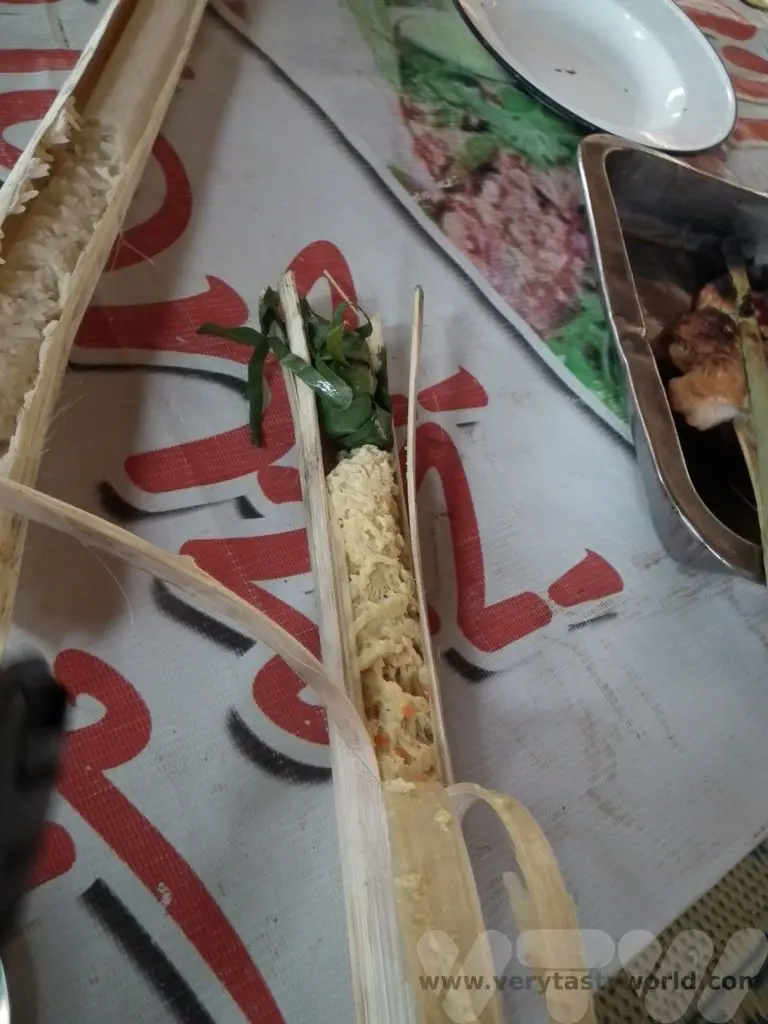
We then enjoyed a longboat ride along the Mae Kok river to visit the hot springs.
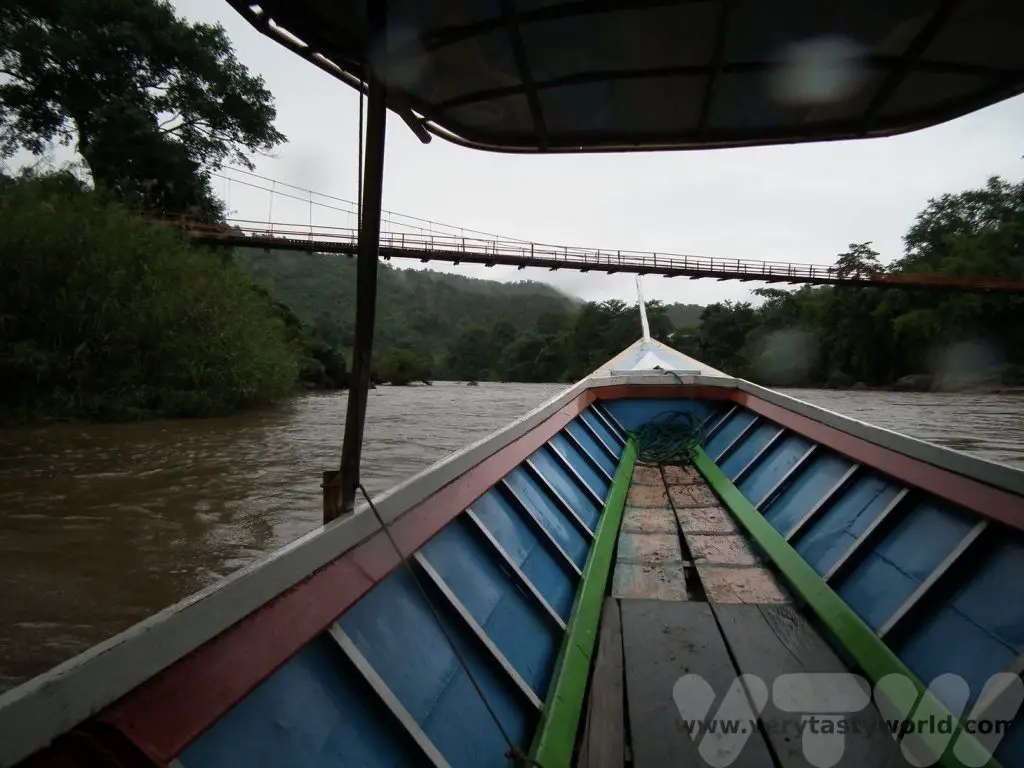
Some of the land in the area has been given over to commercial agriculture so it was also possible to walk to visit the local plantations. We could see bananas…
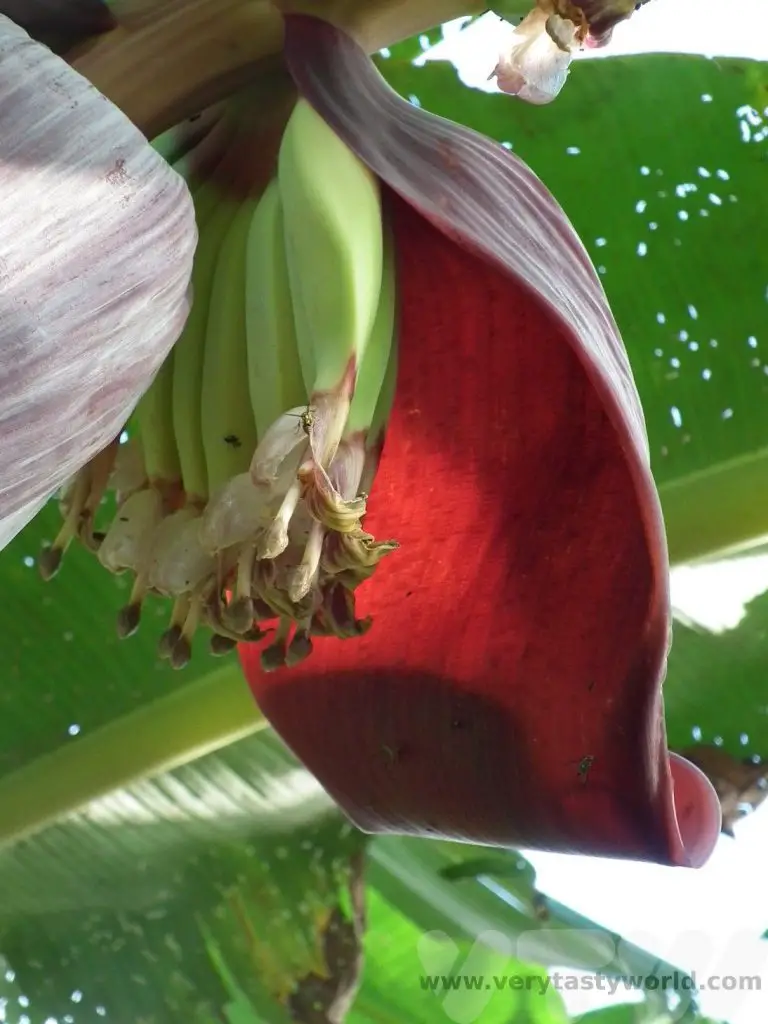
Pineapples…
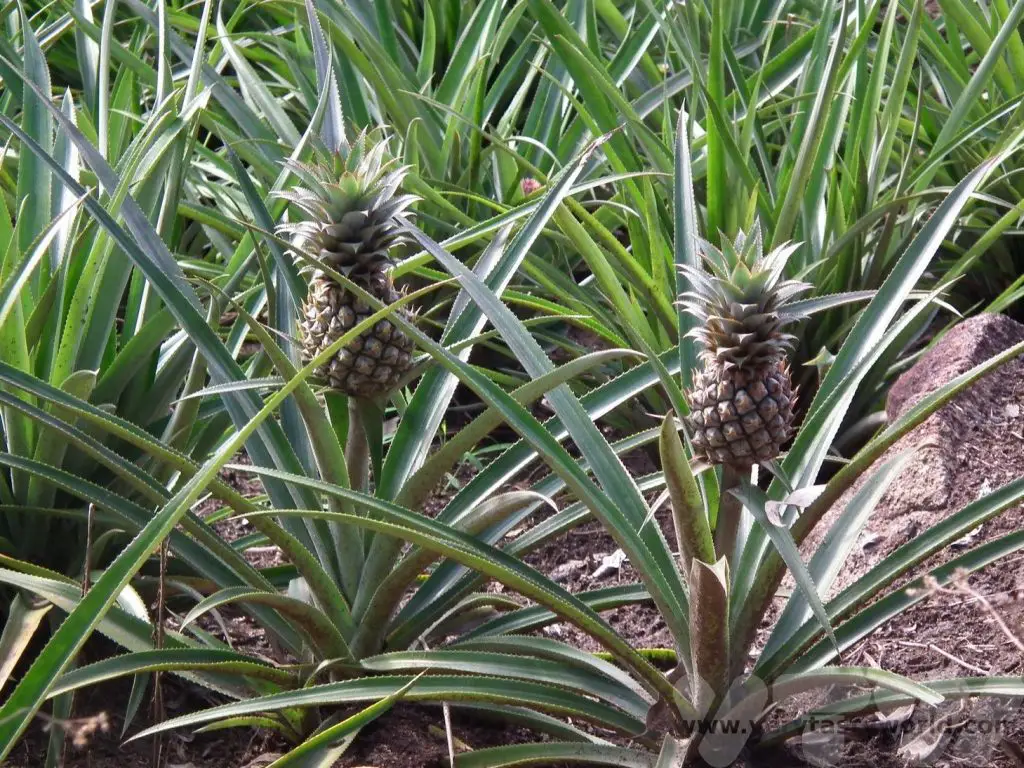
And tea.
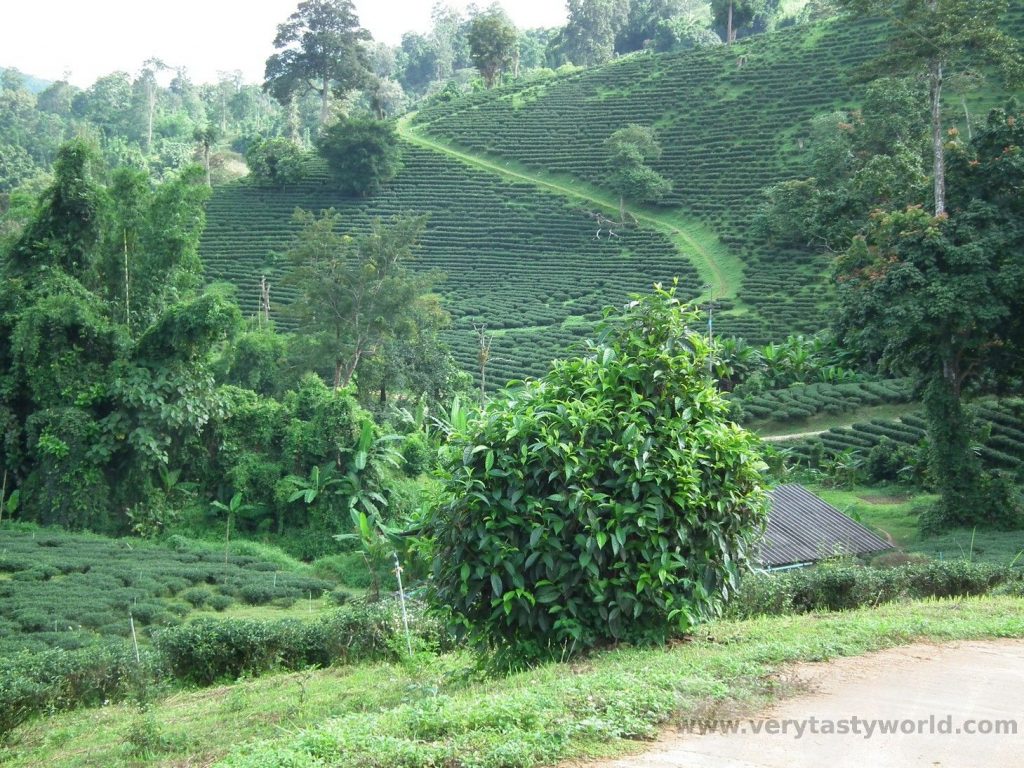
There were also some lovely waterfalls in the area.
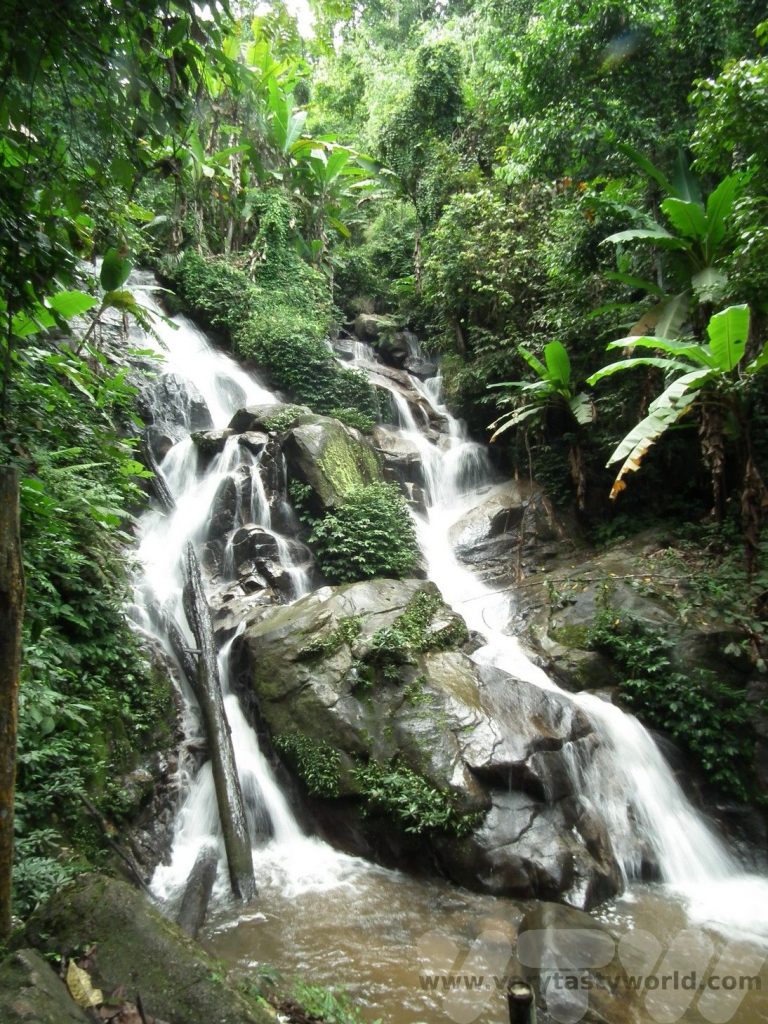
Each night a bonfire would be lit at Bamboo Nest and we could chat with the other guests and watch the glow of the fireflies flitting through the forest.
From the ostentation of the Chiang Rai temple to the simplicity of the remote hills of the Mae Bok basin, we couldn’t have had a more contrasting experience in this region of northern Thailand.
We just didn’t have time to visit Chiang Rai itself!
Related Posts You May Enjoy

Setsubun Food – Bean Throwing Day
Feb 3rd is Setsubun in Japan. Which means that it’s mame maki, or bean throwing, day. Setsubun is one day before Risshun – the first day of spring in the lunar calendar. It’s not considered to be the official new year, which is celebrated on the 1st January, but rather a new start. There are various ceremonial activities associated with the festival, including setsubun food.
Traditionally people throw roasted soy beans (fuku mame) at home, with the shout of ‘oni wa so to’ (get out demons!) and ‘fuku wa uchi’ (come in happiness!) Sometimes the beans are just thrown out of the front door but they may also be thrown at a family member wearing an oni – demon – mask. If people eat the number of fuku mame that’s equal to their age it’s believed that they will be healthy and happy for the year ahead.
Bean throwing ceremonies also take place at shrines across Japan. The Senso-ji temple in Asakusa will have thousands of visitors arrive to take part. Celebrities and sometimes sumo wrestlers are known to turn up to some of the events.
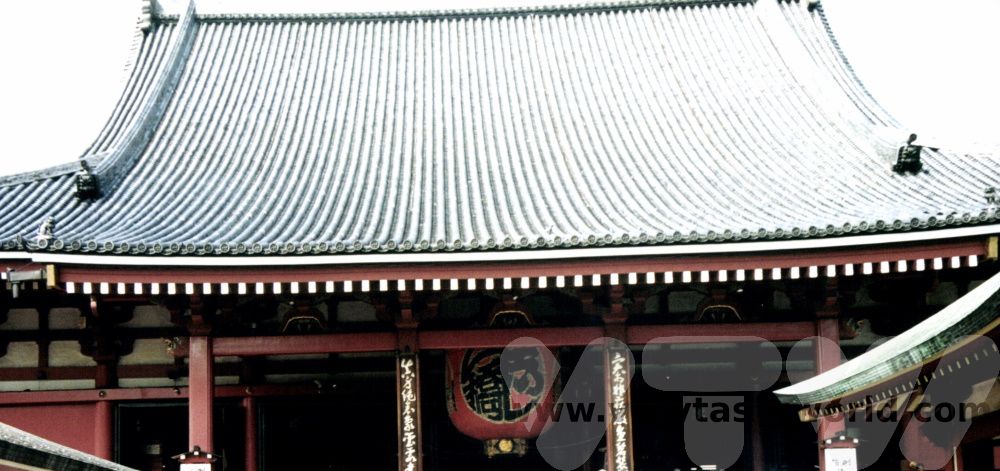
Setsubun Food Tradition
Over the years a foodie setsubun tradition has developed. This is thought to have originated in the Kansai region, in Osaka (always a great place for foodies!) and has become more popular throughout Japan over the years.
It involves eating ehomaki (good luck direction rolls) which are sushimaki rolls that haven’t been cut up. The idea is to eat the roll while facing in the lucky direction. You will need a compass because the direction is quite specific. Last year was the year of the rabbit and therefore the direction was south-south-east. 2024’s direction is east-northeast for maximum luck.
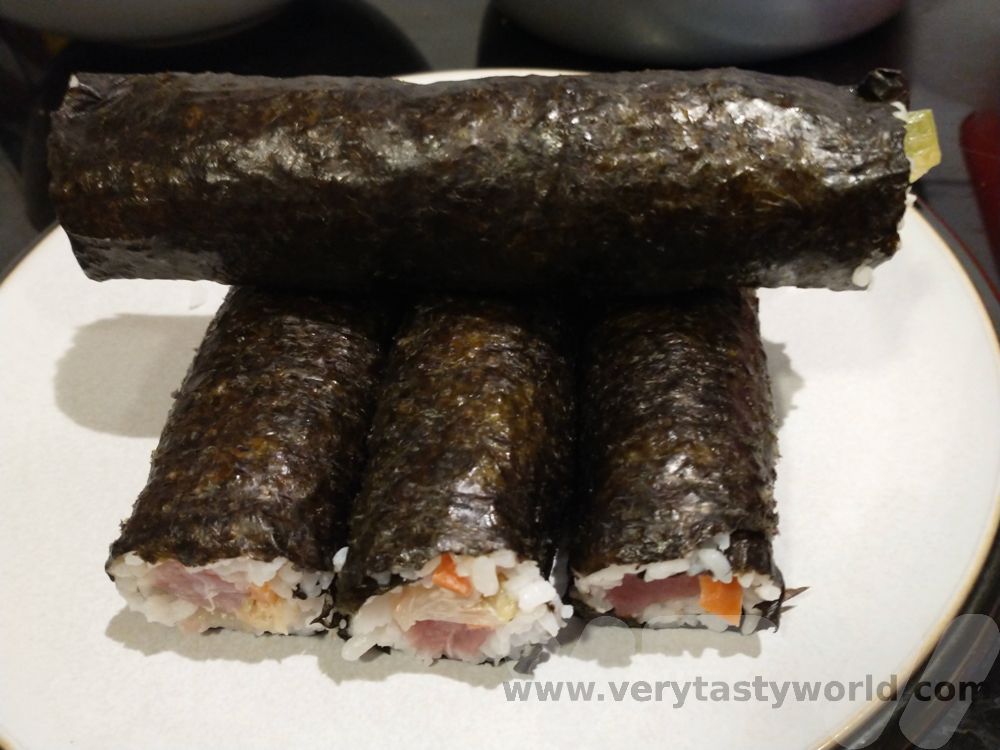
We often make maki rolls using a bamboo rolling mat. They are the easiest sushi to make, even for clumsy cooks such as we. When you’ve had a go at making nigiri or gunkan sushi you realise why it takes 10 years to train as a sushi chef!
There are lots of options for ehomaki filling. One of our favourites is maguro tuna with spicy kimchi and mayo.
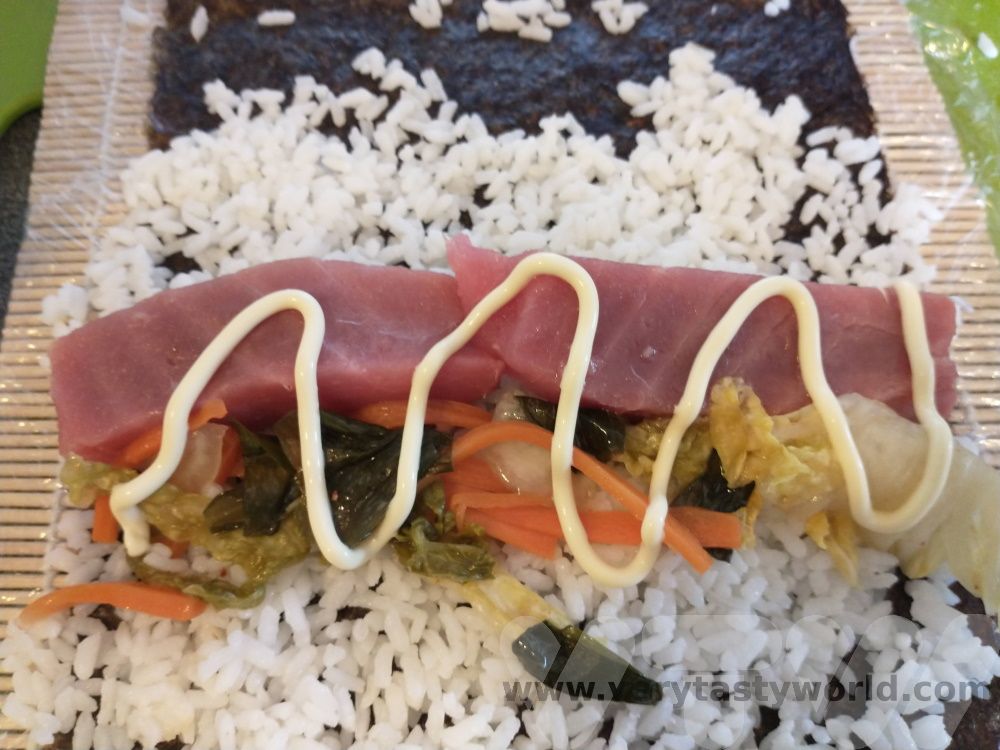
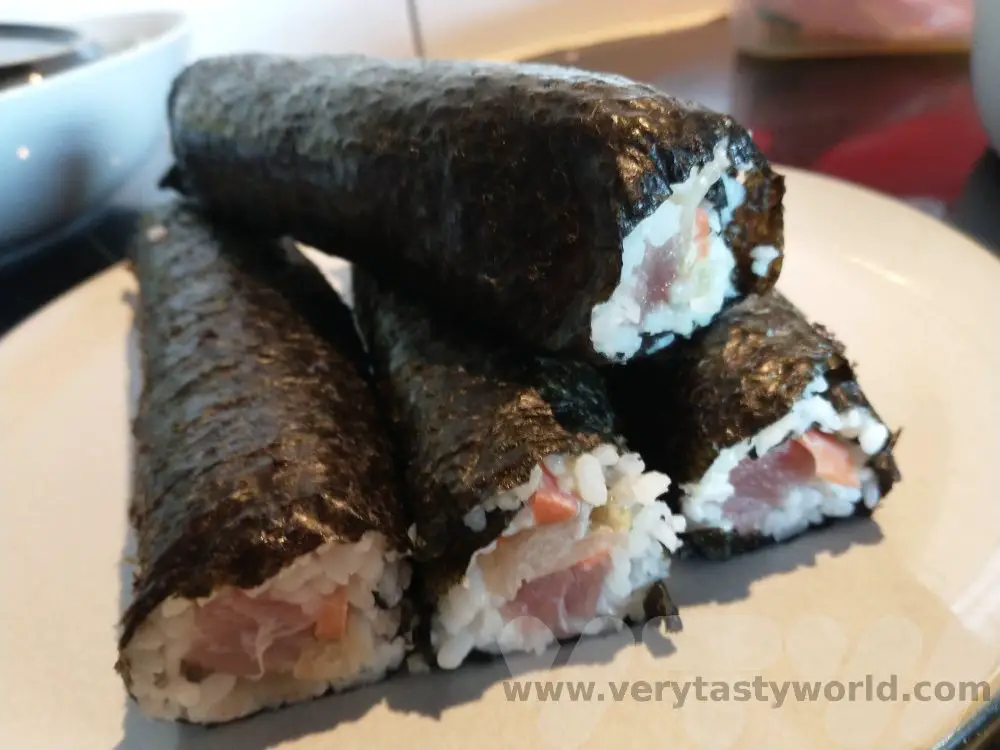

- Recipe: Simmered Shiitake Mushrooms

- How to Use Public Transport in Japan

- RECIPE Oyakodon Donburi

- Planning a Trip to Japan

- The Makanai: Cooking for the Maiko House

- Setsubun Food – Bean Throwing Day

- The Gassho Farmhouses of Rural Japan

- Recipe: Japanese Simmered Pork Belly – Buta no Kakuni

- RECIPE: How to Make Umeboshi


- RECIPE Oyakodon Donburi
- Zero Waste Recipes Before Your Holiday
- RECIPE: Vegetable Biryani Tamil Nadu Style
- RECIPE: Vegan Wild Garlic Pesto
- Recipe: Venetian Pasta Sauce
- RECIPE: Biryani Raita Recipe
- RECIPE: How to Make Costa Rica’s Gallo Pinto
- Recipe: Japanese Simmered Pork Belly – Buta no Kakuni
- RECIPE: How to Make Umeboshi
Happy New Year of the Rabbit
Year of the Rabbit begins 22nd January 2023 and celebrations will ensue.
Like many festivals all over the world, such as Diwali, Eid and Easter, Chinese New Year is derived from the lunar calendar and is celebrated with food, family reunions and festivities.
The animals associated with the years are based upon the Chinese horoscope. All twelve signs of the Chinese zodiac have different symbols and it is thought that people’s character traits can be reflected in those born in a particular year.

So the personality traits for someone born in the Year of the Rabbit could be deemed to be quiet, elegant, kind and responsible. The characteristics of Very Tasty World’s founders could be reflected in their zodiac animals because VTW has a compassionate, generous and very diligent Pig associating with a sharp, smart, recondite cheeky Monkey.
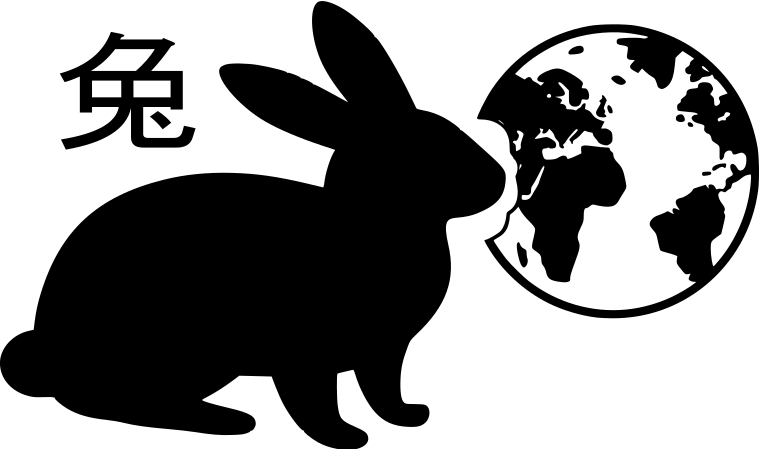
Our visit to China during the latter part of the New Year celebrations, known as Spring Festival, some years ago can be found in the post Gong Xi Fa Cai or Gung Hay Fat Choy! Happy New Year! It was a joyful time.
Food For the Festivities
Like many annual celebrations and gatherings this is the time for family and food with wide celebrations. Reunions and recipes join together in sociability and culinary joy.
Some of the more popular traditional dishes associated with lunar new year in China include a whole fish cooked with ginger, garlic and spring onion. Jiaozi – dumplings- represent coins which symbolise prosperity throughout the year. Long noodles suggest longevity and happiness and spring rolls signify wealth.
We have a recipe for baked whole fish cooked with ginger, garlic and spring onions using sea bass. The fish is always served whole as the head and tail represent the start and end of the year.

And it’s not all savoury. Sweet glutinous rice cakes suggest the possibility of moving up in the world and sweet rice balls which represent family harmony. Happy New Year!

- RECIPE Oyakodon Donburi
- Zero Waste Recipes Before Your Holiday
- RECIPE: Vegetable Biryani Tamil Nadu Style
- RECIPE: Vegan Wild Garlic Pesto
- Recipe: Venetian Pasta Sauce
- RECIPE: Biryani Raita Recipe
- RECIPE: How to Make Costa Rica’s Gallo Pinto
- Recipe: Japanese Simmered Pork Belly – Buta no Kakuni
- RECIPE: How to Make Umeboshi
The Gassho Farmhouses of Rural Japan
It’s not often that we use the word ‘unique’ because very often things described as such usually aren’t. Unique, that is. But there are some villages in rural Japan that are the only examples of their kind and they offer a fantastic glimpse into traditional life in the Japanese countryside.
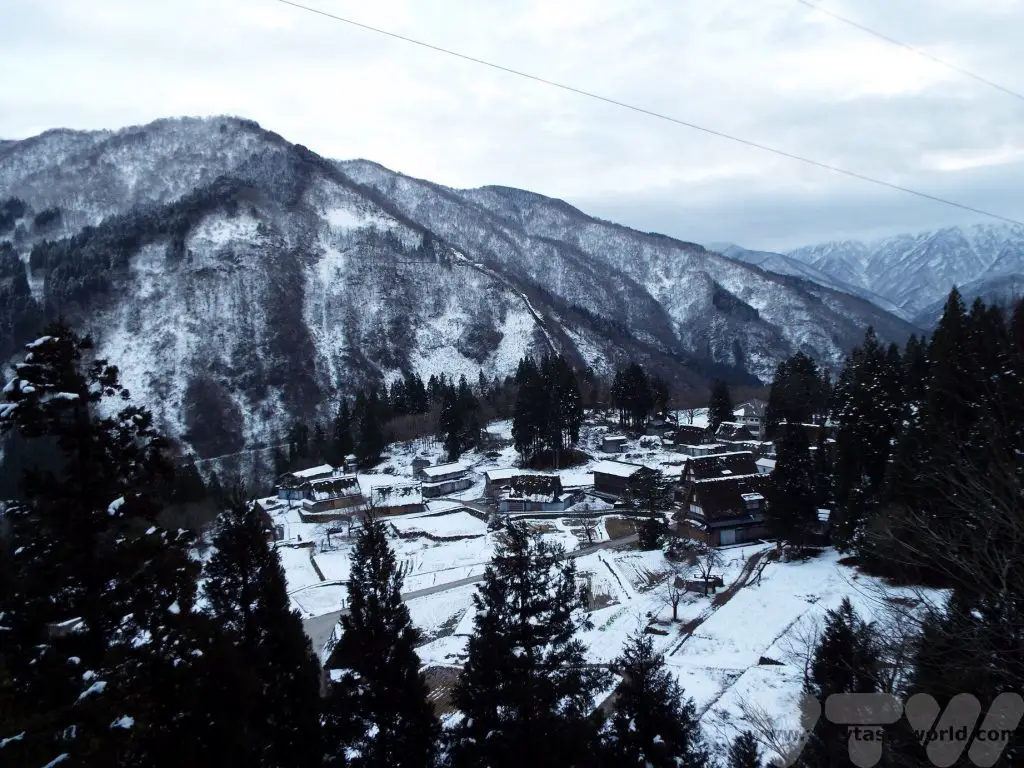
The historic mountain villages of Shirakawa-go and Gokayama have been designated as UNESCO heritage sites and were historically quite isolated from the rest of the world. The villages Ogimachi in Shirakawa-go, and Ainokura and Suganuma in the Gokayama region are located in central Honshu, on the Shogawa river valley, across the borders of the Gifu and Toyama Prefectures.
Ogimachi is probably the most famous of the villages and is known for its light-up events, where the whole village turns their lights on in winter-time and visitors come from far and wide to marvel at the beauty of a snowy wonderland. These are scheduled events and hugely popular. Reservation is essential, not only for staying in the village but also for attending the viewing and some transportation options.
Initially when planning our winter trip we thought that Ogimachi would be the obvious place to visit but unfortunately everybody else thinks that too. It was impossible to find accommodation in this lovely village, even when trying to book several months in advance. But we had a Plan B which worked very well indeed. Ainokura is smaller and quieter but similarly delightful.
Getting to Ainokura in Rural Japan
We had been staying in a business hotel in the lovely city of Kanazawa on the western coast of Japan and, as we planned to return there, left our main luggage at the hotel and just took an overnight bag with us. We then caught the shinkansen (bullet train) from Kanazawa to Shin-Takoaka. It is possible to catch a bus to Ainokura from Shin-Takoaka – the journey takes just over an hour or so – but we caught possibly the cutest train ever to Johana and caught our bus from there.
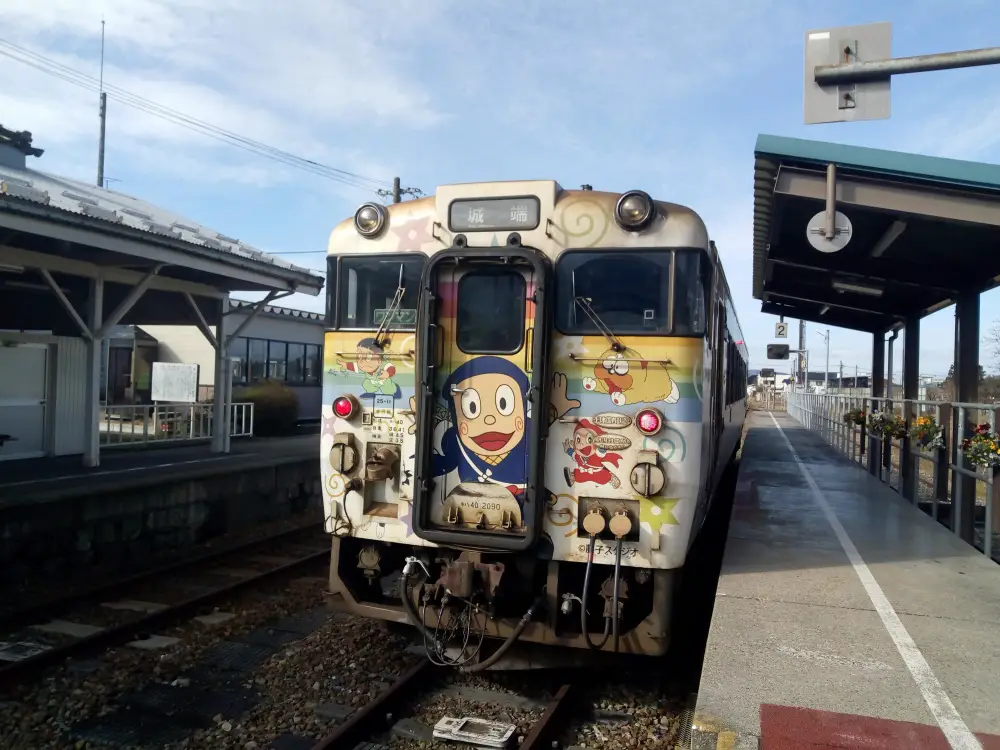

Ainokura can also be reached from Toyama. The shinkansen goes to Toyama and it’s possible to catch a bus from there. It is feasible to visit the village as a day trip from both Takoaka and Toyama but we recommend staying overnight.
Our bus to Ainokura left from Johana station and we embarked on a pleasant journey through the Japanese countryside. A short walk from the main road took us into the village.
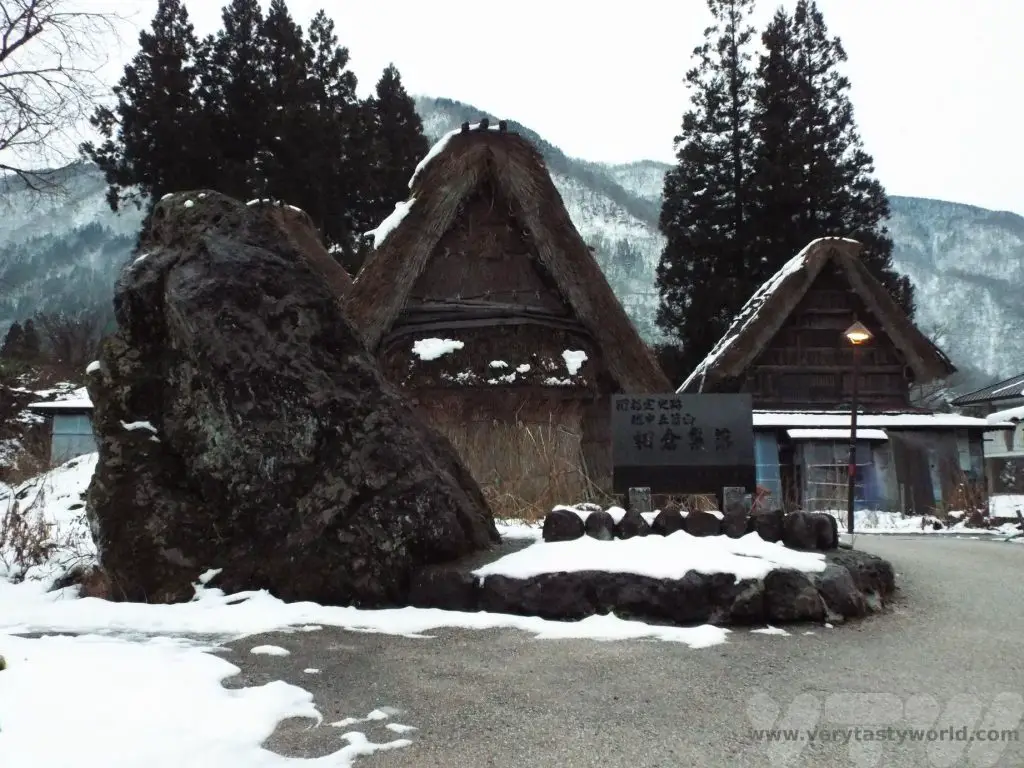
A word of warning: If you are visiting during the winter the area can experience a lot of snowfall – 2-3 metres on occasion. This may mean that occasionally buses can’t get through and are delayed until the roads can be cleared. It’s worth bearing this in mind when planning your onward journey.
Staying in a Gassho Farmhouse
The farmhouses are called ‘gassho’ which means ‘joining hands in prayer’ due to their very steeply pitched thatched roofs. Because the area experiences such heavy snow in winter, the roof design ensures that snow falls off the building quickly and this helps prevent the structure being crushed by its weight.
The houses have three or four levels – the top levels are not living areas but used for various industrial or farming purposes, such as making washi paper or rearing silkworms.
The front and back have a large gable with windows to let the light in.
We booked a room at Yomoshiro ryokan, a delightful family run house.
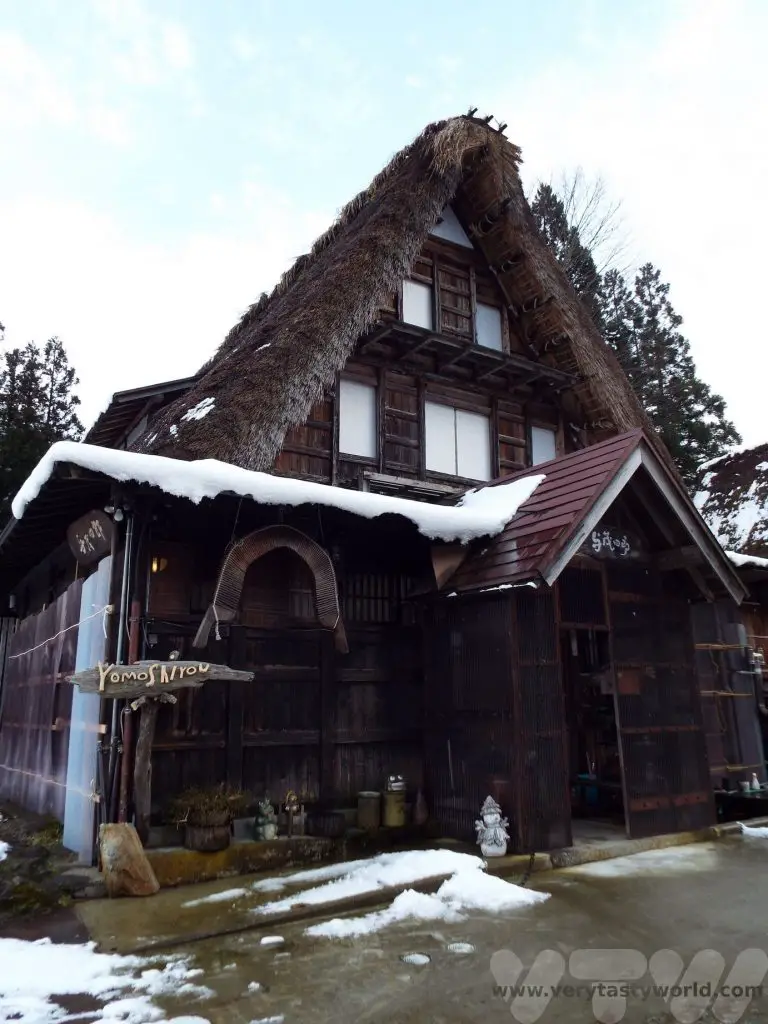
On arrival we took off our shoes and were offered an array of indoor slippers to wear. This is very common in all Japanese households, it’s considered very rude to wear outdoor shoes inside a house.
Our hosts were lovely and very welcoming. We were offered a cup of warm tea and a biscuit in the living area.
The living area has a sunken fire with a kettle suspended above the embers. The room was warm and toasty.
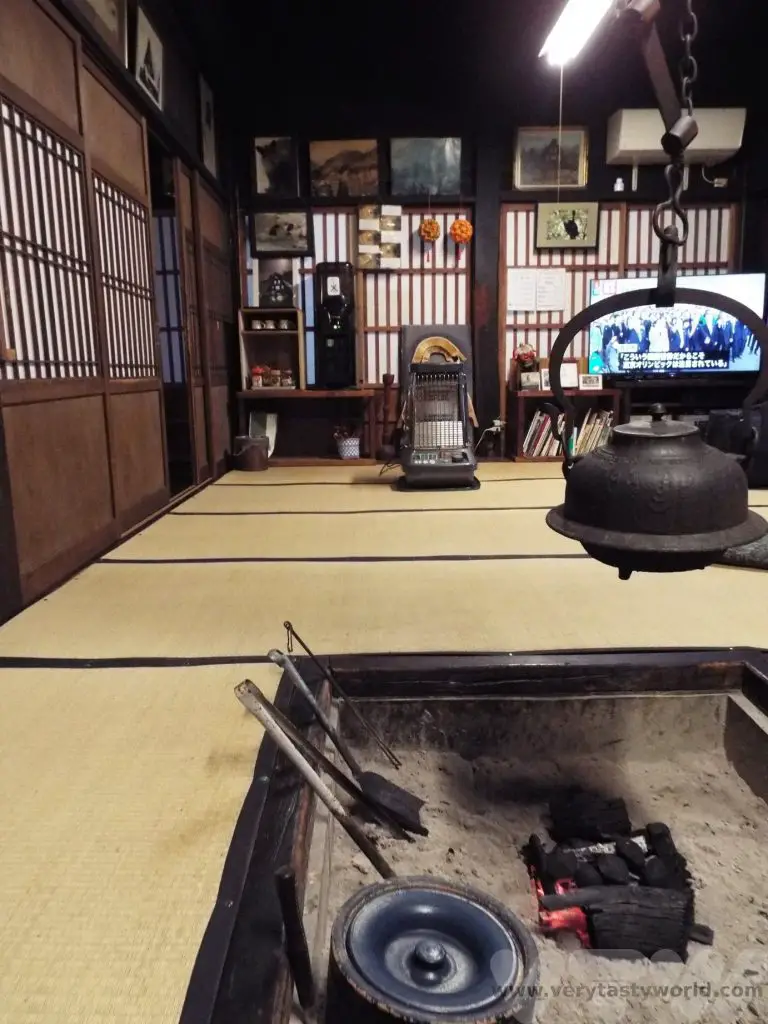
Our room was in traditional style with tatami (reed) mat and futon bedding on the flooring. Usually the bed is laid out while you are enjoying dinner.
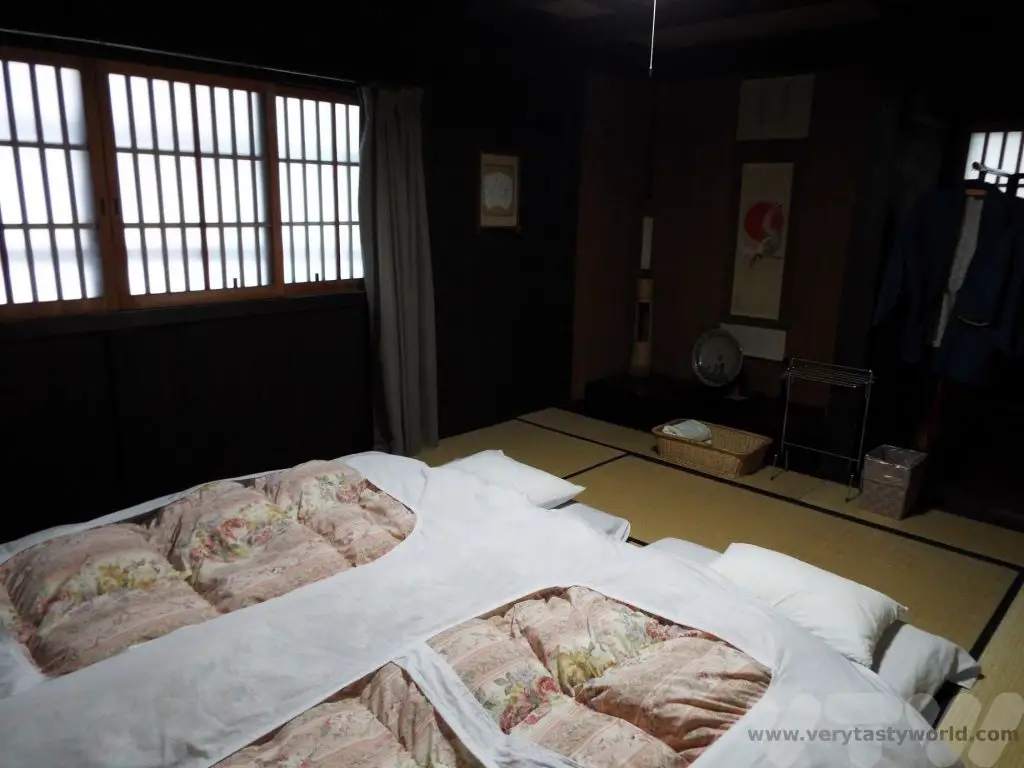
The bathroom and toilet were shared with other guests and one thing that you need to remember in Japan is to change your indoor slippers for bathroom slippers when you use the bathroom or toilet. And change them back – it is really easy to forget to change the slippers back and walking on the tatami in your bathroom slippers is like walking inside in your outdoor shoes.
Exploring the Village
We visited the day that our hosts reopened their accommodation after the new year holiday so unfortunately some of the attractions in the area weren’t yet open. There is a museum of traditional industries which demonstrates the paper making and silk activities of the region.
The village also has a folk museum that showcases traditional utensils, tools and musical instruments from the region.
There are a number of walks in the area. One of these is essential – a viewing area close to the village entrance where you can climb up the hillside to take that perfect shot of the village, nestled amidst the mountains.

Back to the Gassho for Dinner
The costs of our stay included dinner and breakfast and this was a highlight of the visit as the food on offer was locally sourced, some even grown by our hosts. We dined with the other guests in the living area.
Our home-cooked dinner was utterly delicious. Char, a fish a bit like a trout, was salted and roasted on a spit in the fire.
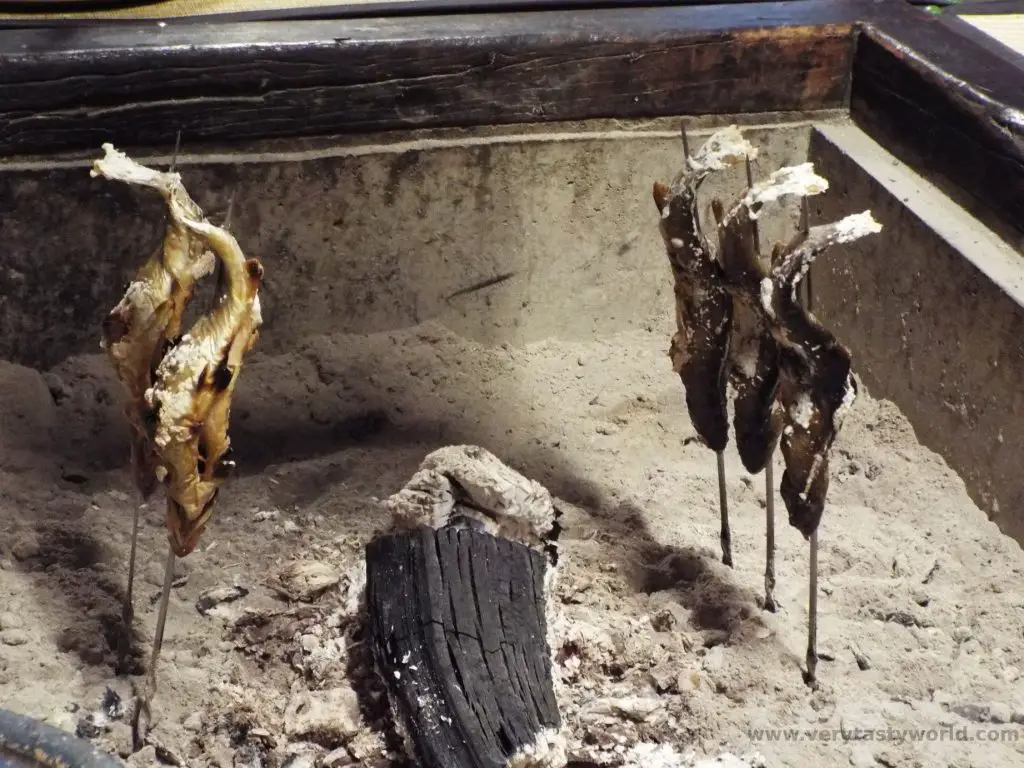
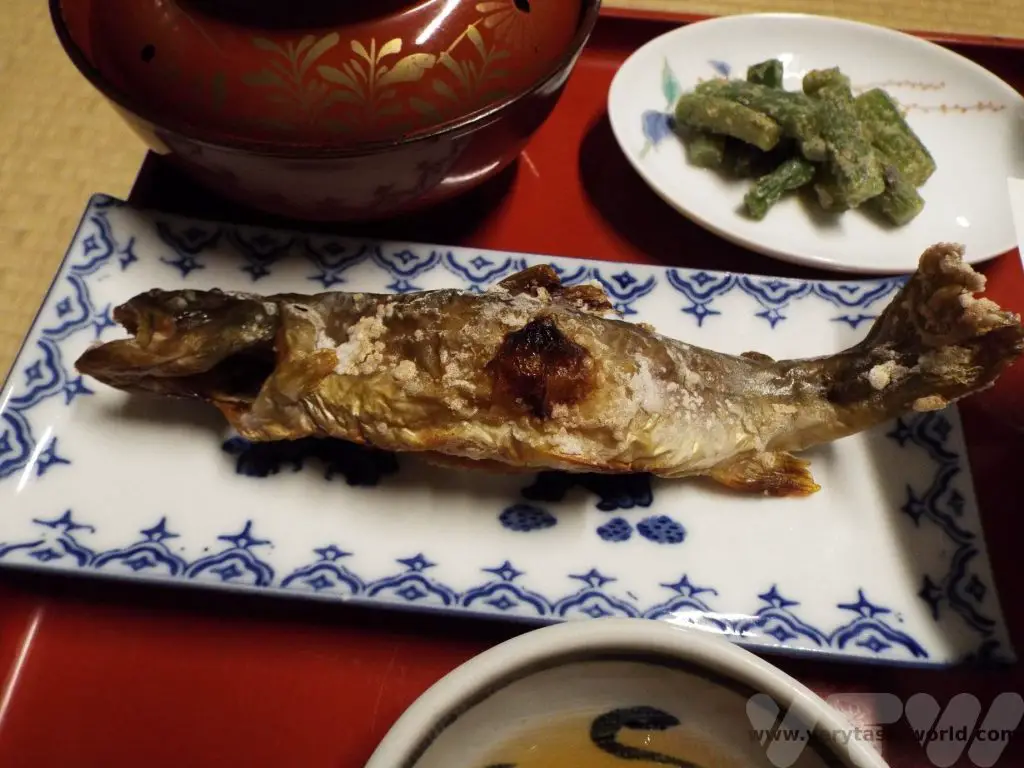
We were also served koi sashimi, vegetable tempura and a home-grown spaghetti squash, mountain greens, and simmered bamboo shoots, mushrooms and sweet potato.

Rice accompanied the meal and we also enjoyed some local sake.
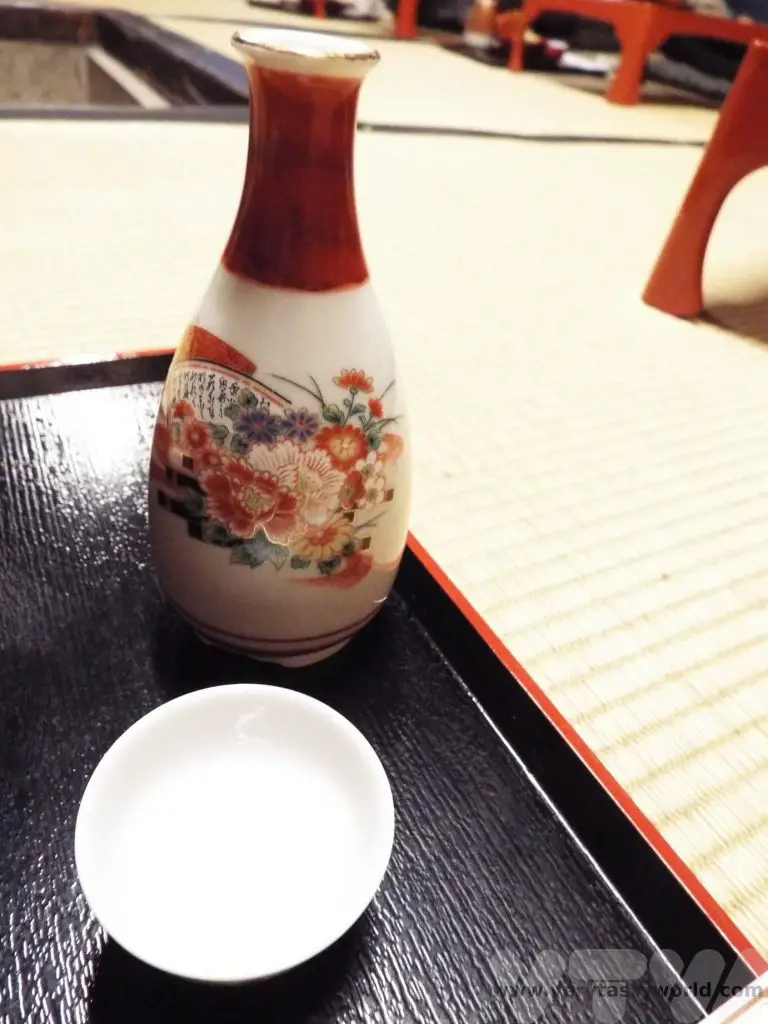
After dinner we were entertained with a documentary about the villages and then our hosts played some music using traditional instruments.
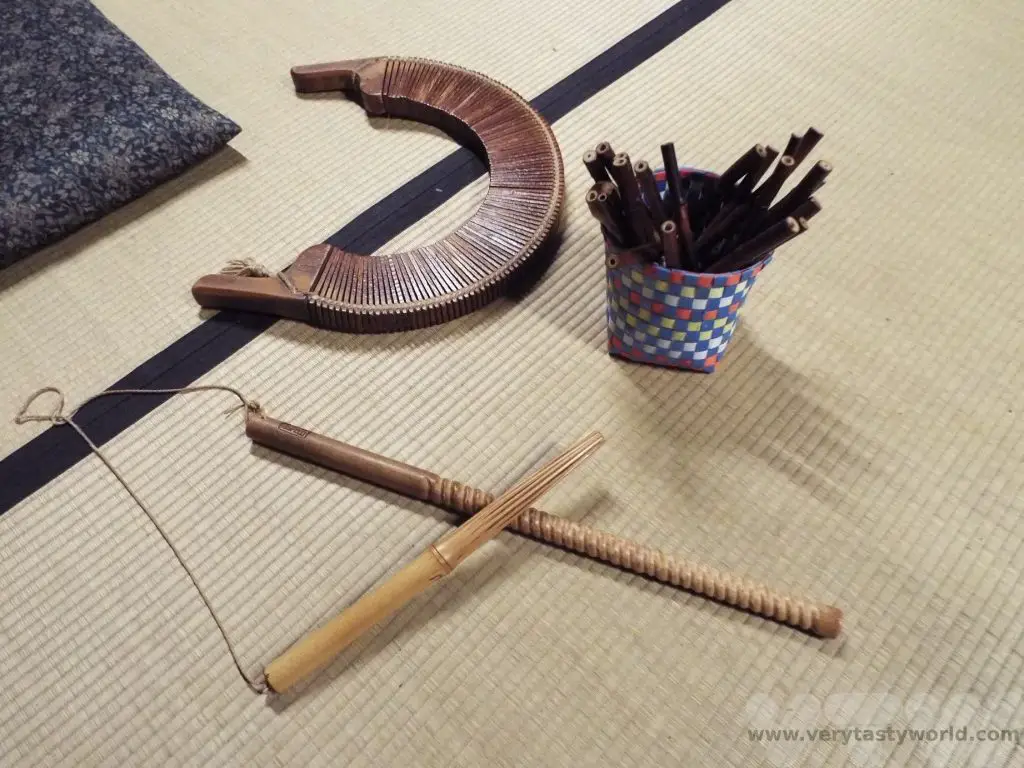
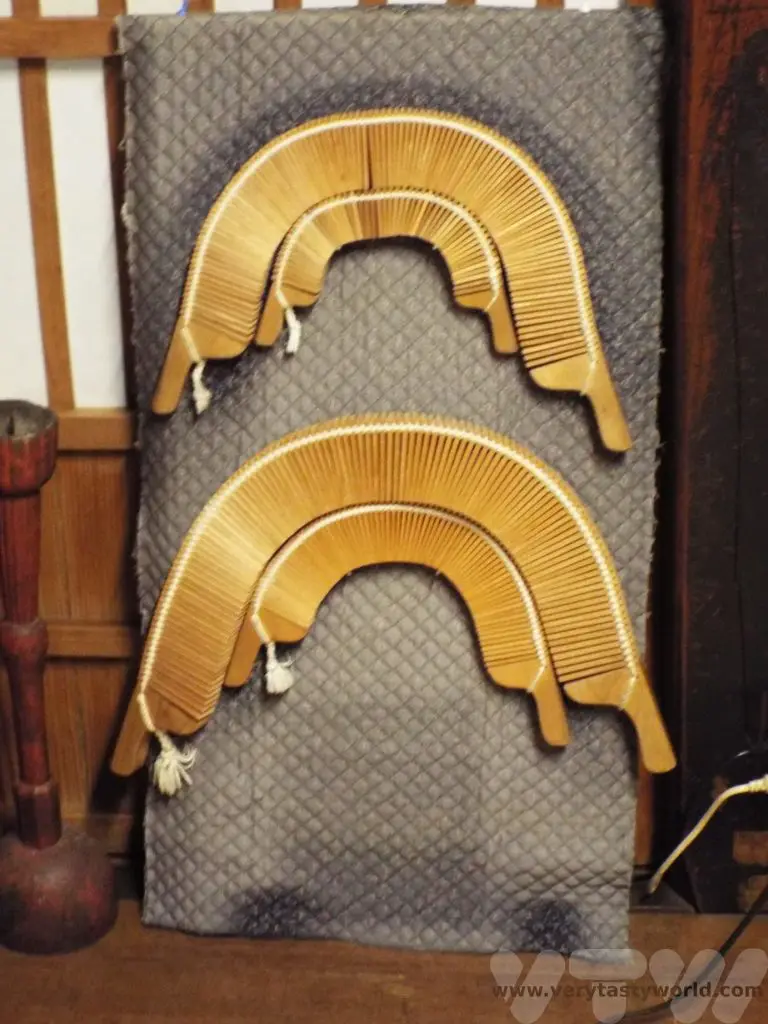
A lot of these are percussion, notably the sasara which comprises many wooden clappers which are strung together.
A Cosy Night’s Sleep
At bedtime we were provided with hot stones to put into our futons.
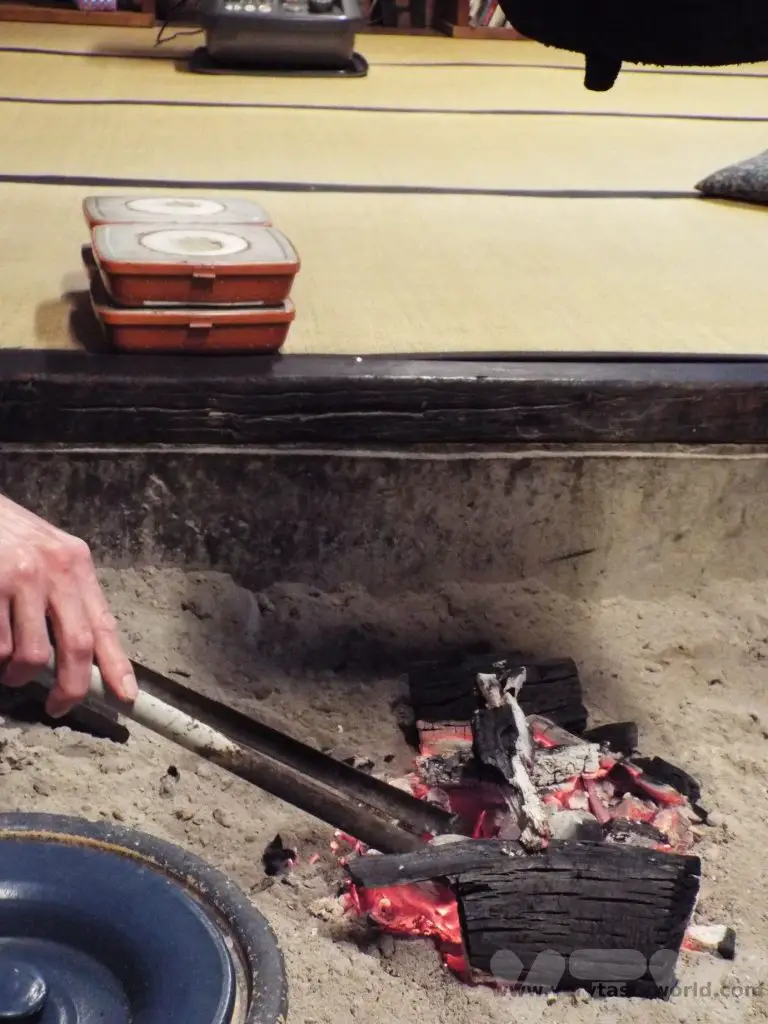
These stones had been heated in the fire and were placed inside ceramic boxes then wrapped in a thick cloth.
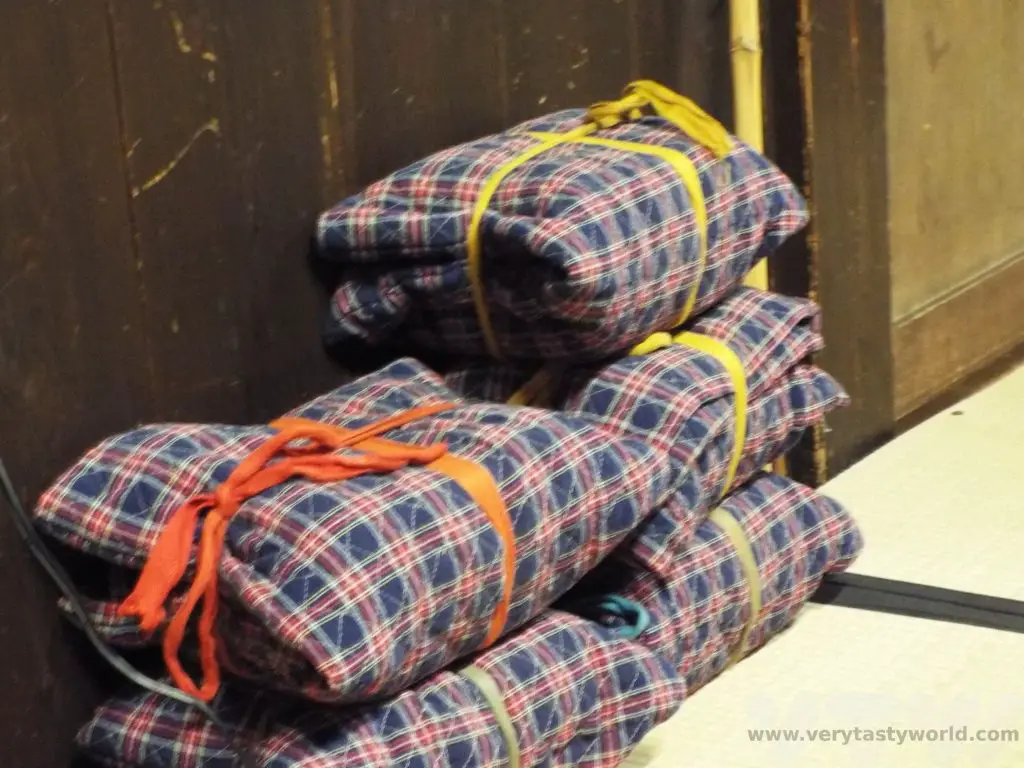
These were better than any hot water bottle we’d ever used, they retained the heat so well – they actually felt as though they were getting warmer through the night.
Breakfast the following morning was a traditional Japanese meal and also delicious. There were lots of fresh vegetable dishes, rice and miso soup.
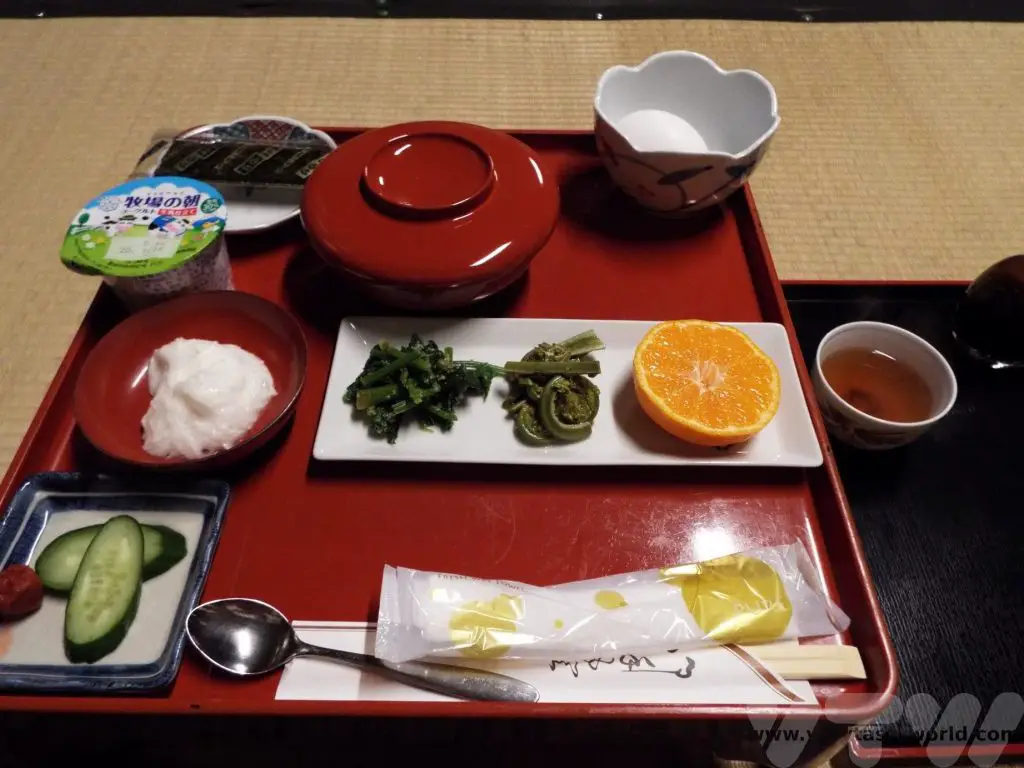
We were given the choice of a raw or boiled egg. We always choose raw egg. You mix it into the rice, which partially cooks the egg, add a bit of soy sauce to your taste and then scoop up the flavourful mixture with a piece of nori seaweed. You usually get a sour and salty umeboshi plum – a real wake-up call!
Staying in a gassho is a delightful way to spend time in rural Japan and is highly recommended. But… make sure you plan your trip and book early!
Related Posts You May Enjoy

- Recipe: Simmered Shiitake Mushrooms

- How to Use Public Transport in Japan

- RECIPE Oyakodon Donburi

- Planning a Trip to Japan

- The Makanai: Cooking for the Maiko House

- Setsubun Food – Bean Throwing Day

- The Gassho Farmhouses of Rural Japan

- Recipe: Japanese Simmered Pork Belly – Buta no Kakuni

- RECIPE: How to Make Umeboshi


Recipe: Japanese Simmered Pork Belly – Buta no Kakuni
Japanese simmered pork belly, known as buta no kakuni, is a rich, indulgent dish that is sweet, savoury, sticky and utterly sumptuous. Pork belly is a really fatty cut of meat but fat means flavour and the process of cooking the pork for a long time ensures that a lot of the fat will melt away. Any fat that remains is soft and juicy.
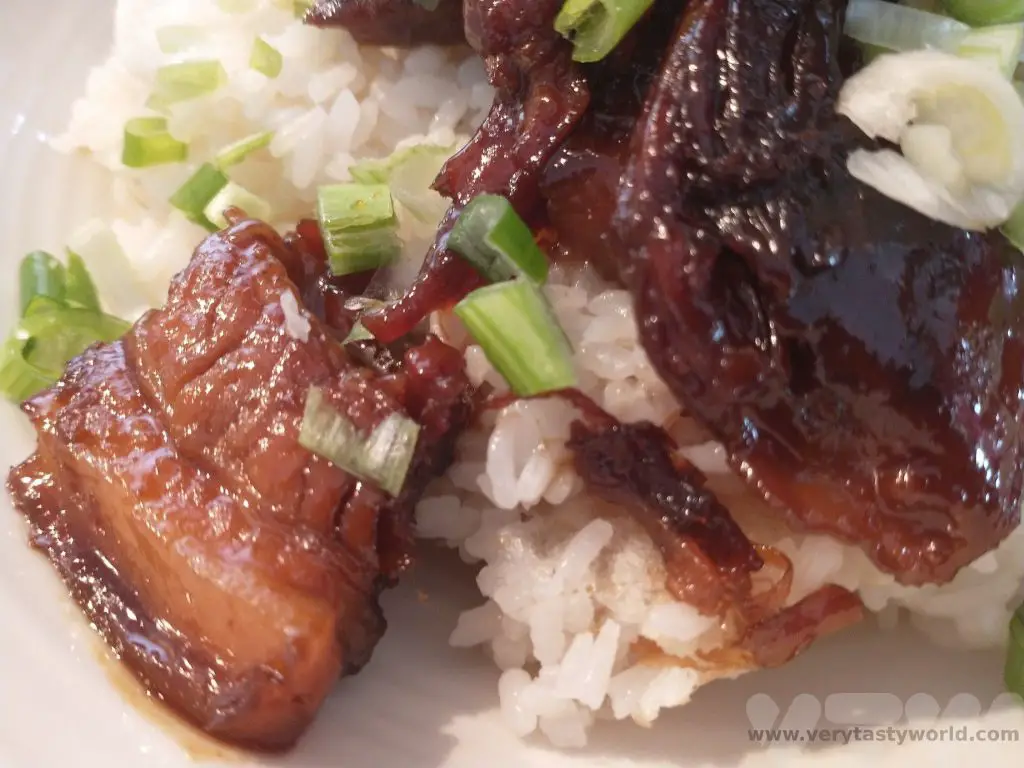
In Japanese, buta means pork and kakuni derives from two longer words: kaku- to cut into cubes and ni – simmer.
It is traditional to serve kakuni with a drop of Japanese mustard called karashi (辛子 or からし). Karashi is a bit darker yellow than most other mustard. It does not really have much acidity in it (unlike other mustards) and very hot. It is perhaps closest to hot English mustard, which is a good substitute.
How to Make Buta No Kakuni Japanese Simmered Pork Belly (Serves 2)
Ingredients
Portion of pork belly per person (allow around 150-200g per person depending on how hungry you are)
Water
Stock cube – dashi stock if possible or you can make your own
2 spring onions, sliced into 2-3cm chunks plus another for garnish
2 inches of ginger, peeled and cut into strips
16 tbs (1 cup) of water
4 tbs (1/4 cup) soy sauce
4 tbs (1/4 cup) cooking sake (if you can’t get sake, white wine will be a good substitute)
4 tbs (1/4 cup) caster sugar
4 tbs (1/4 cup) mirin (if you can’t get mirin, add a little more sake and sugar)
Generous splash of rice vinegar (we like this to counterbalance some of the sweetness of the dish)
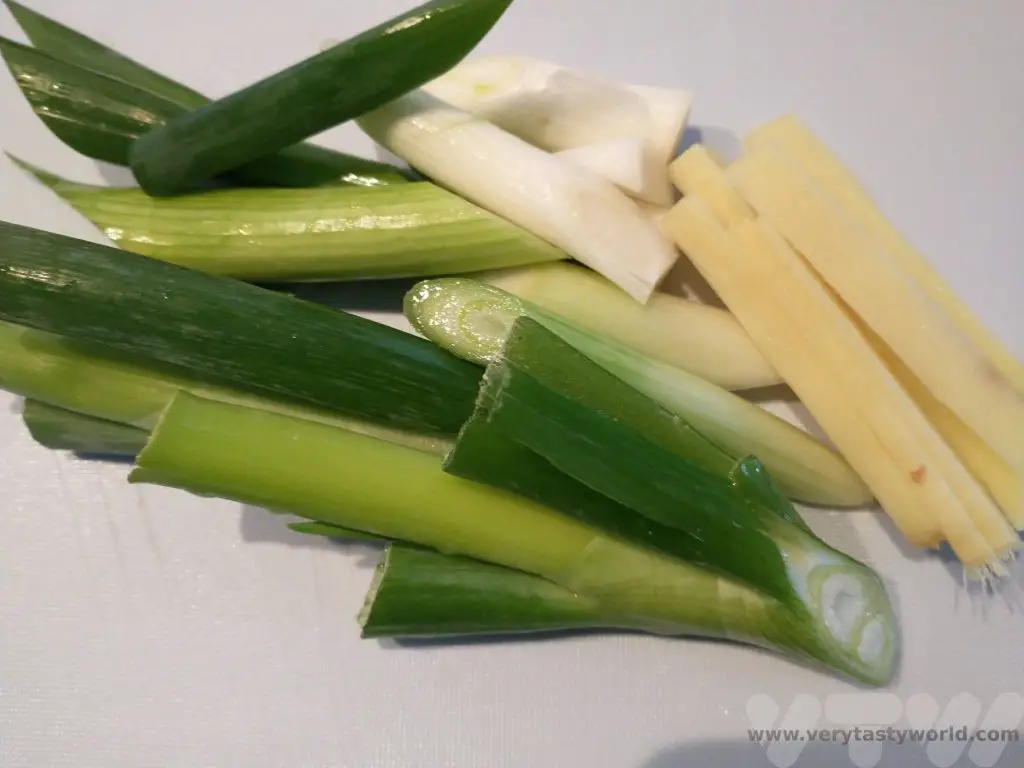
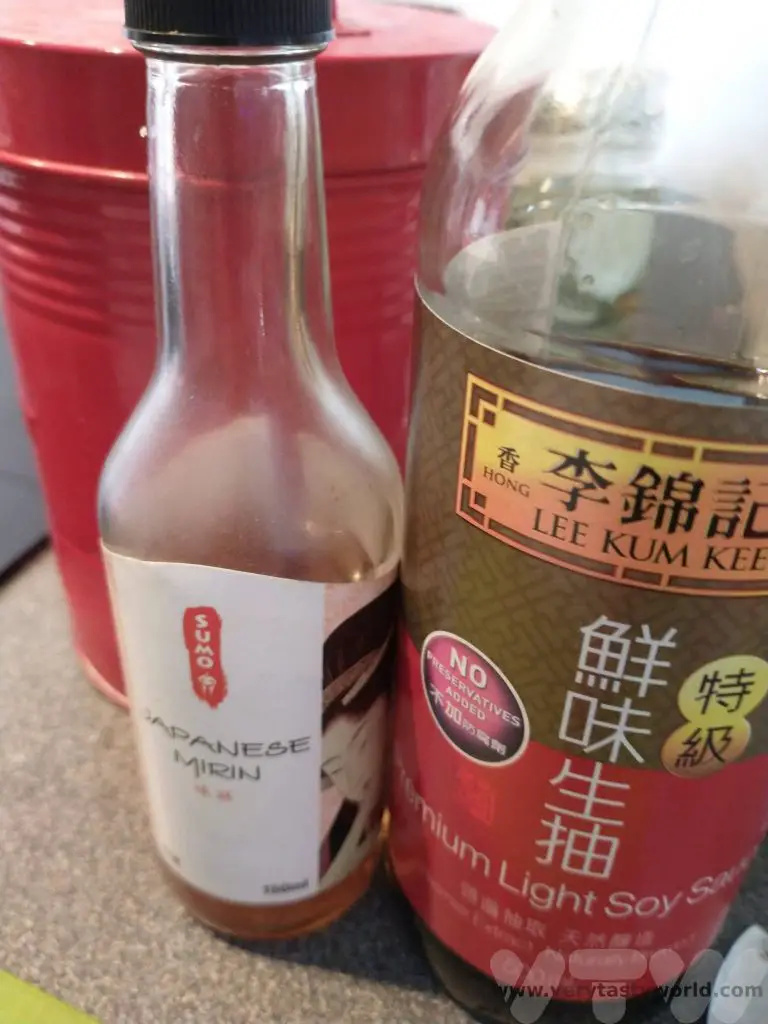
Method
Place the pork belly in a frying pan and sear on both sides for a couple of minutes.
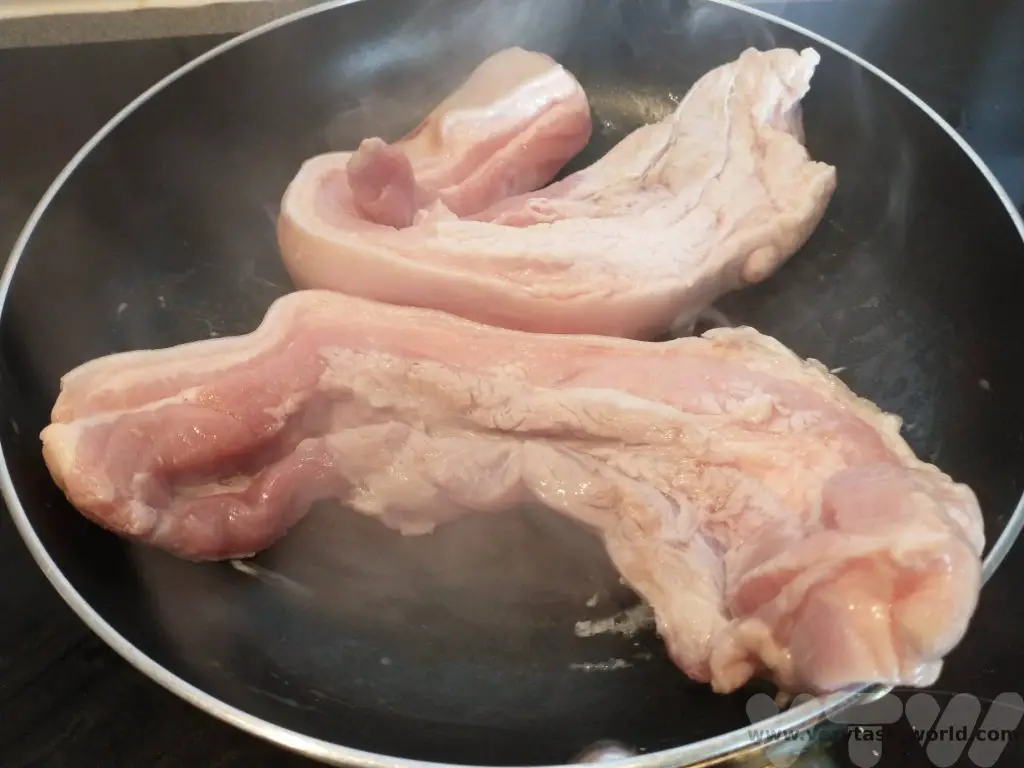
Place the pork belly in a pot and cover with water. Add the stock cube, spring onion and ginger. Turn on the heat and bring the water up to a simmer. Simmer the pork for 2 hours or until nice and tender. Alternatively, you can do as we do and use a pressure cooker. Just prepare the pork as above and cook at pressure for 40 minutes.
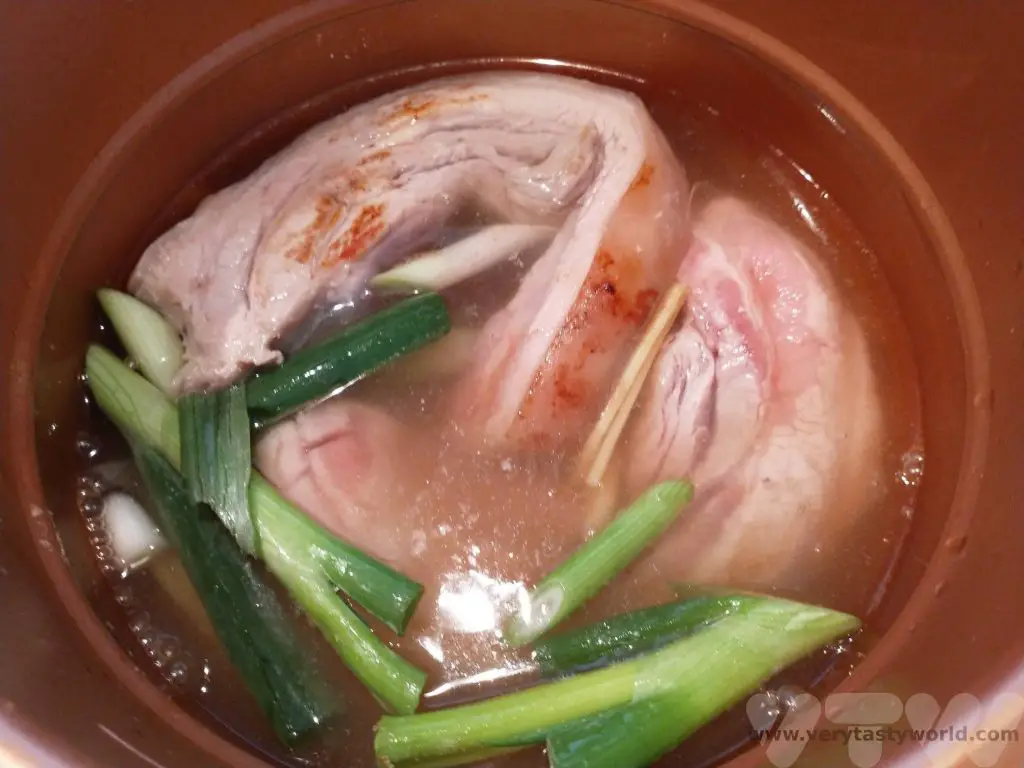
When the pork comes out it should be wonderfully soft and close to falling apart (but not actually falling apart). Cut the pork into chunks – about 2cm length. We also decided to cut off the rind at this stage.
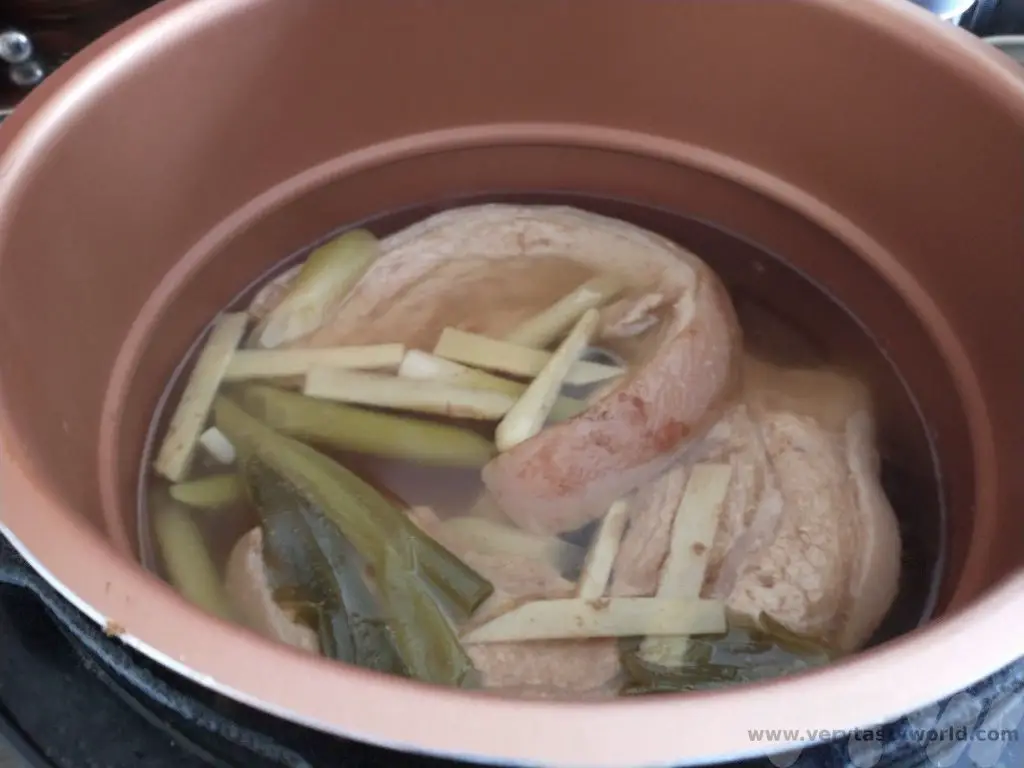
Don’t forget to keep the stock – it will make a wonderful base for ramen noodles or soup. You can pop it into the freezer if you’re not going to use it immediately.
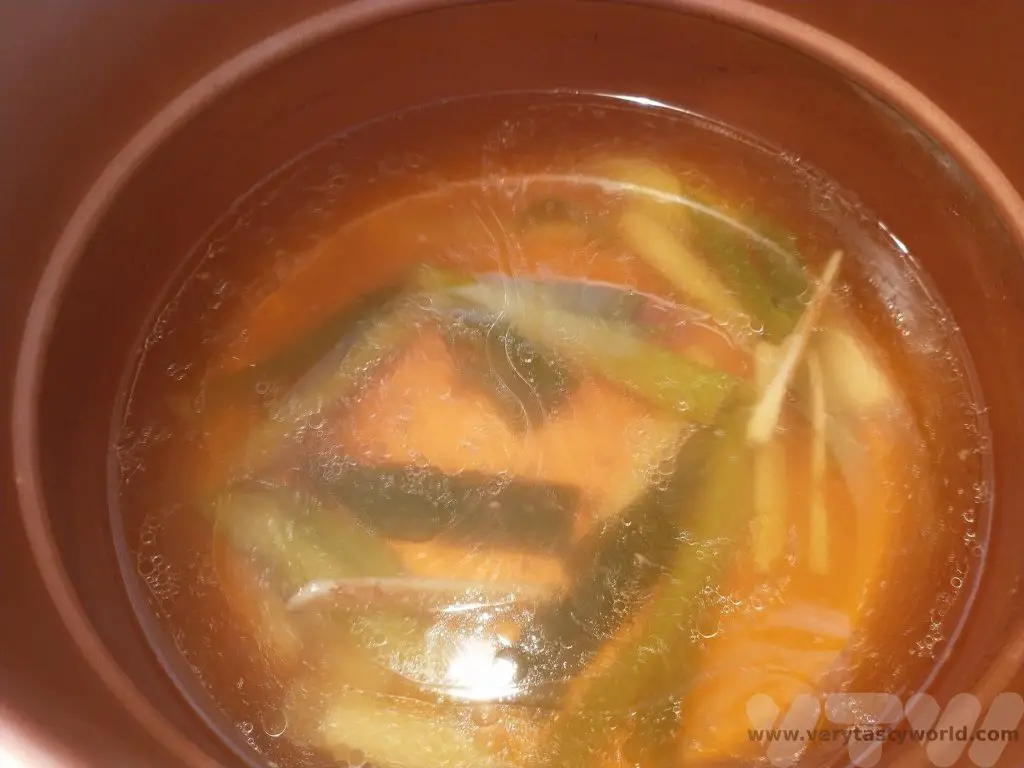
Put the water, soy sauce, sake (or wine), mirin and sugar into a pan and bring to the boil.
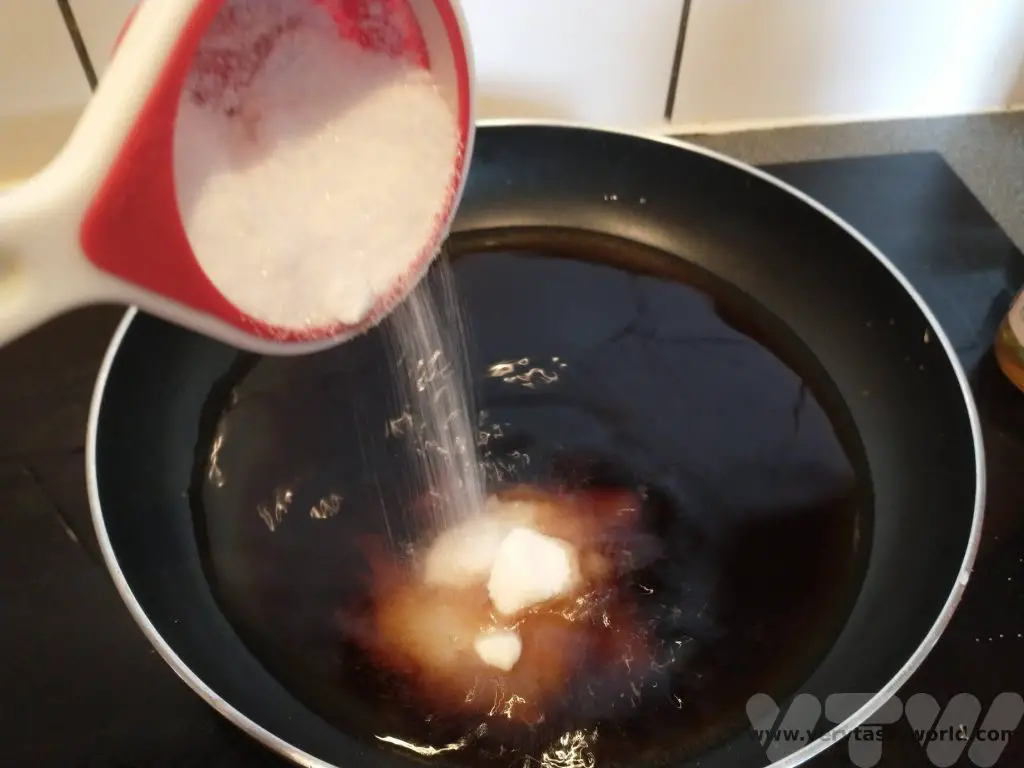
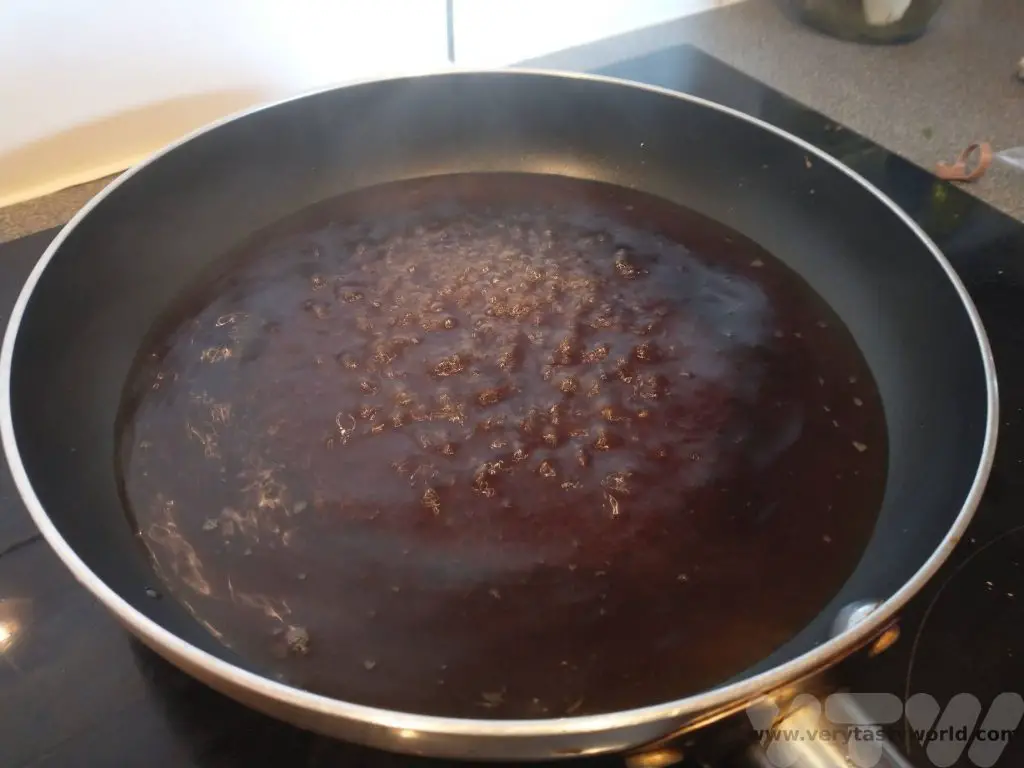
Carefully place the pork chunks into the pan and press down so that the sauce completely covers them.
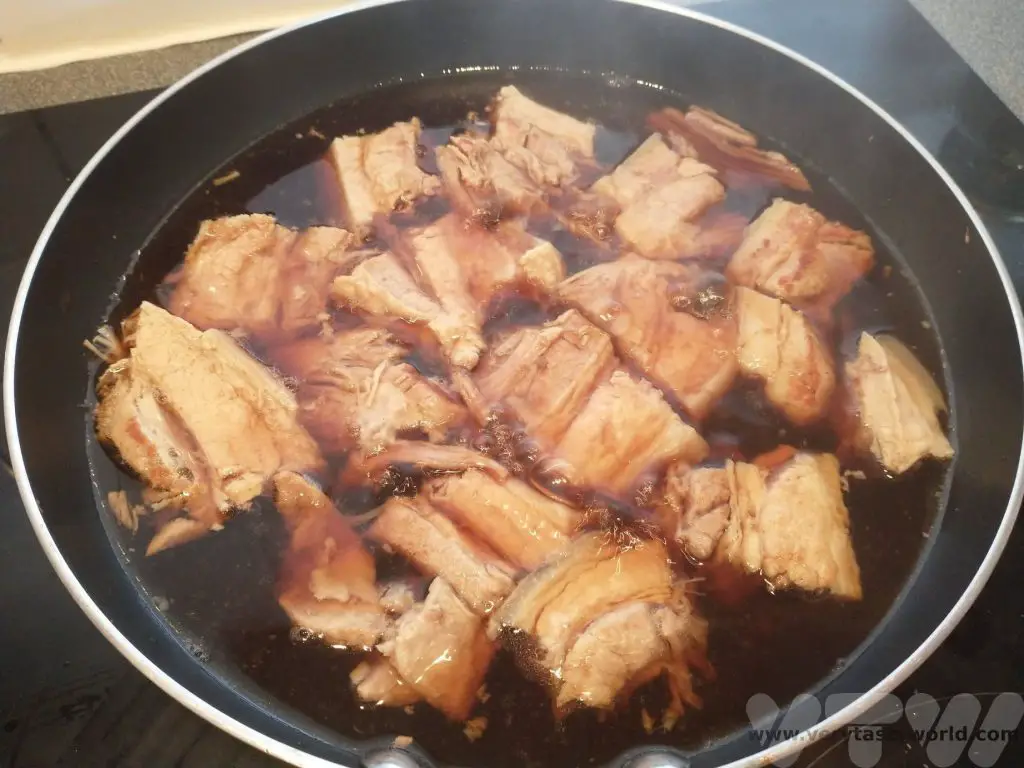
(In retrospect we should have put the pork into a deeper pan – a casserole dish – because the sauce did splutter a lot and because there was sugar in it, it stuck to our hob which made clearing up a bit of a nightmare!)
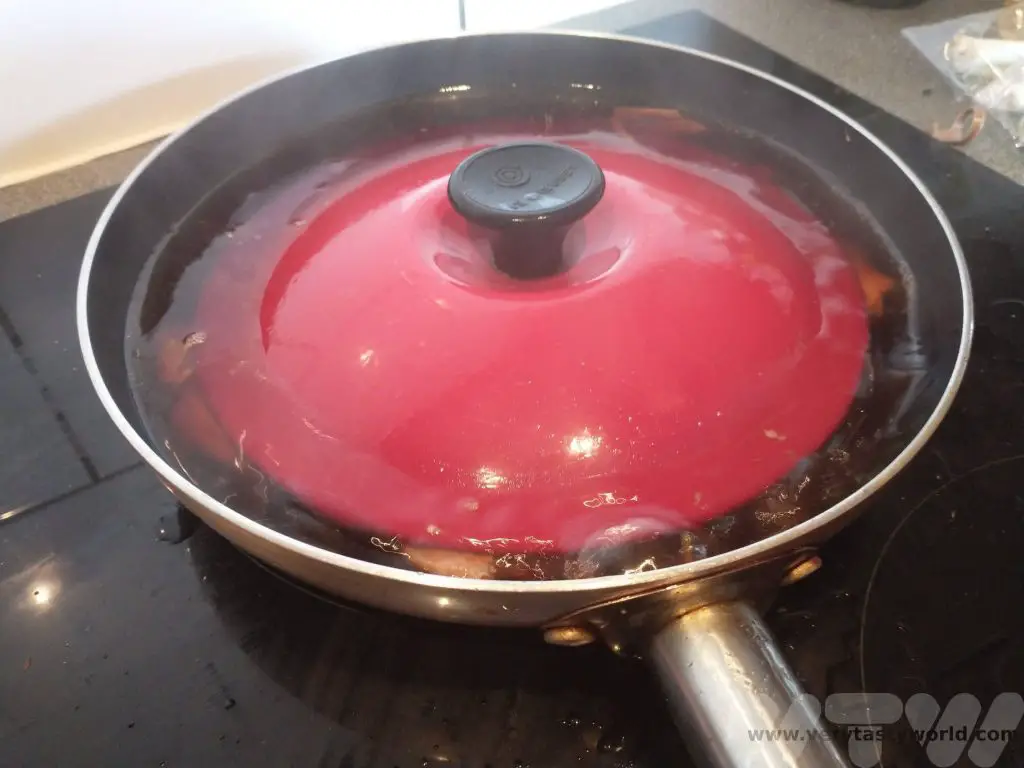
Reduce the sauce until it has almost become a paste – it will have coated the pork and caramelised on the underside. It will look glossy and luscious.
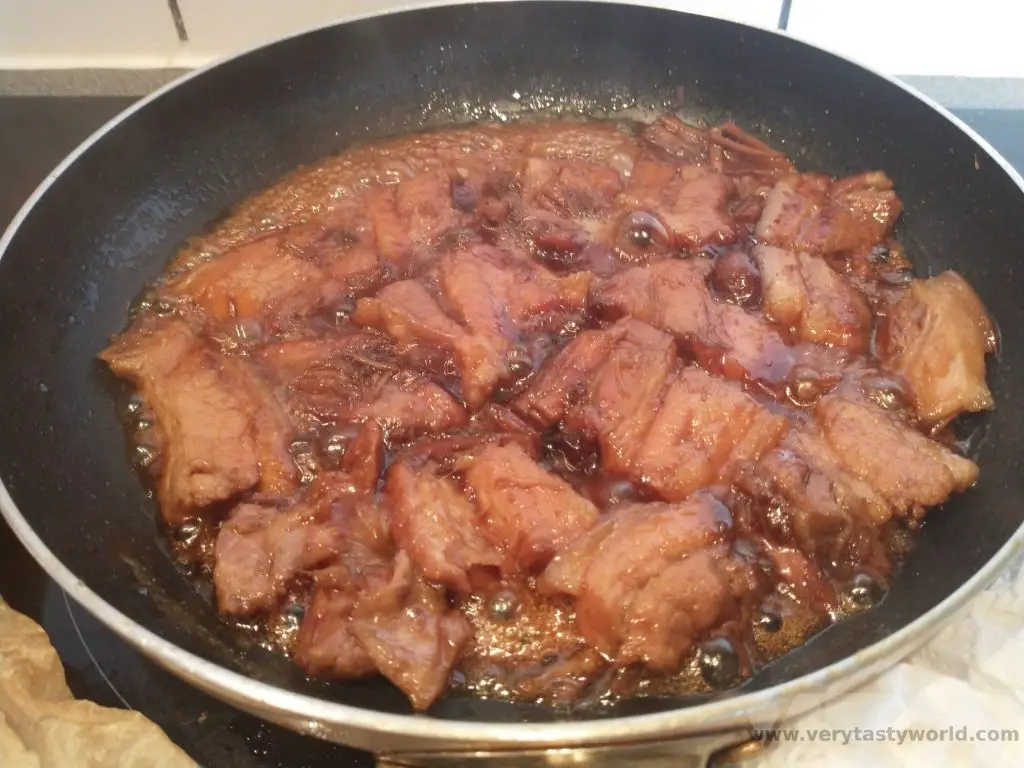
Serve atop plain white rice garnished with chopped spring onion. It is often accompanied with a splodge of karashi. We like adding some pickled ginger as well.
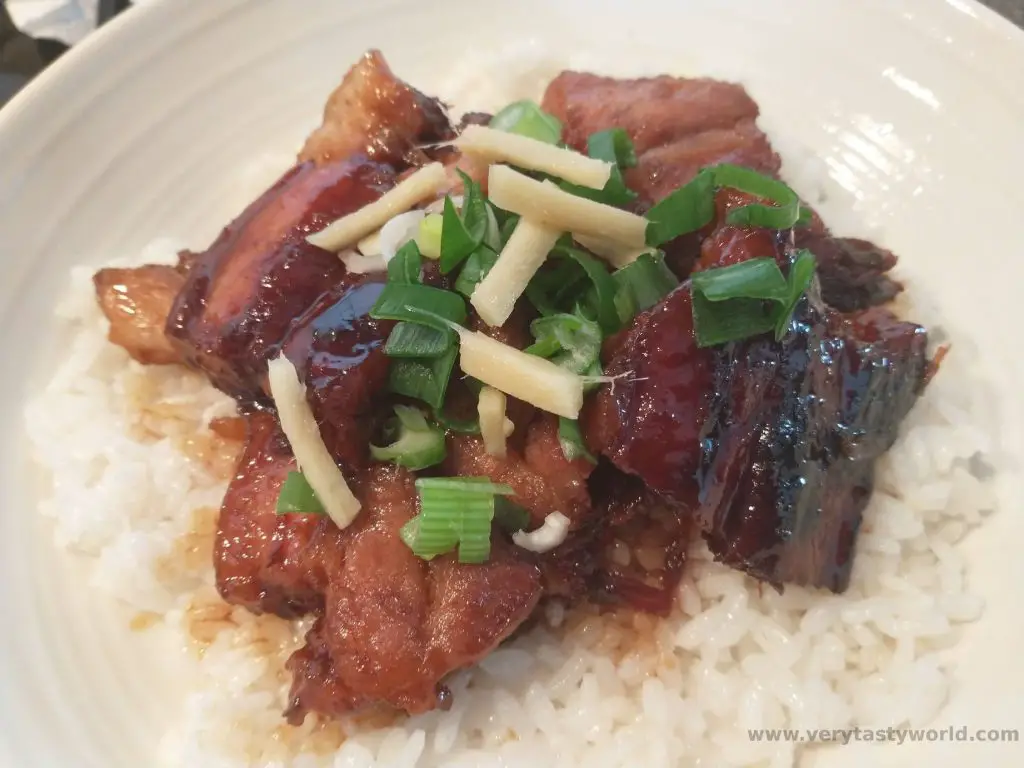

- RECIPE Oyakodon Donburi
- Zero Waste Recipes Before Your Holiday
- RECIPE: Vegetable Biryani Tamil Nadu Style
- RECIPE: Vegan Wild Garlic Pesto
- Recipe: Venetian Pasta Sauce
- RECIPE: Biryani Raita Recipe
- RECIPE: How to Make Costa Rica’s Gallo Pinto
- Recipe: Japanese Simmered Pork Belly – Buta no Kakuni
- RECIPE: How to Make Umeboshi

- Recipe: Simmered Shiitake Mushrooms

- How to Use Public Transport in Japan

- RECIPE Oyakodon Donburi

- Planning a Trip to Japan

- The Makanai: Cooking for the Maiko House

- Setsubun Food – Bean Throwing Day

- The Gassho Farmhouses of Rural Japan

- Recipe: Japanese Simmered Pork Belly – Buta no Kakuni

- RECIPE: How to Make Umeboshi

A Chiang Mai Tour in Northern Thailand
Chiang Mai is the largest city in northern Thailand and is a lovely place with a very laid back vibe. There are plenty of things to see and these aren’t just confined to the city itself. There are loads of activities to suit all interests – whether cultural or natural – both around town and into the wider countryside. It’s definitely worth spending time exploring this lovely city and surrounds, whether on an organised Chiang Mai tour or exploring independently. We spent five days in and around the region and combined our own exploration with some guided walks which were great for understanding the history of this delightful city.
An Old City With Walls and A Moat
Chiang Mai was founded by the Lanna King, Mangrai, in 1296. The Lanna people were from Northern Thailand and the name translates to ‘Kingdom of a Million Rice Fields.’ Mangrai had established the city of Chiang Rai in 1262 as the capital of his kingdom and later, following both friendship pacts and wars with other local kingdoms, he moved further south. Due to its location Chiang Mai was vulnerable to invasion from the Taungoo Dynasty of the Bamar People (from Myanmar) and the Mongol empire. As a result it was heavily fortified with both a moat and a high city wall, which remain to this day. The old city is surrounded by an extremely pretty walled canal with four gates.
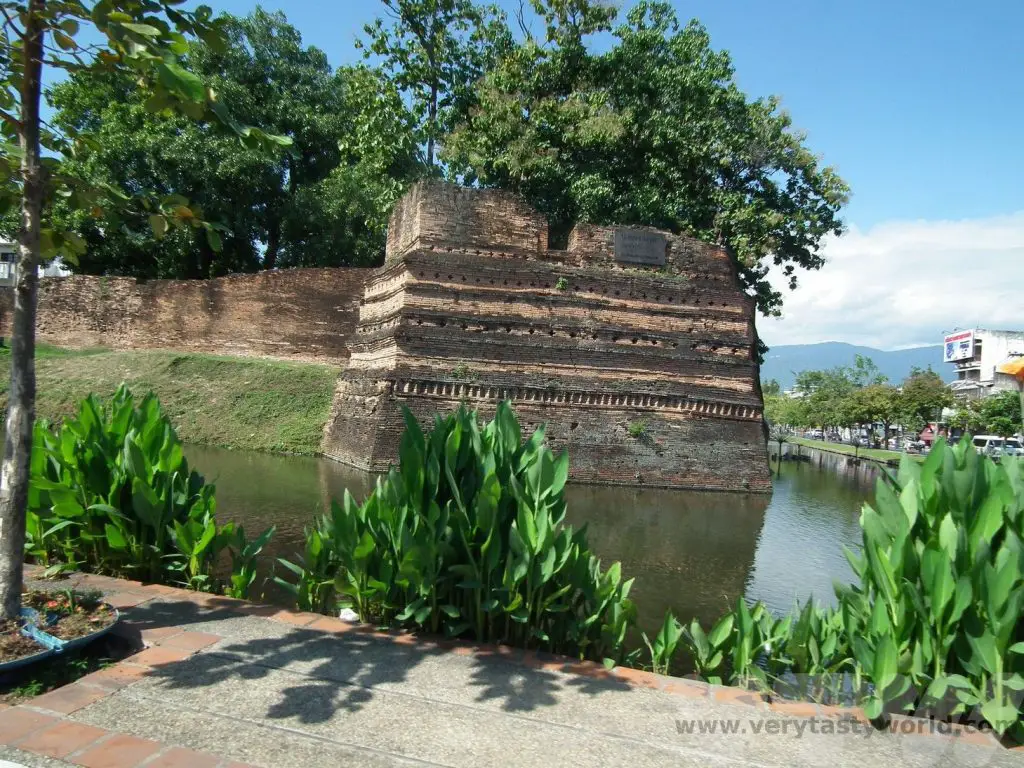
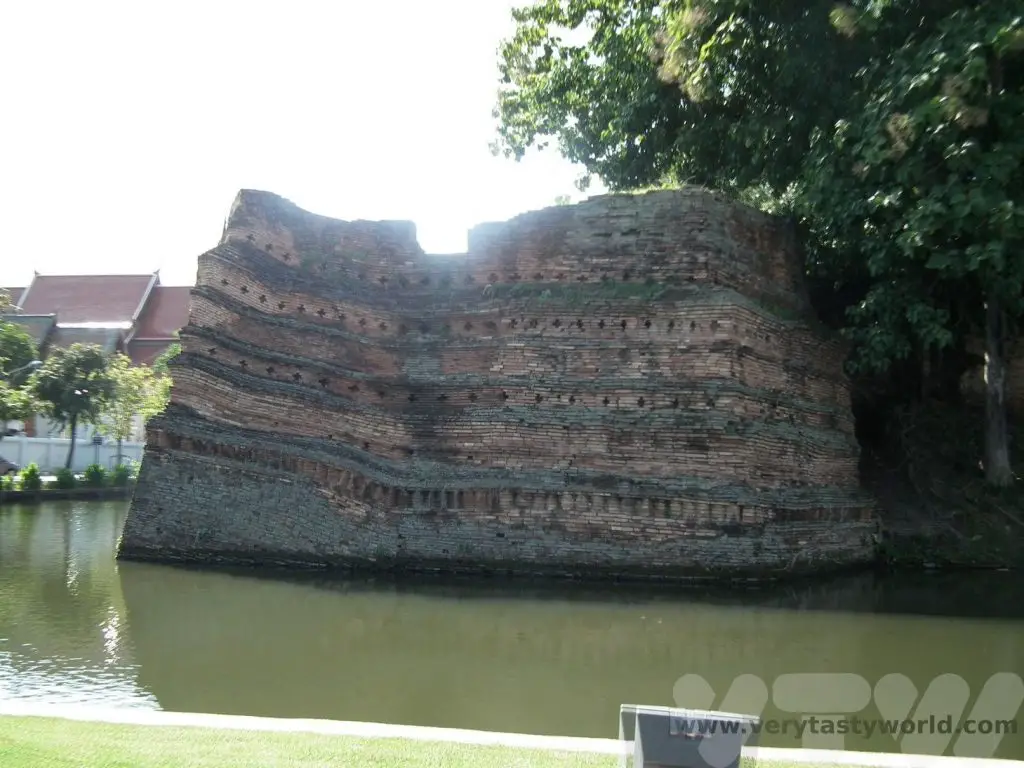
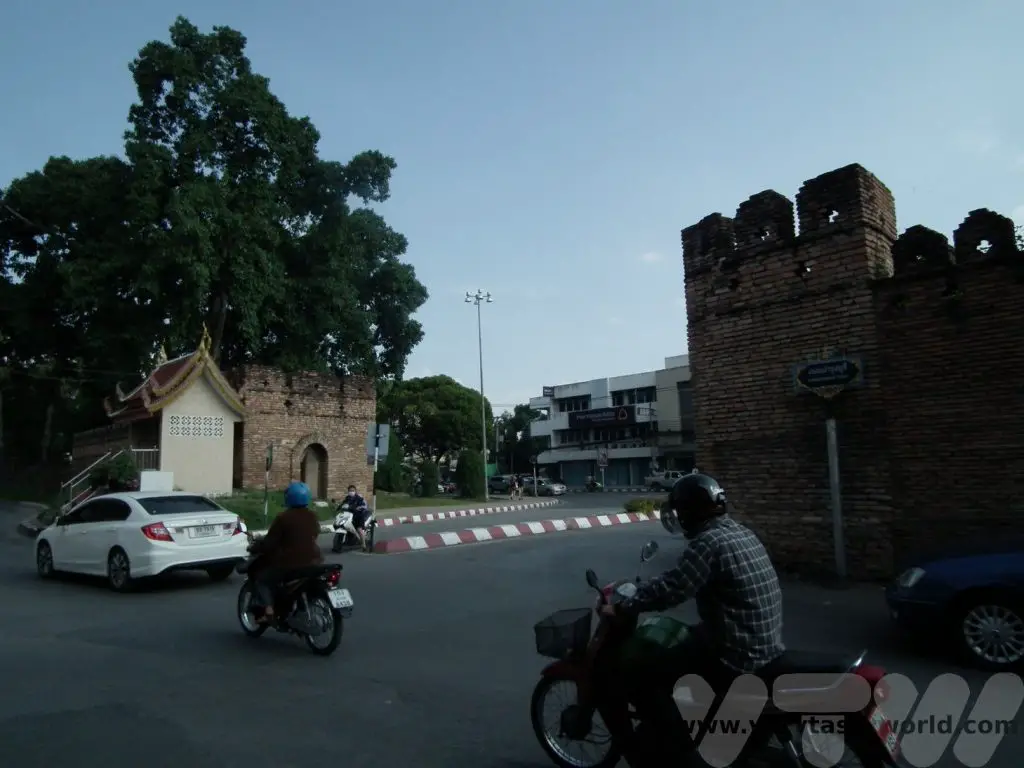
Old Town Chiang Mai Temples
Chiang Mai has well over a hundred temples and it is a pleasure just wandering through the city to discover the many gems that the city to offer.
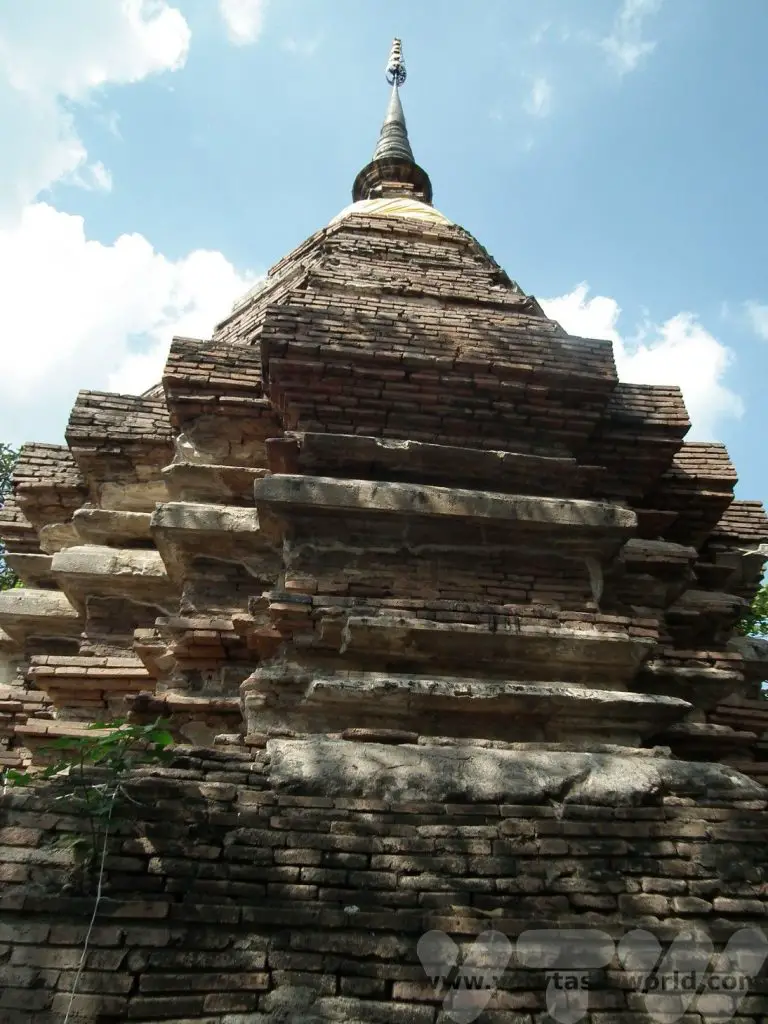
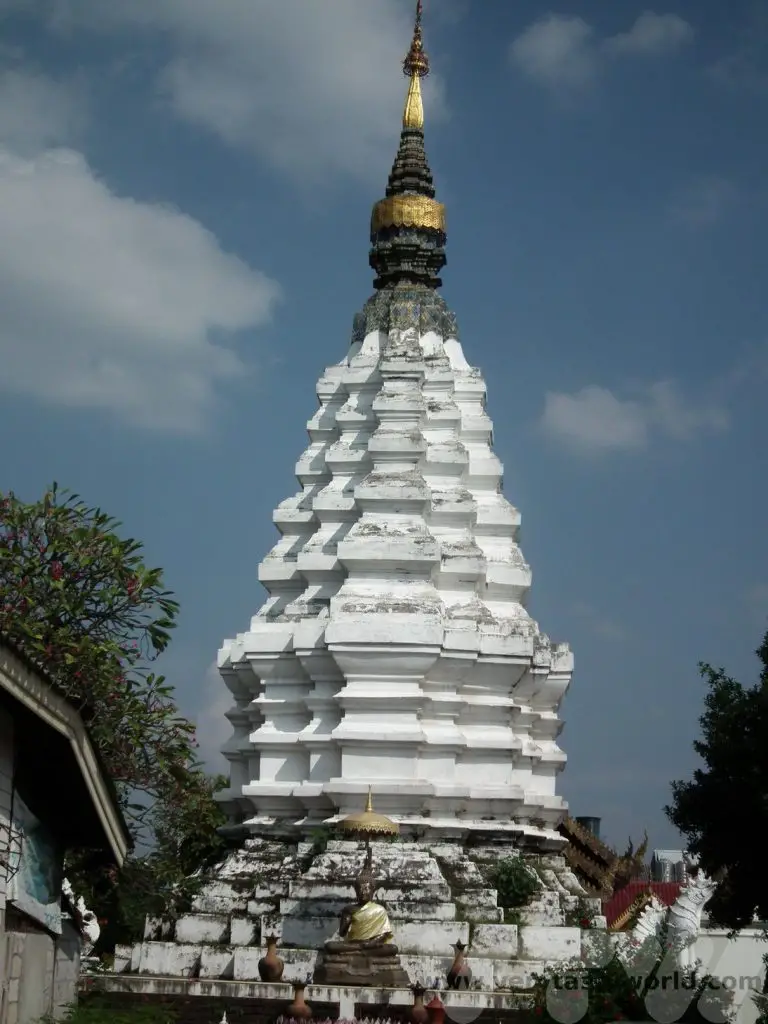
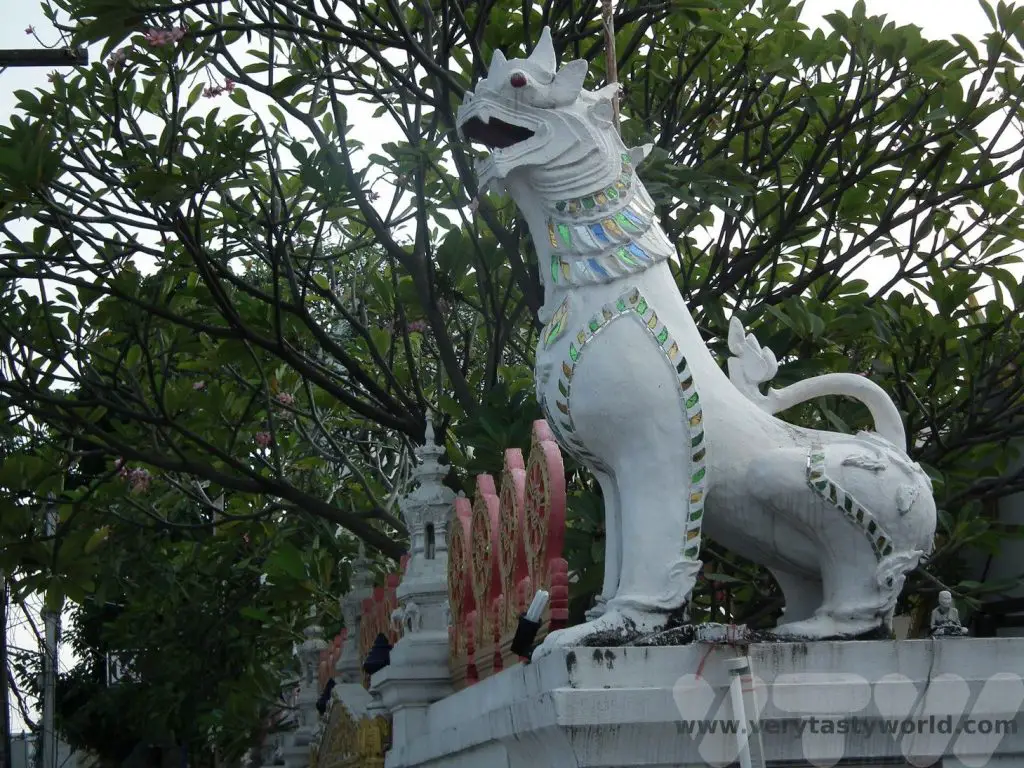
Wat Chiang Man
Wat Chiang Man is the city’s oldest temple, located by the north east corner of the walled old city. It was constructed at the behest of King Mengrai.
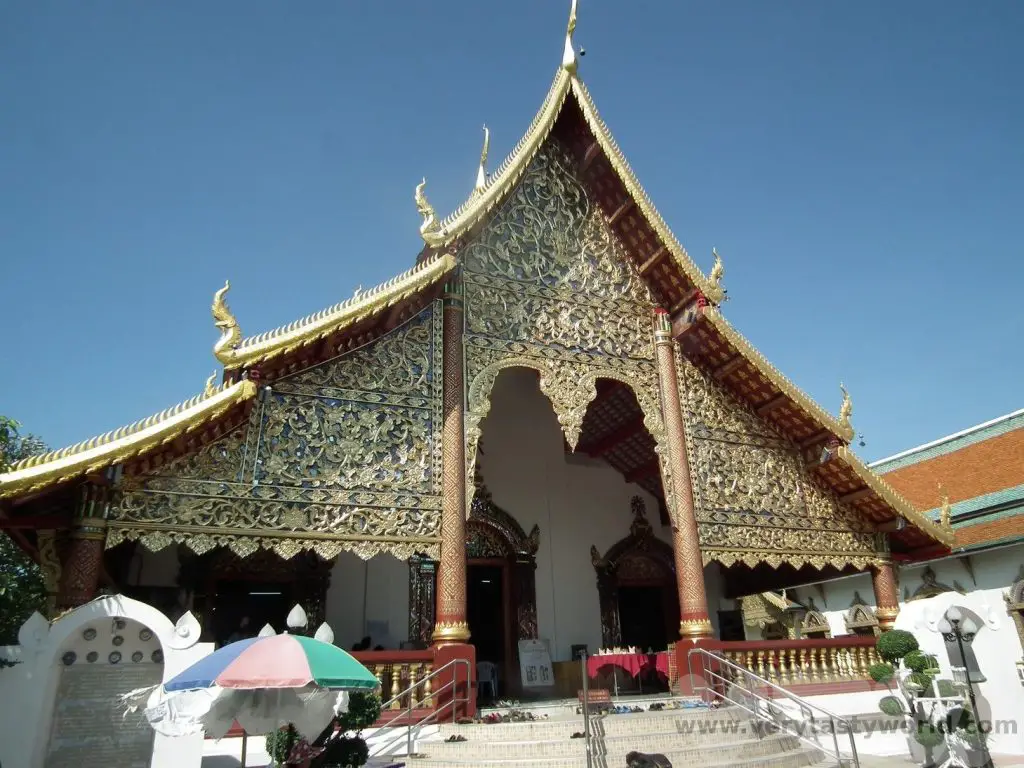
The wihan of a temple is the assembly hall and there are two at Wat Chiang Man. Both contain very old and highly revered Buddhas.
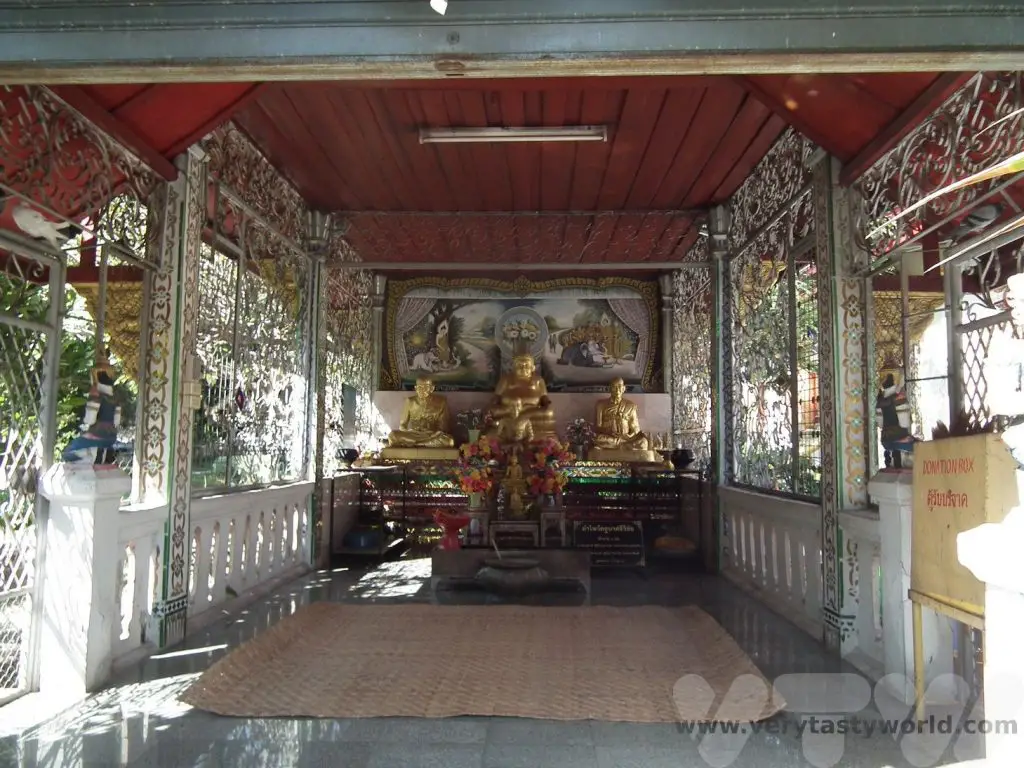
The chedi, also known as a stupa, is traditionally the oldest part of a temple. Wat Chiang Man has an elephant chedi, called Chedi Chang Lom, where fifteen stone elephants support the golden relic chamber.
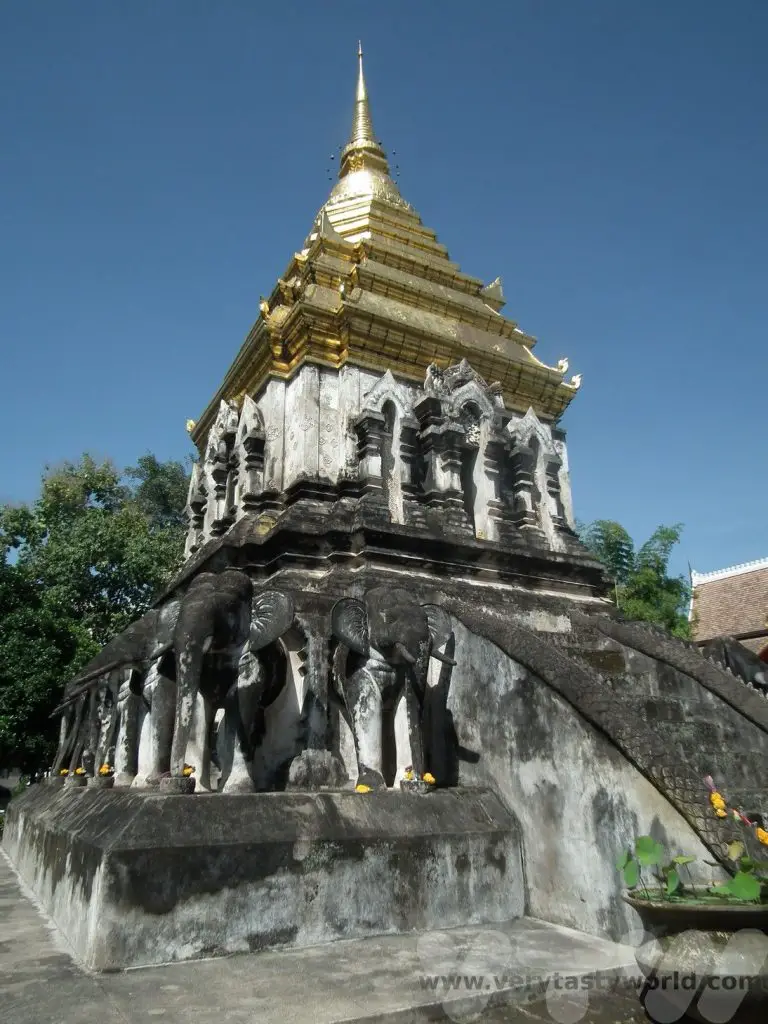
Wat Phra Singh
Another important temple, Wat Phra Singh, was constructed in 1345 by King Phayu, the fifth Mangrai king, who wanted to build a chedi for his late father’s ashes. It was enjoying a face-lift when we visited, so we didn’t see it in its full glory.

Wat Phra Singh Wihan Lai Kham was constructed to house the precious Phra Buddha Singh statue.
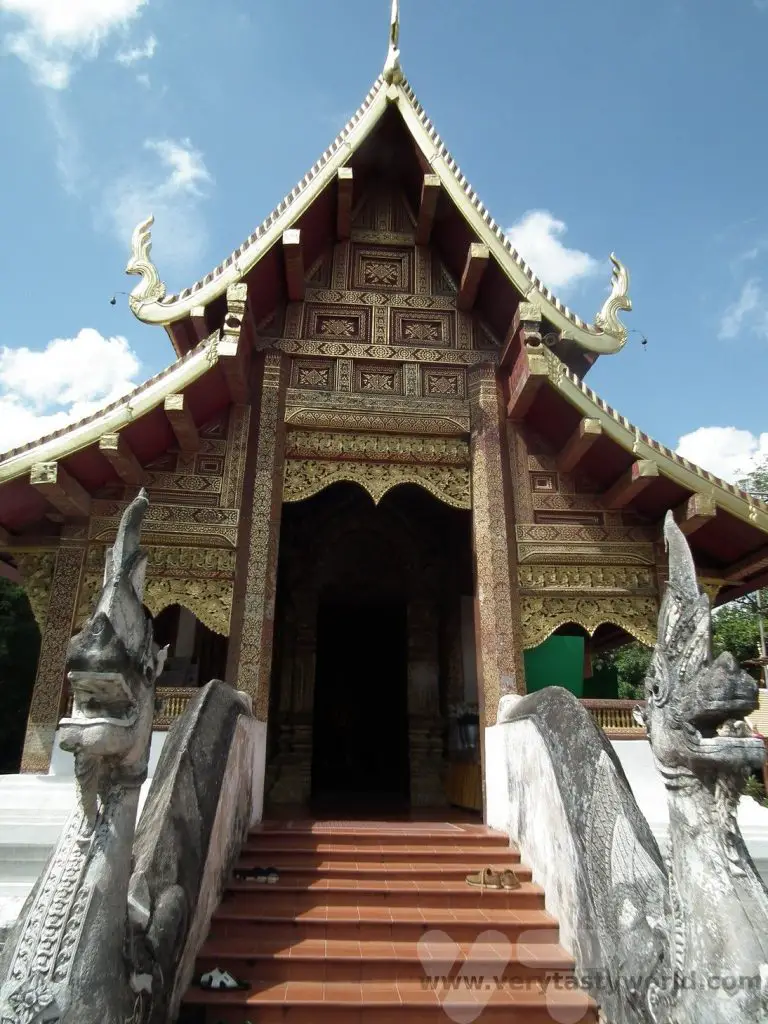
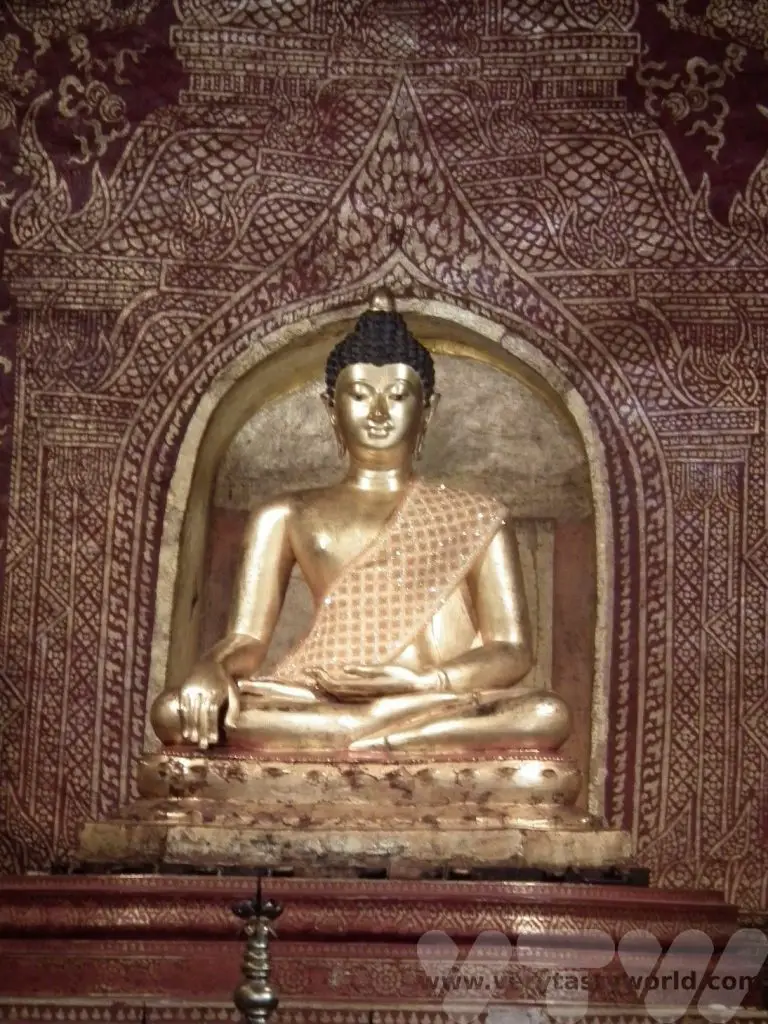
The interior also contains some fascinating murals.
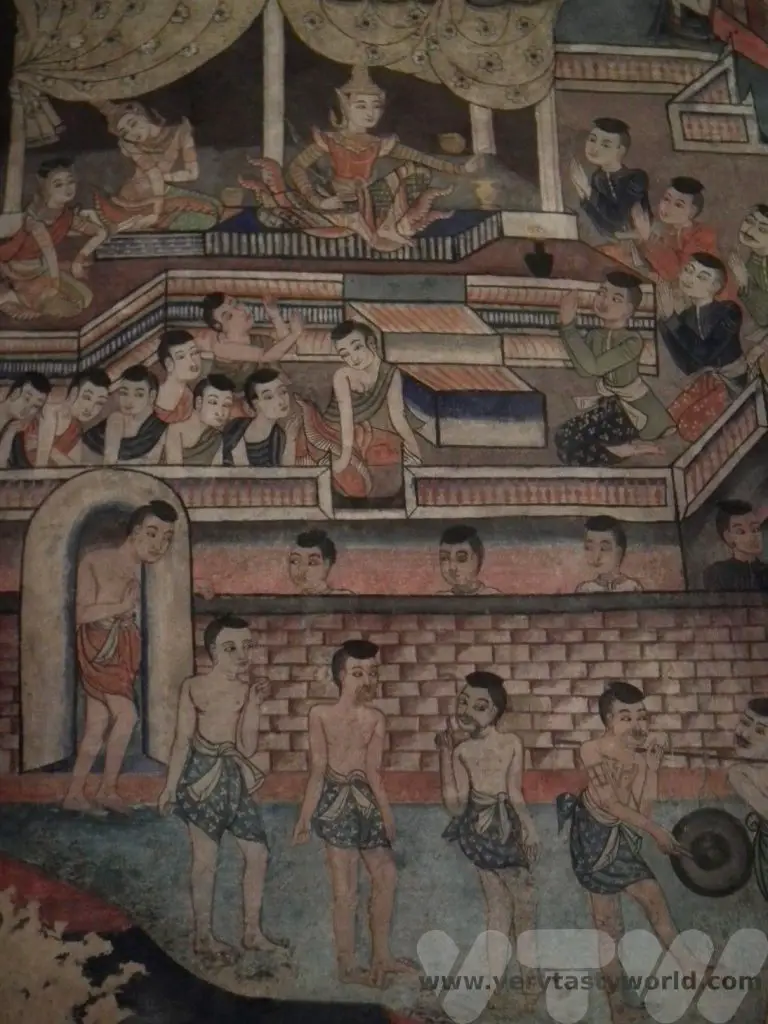
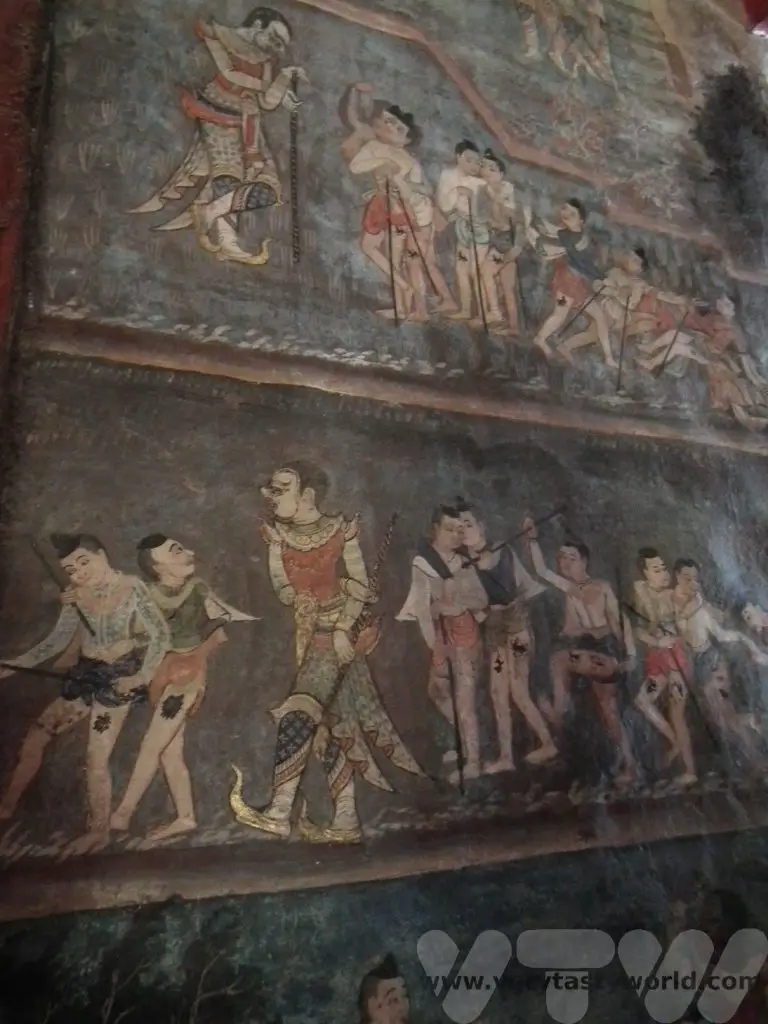
A common – and striking – characteristic of many temples in Thailand are the naga – semi-divine creatures that are a cross between a human and serpent. These are the guardians of the temple – they may look dramatic and a scary but their purpose is generally thought to be protective. It wouldn’t be appropriate to have a holy place guarded by demons.
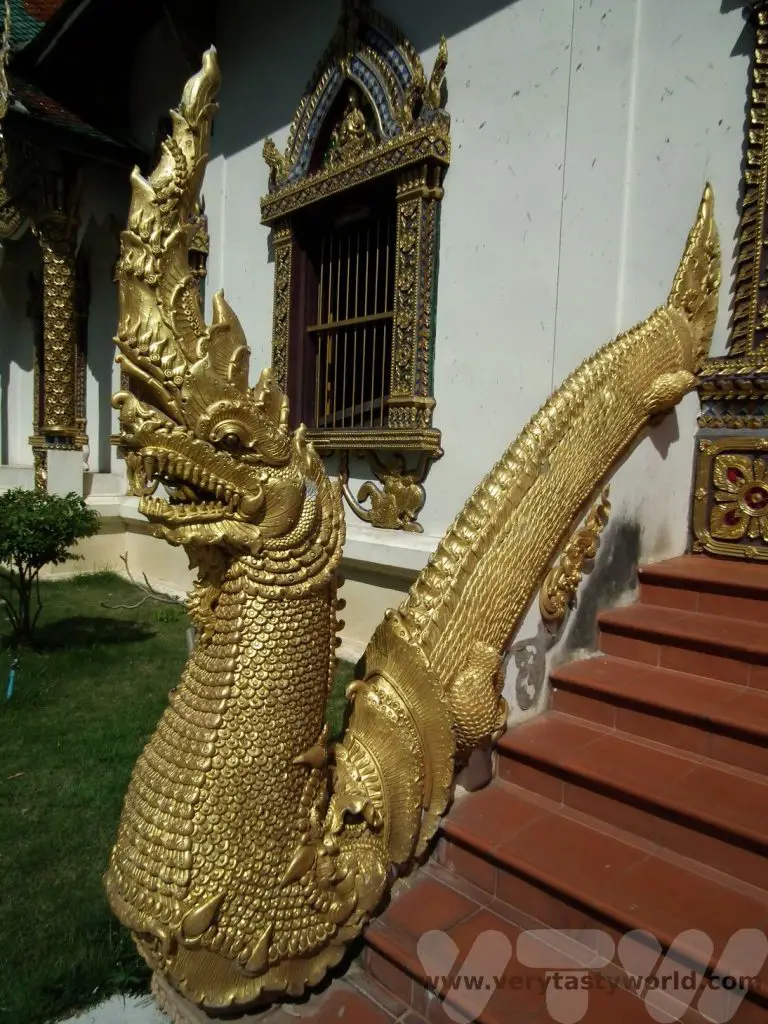
The roofs of many of the temple buildings are beautiful- highly decorative and elaborate.
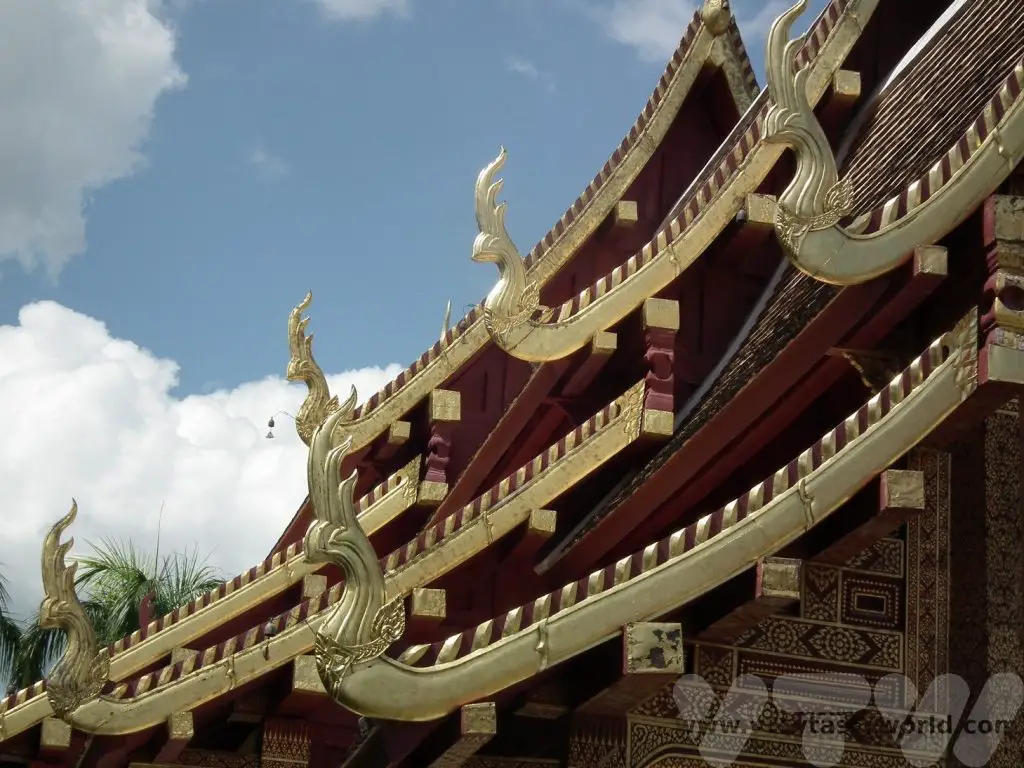
Chiang Mai Cultural Centre
Slightly out of town on the Prapoklao Road is the Chiang Mai Arts and Cultural Centre which used to be the royal hall. It runs evenings showcasing northern Thai food and culture. You can join in to enjoy a delicious meal followed by entertainment such as dancing, martial arts and traditional games.
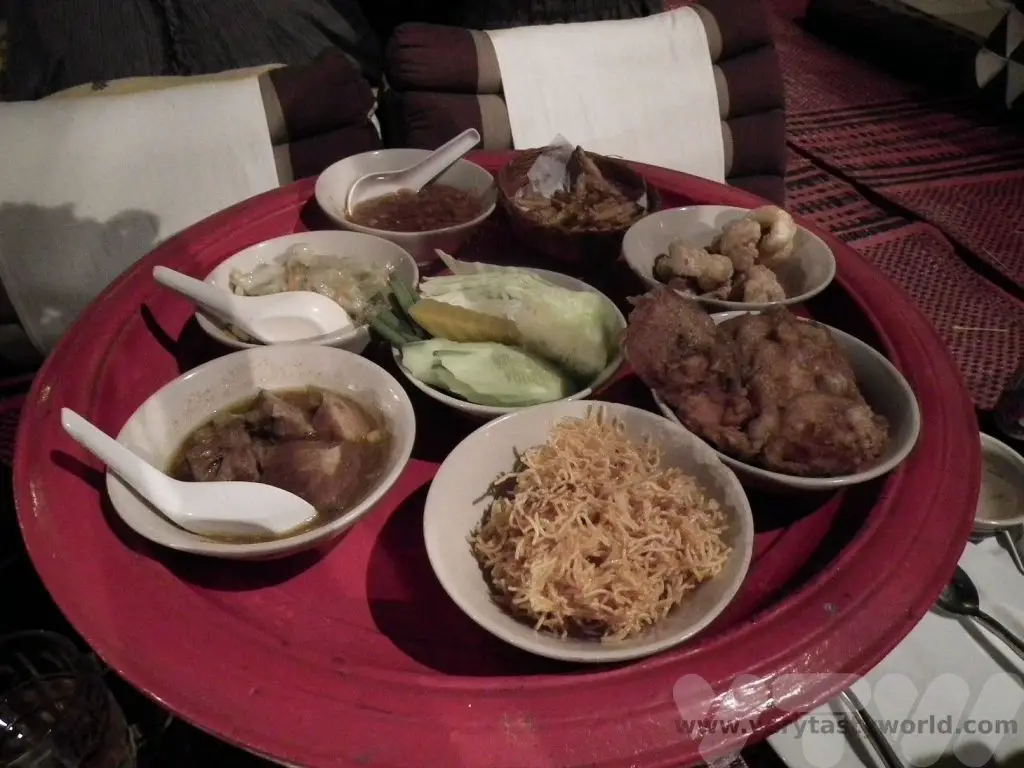
Then the entertainment started with some dancing and martial arts…
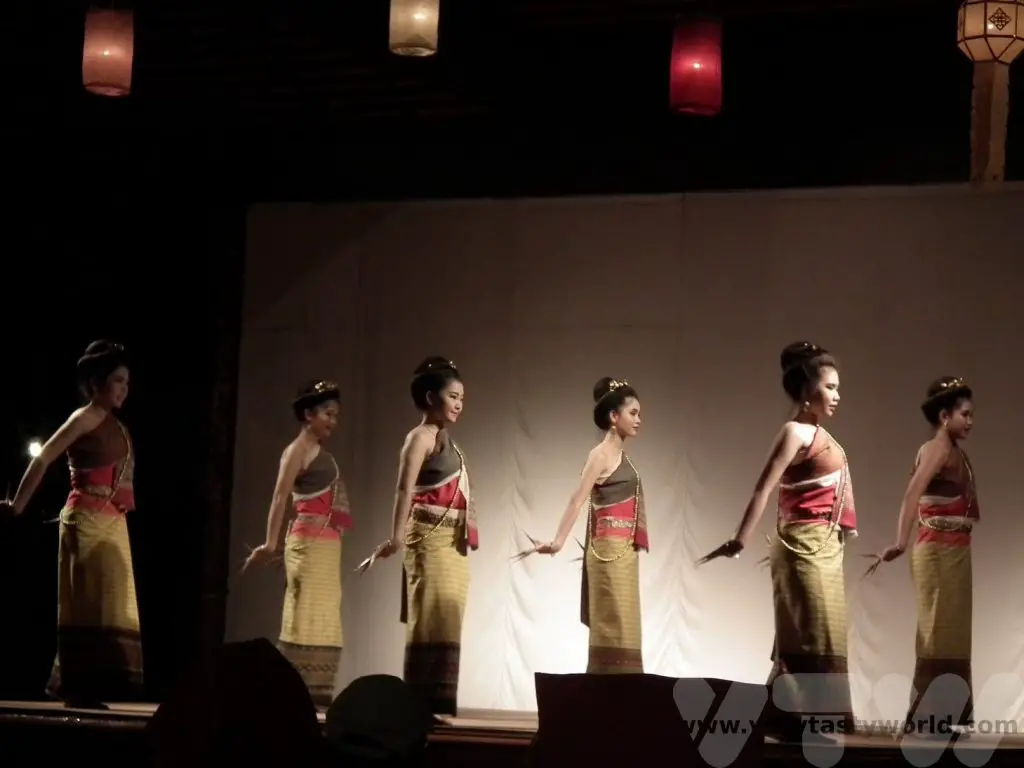
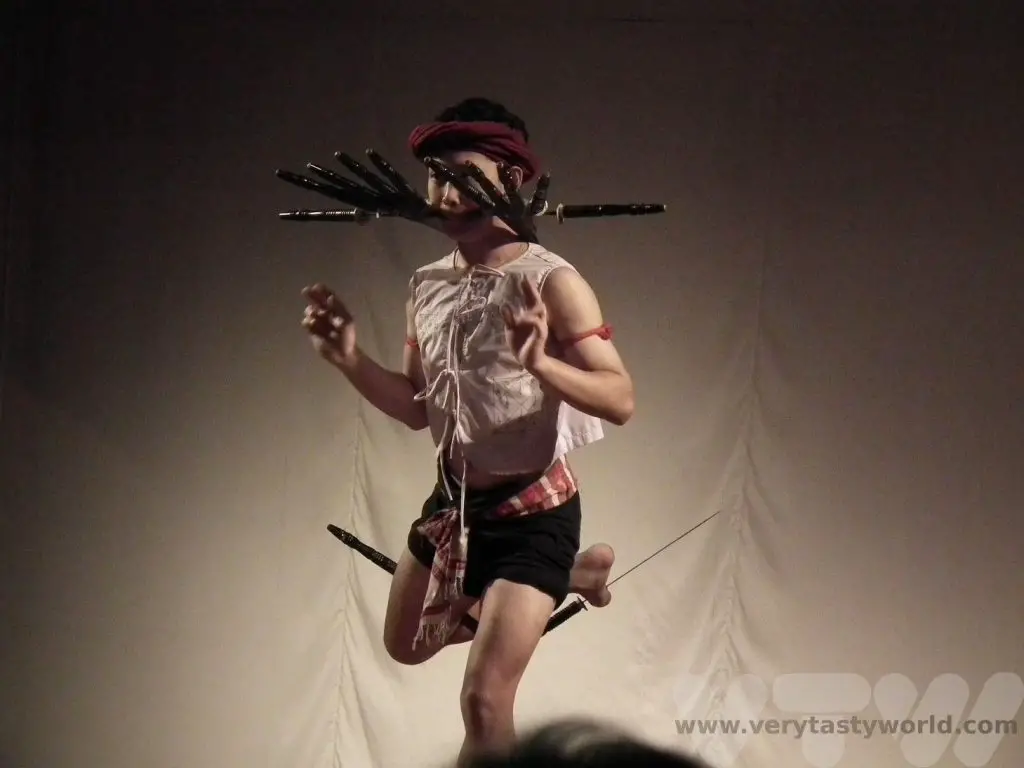
…before we moved outside to see some fire-based martial arts and a cute lion dance.
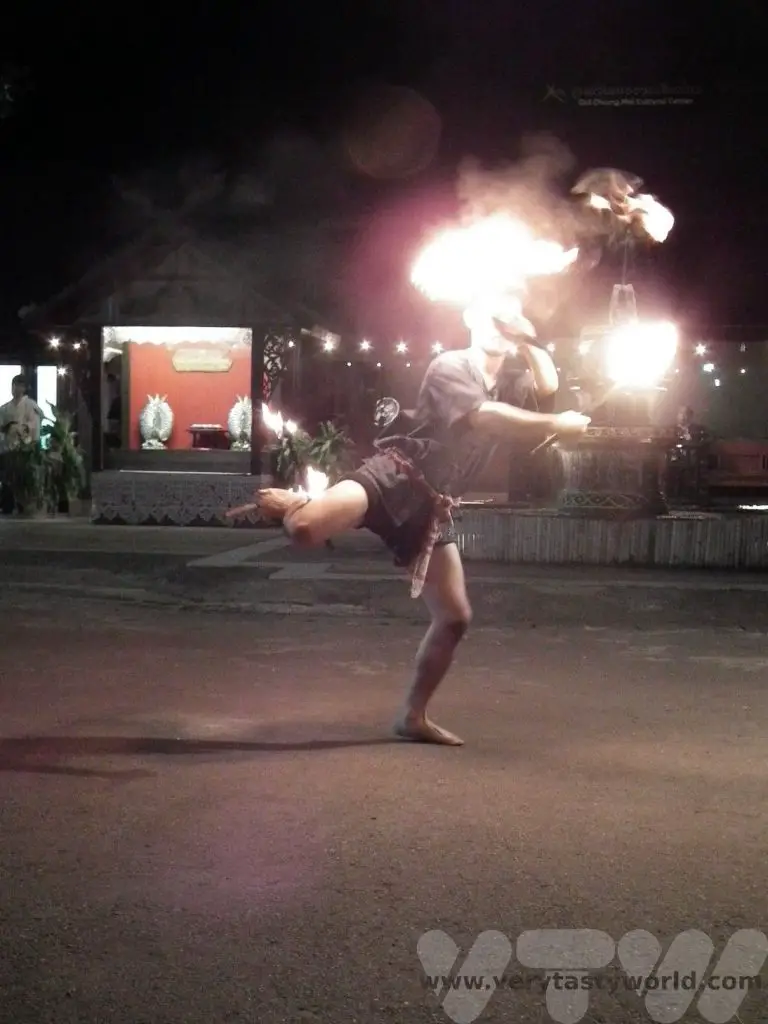
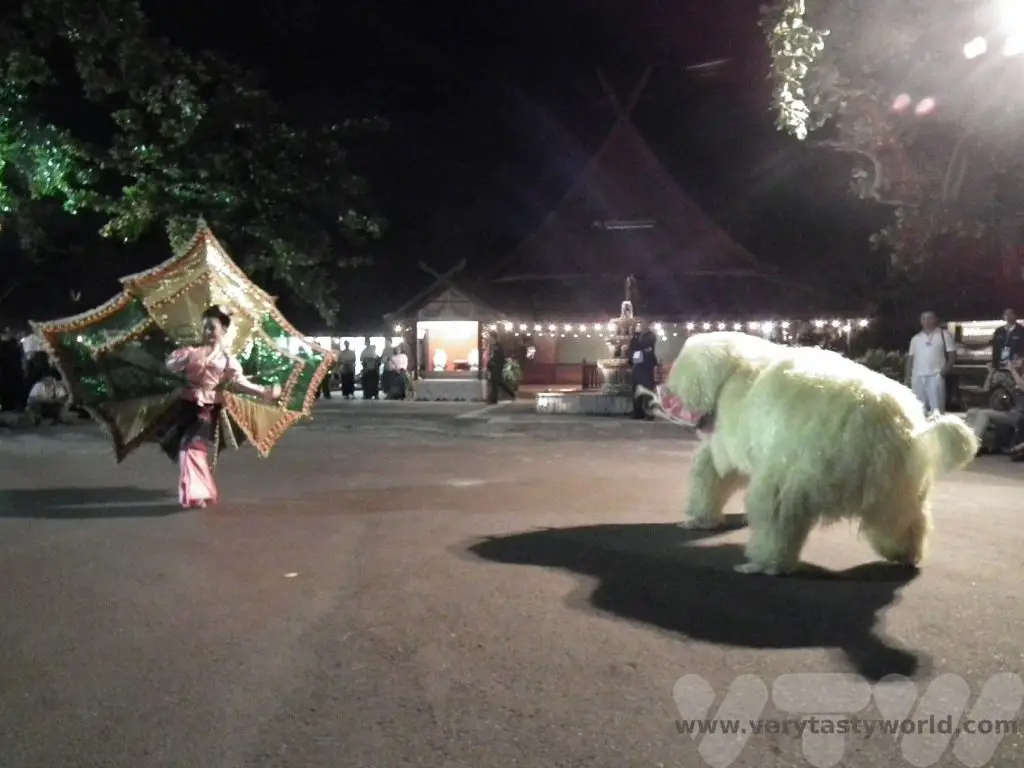
It is a bit touristy but was a fun evening out and an introduction to the culture of the region.
Temples Further Afield
If you don’t get templed out in Chiang Mai itself, there are many more wats to visit in the area surrounding the city. If you don’t have a pre-arranged tour, it’s possible to reach them by taxi. These can easily be arranged with local hotels and hostels. It’s worth agreeing a price first and consider asking for a round trip where the taxi driver will wait for you to explore the temple before taking you back. Both Wat Inthrawat and Wiang Kum Kam, located a few kilometres from the city centre, were definitely worth exploring.
Wat Inthrawat
Wat Inthrawat is one of the best preserved wooden temples in the region. It’s located in the Hang Dong district around 10 km south of Chiang Mai, in the village of Ban Ton Kwen. Small, but perfectly formed, this temple is still in its original state.
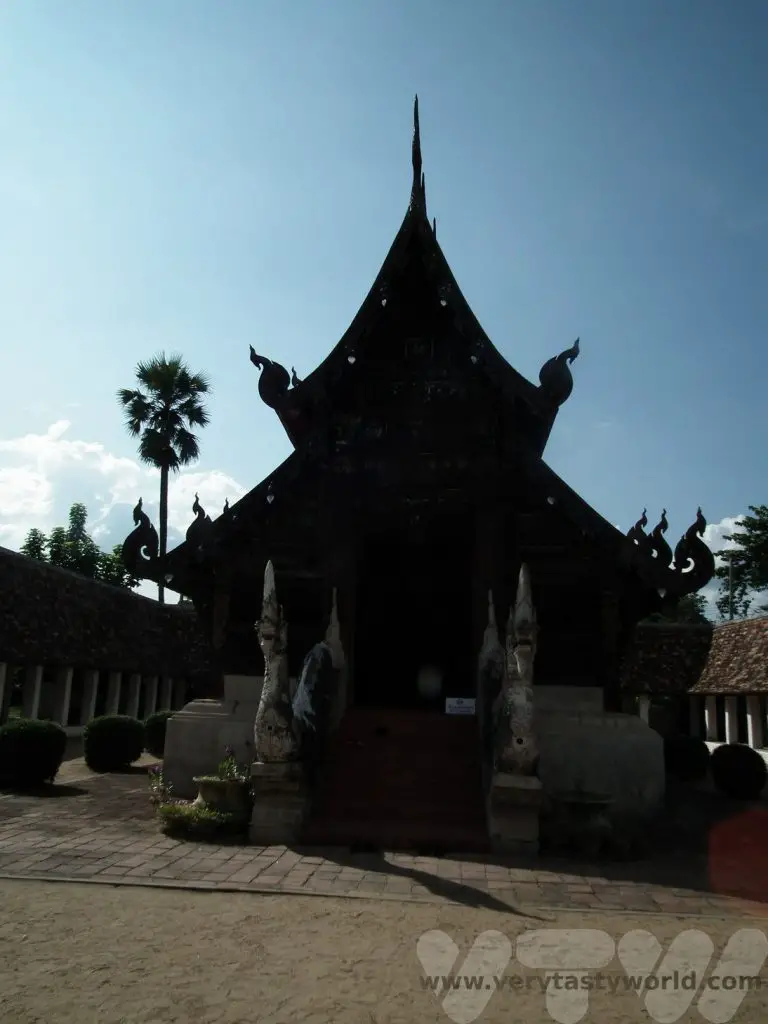
It has a wihan built in the Lanna style with typical nagas at the entrance steps.
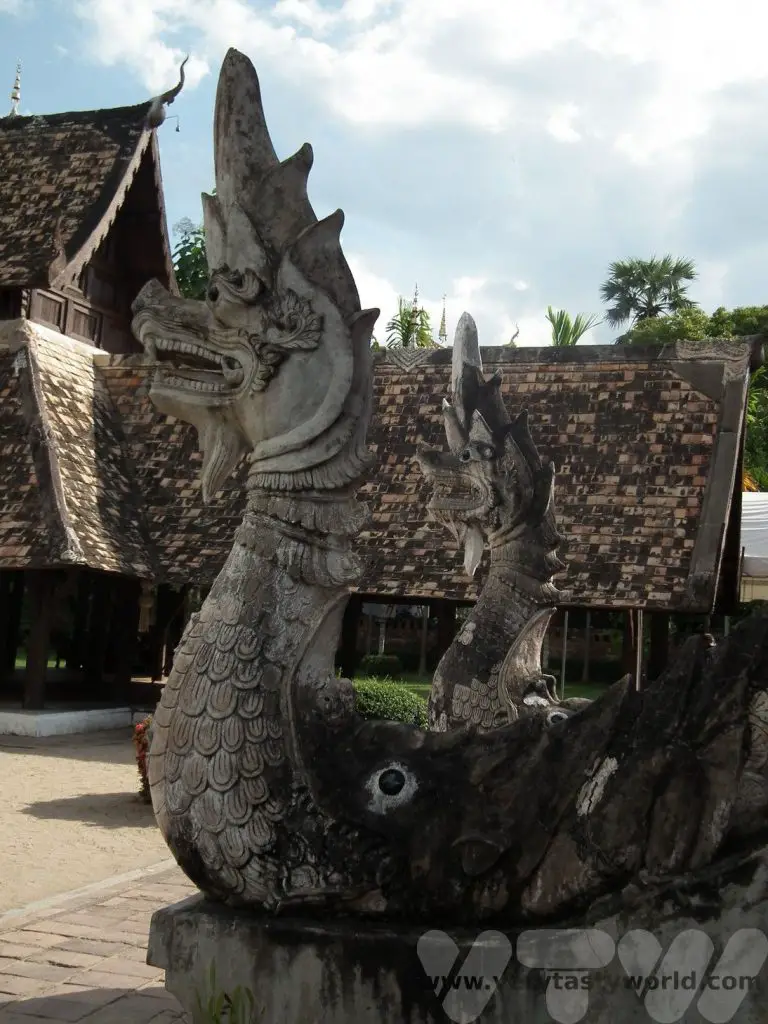
The roof has three tiers and also features some impressive and very decorative features at the tips of each tier. The quality of the craftsmanship is remarkable.
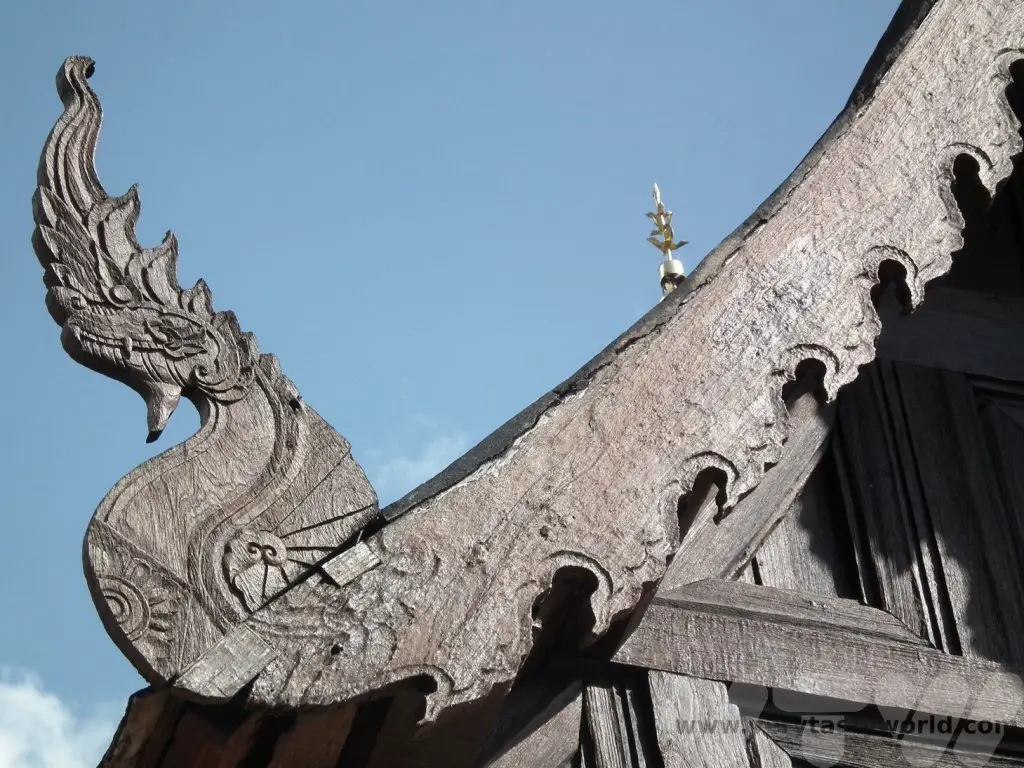
Wiang Kum Kam
Around 5km southeast of Chiang Mai lies the archaeological site of Wiang Kum Kam. This former city was built by King Magram. It was originally the capital of the Lanna in the 13th century but Magram decided to relocate to Chiang Mai, situated at an altitude 12m higher, due to serious flooding at this site. Although the area remained inhabited for several centuries it was finally abandoned after a massive flood which deposited a huge amount of sediment over the buildings. Much of the city has now been excavated and it’s possible to explore the ruins. It’s an extensive area and you can ride around the site in a horse drawn cart or tram. It has a visitor centre, located on Rte 3029, which has loads of information about the site and that’s also the place where you can pick up transportation. It’s possible to visit several temple complexes.
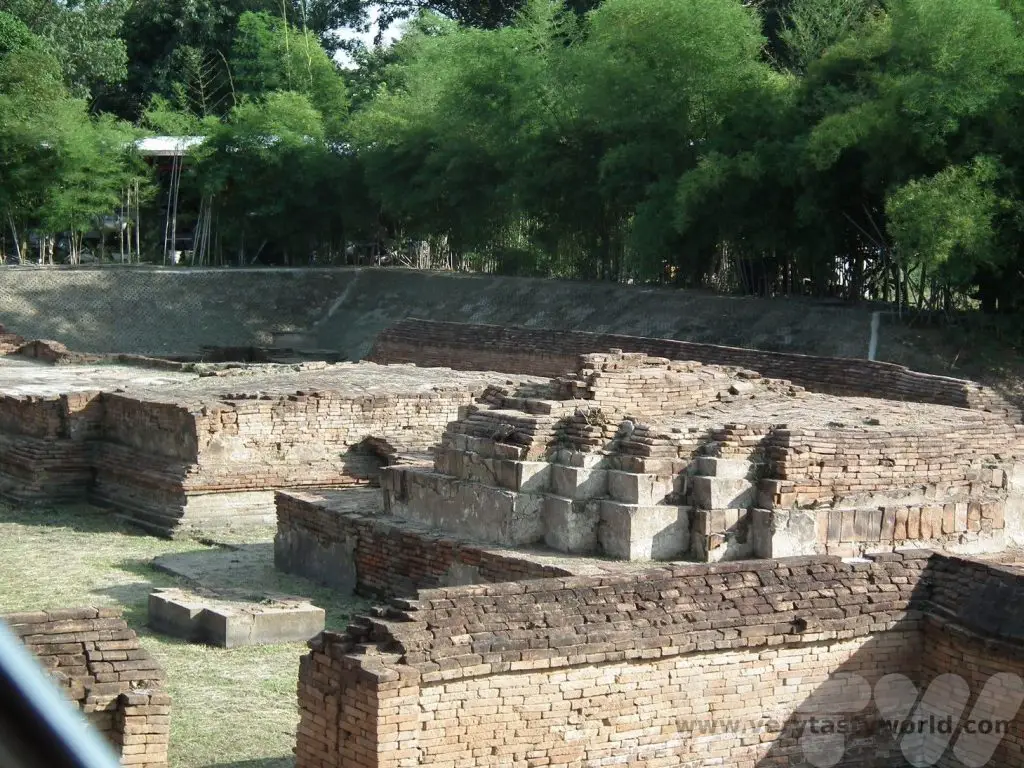
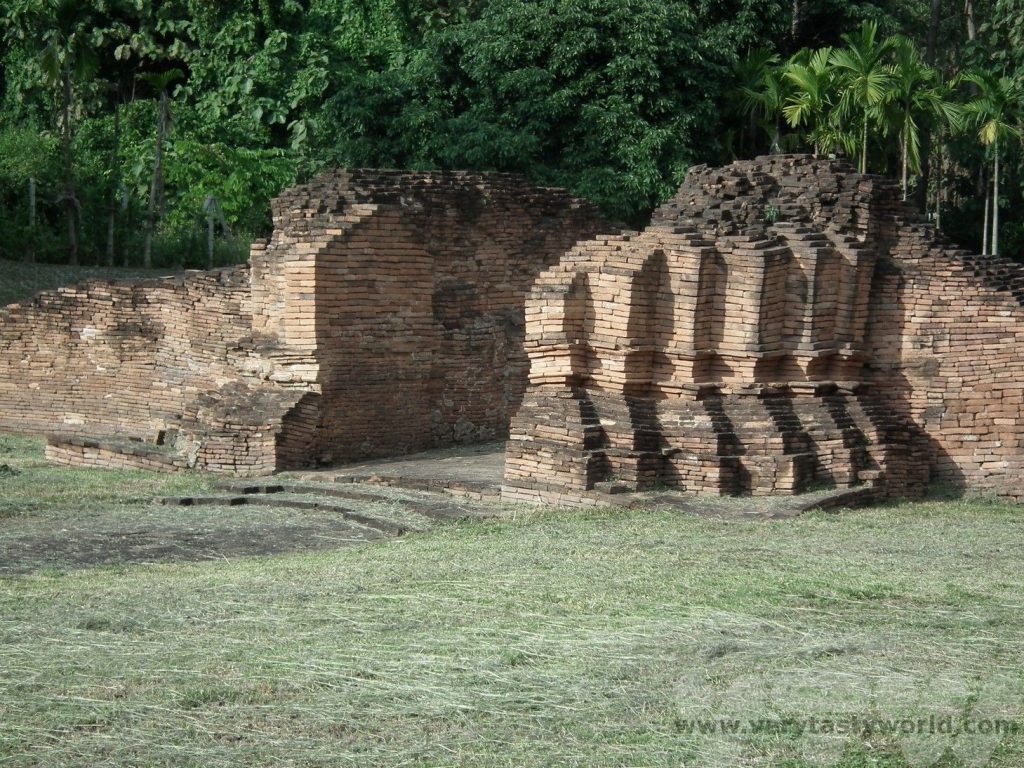
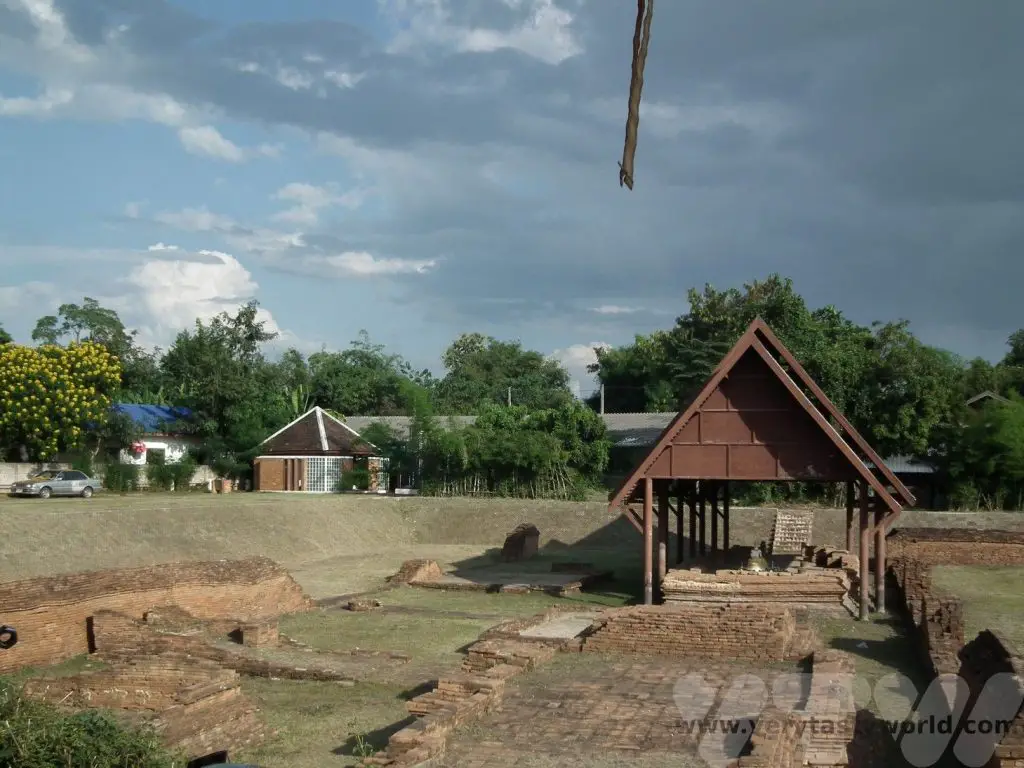
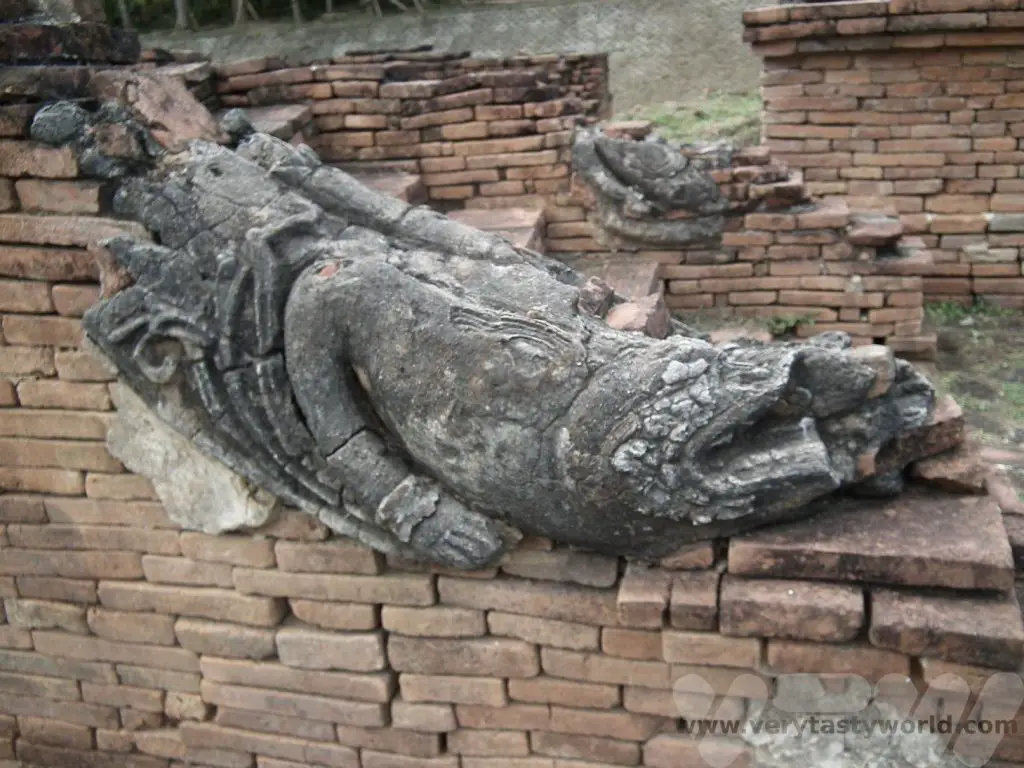
Wat Chedi Liam is the highlight of the complex. At over 30m tall, and taking the form of a pyramid structure, it has five main tiers. Each of these contain twelve Buddhas, three on each side, located inside their own alcove. It remained relatively unaffected by the floods over the centuries and remains a working temple.
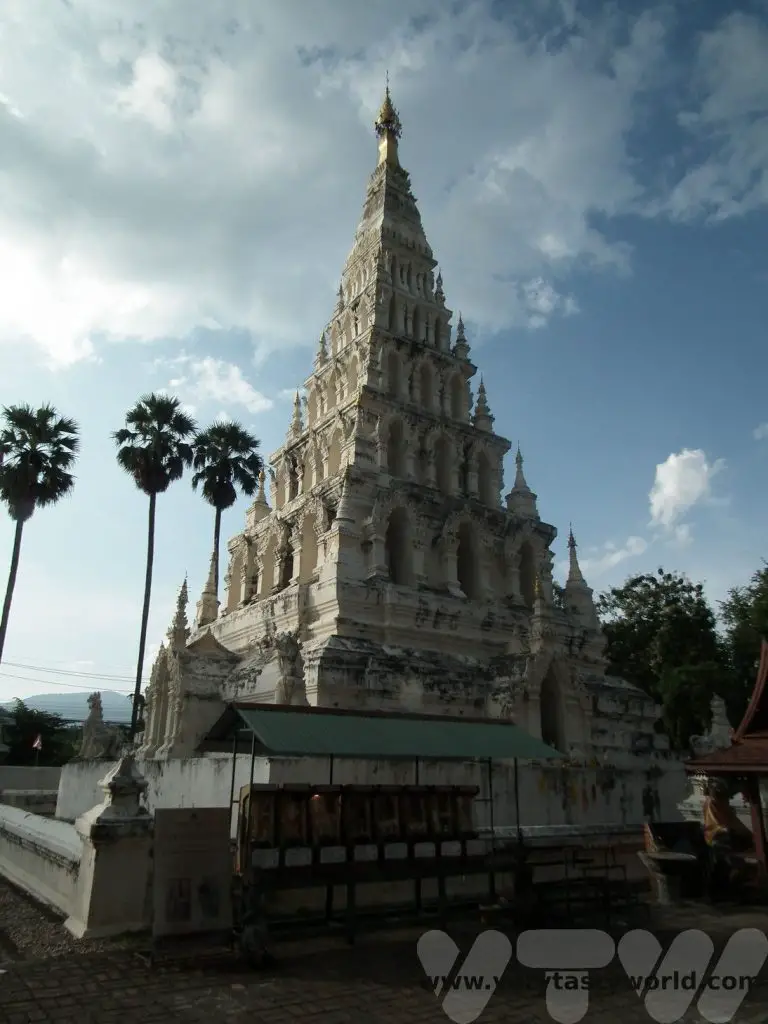
Activities in Chiang Mai’s Wider Area
Although it’s possible to spend quite some time exploring the city there are also loads of trips to take in the surrounding area.
This orchid farm was a pretty distraction for short while on the way to Mae Sa.
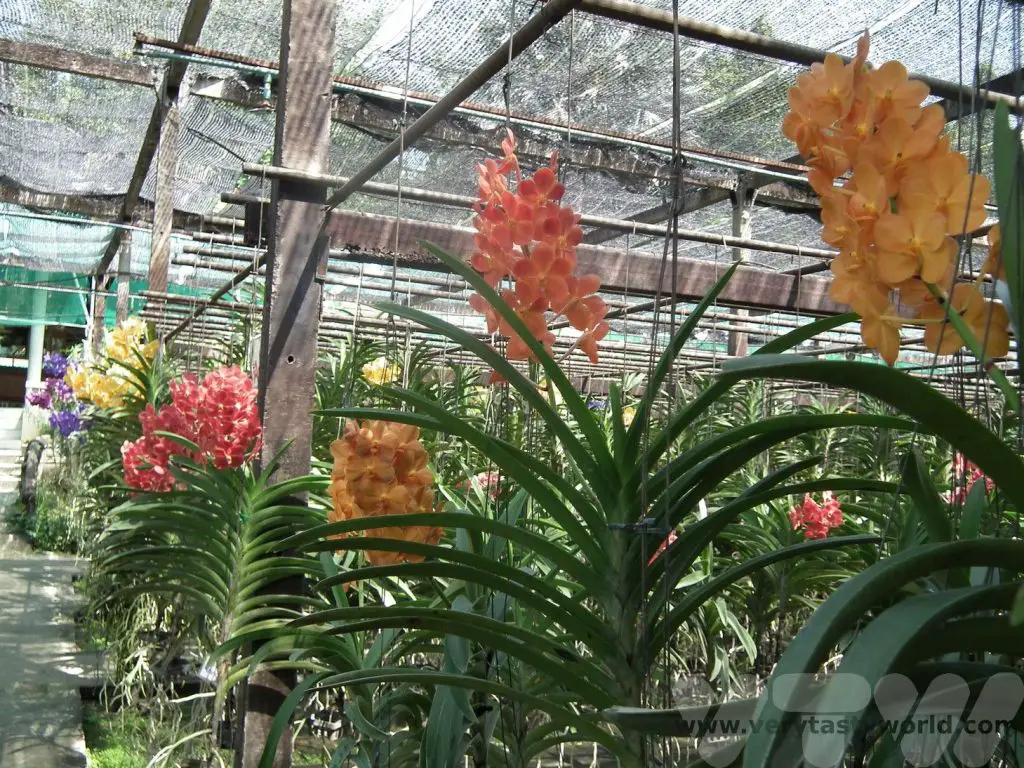
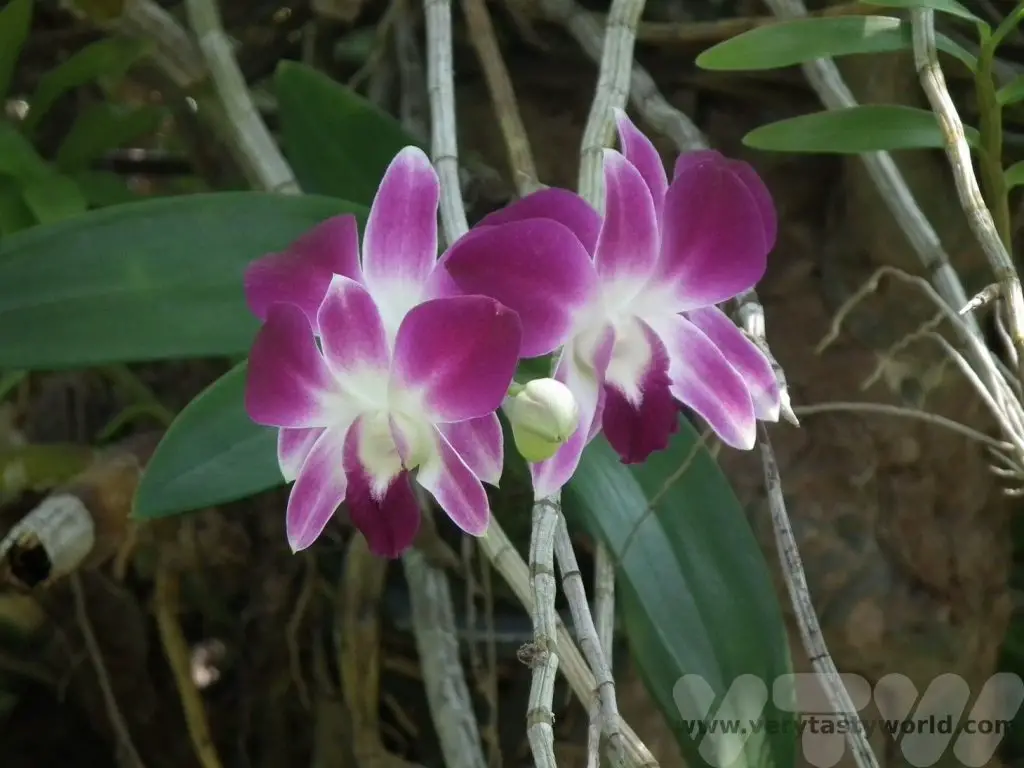
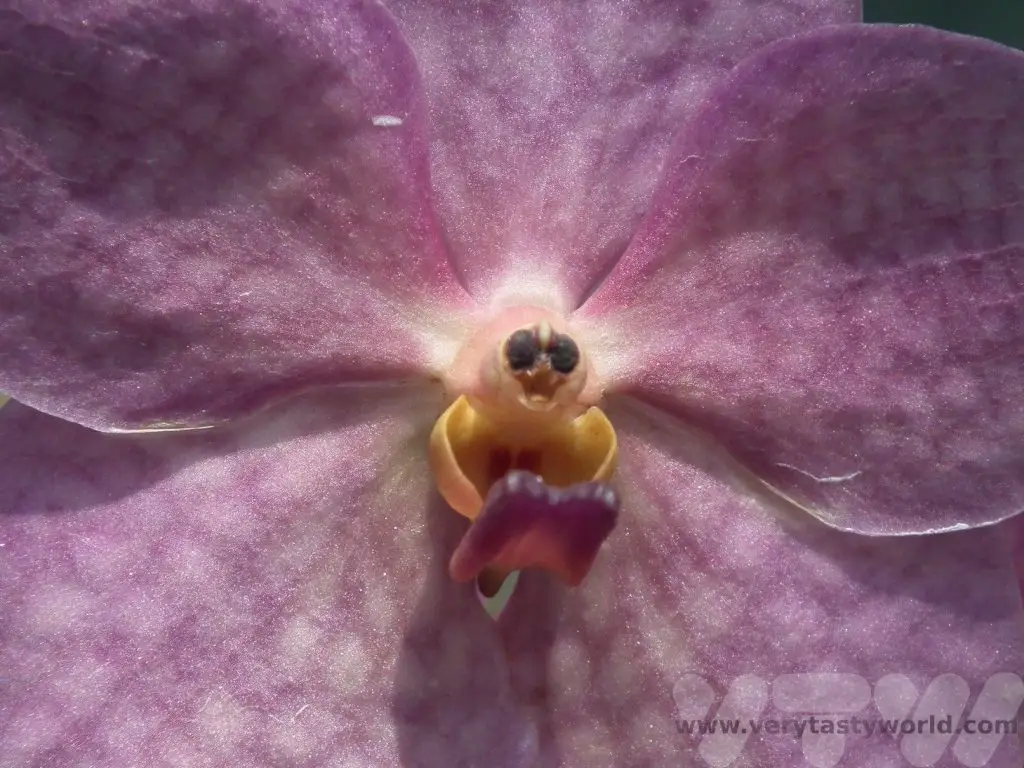
Mae Sa Waterfalls
Located in the Doi Suthep-Pui National Park, around 30km from Chiang Mai, Mae Sa offers a series of ten waterfalls spaced a few hundred metres apart. You can follow the pathway alongside the falls to enjoy a pleasant walk and swimming in the pools is allowed, if you desire. It’s not a challenging hike at all – just a pleasant stroll up a gentle incline. It gets quite crowded at the start of the trail but as you hike towards the upper falls the crowds melt away and you can enjoy the beauty of the surroundings. There are picnic spots along the way, so it’s possible to pack bathing suits and some tasty food to make a day trip if you fancy having a more relaxing time.
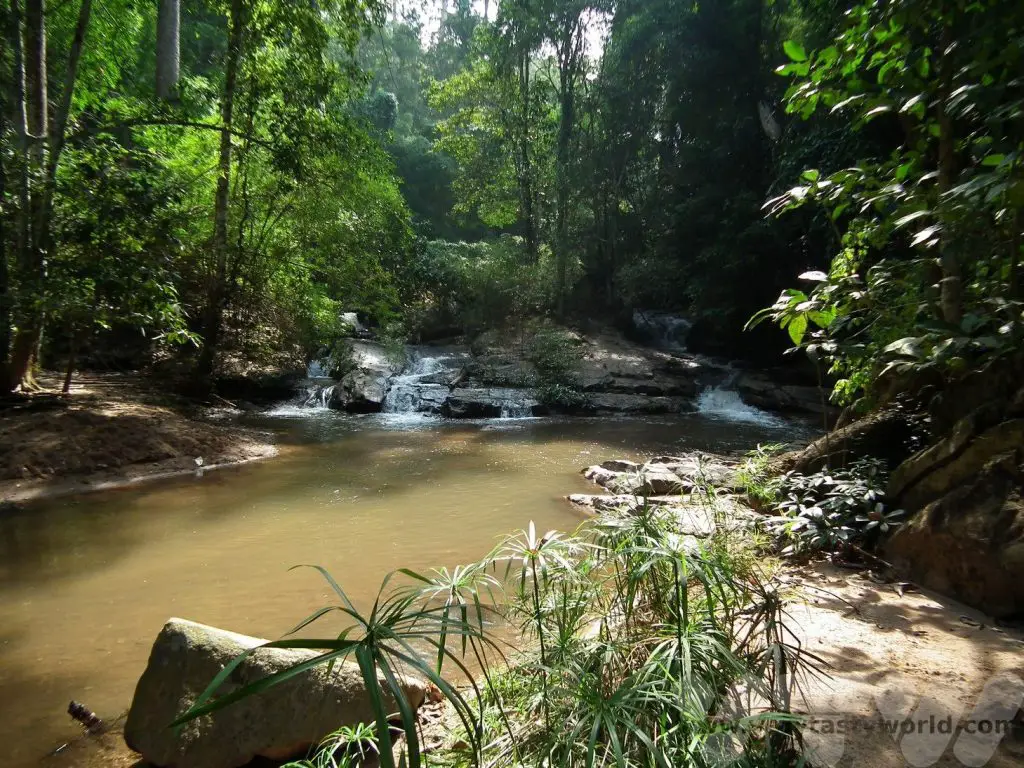
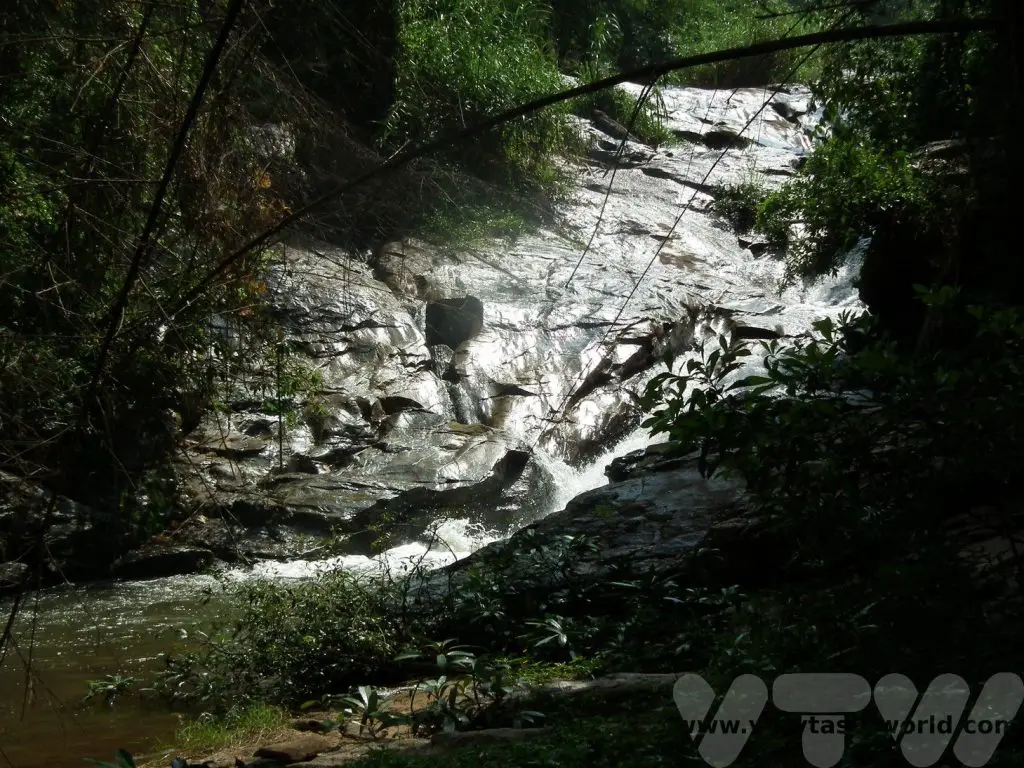
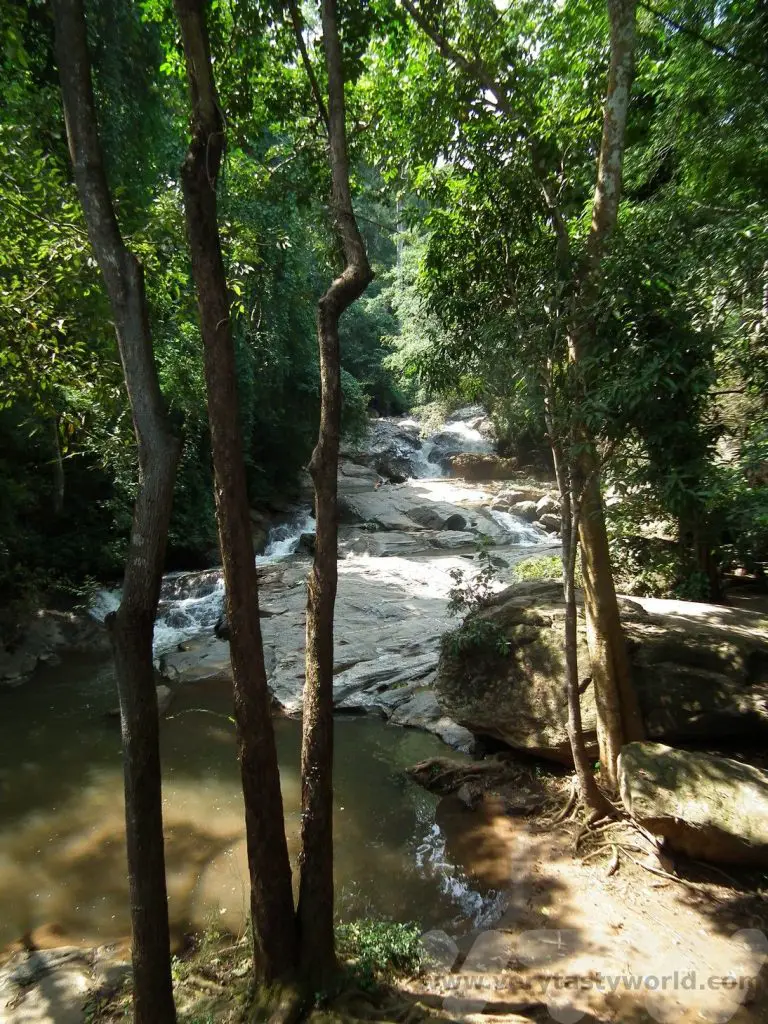
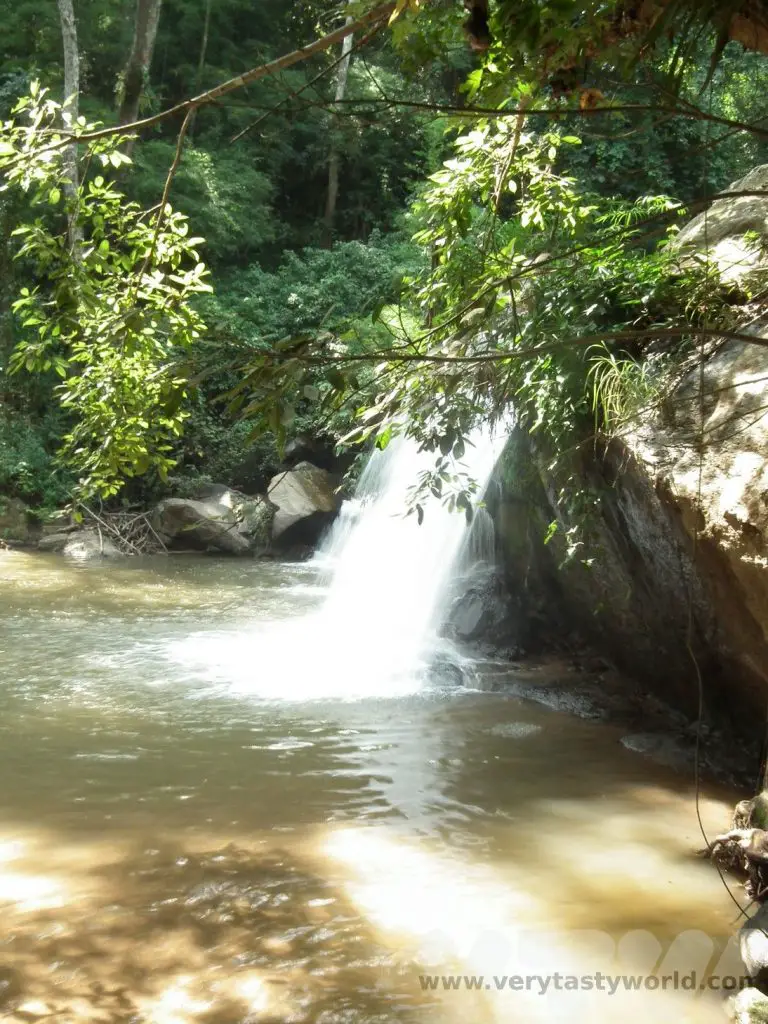
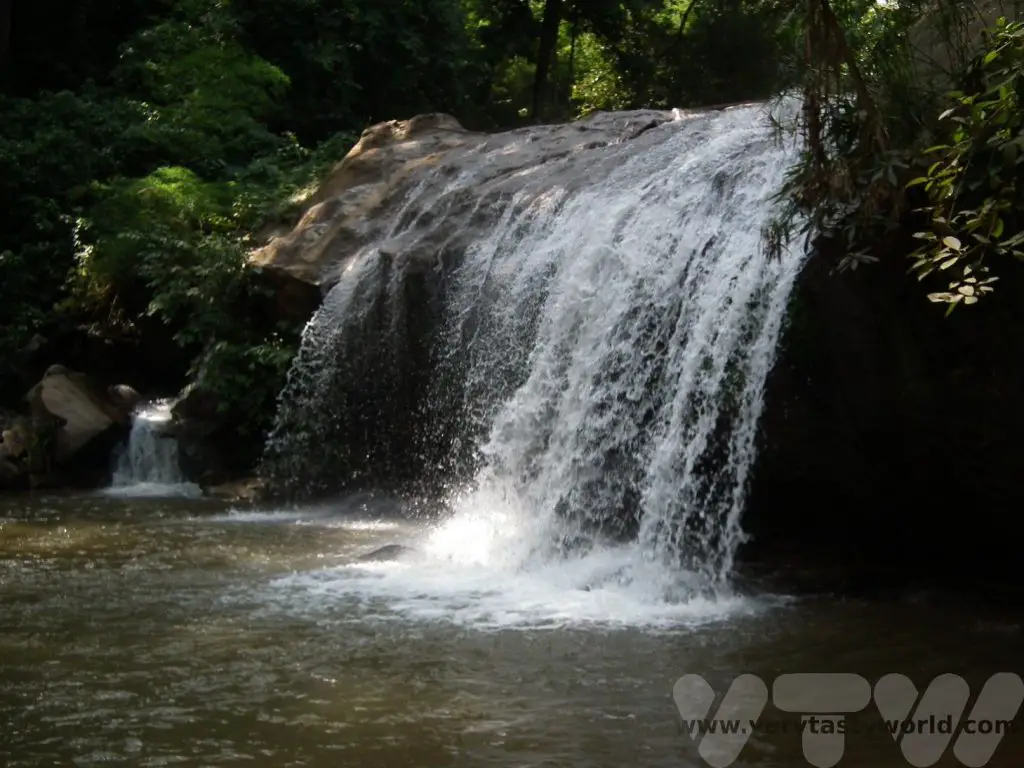
Elephant Sanctuary Visit
Visiting an elephant sanctuary is a very popular activity. There are loads in the area but do check which are responsible and ethical and make sure that they do not exploit the elephants. Many sanctuaries no longer allow elephant rides but focus on caring for and interacting with these remarkable creatures.
We visited a sanctuary a couple of hours away from Chiang Mai which is home to several elephants, all of whom have been rescued from the logging industry or from giving rides to tourists on iron chairs, a practice that really damages the elephants’ backs. When the sanctuary learns about elephants that are being mistreated they locate the creature and offer as much money as they can afford to convince the owners/abusers to sell their elephants. Each elephant has its own mahout (handler) who is responsible for its welfare. Set in 135 acres, the majority of the land is dedicated to growing food for the elephants. Tourists help provide much needed income to support the work of the sanctuary. Elephant riding (even bareback) is no longer allowed. We were able to meet the elephants and hand feed them – although some just helped themselves.
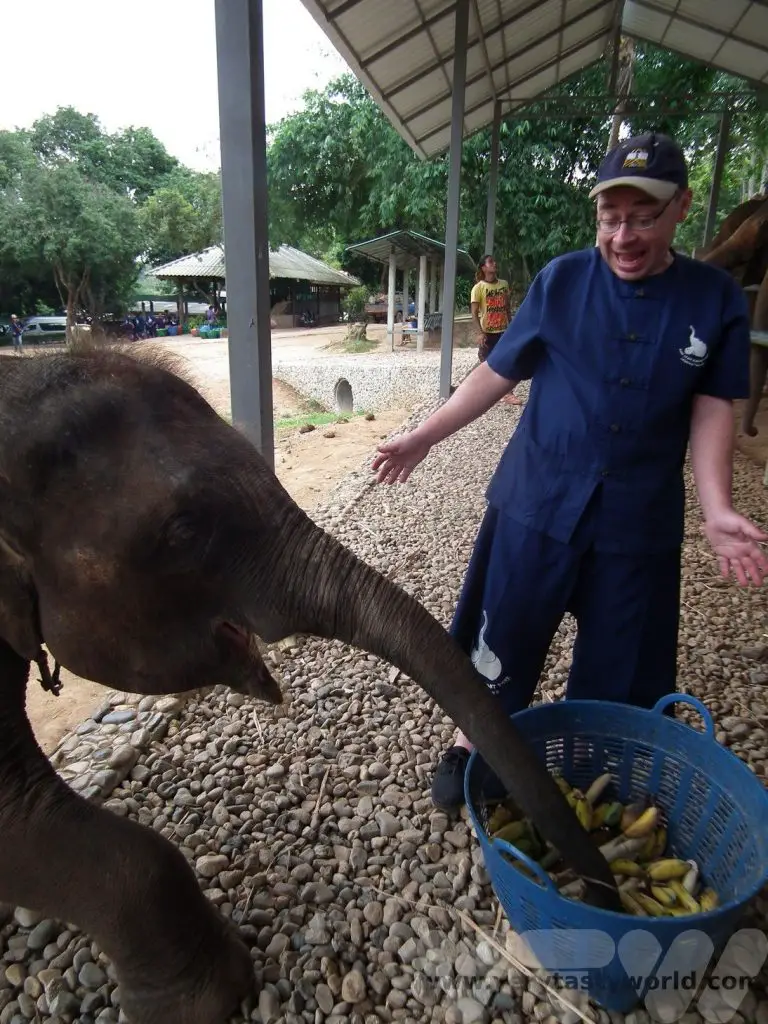
Elephants are highly intelligent creatures. Their brains weigh about 5kg. They are also emotionally intelligent; they recognise and interact with other elephants and have likes and dislikes just as we do. In fact, elephants that really hate each other need to be kept separated at the sanctuary. They also make judgements about the humans they interact with and, if they decide they don’t like someone, will refuse to co-operate with that person. Also – those cliches about elephants are true. They really have terrific memories. Thai people believe that you can judge an elephant’s character by the shape and quantity of its tail hair. Indeed, tail hairs are considered a sign of good fortune (and are sometimes kept as a lucky charm).
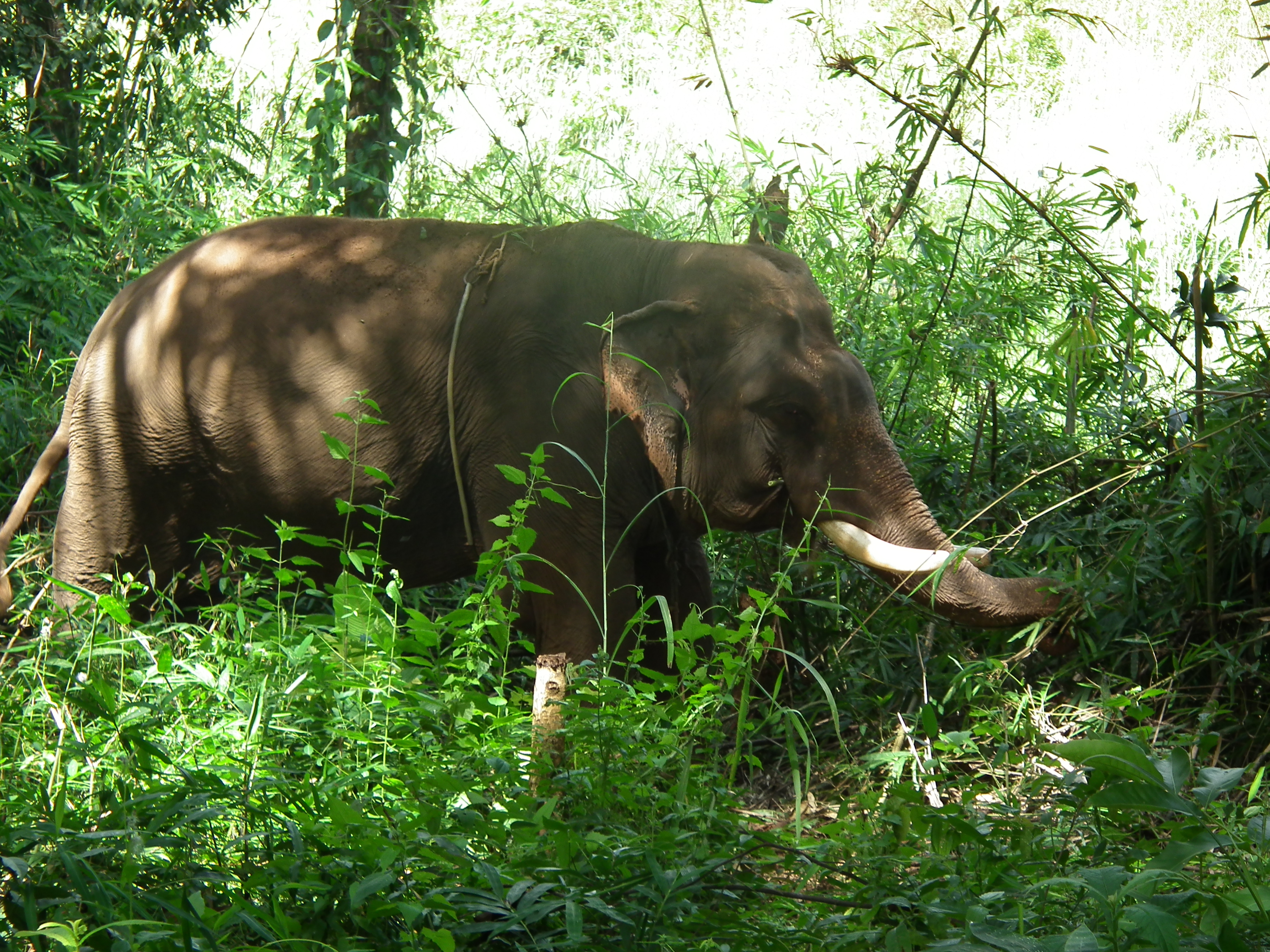
We went for a walk with an elephant called Tom Parr, a large male with long tusks. Tom Parr was very calm and co-operative, but was apparently scared of chickens and cars. He adored going into the jungle – many elephants who have been rescued from the logging industry have been traumatised and refuse to go back into the forest; they are never forced to go where they do not wish to.
Tom Parr knew very well that we had some sugar cane on him.
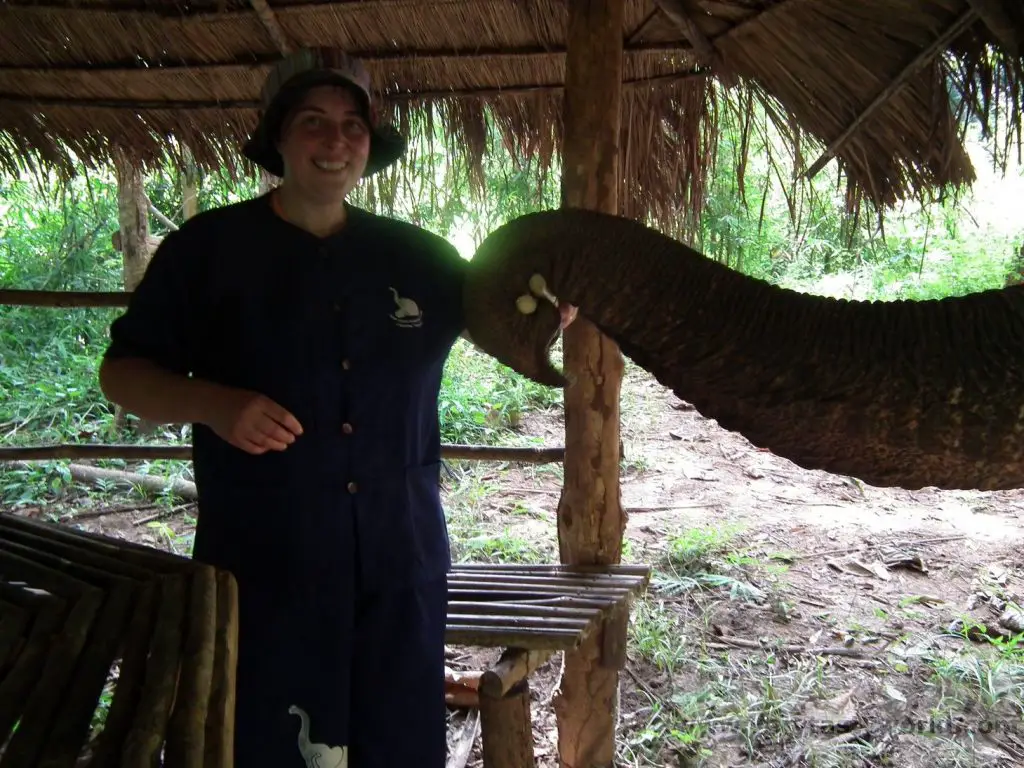
All the elephants are bathed at the sanctuary at least once a day. Tom Parr was very much looking forward to his bath and eagerly walked into the water and sat himself down. We joined him in the pool, which is fed by a local river, to give him a well-deserved wash. We showered him with water and scrubbed his skin and tusks. He was so happy. If he had been a cat, he would have been purring.
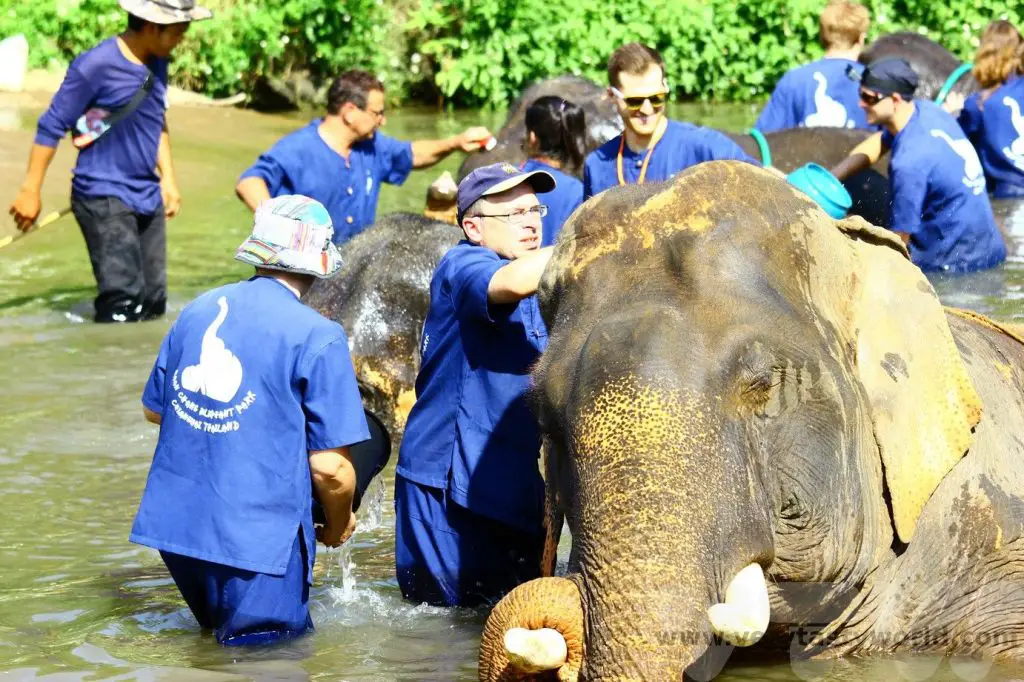
Throughout the experience we had been wondering whether we would need to ‘muck out’ the elephants at any time, something we had been quite prepared to do. However, the sanctuary had made arrangements such that the tourists’ exposure to poo was minimised. In fact, they even had a pooper-scooper chap on hand at the pond, ready to scoop any errant dung that the elephants generated into a bag and prevent the tourists getting too filthy. The sanctuary offers showers so you can wash down afterwards and change into your own clothes. The dung is often used to make paper.
A Chiang Mai Tour – Street Food and Markets
Back in the city, you’ll find that there are a number of bustling markets to explore, notably the night market which is a short walk away from the old city. On some nights of the week certain streets are closed to traffic and stalls pop up. These are really popular so expect crowds.
Of course, markets wouldn’t be markets without food stalls and Thai street food is amazing. The markets often have plastic tables and chairs nearby – they are not necessarily associated with any particular stall – so you can order your food and then take it to any table to enjoy at leisure.
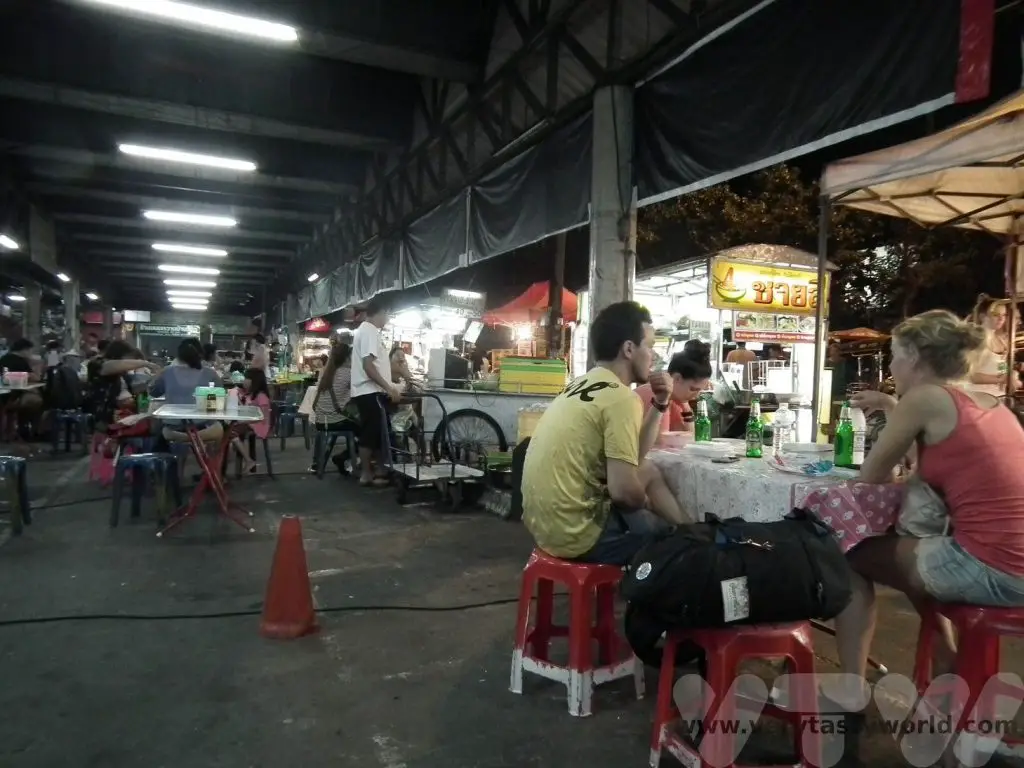
One of the best street food dishes is som tam – green papaya salad. Green papaya is shredded into a large wooden bowl and then pounded with beans, carrots and tomatoes. Sometimes little shrimp are added although you can ask for them to be excluded if you are vegetarian. Chillies, lime juice, palm sugar and fish sauce are added to the mix and pounded to release the flavours giving that characteristic Thai combination of sweet, sour, salt and spice. Be warned though, those teeny Thai chillies are hot! The dish is then adorned with crushed toasted peanuts for added crunch. On a warm, humid evening, it’s the perfect dish for a refreshing snack, preferably accompanied with a nice cold beer.
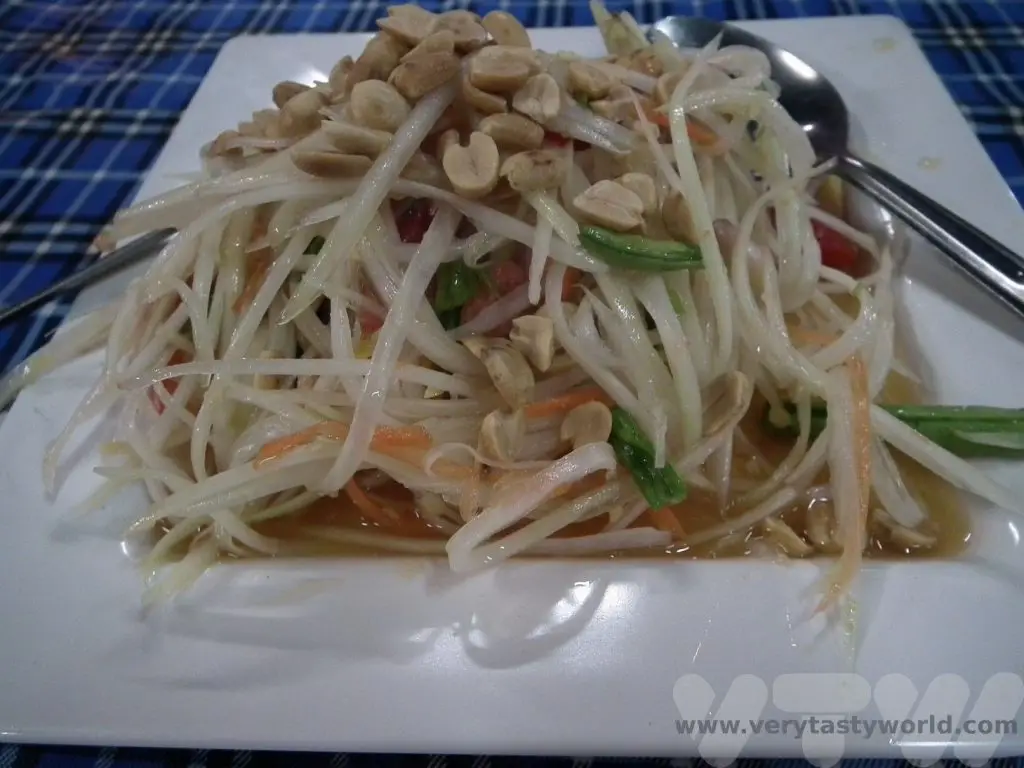
Related Posts You May Enjoy

